September 6, 2012 Thursday. My friend Donn Brous and I arrived in Florence on Wednesday afternoon, and we settled into the Hotel Hermitage, which has always been my bolt-hole in that City. I’m drawn back by the Hermitage’s Historic District location overlooking the Arno, the Vasari Corridor…
… and the Ponte Vecchio. The Hotel has a charming main salon, a cheerful,
top-floor breakfast room with great views, and a flower-laden roof terrace with even greater views, and has been managed for many years by Bridgette and Jolanda, the efficient ladies who welcomed me back with smiles…and a very nice bottle of red!
My main aim for this Tuscan week was to visit seven villas and gardens I’d been hankering to see, and to accomplish this, I enlisted the help of my friend Valentina Grossi Orzalesi, owner of One Step Closer ( www.onestepcloser.net ) , which has been providing custom-designed guidance for travelers in Italy since 1999. I cut my Italian-travel-teeth under Valentina’s tutelage, and still turn to her when I need superlative art-historian guides, and unflappable drivers. Valentina took us to lunch, and told me that, for our day of roaming the Mugello foothills, and then for our separate journey to the walled city of Lucca and several villas along the slopes of the Pizzorne Mountains, she’d assigned us Elena Morelli—one of her most accomplished guides. As I always do, I picked Valentina’s brain about her current favorites on the Florence restaurant scene, and her two recommendations — Trattoria Quattro Leoni ( www.4leoni.com ) , and Camillo Trattoria ( 57R Borgo S. Jacopo) — both in the Oltrarno district, turned out to be first-rate. But the happiest food-find of our week was one that Donn and I found on our own while wandering through Oltrarno: La Botteghina Rossa ( 26R Borgo San Frediano). The place isn’t much more than a 6-seat cubbyhole, but its kitchen provides wondrous food. The proprietress cooks as her Nonna used to, with love and skill. Each day her menu changes, but there are always glistening bowls of roasted veggies, beans, and pastas, along with cheeses, omelettes, cured meats and freshly-made breads and desserts. Over our seven nights in Florence, we had supper at Rossa’s four times.
September 7th, Friday. Elena Morelli and her driver met us at the Hotel, and we were off for our first day of villa-hunting. Between 1599 and 1602, at the behest of Ferdinando I, the 3rd Grand Duke of Tuscany, Guisto Utens, a Flemish painter, made a series of lunettes…idealized portrayals of 14 Medici villas. Comparing the ancient, painted records of gardens to the gardens that still exist—those which have miraculously survived centuries of indifference, or insolvency, or warfare—has always seemed to me to be the best kind of treasure-hunt. I’d visited other lunette-ified Medici villas, but hadn’t been to either Villa di Castello, or Villa della Petraia, and so those two, which are a half hour’s drive northwest of Florence, were on our morning agenda.
In her definitive GARDENS OF THE ITALIAN VILLAS, Marella Agnelli sums up the nature of the gardens at Villa di Castello, which were designed in 1537: “This is the first real example in Italy of a garden created to celebrate the glory and power of its owner; a political garden where every element served one and the same purpose: the glorification of the power of Cosimo de Medici, the 1st Grand Duke of Tuscany.”
The villa itself was built by Lorenzo de Medici in 1477, and it was there that he hung Botticelli’s LA PRIMAVERA (1482) …
…along with LA NASCITA DI VENERE (1484).
Despite a late-18th century reorganization of the garden by the Lorraine dukes, who imposed a more strident geometry upon the grounds nearest to the villa, many vestiges of Cosimo’s gardens remain. Most of the water features (streams which symbolized the might of the rivers Arno and Mugnone, and tall fountains which symbolized nearby mountains) have survived, along with the grotto, and the great bronze statue of Winter. These demonstrations of how the natural world could be whipped into orderly shape sent a clear message: ALL of the lands of Tuscany over which Cosimo ruled could prosper, so long as the inhabitants submitted to his Dominance, and conformed to his Plan… a rather more didactic approach to gardening than I’m accustomed to practicing in my own little New Hampshire plot.
We marveled at the collection of almost 600 citrus trees (oranges, citrons, bergamots) in large terra cotta pots, all of which are wintered indoors,in the garden’s warehouse-sized limonaia. With Elena’s help, I was able to use my rudimentary Italian to communicate with the head gardener. I asked how he determines when each pot should be watered, and he told me he simply raps the terra cotta with his knuckles. If the pot sounds hollow, it’s too dry. If it goes “thud,” it’s wet enough.
More views of the gardens at Villa di Castello:

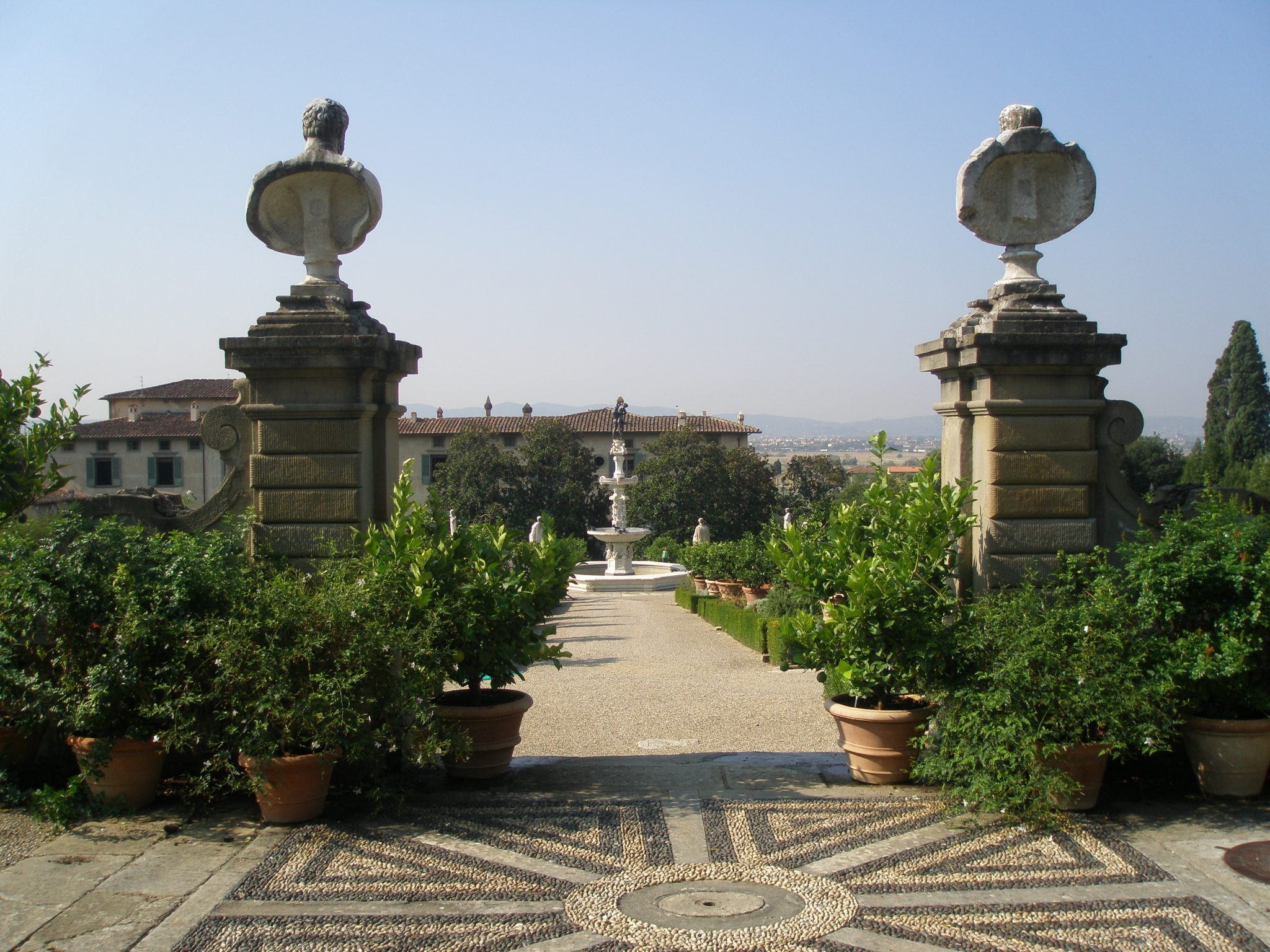
Whereas Villa di Castello was a year-round Medici residence, Villa della Petraia was a summer home. This villa was built in 1362, but was greatly enlarged and remodeled by Cosimo’s son Ferdinando, who laid out the gardens in the late 16th century, at about the same time he commissioned those 14 lunettes.
The Medici stamped each of their buildings with their family crest, but the emblem evolved, with location and over time. The consistent feature was
known as ”their load of balls”—a varying number of balls on a shield—the balls signifying a variety of things: coins, pills…or the obvious.
More views of Villa della Petraia:
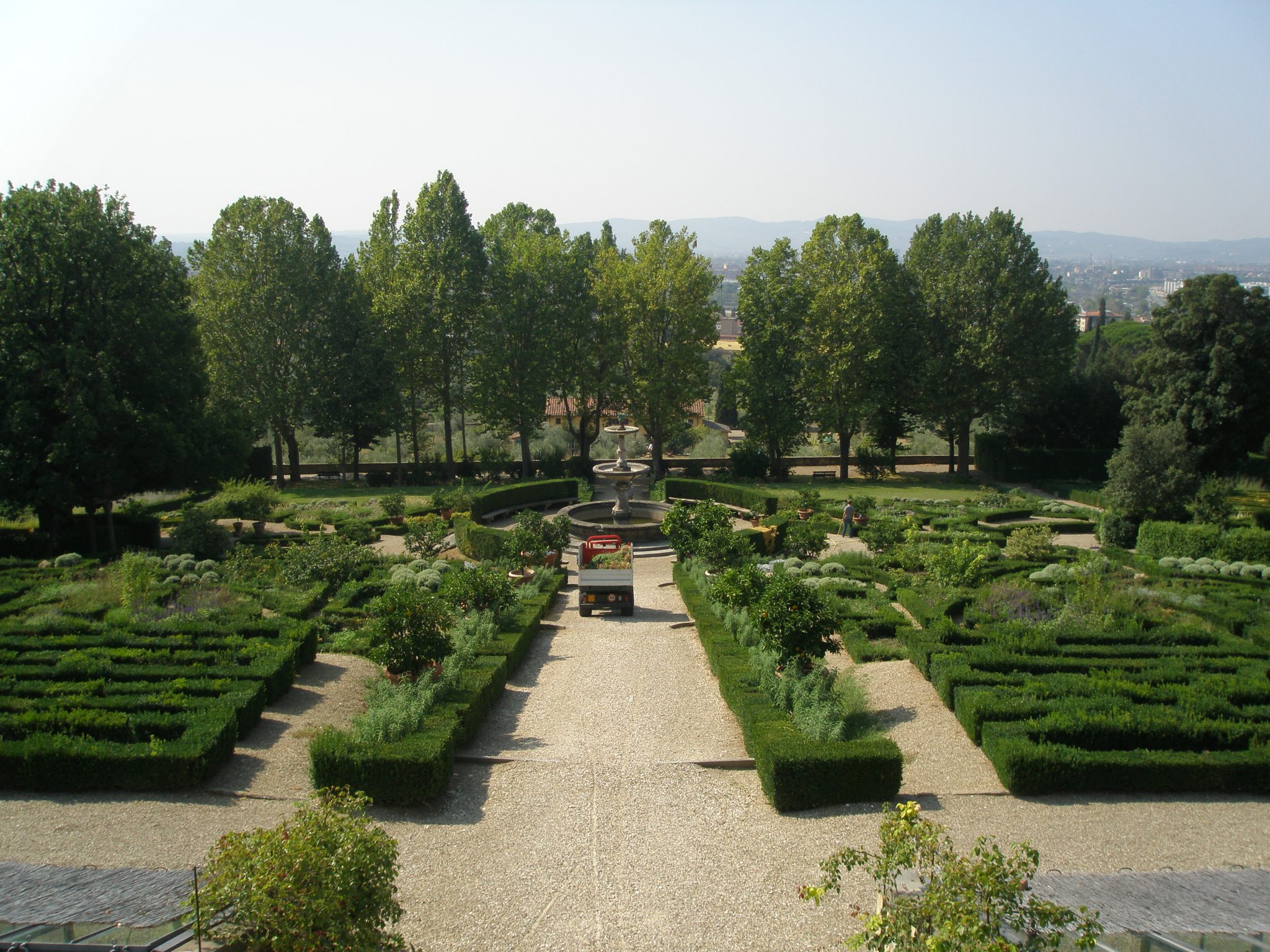
The noontime sun had become oven-hot, and so we ended our Medici-morning, and drove to the cooler, mountainside village of Fiesole, where we lunched at a café on the piazza…
…and then climbed up the steep Via di San Francesco…

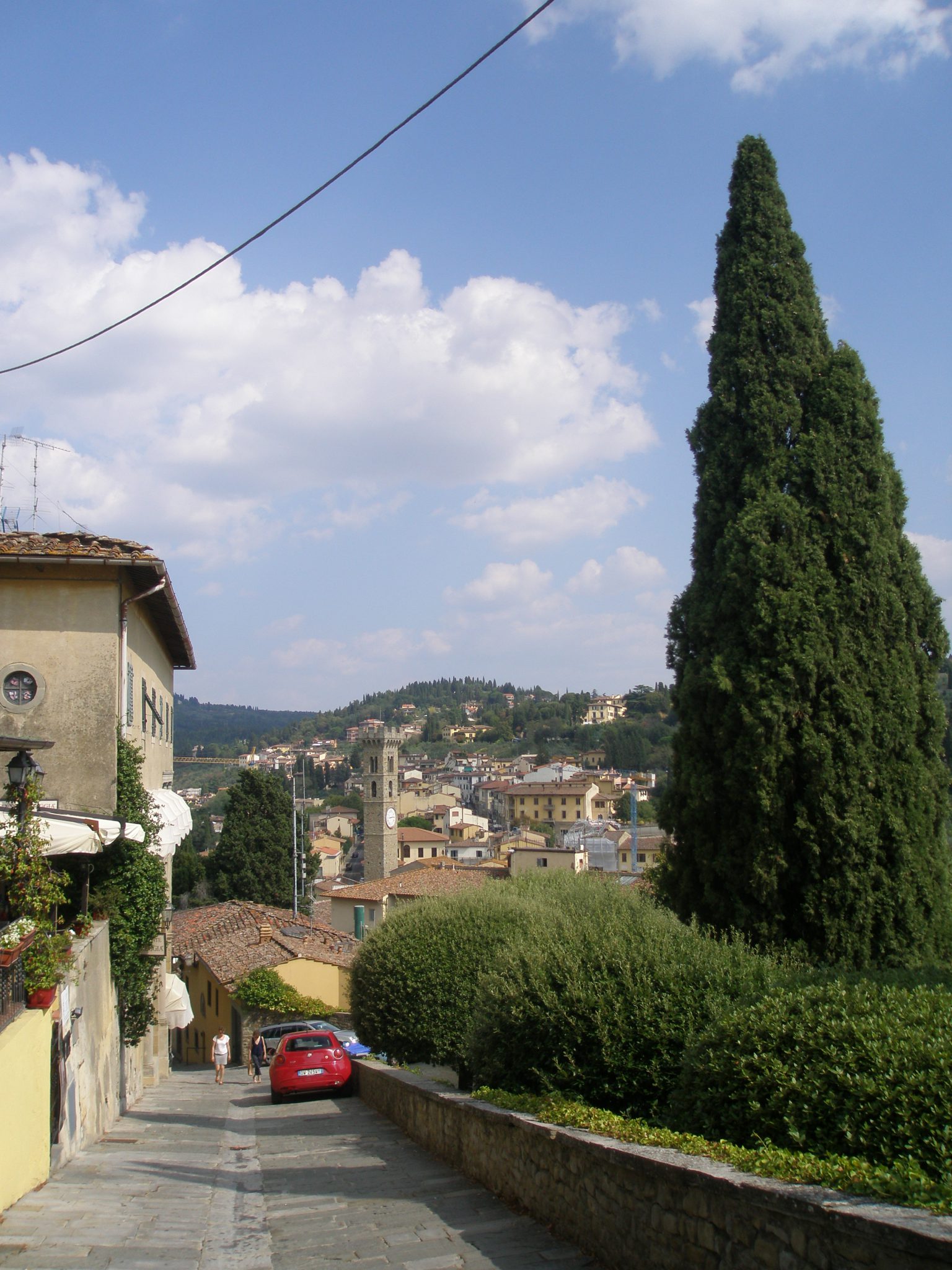
…for pay-off views to the south east…
…and then for an even more magnificent vista from the top, at the site of the Monastery of San Francesco, a Franciscan friary founded in 1399.
Our next stop was the Archaeological Area of Fiesole, where we strolled through the Etruscan, and Roman ruins.
These Etruscan stones date from the fourth century BC. (And NO, those sculptural figures aren’t Etruscan; they’re current-day additions to the site.) :
As was their wont, the Romans came, and conquered. The Etruscan settlement was destroyed in 90BC, and on its foundations the Romans built an extensive
series of Baths , along with a Theatre.
Despite this archaeological magnificence, I was anxious to move along. The hour was late and I was looking forward to our day’s final stop: the Gardens at Villa Gamberaia, in Settignano. I’d first visited Gamberaia with Valentina Grossi Orzalesi, back in November of 2002… on a cold and misty day. And ever since, I’d been dreaming of a return visit …this time in better weather.
Gamberaia is perched on a small spine of land that’s surrounded by acres of olive trees. The house itself isn’t ostentatious, and feels very much like a real home. After we’d been buzzed through the gates at street level, we walked up a long, greenery-walled drive…which may seem familiar to those who’ve seen A ROOM WITH A VIEW (scenes were filmed here in 1984).
At the top of the drive, we were greeted by dogs: one in fur, and many in stone.
Over the past 500 years, the main house has been enlarged and renovated and destroyed and rebuilt by a progression of owners. Not until the end of the 1800’s did the gardens as we know them begin to take form, on the site of the villa’s orchard. Once again, I refer to Marella Agnelli: “The villa became the property of Princess Giovanna Ghyka : ‘a narcissistic Rumanian lady,’ Bernard Berenson writes in his diary ‘who lived mysteriously, in love with herself perhaps and certainly with her growing creation, the garden of Gamberaia.’ It was thanks to the Princess, advised by her inseparable companion Miss Blood, that the orchard became the masterpiece it is today.”
In 1908, Edith Wharton was more succinct, declaring it: “probably the most perfect example of a large effect obtained on a small scale.” But the fact that we can experience this sublime creation is a miracle. During WW2 the villa, which had been used by the Germans as a map depot, was burnt down. After the War, the ruins were donated to the Vatican, which didn’t want them, and eventually the derelict property was sold to Marcello Marchi, who became the garden’s Angel, as he set about restoring it according to Princess Ghyka’s master plan.
The acreage is modest:
As we ambled through the garden, which was enlivened by low, golden afternoon sun and lengthening shadows, Gamberaia seemed vast and mysterious. Italian gardens are always about contrasts: between lightness and darkness; dryness and moisture…between opulent and humble materials; magnificent promenades and intimate corners. But, unlike the pontificatory nature of the Medici gardens, this creation of the Misses Ghyka and Blood speaks only of a personal, passionate attachment to beauty.
Here are glimpses from my two, happy hours at Gamberaia:
You’ll note that, apart from ourselves, all of the gardens we visited on this day-long excursion were empty of visitors. That such blessed peacefulness exists not terribly far from Florence’s noisy and jam-packed streets amazes me.
September 8th, Saturday. After Friday’s exertions, Donn and I spent a relatively quiet Saturday in Florence. We began with an early-morning visit to the Uffizi ; book your entry for 8:15AM, and you’ll have most of the galleries to yourself. After lunch, we crossed the Arno and hauled ourselves up the very steep Costa San Giorgio to Villa Bardini, where the entire 4th floor is given over to displays of the mind-bendingly inventive gowns of the couturier Roberto Capucci (Museo Fondazione Roberto Capucci, 2 Costa San Giorgio, Villa Bardini):
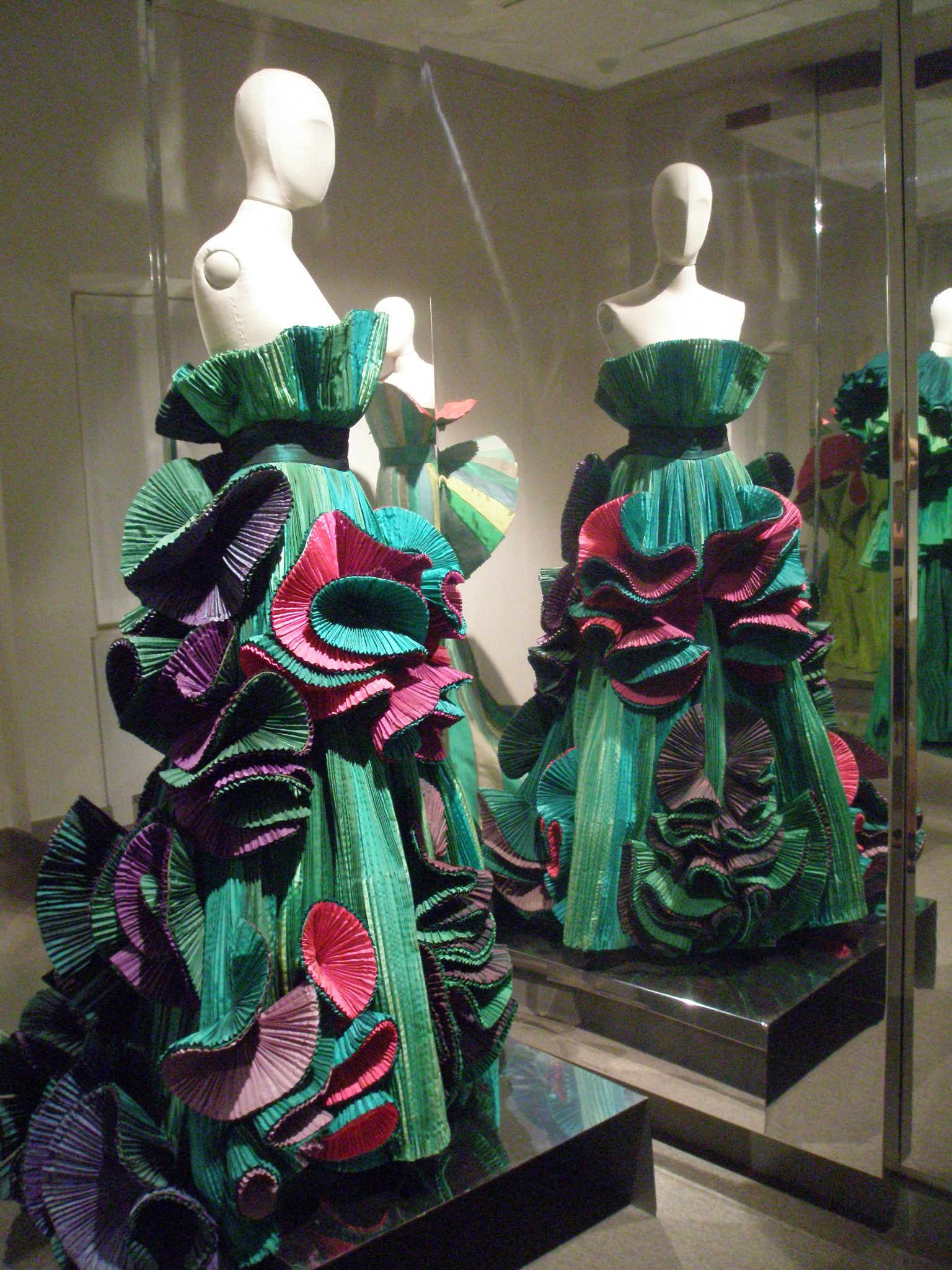
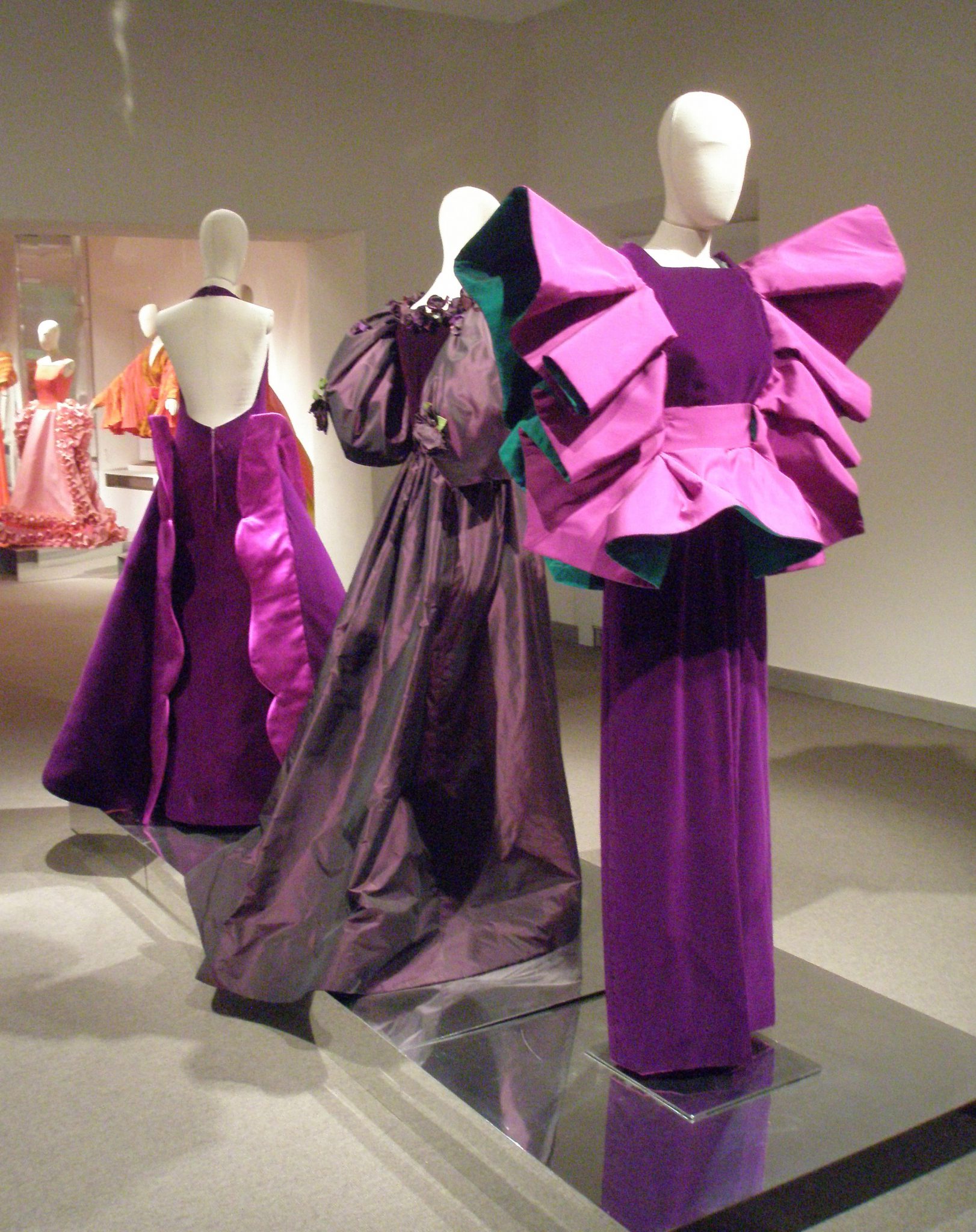
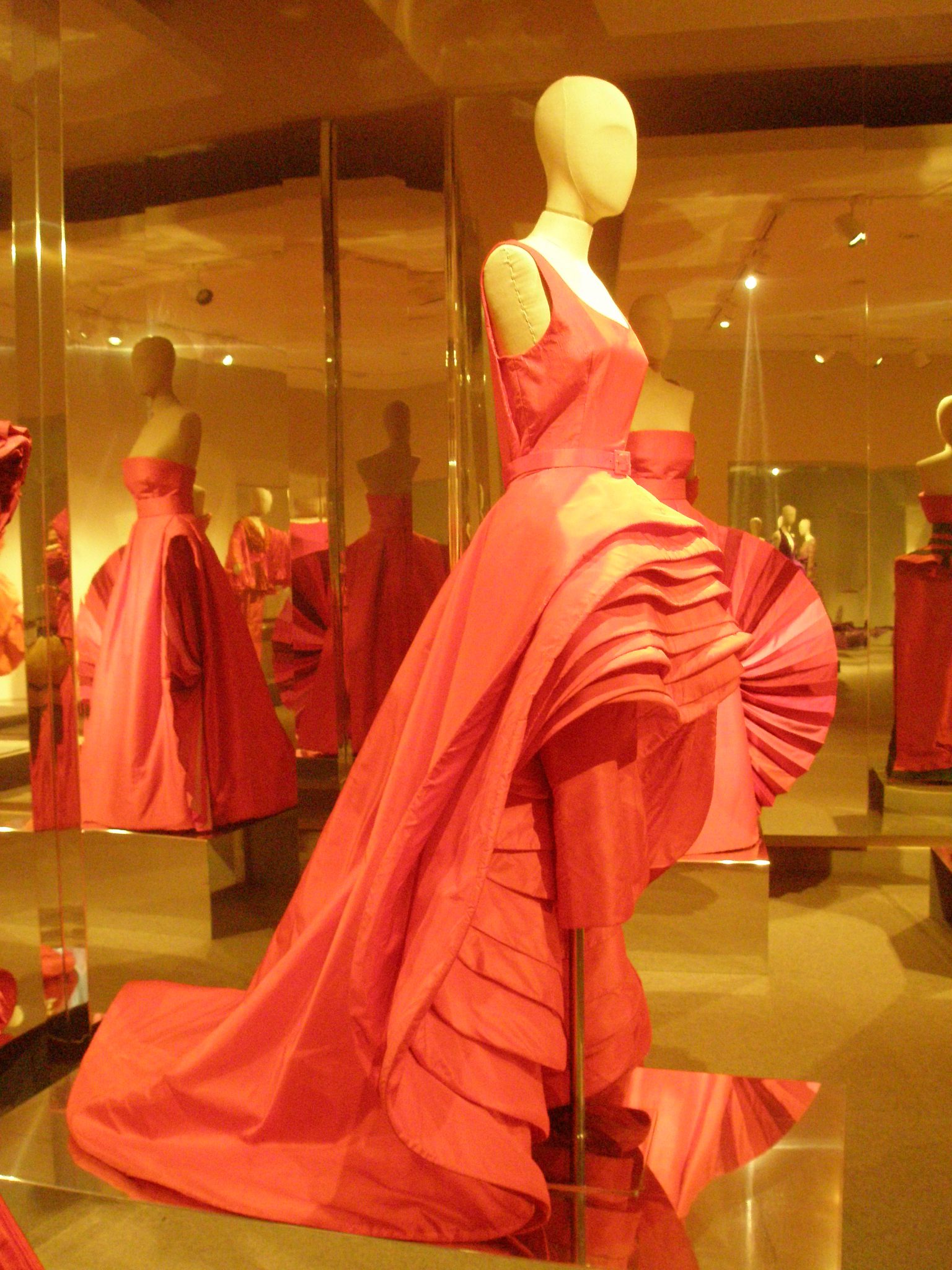
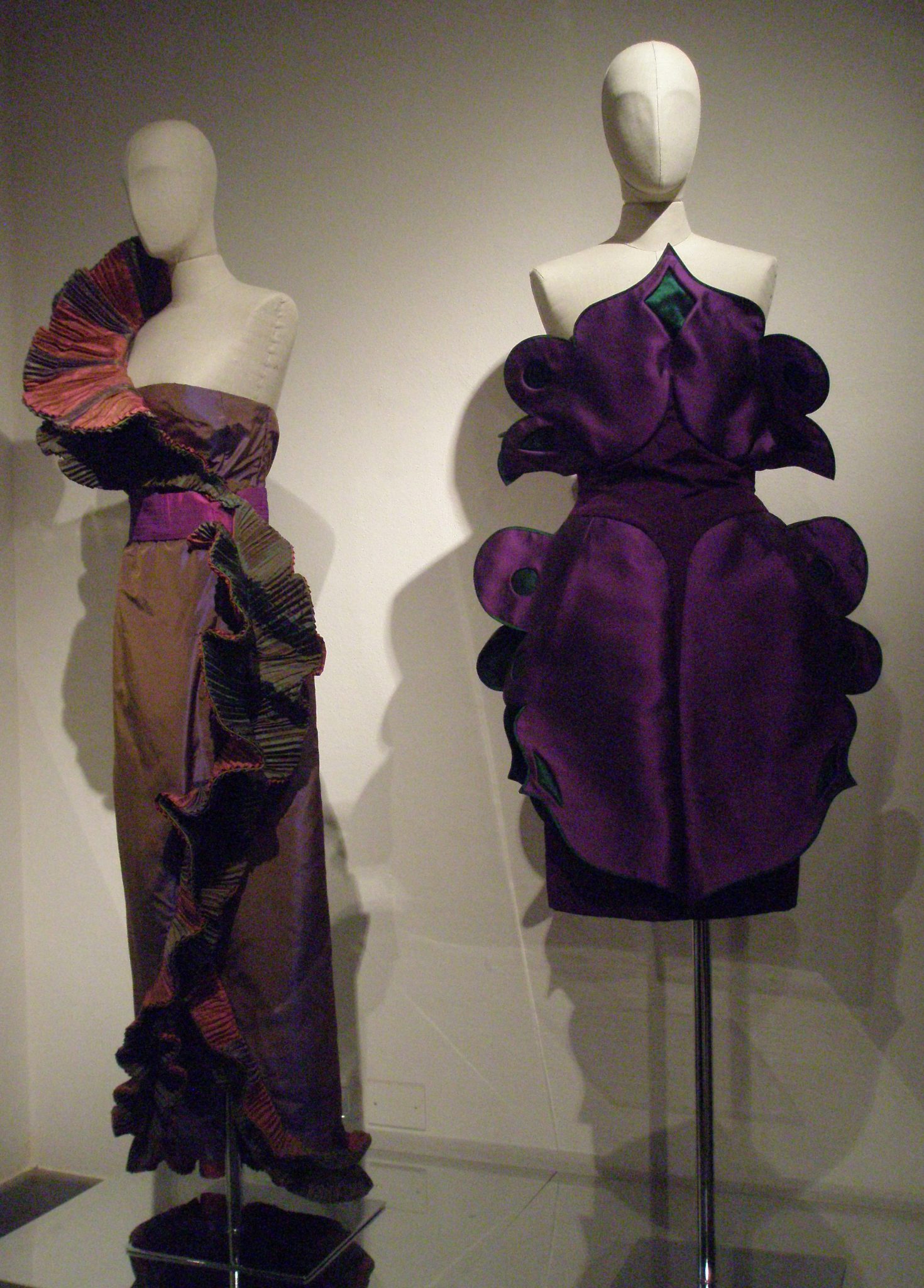
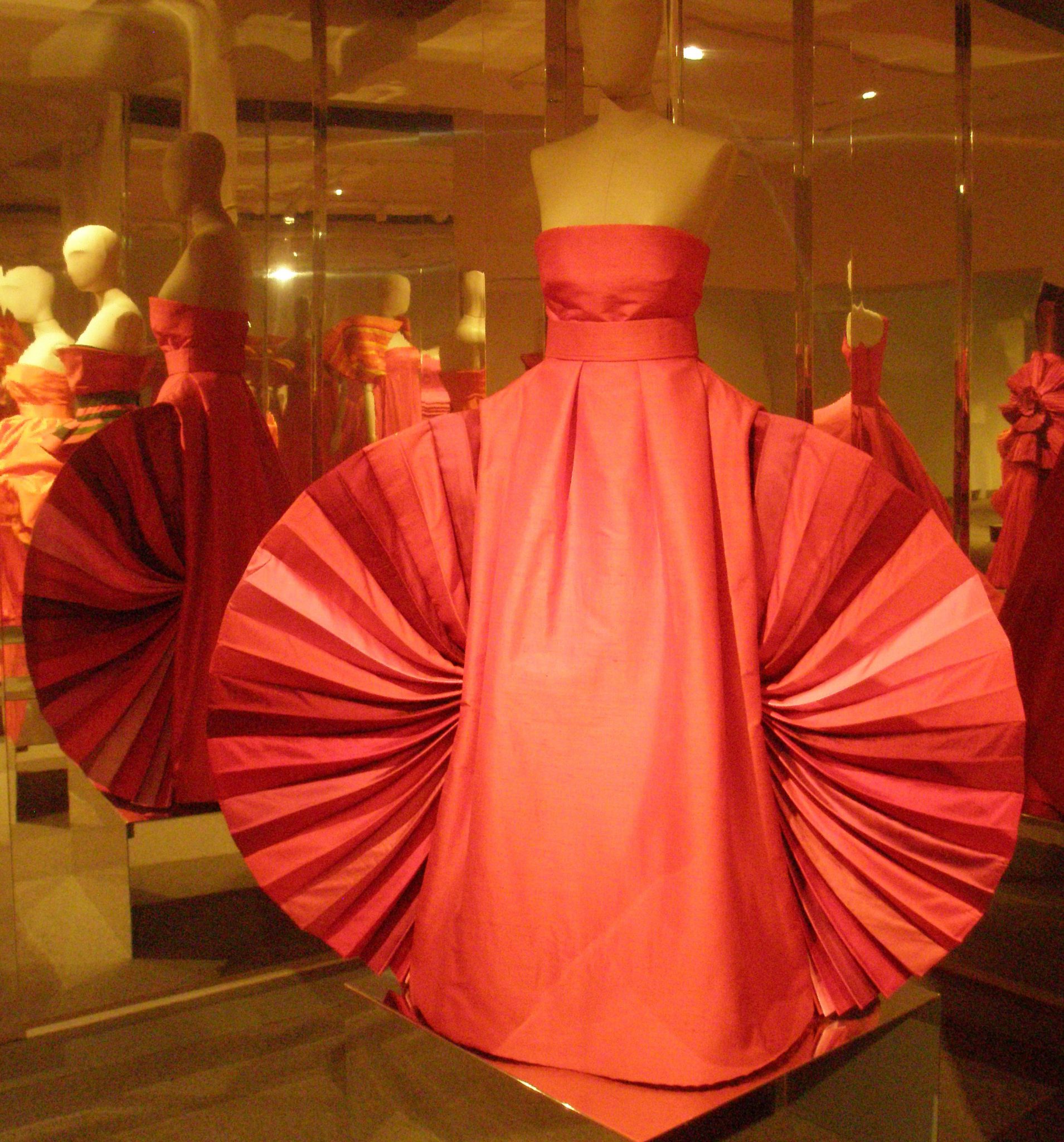
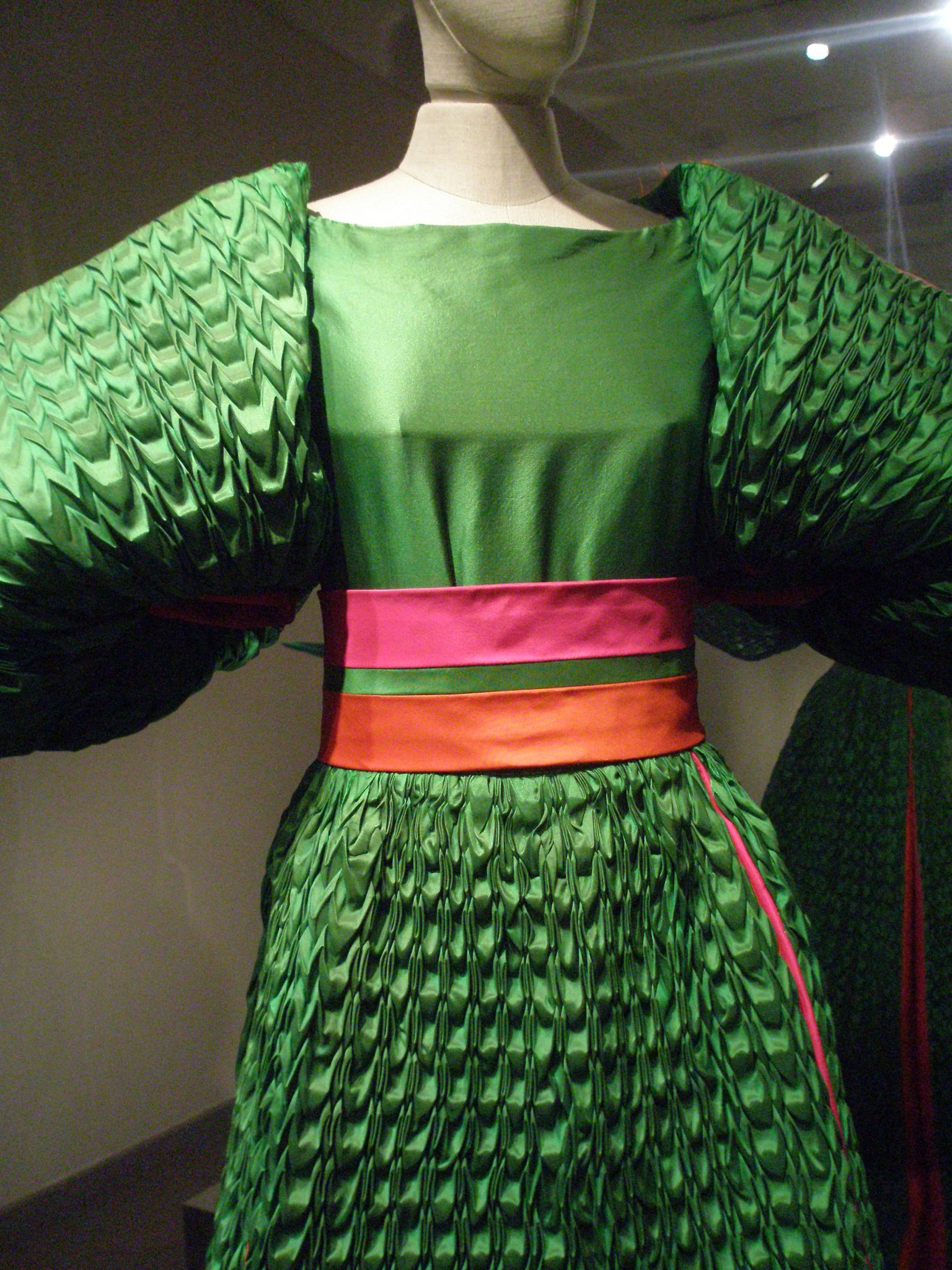
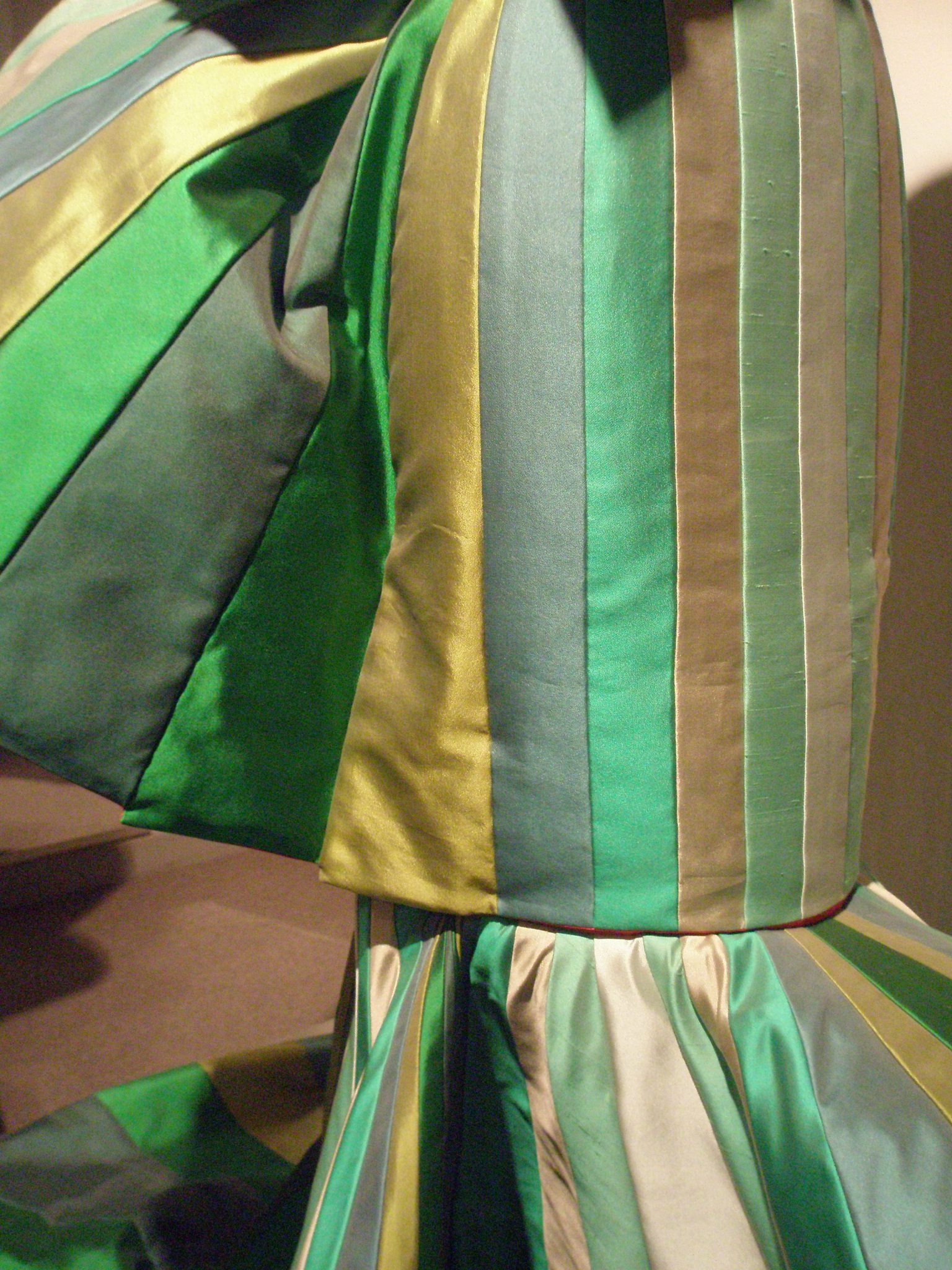
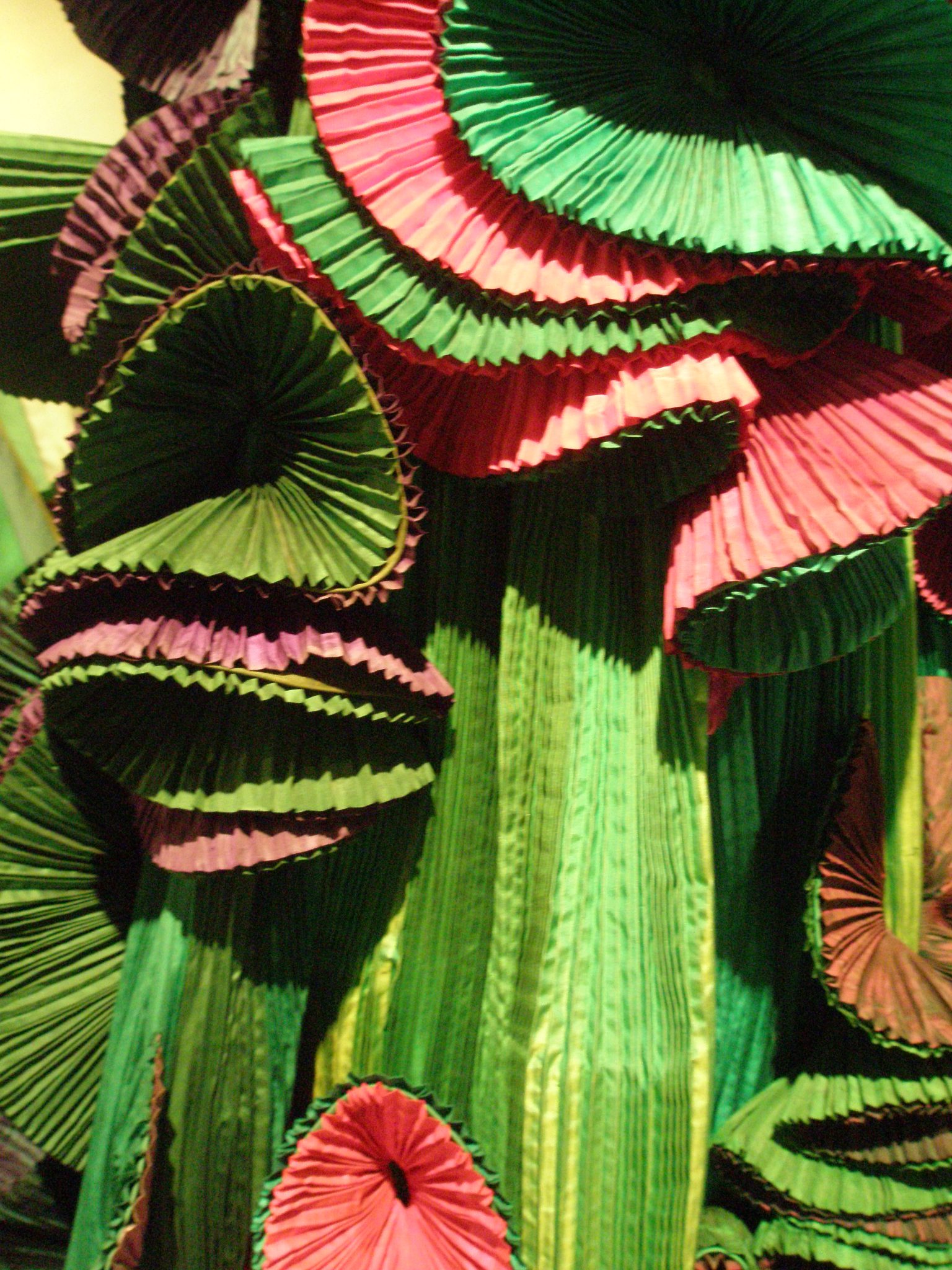
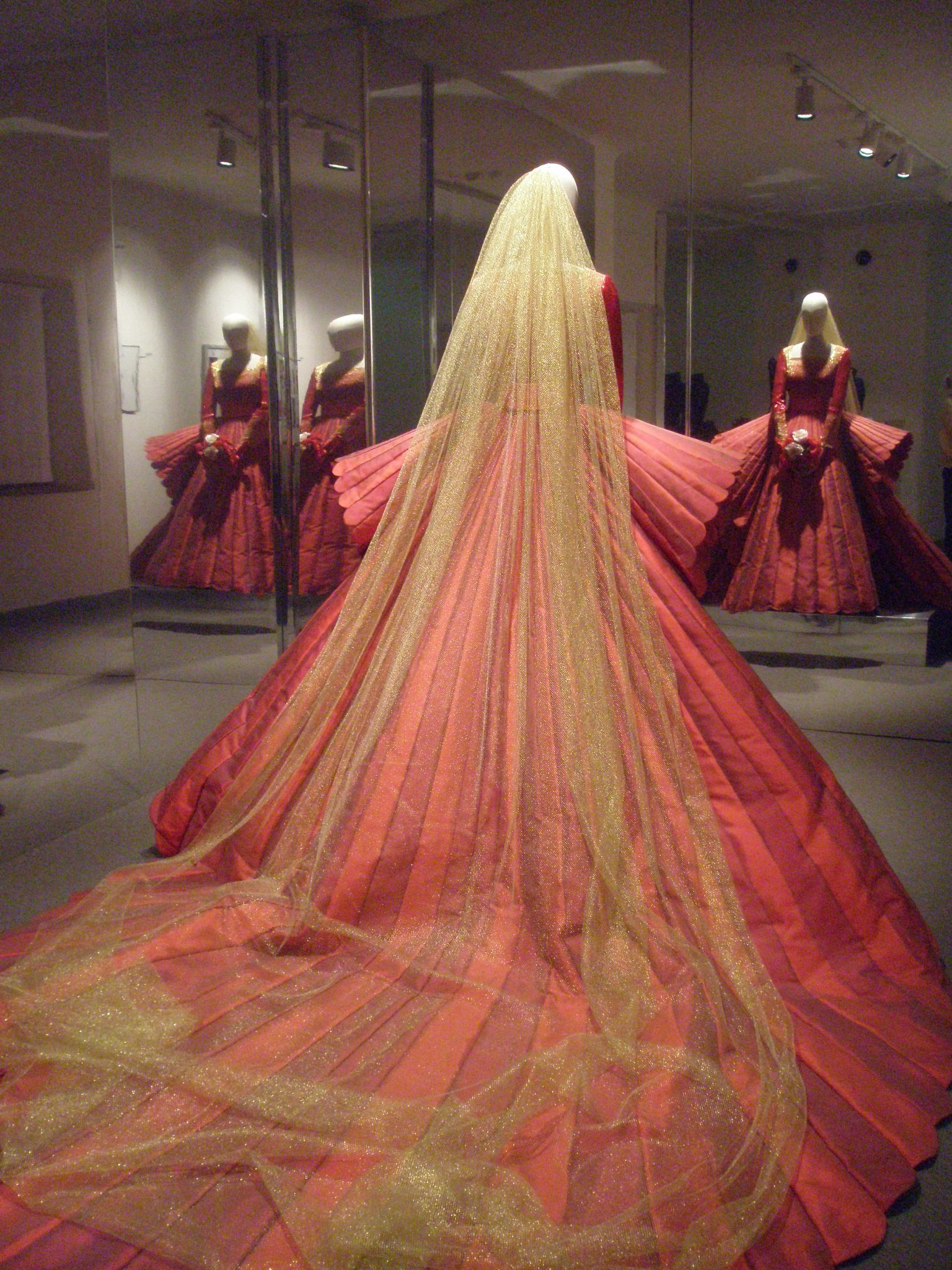
September 9th, Sunday. Hot, sunny weather encouraged an early hike to the Pitti Palace & and Boboli Gardens, another of the great, Medici residences that was lunette-ed by Utens.
The Boboli Gardens extend over slightly more than 100 acres, and offer relief from Florence’s constant crowds and occasional air pollution. We trotted uphill, through the Amphitheater, with its Obelisk, and Fountain of Neptune…

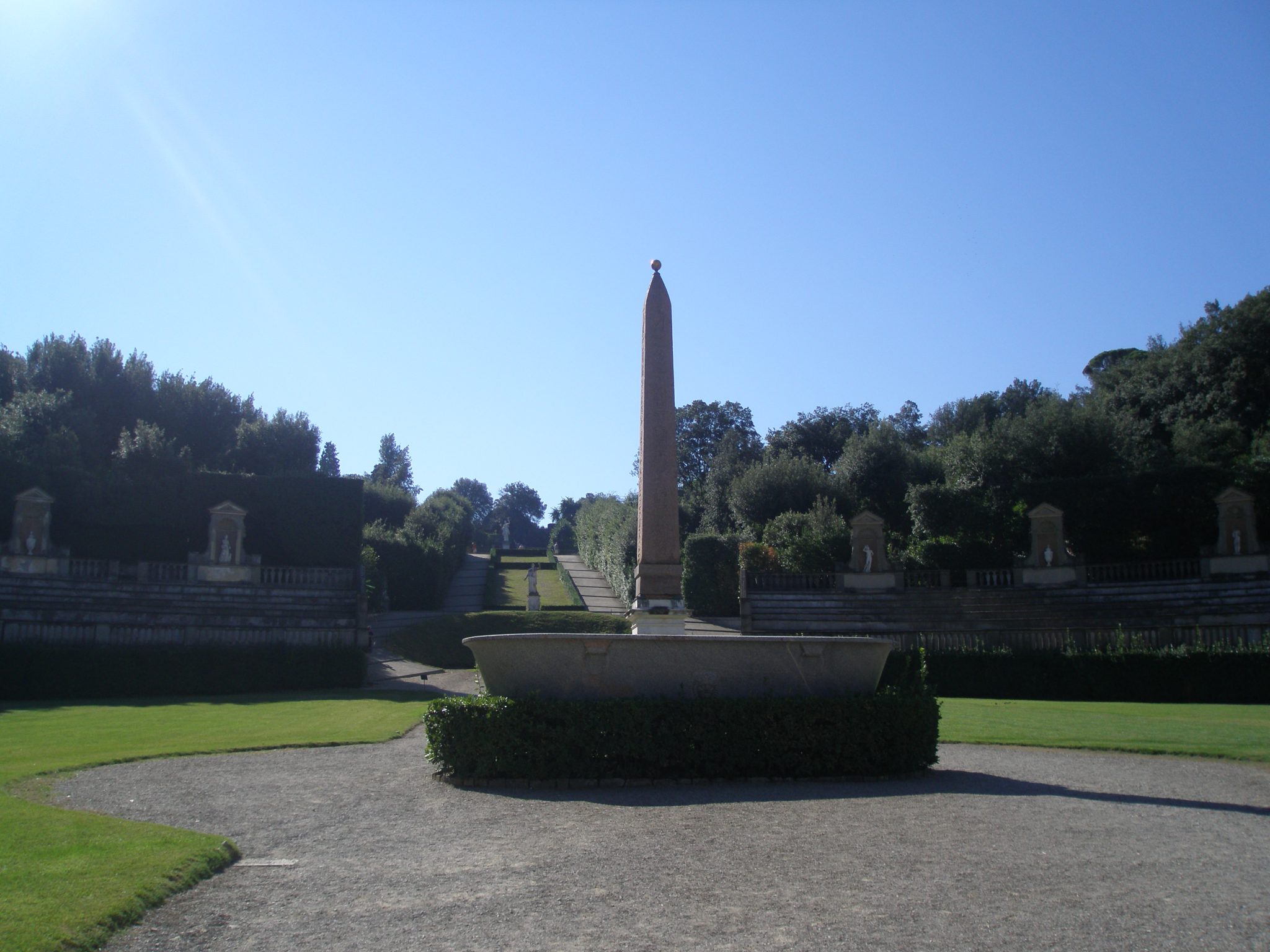
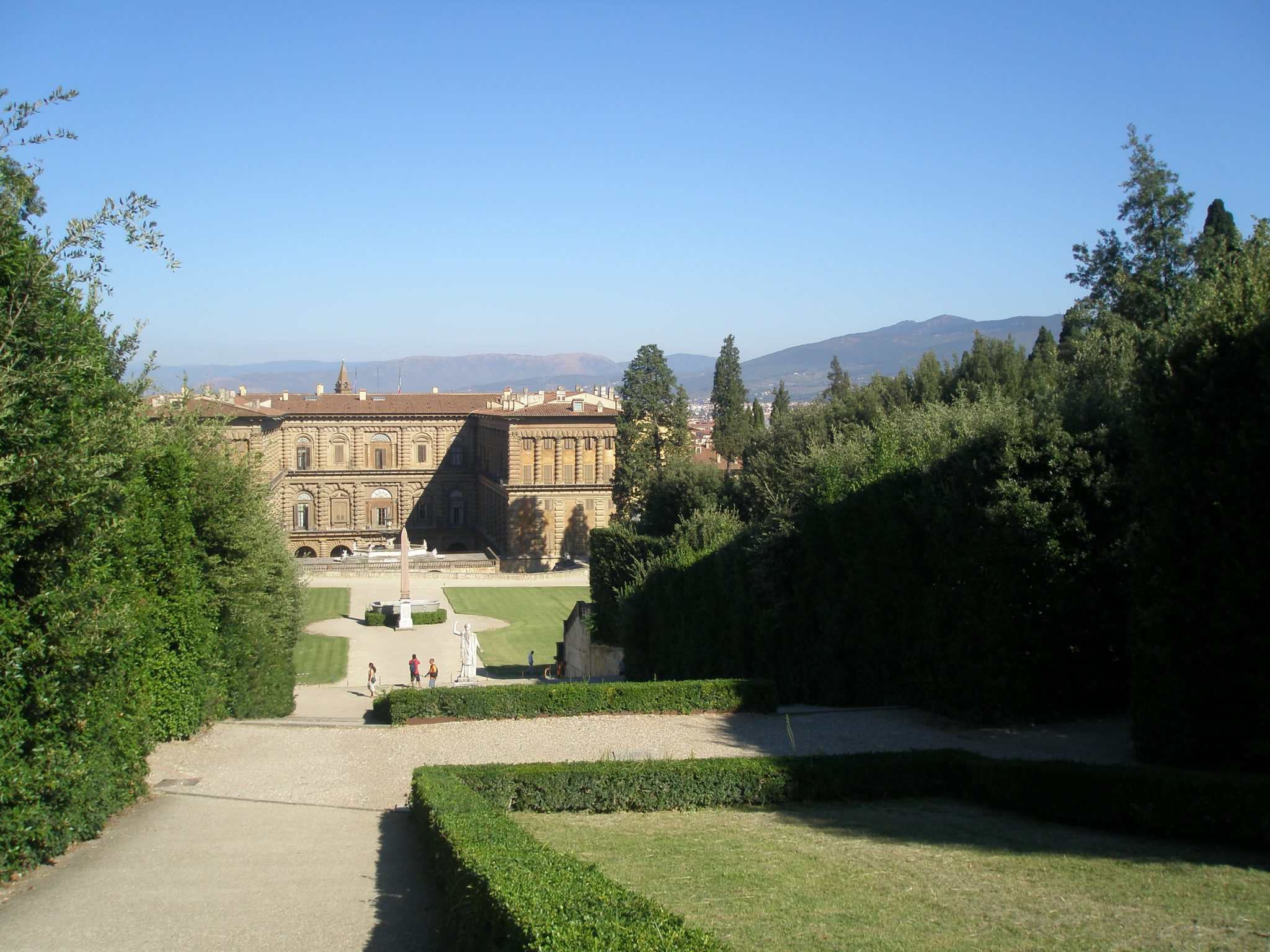
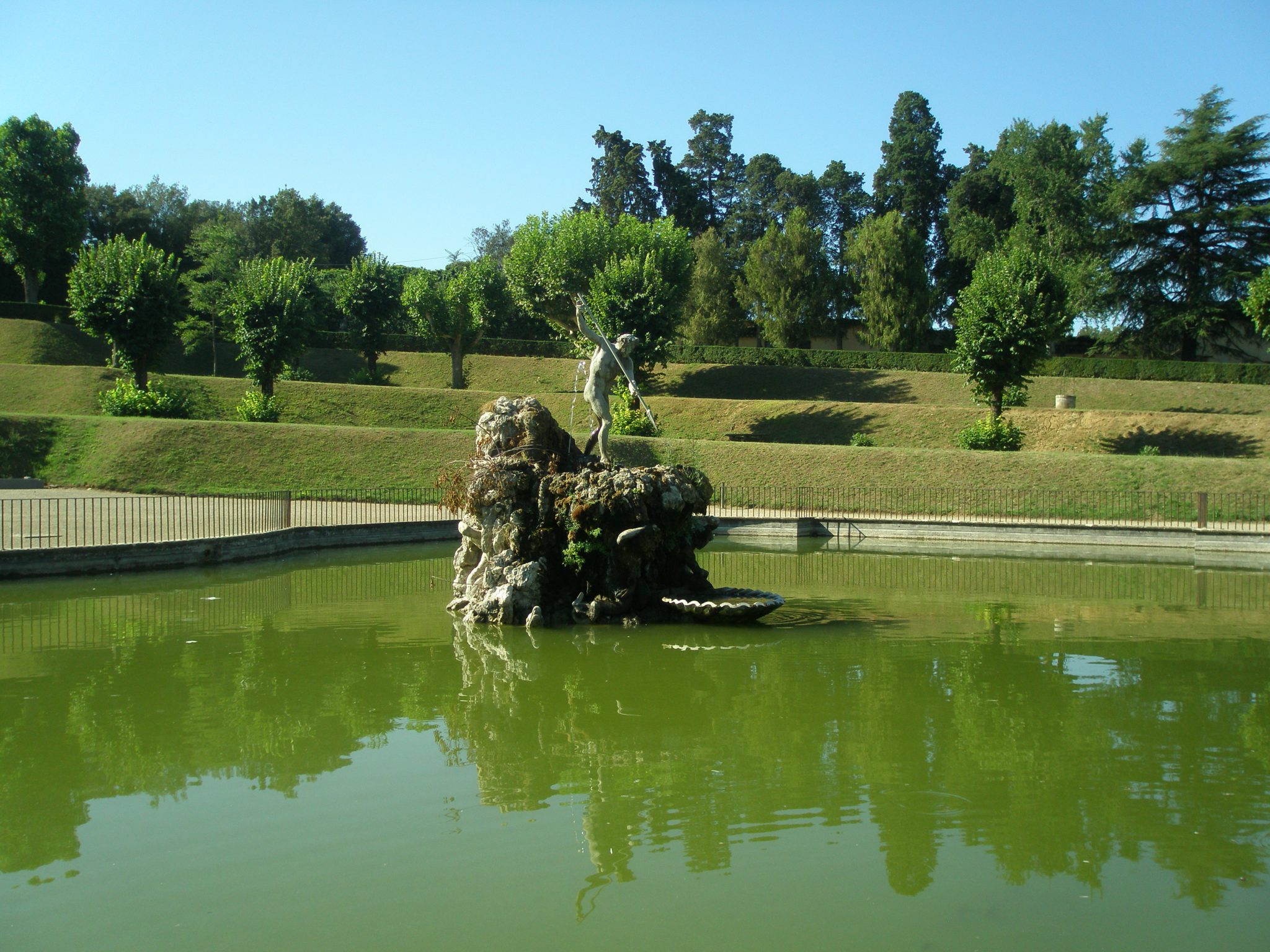
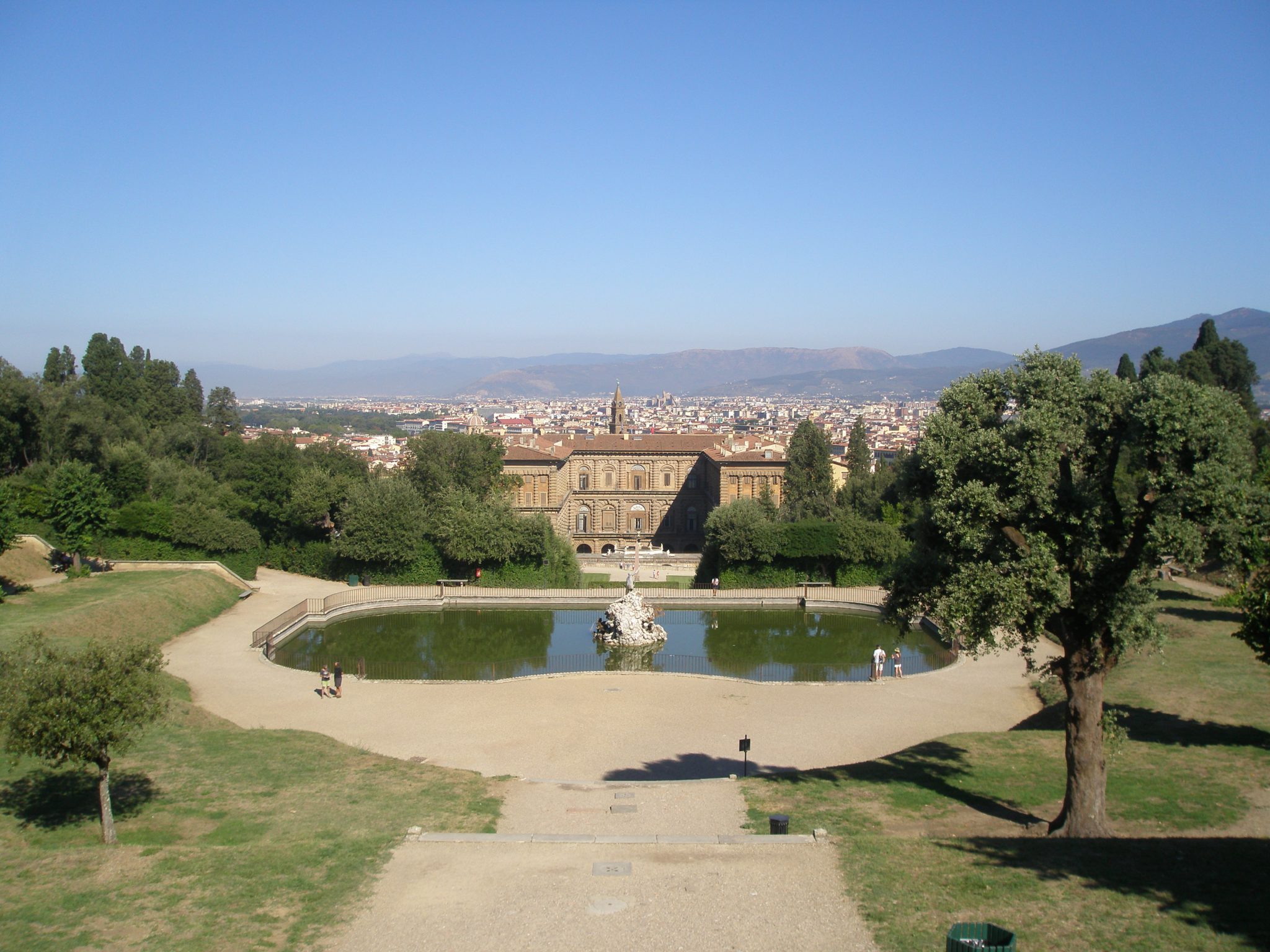
…toward the Belvedere, and its Porcelain Museum, which rests on the highest point of the Gardens…
…and progressed past the Lavender Garden to “Tindaro Screpolato,” the massive bronze, by Igor Mitoraj…
…and then downhill, along the length of the Vittolone…
…toward the Isolotto, which is adjacent to the Gardens’ side entrance.
Throughout the Gardens, sculptures animate the landscape, but, apart from that Big Bronze Head, these are my two favorite statues:
September 10th, Monday. Elena and driver arrived, and we began our trek toward the walled city of Lucca , an hour’s drive west of Florence (except during the commuting hours, when that journey can grind on for more than 2 hours) . We had an enormous amount of rubbernecking to cram into a mere day! Between Lucca itself, and the three villas to the north of the City, Elena showered us with a wealth of observations and history, which I’ve only room to touch lightly upon in this article. My first impression of Lucca was that it MURMURS…unlike Florence, which virtually ROARS with the sounds of the many tourists who pack its streets. Lucca is a tranquil place; famous for its towers…
…for San Martino, its extraordinary 11th century cathedral…
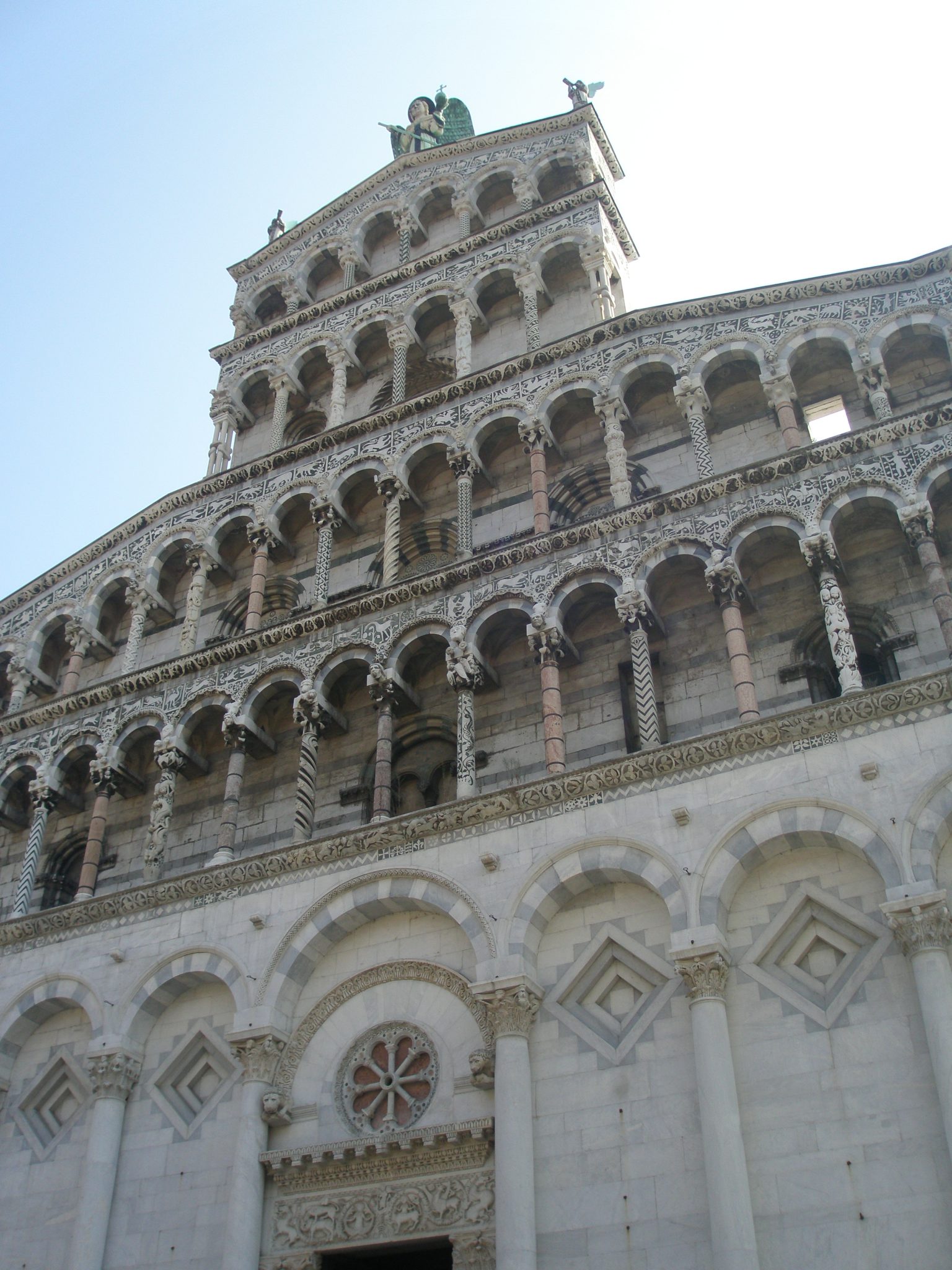
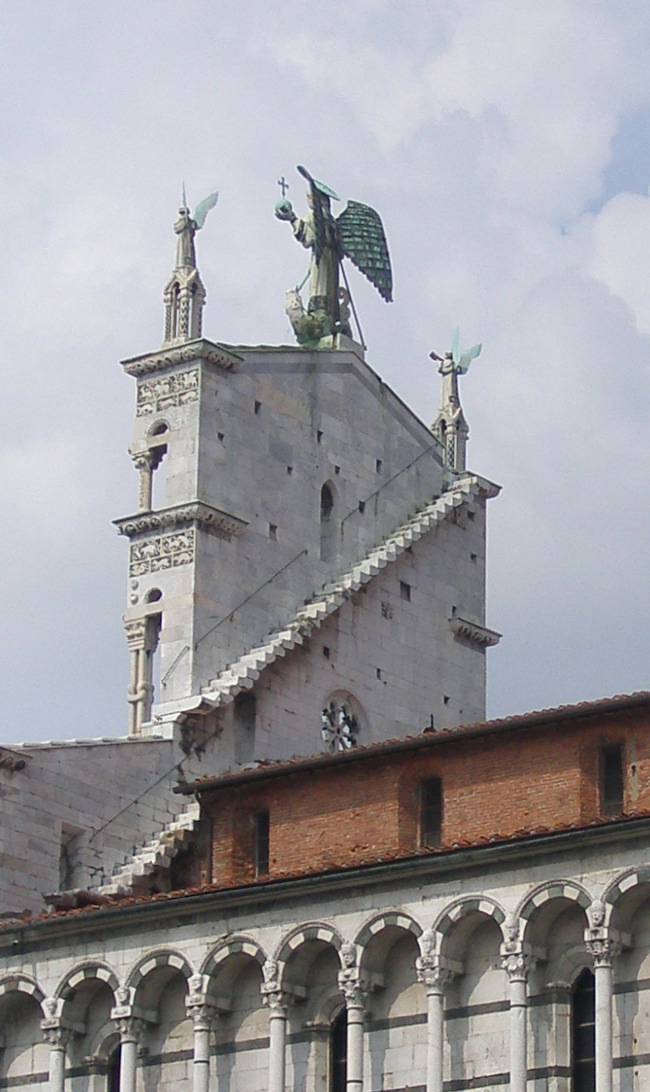 …for exquisite shops, selling olive oils and delicious foodstuffs (especially the Brutti ma Buoni cookies, at Caniparoli Cioccolateria, at 96 Via S. Paolino) …
…for exquisite shops, selling olive oils and delicious foodstuffs (especially the Brutti ma Buoni cookies, at Caniparoli Cioccolateria, at 96 Via S. Paolino) …
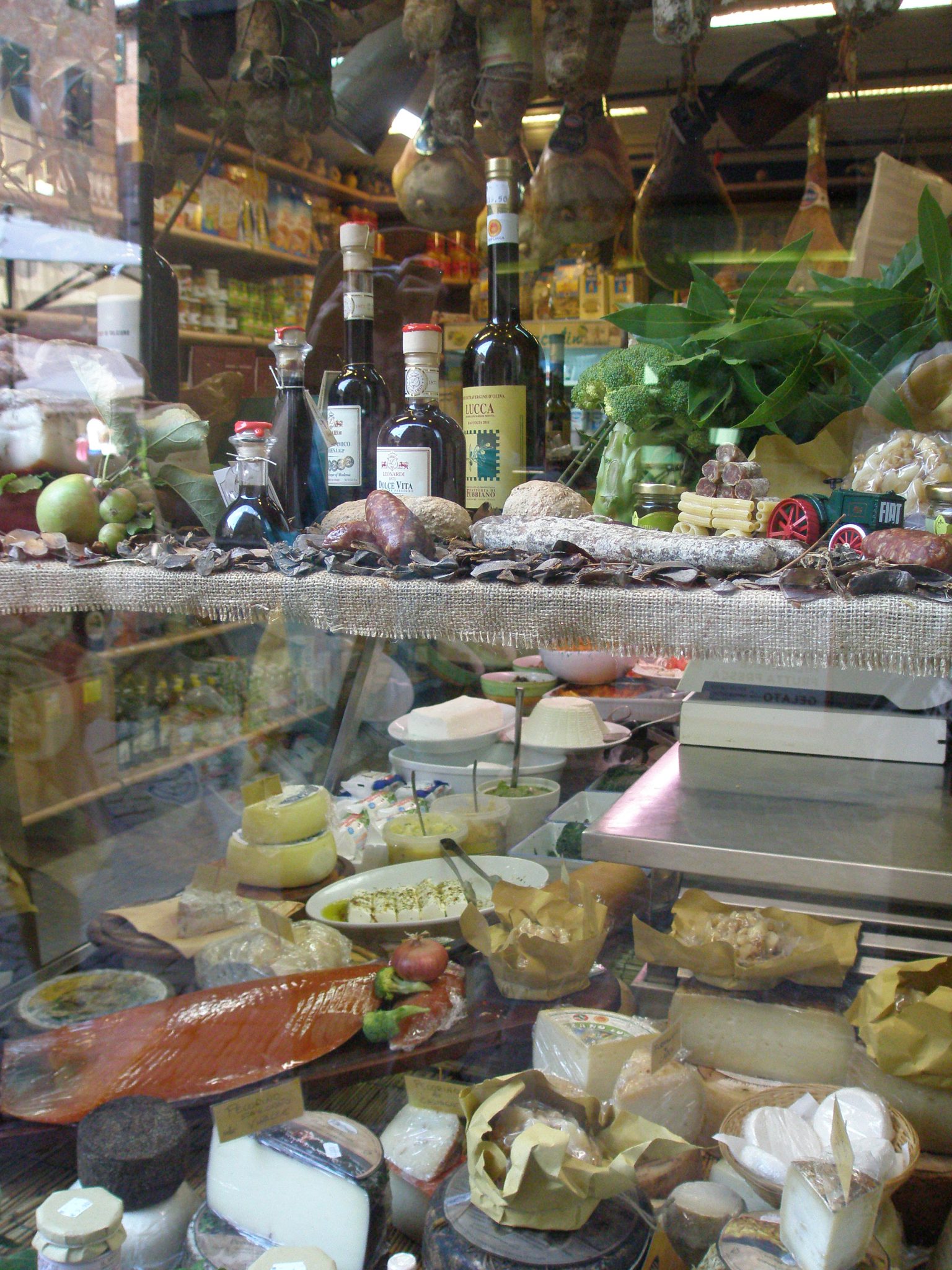
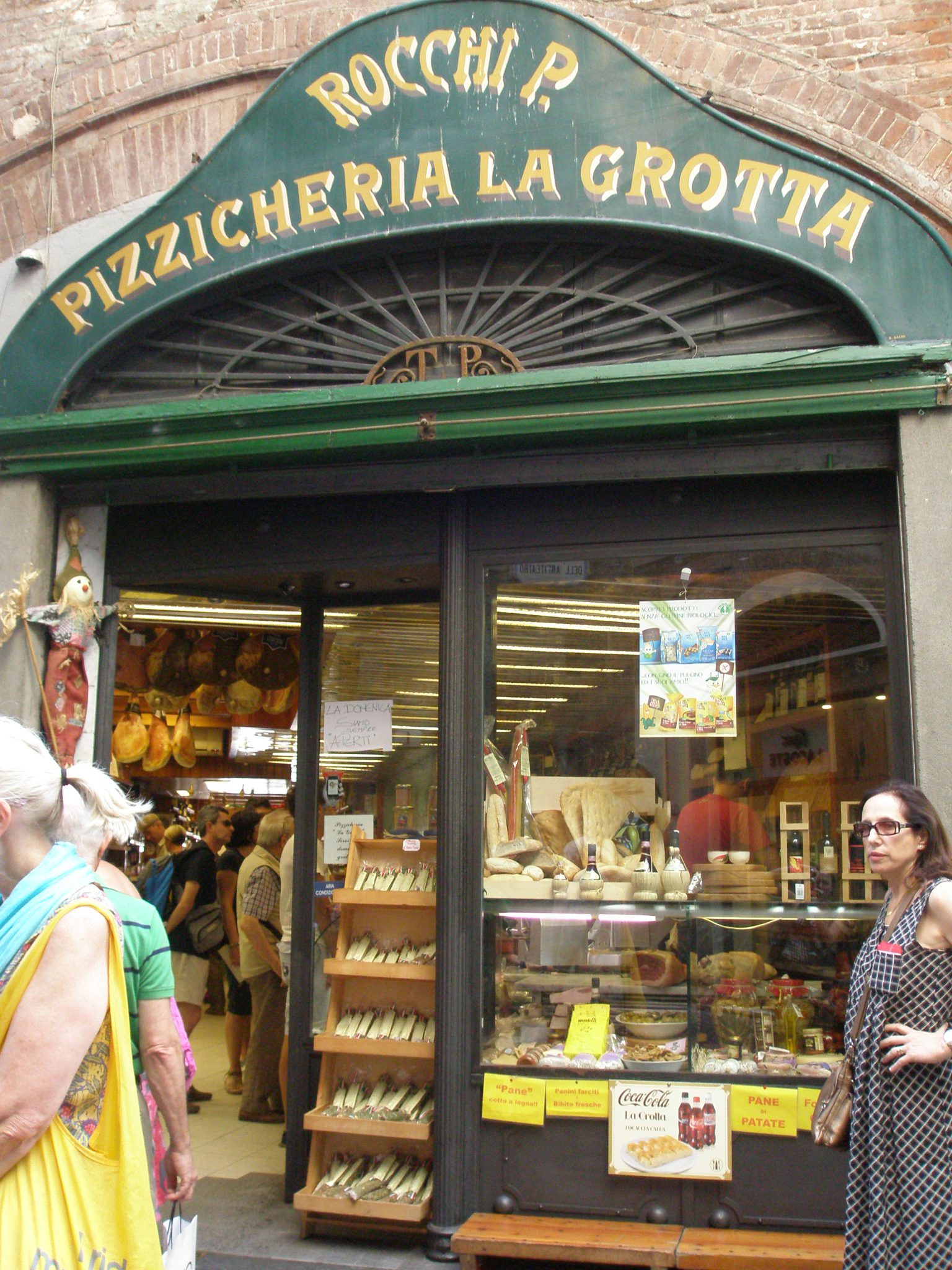
 …and for a general ROUNDNESS, which radiates out from its center, where a Roman amphitheater once stood.
…and for a general ROUNDNESS, which radiates out from its center, where a Roman amphitheater once stood.
The Old City is encircled by a massive red brick wall, which has been transformed into a park. Visitors can peer down from the ramparts into beautiful City gardens…
…or gaze out toward the green countryside.
Lucca deserves a Chapter unto itself, which I WILL write…next time I visit Italy.
My research for that article is already underway, thanks to Elena, who surprised me with a parting gift of many books about the entire Lucca region.
But since my focus is now upon villa gardens, I’ll conclude this Chapter with the three that we enjoyed, that afternoon.
Our first stop was Villa Grabau, in San Pancrazio. Grabau is one of the main Lucchesian residences of the 16th century, and is famous for its Arboretum, and its Italian, English, and Box-Theater gardens, which were added to the property about 100 years ago:
The pale walls of Grabau’s villa stand tall…and seem to maintain a dignified reserve from the verdant grounds. But as I circled through the gardens, I began to regard the Villa simply as the highest, pearliest statue in the landscape, and with that observation, the house, which had originally seemed discordant, became part of a whole.
Next up was Grabau’s close-enough-to-borrow-sugar-from-neighbor, Villa Oliva.
Oliva’s house and gardens were built at the end of the 15th century by the Renaissance architect Matteo Civitali, but the grounds we see today were restyled in the 18th century. Despite the severe drought that’s plagued Italy this year, most of Villa Oliva’s water features are active. Several ninfei (grottos) are scattered around the park. I especially liked the Cascatelle, a waterfall with terra cotta seahorses, and the Fontana della Sirena—although Elena and Donn and I, after much laughter, took issue with what its 2-tailed mermaid symbolized: that women are the fickle half of our species.
And, last but not least, we arrived at Villa Torrigiani, in the hamlet of Camigliano. The Villa was built in the early 1500’s as the summer residence of a powerful local family. In 1636 it was bought by the Marquis Nicolao Santini, ambassador of the Republic of Lucca at the court of Louis XIV at Versailles. Having gotten a serious eyeful of Louis’ grandeur, Santini rushed home and remodeled Villa Torrigiani’s exterior in the French style, and also hired Andre Le Notre, who’d planned the gardens at Versailles, to design the two great reflecting pools which punctuate Torrigiani’s front and back lawns.
As we approached the house, the more improbably beautiful this rare example of Baroque architecture became. Despite the larger-than-life statues which hover on all levels of the façade, this isn’t a stage set; the family of the Prince of Stigliano, Don Carlo Colonna, lives here.
The villa’s gardens are to the east of the great lawns and reflecting pools: a Secret Garden, a Parterre Garden that terminates with a Nymphaeum (in which a colony of bats has taken residence), and a Fish Pond (in which there seem to be no schools of fish). And behind the Grotto, at the opposite end of the Parterre Garden…there’s a chicken coop, with two hens happily scratching and pecking. It’s this mix of the opulent and mundane which keeps Villa Torrigiani approachable, and livable.
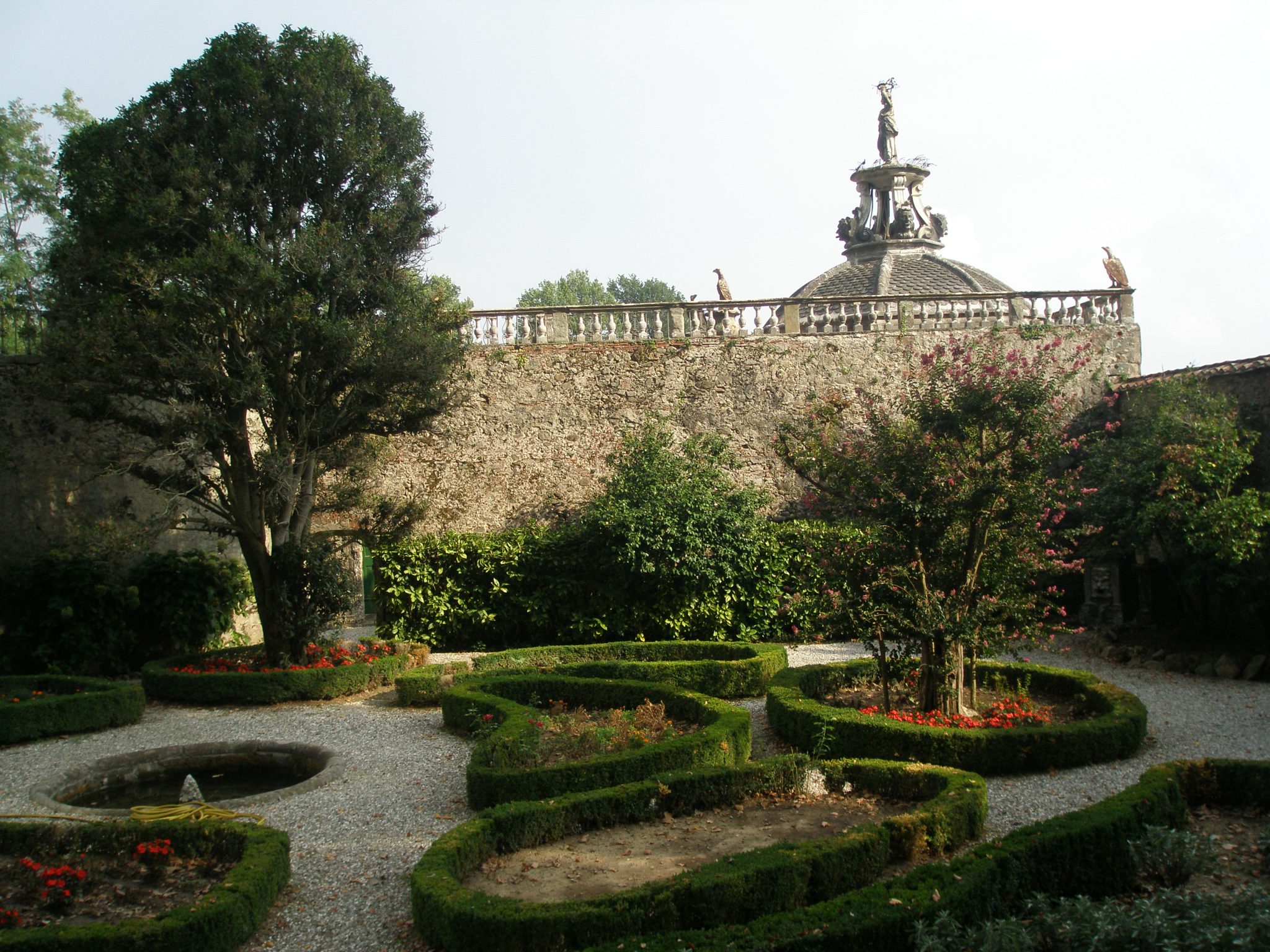
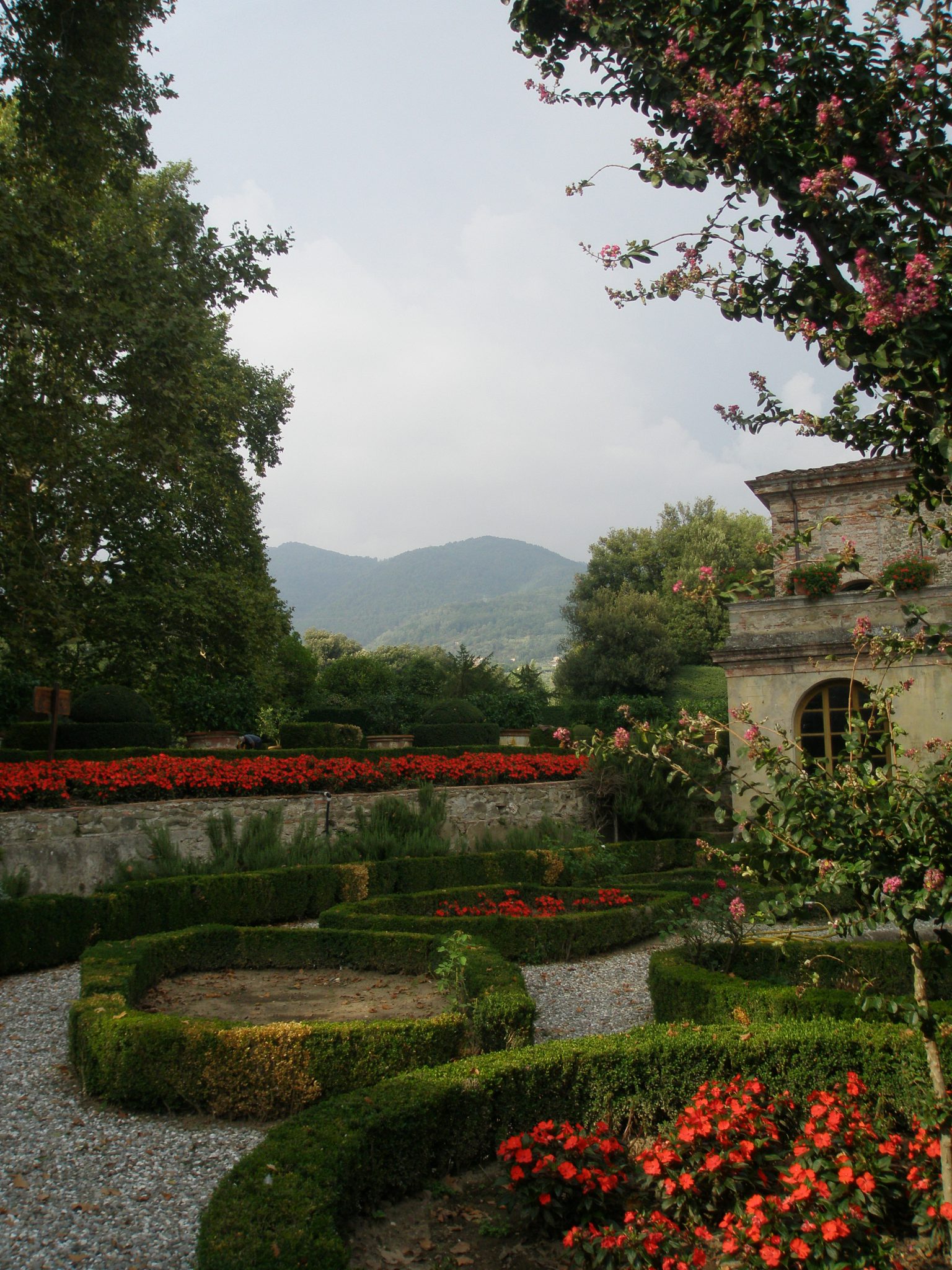
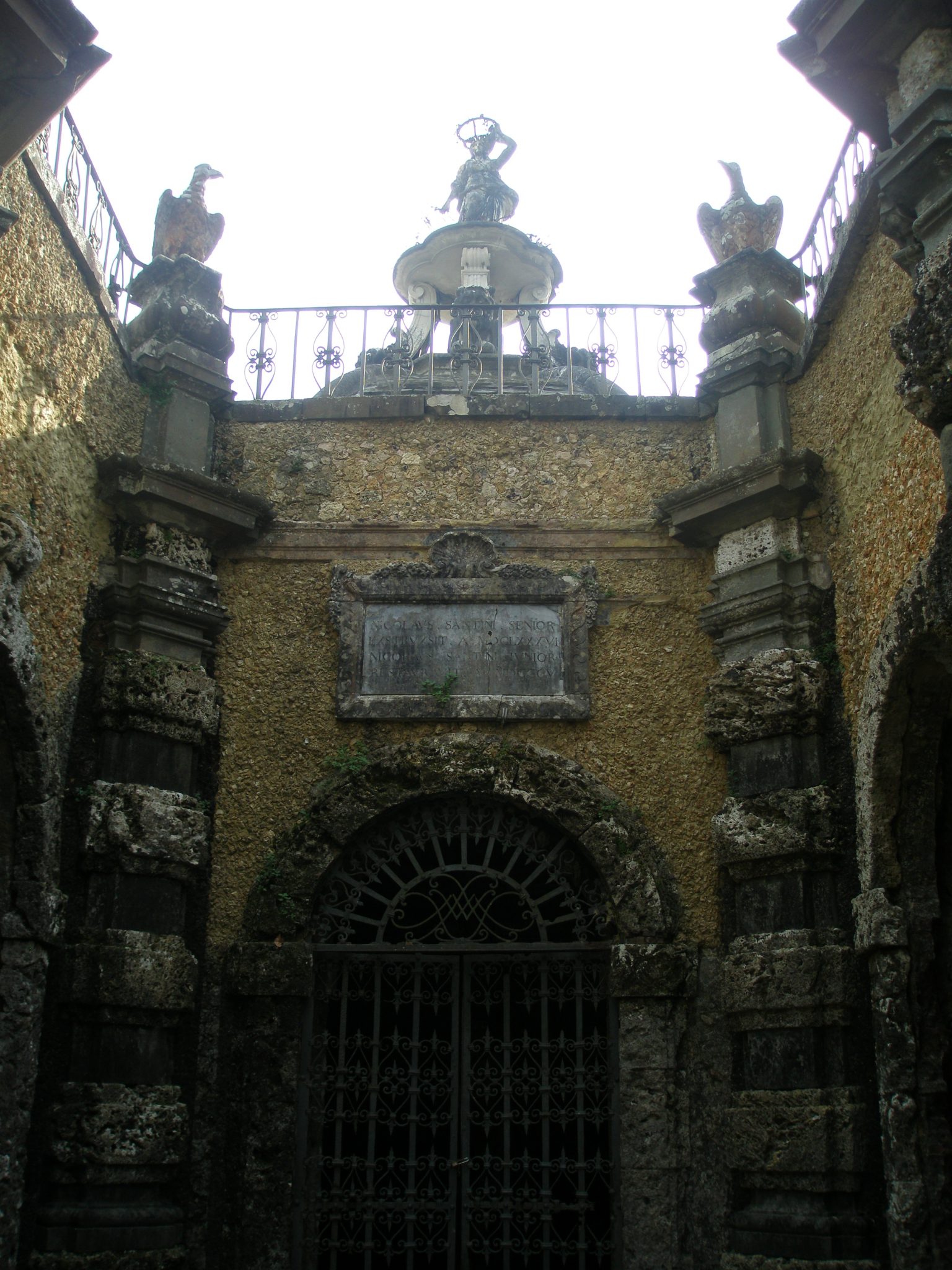
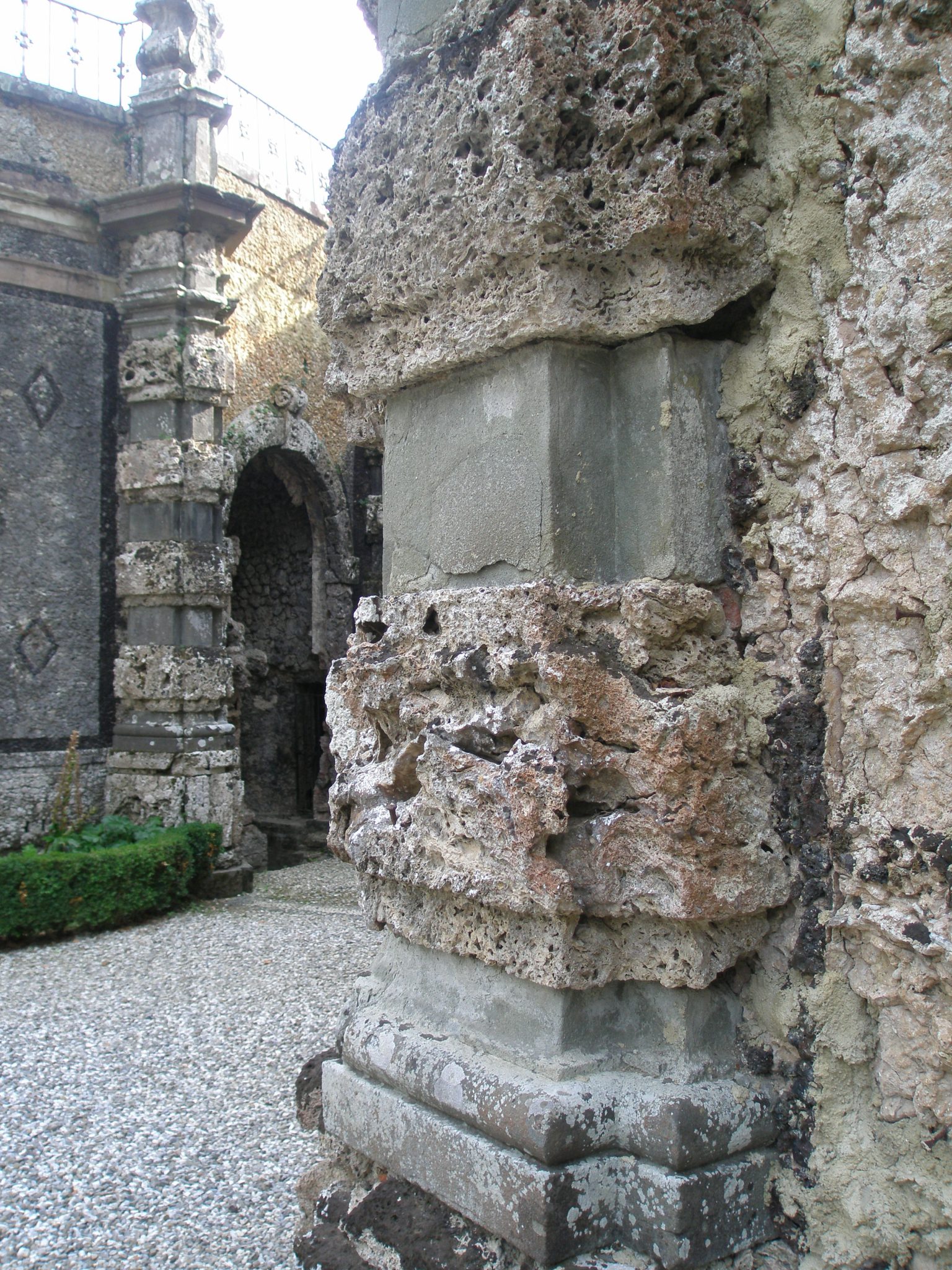
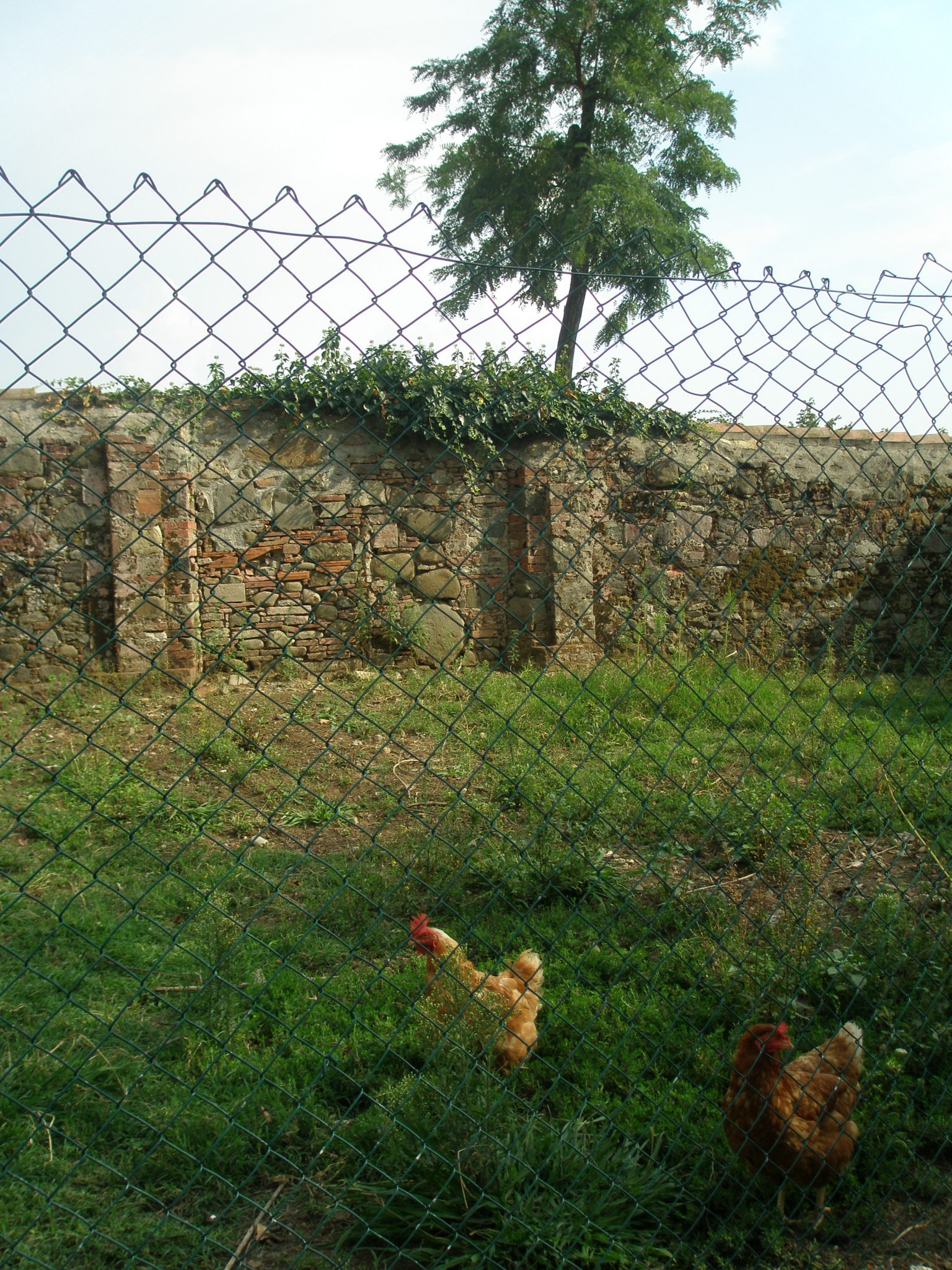
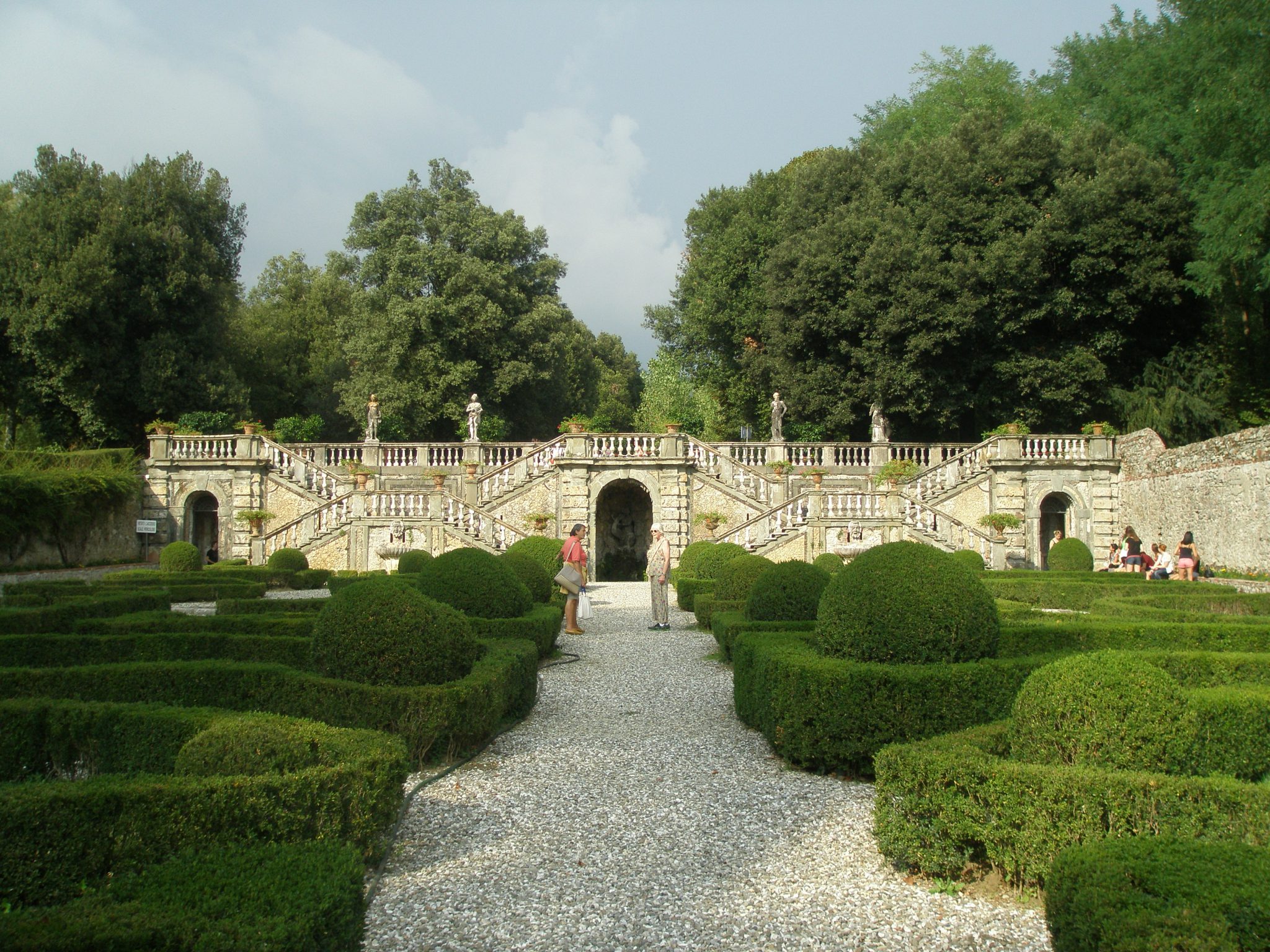
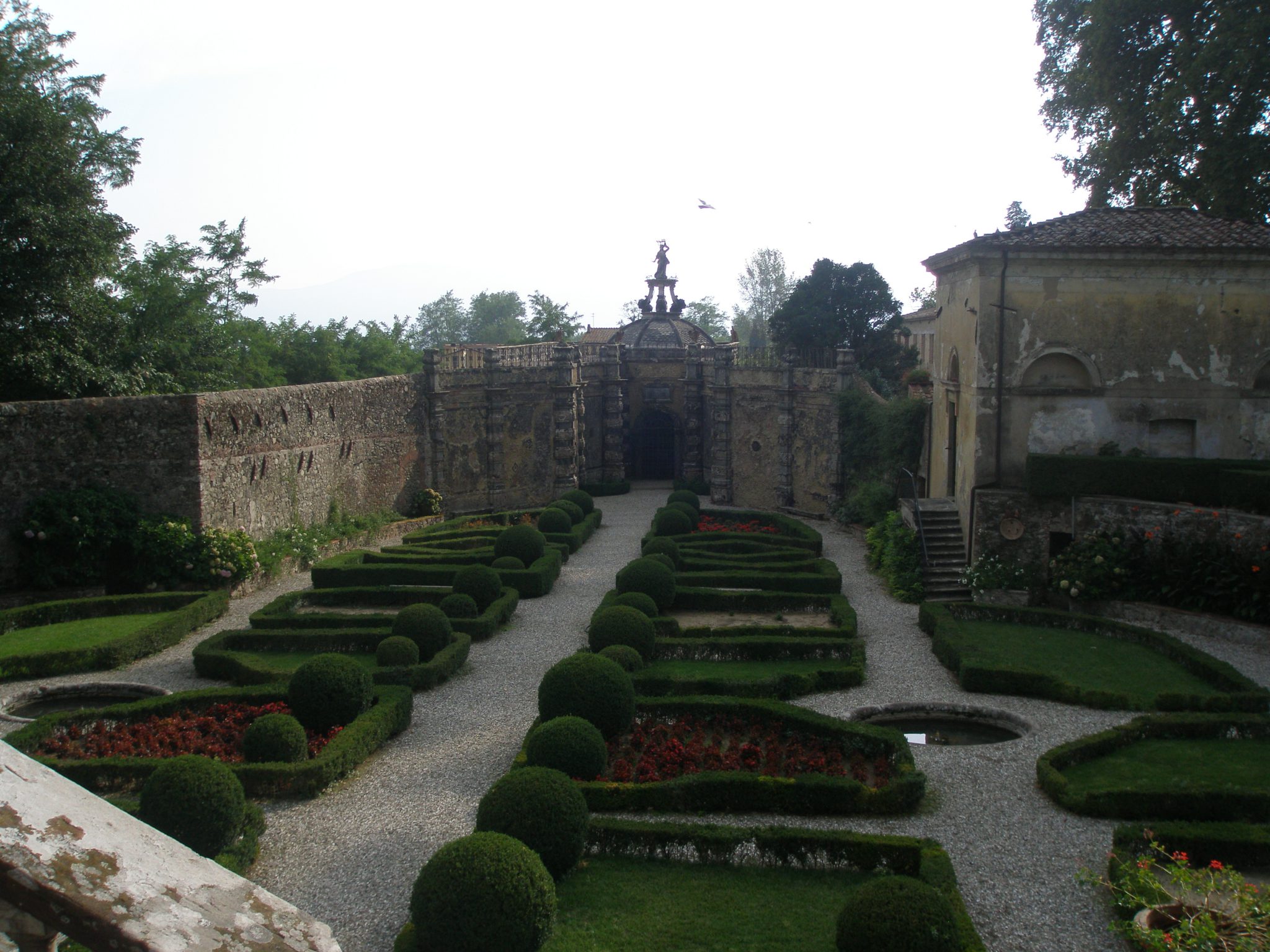
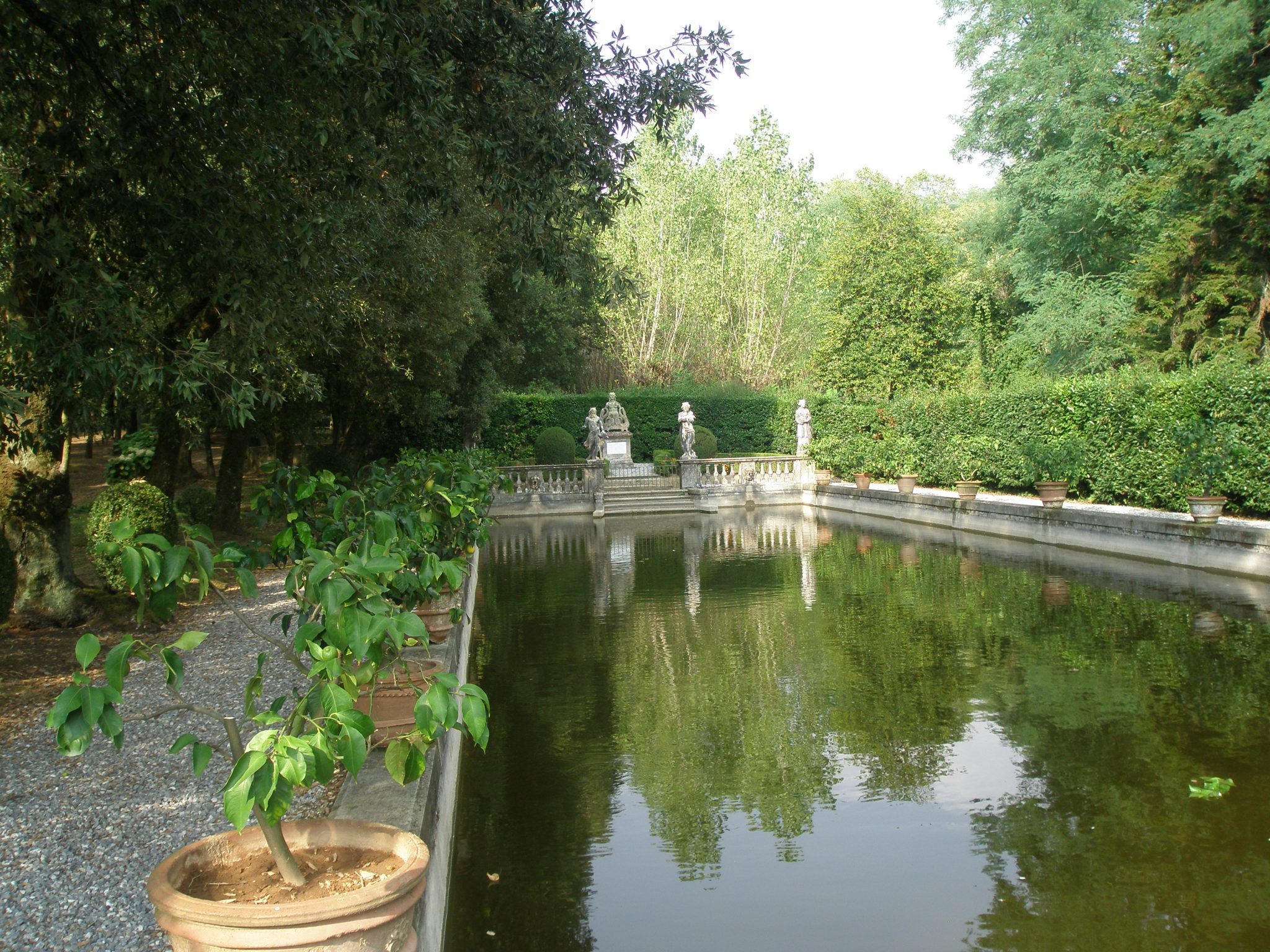
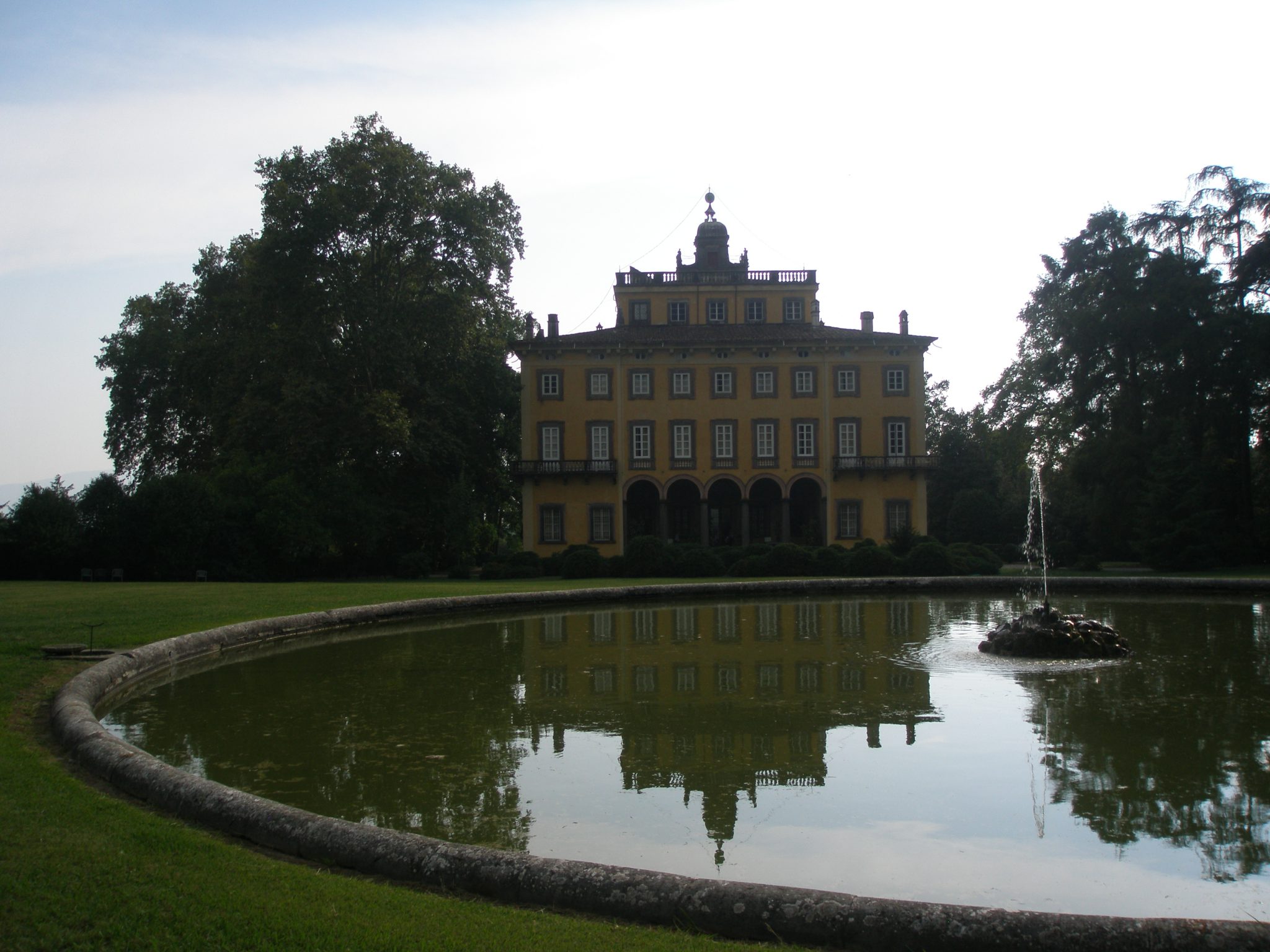
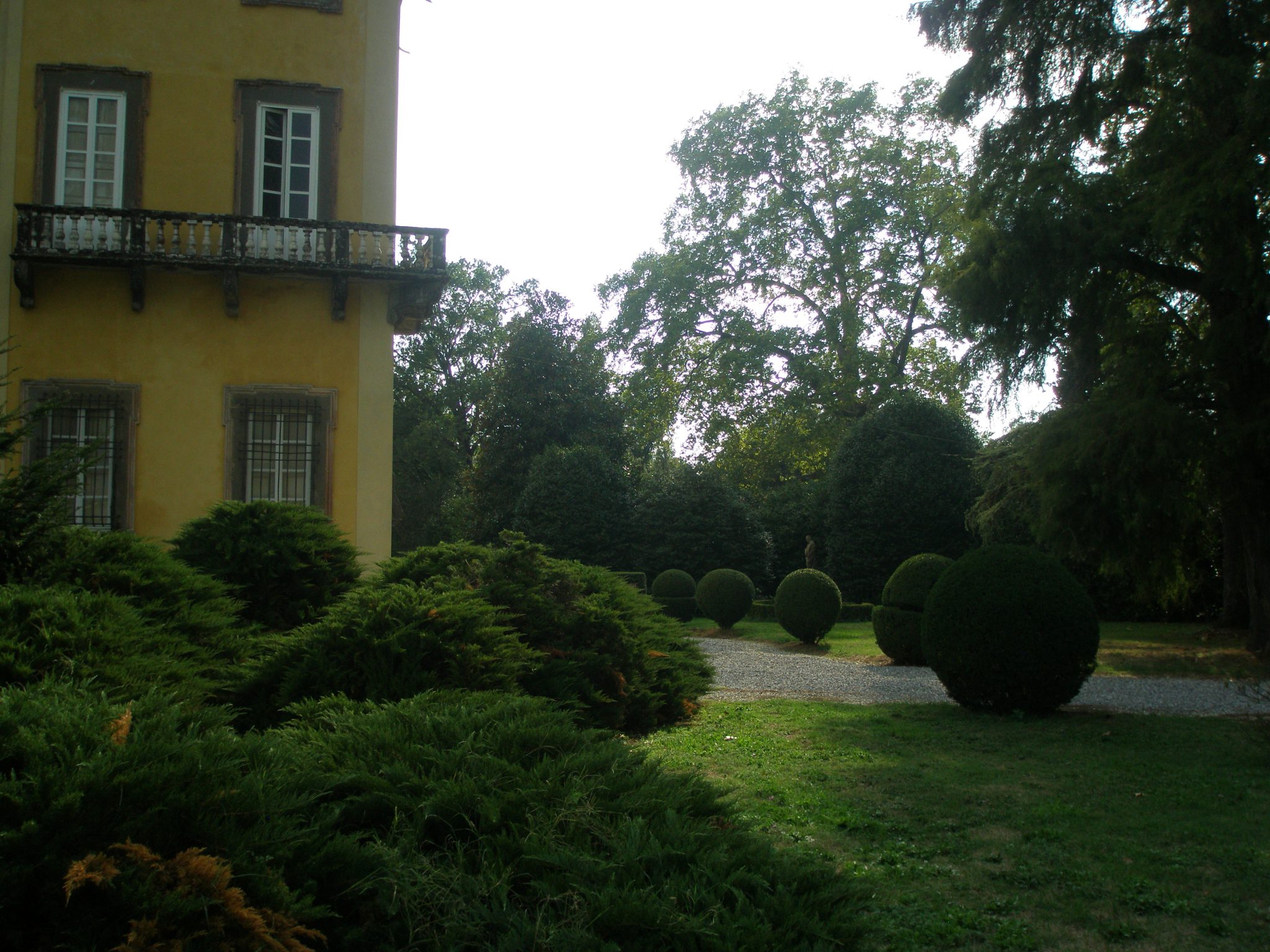
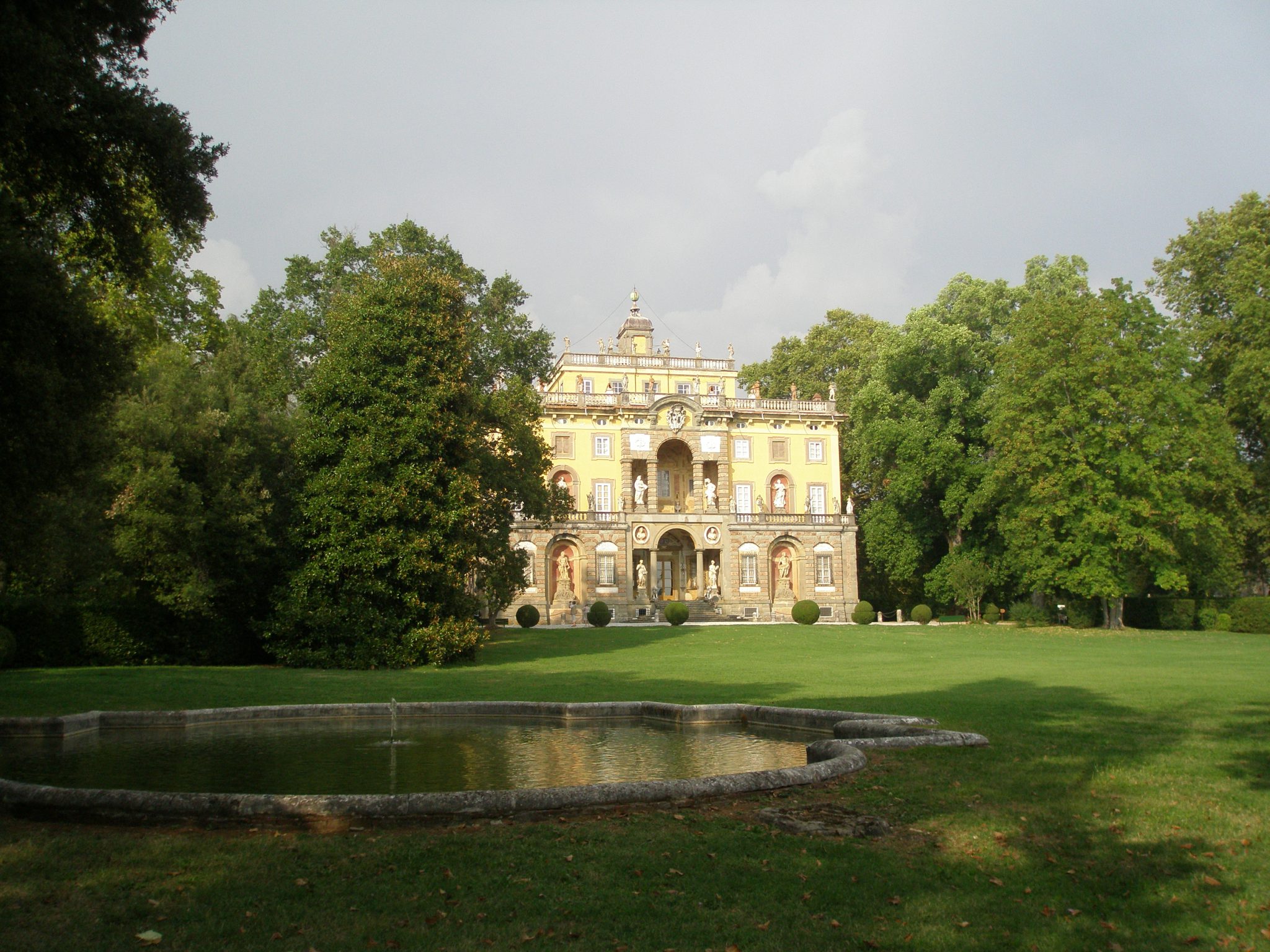
As afternoon’s light faded, and we took our leave, Elena whispered to me:
“Nan, see that gentleman who took your 7 Euros at the gate? He’s Il Principino …the heir!” I looked back at the quiet fellow inside the little brown hut by the imposing gates, and then at the huge pooch lounging on the front drive, and thought, “Yup…it’s as simple as that…a man and his dog. This place IS a home.”
NEXT: I fly back to England for a long weekend in Oxford.
Copyright 2012. Nan Quick–Nan Quick’s Diaries for Armchair Travelers. Unauthorized use and/or duplication of this material without express and written permission from Nan Quick is strictly prohibited.

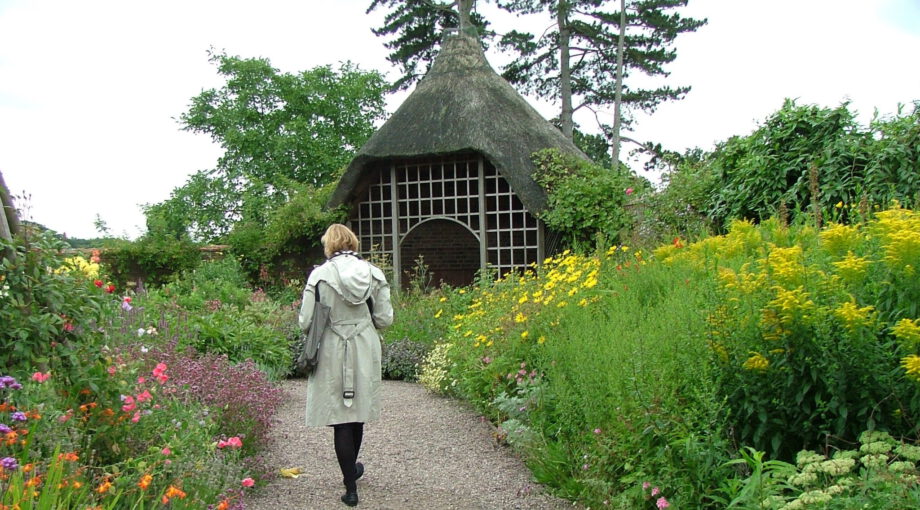

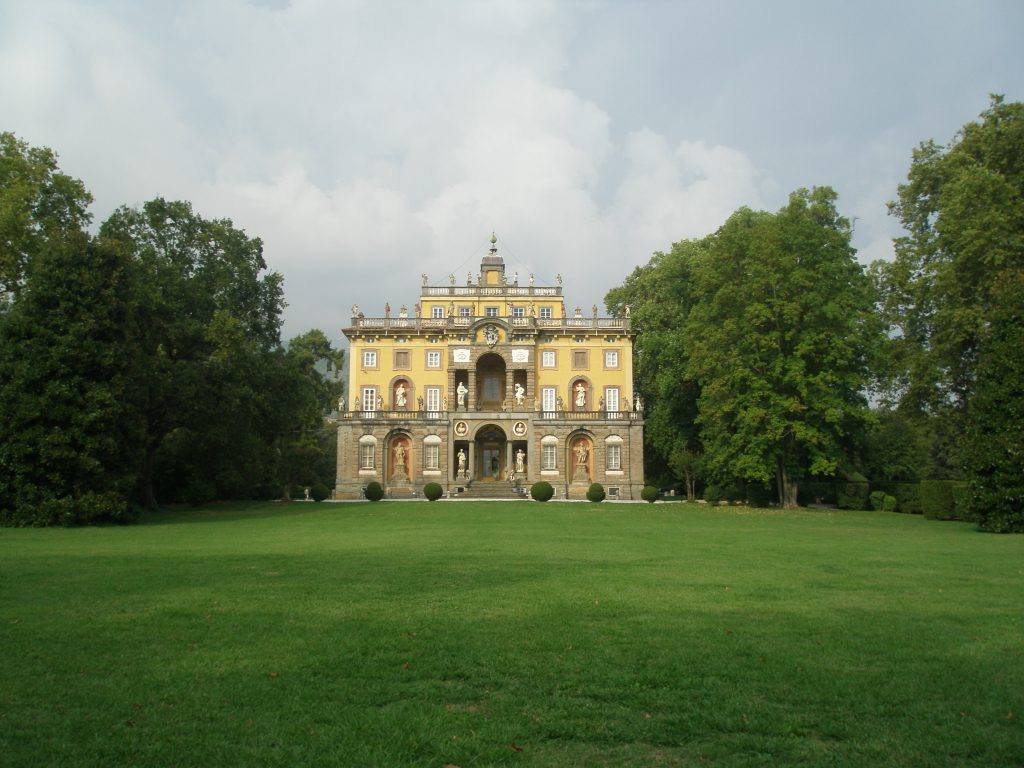
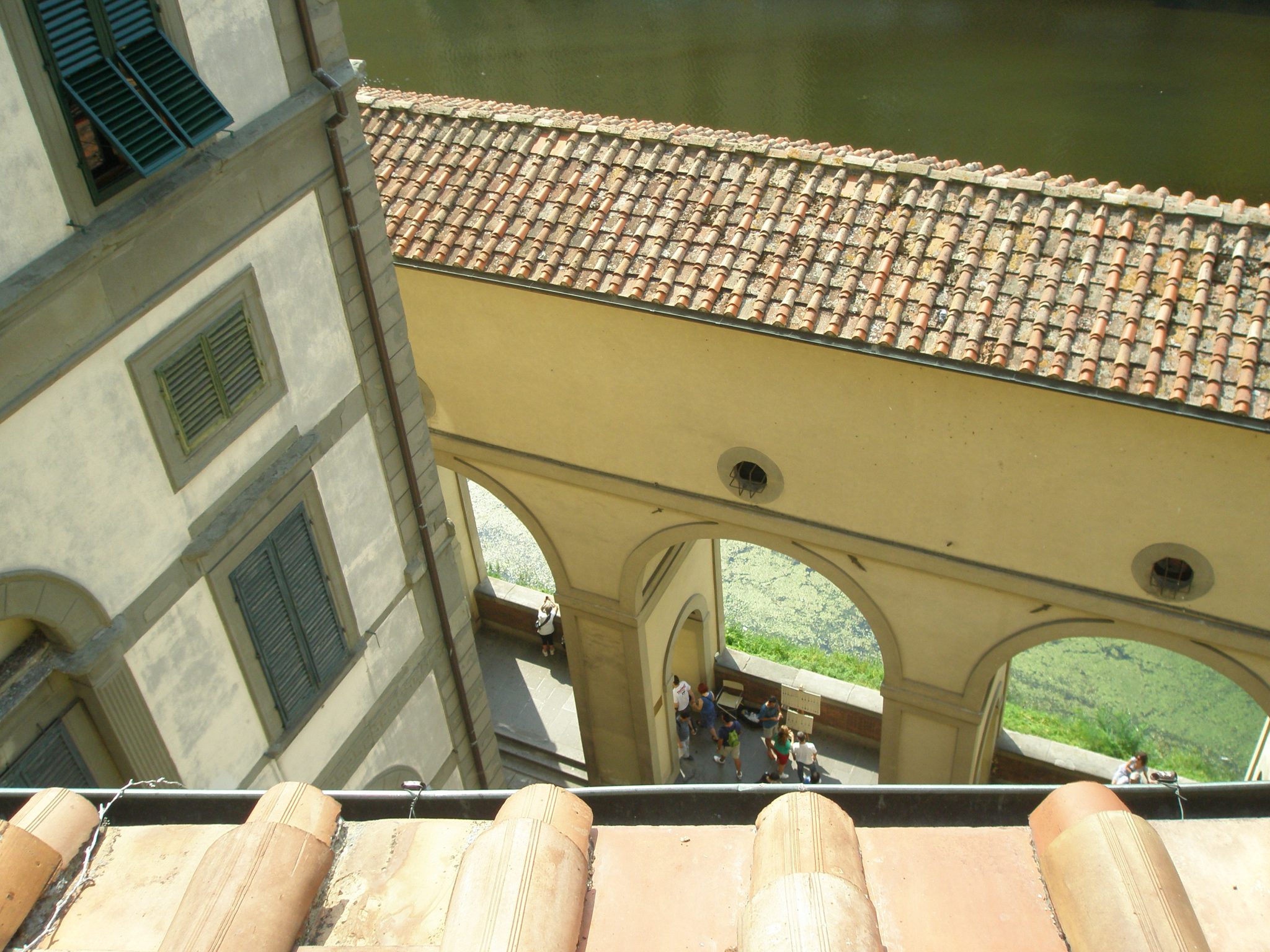
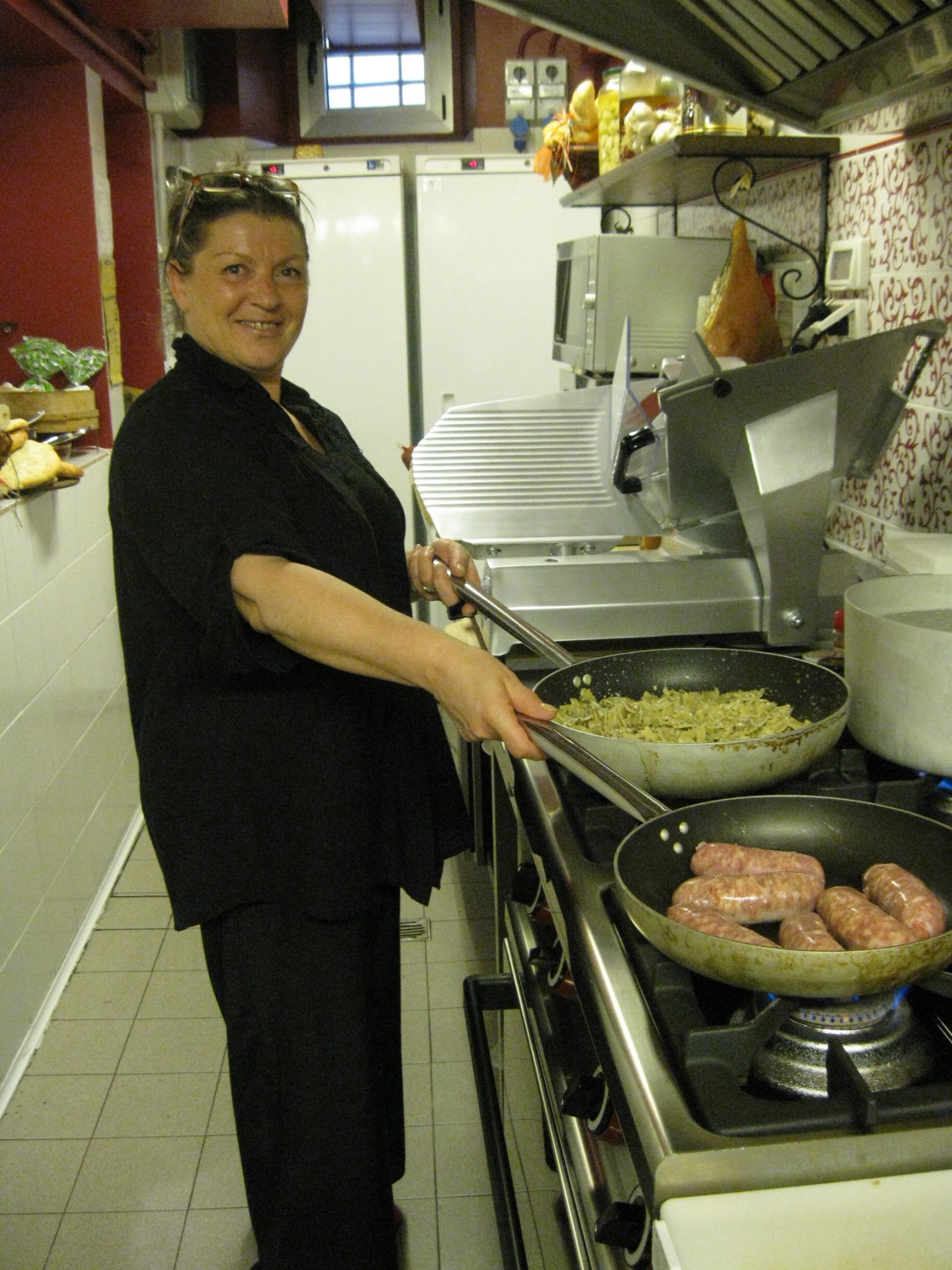
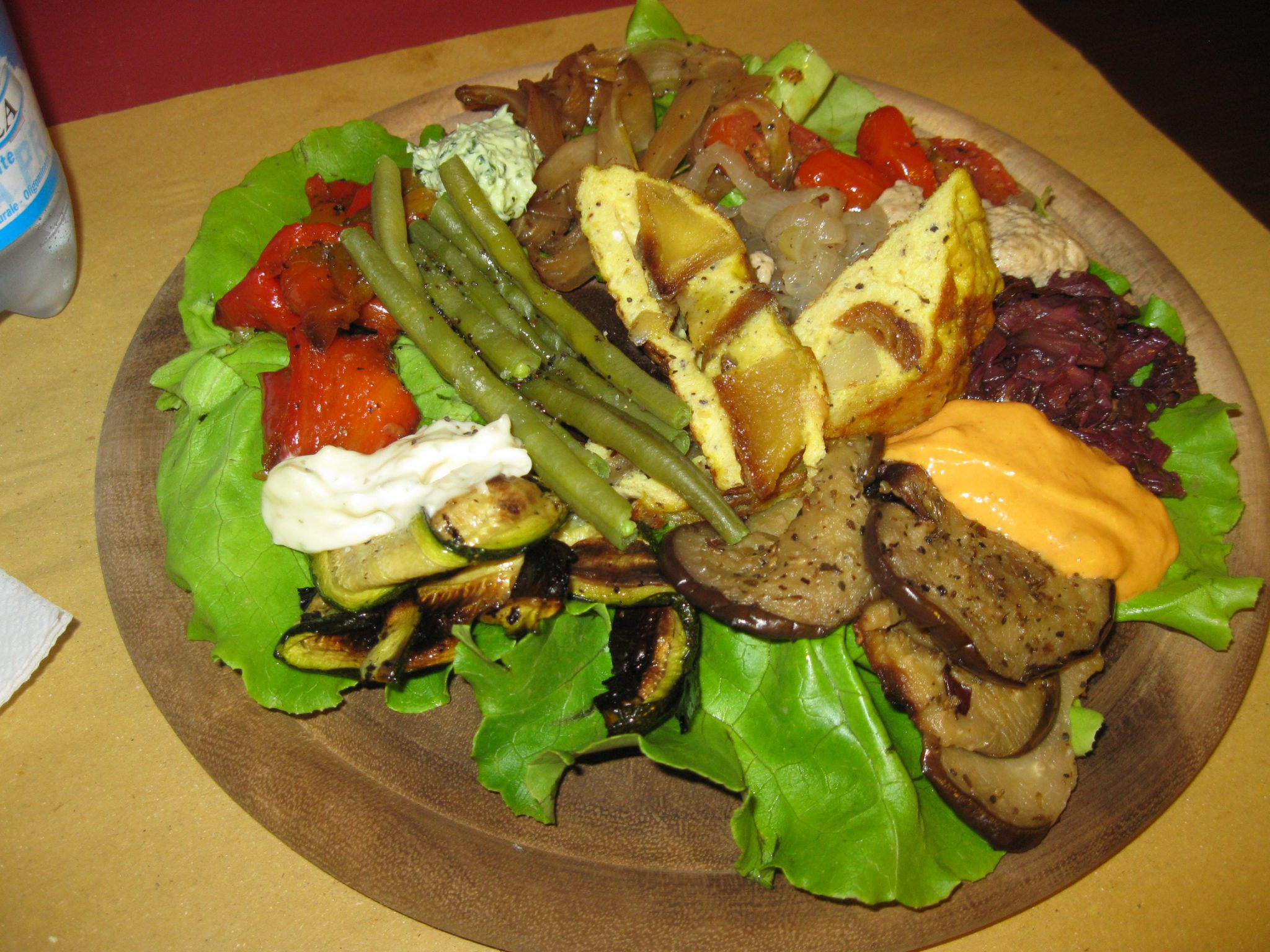
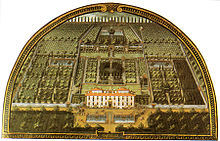
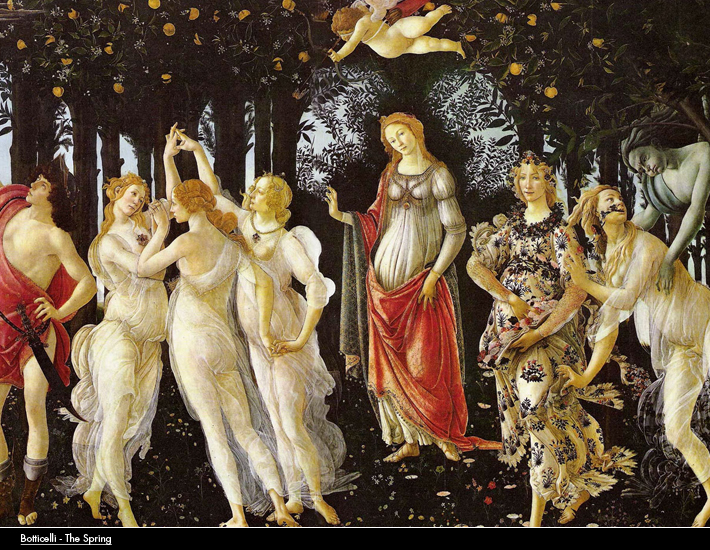
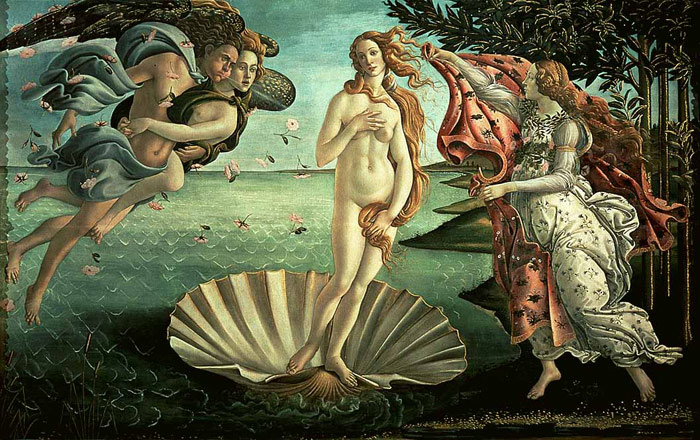
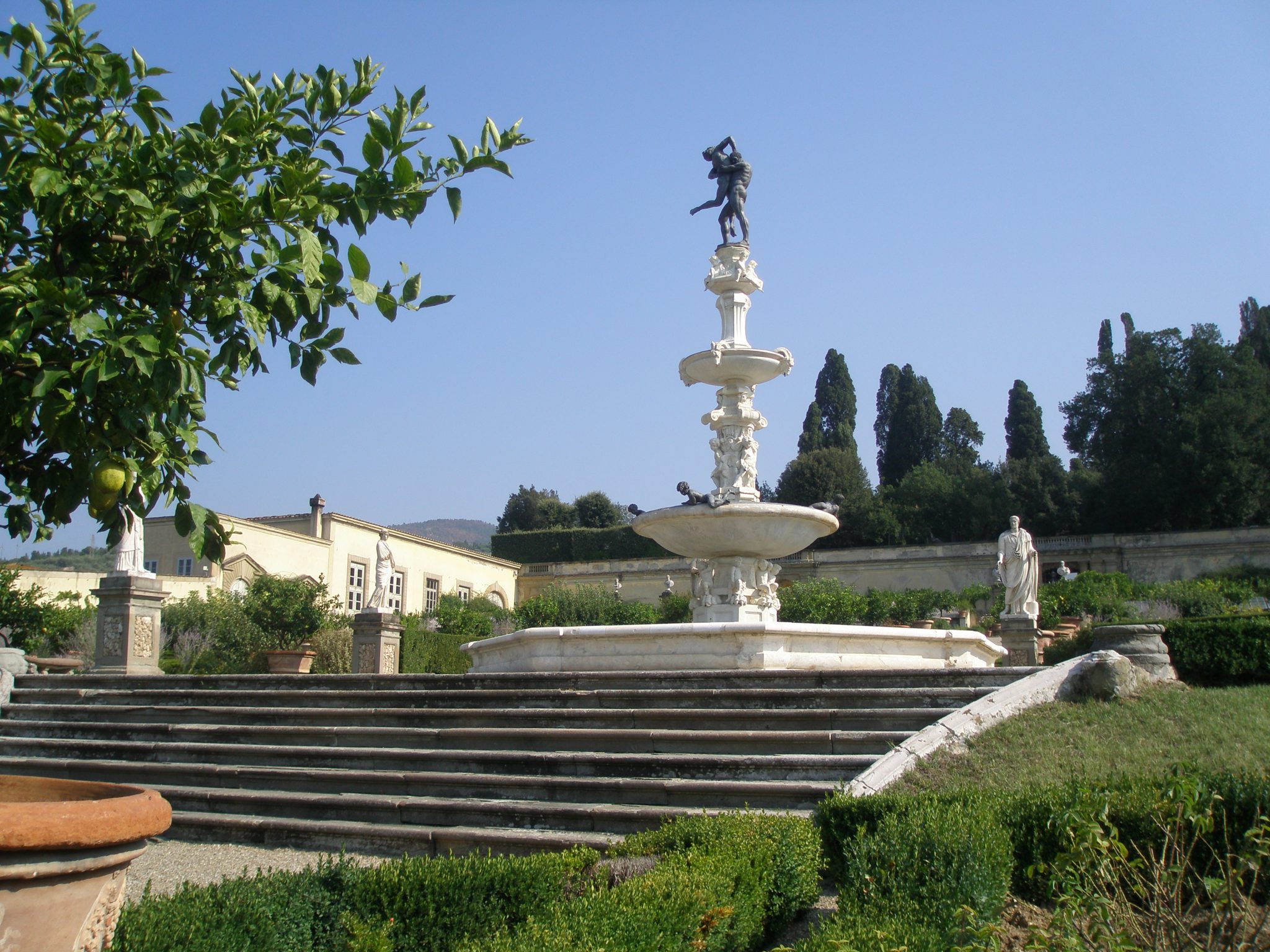
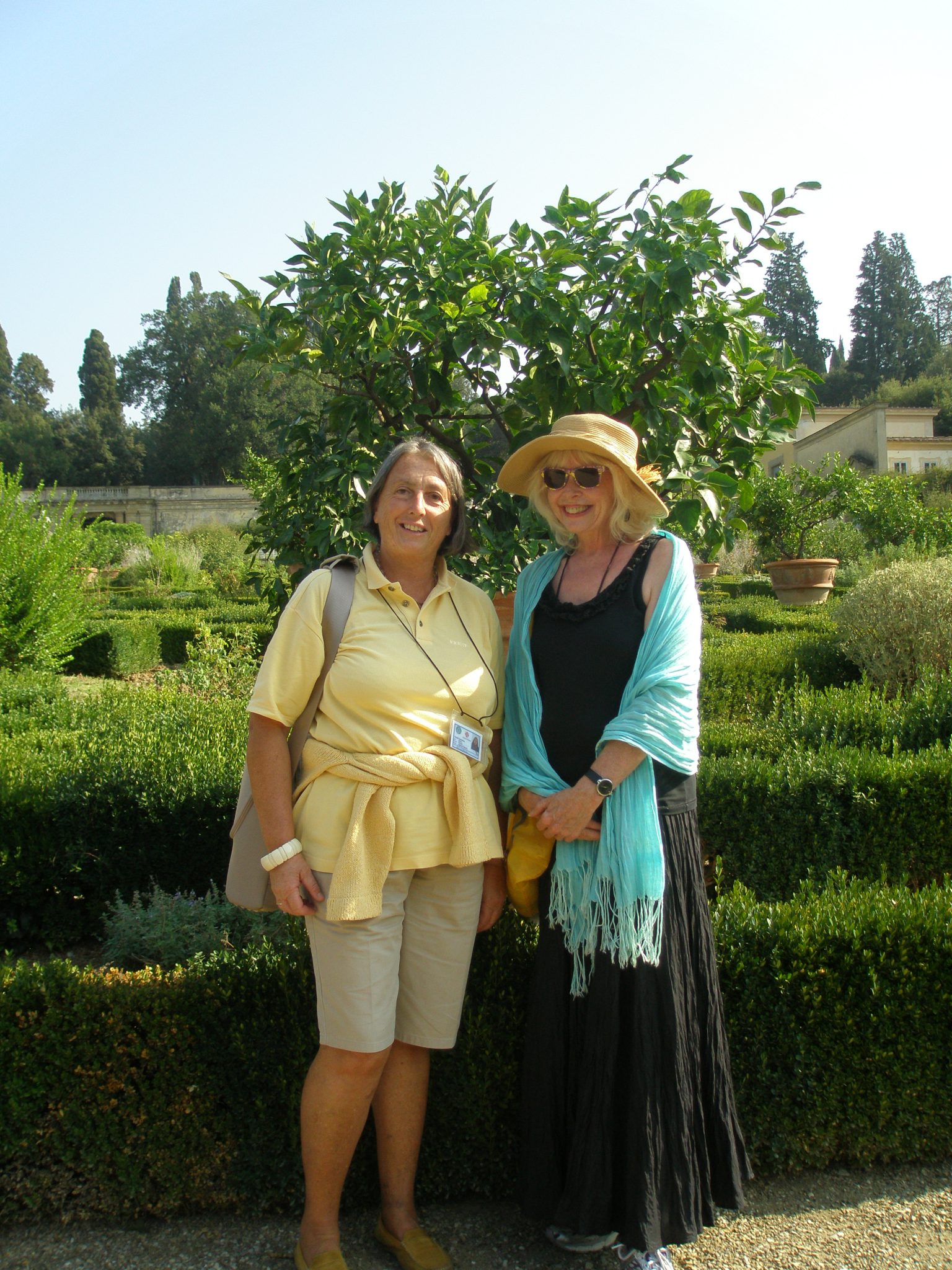
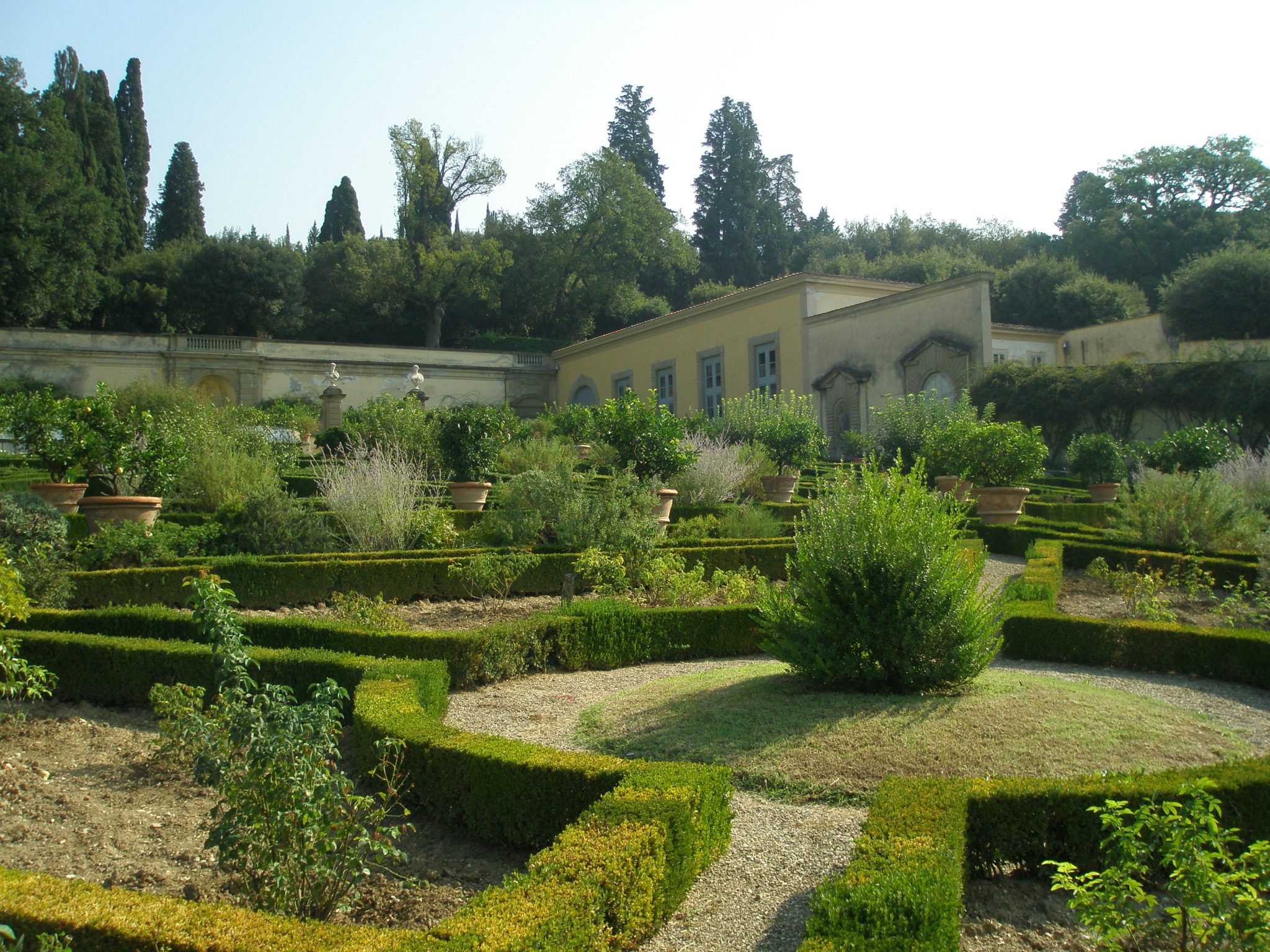
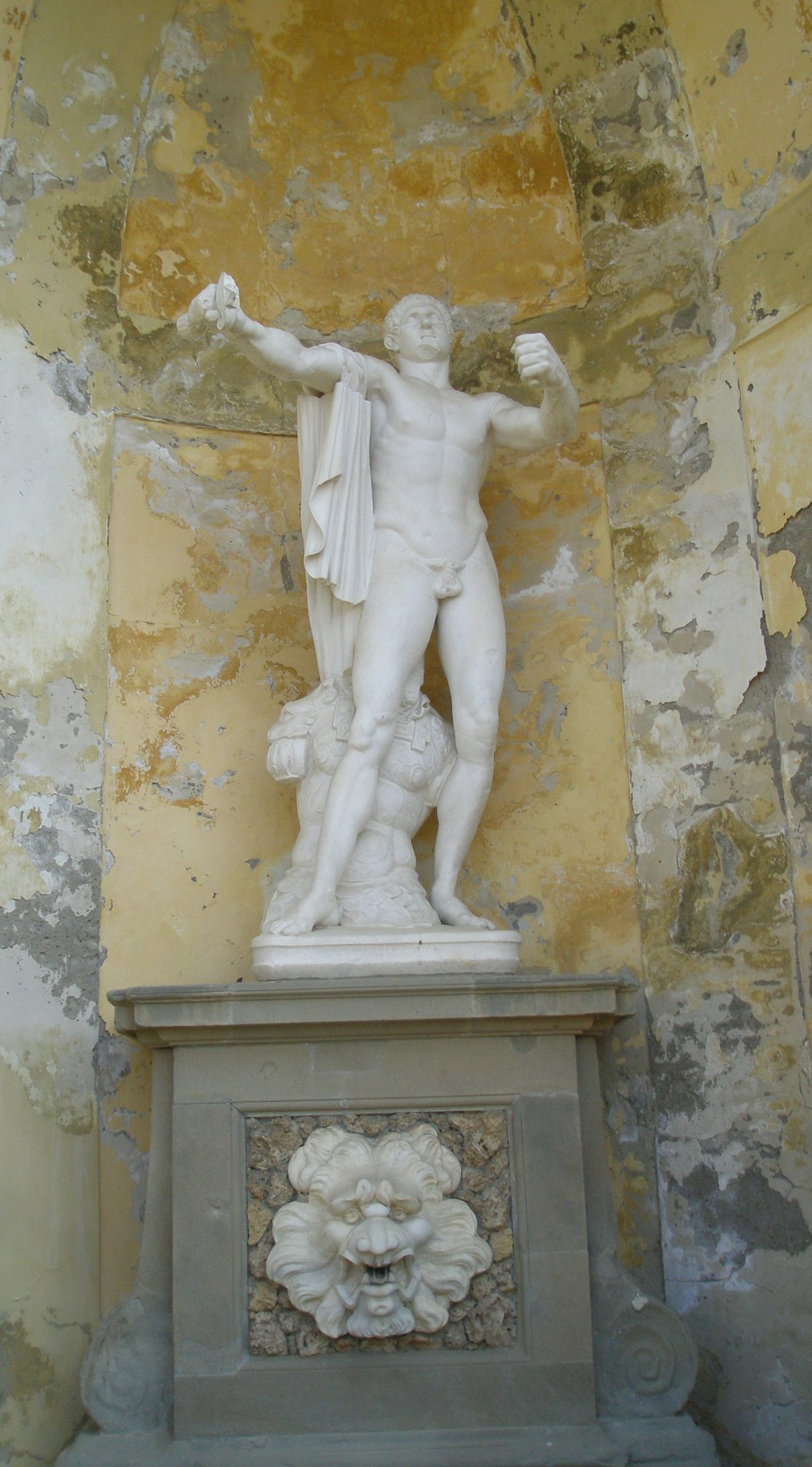
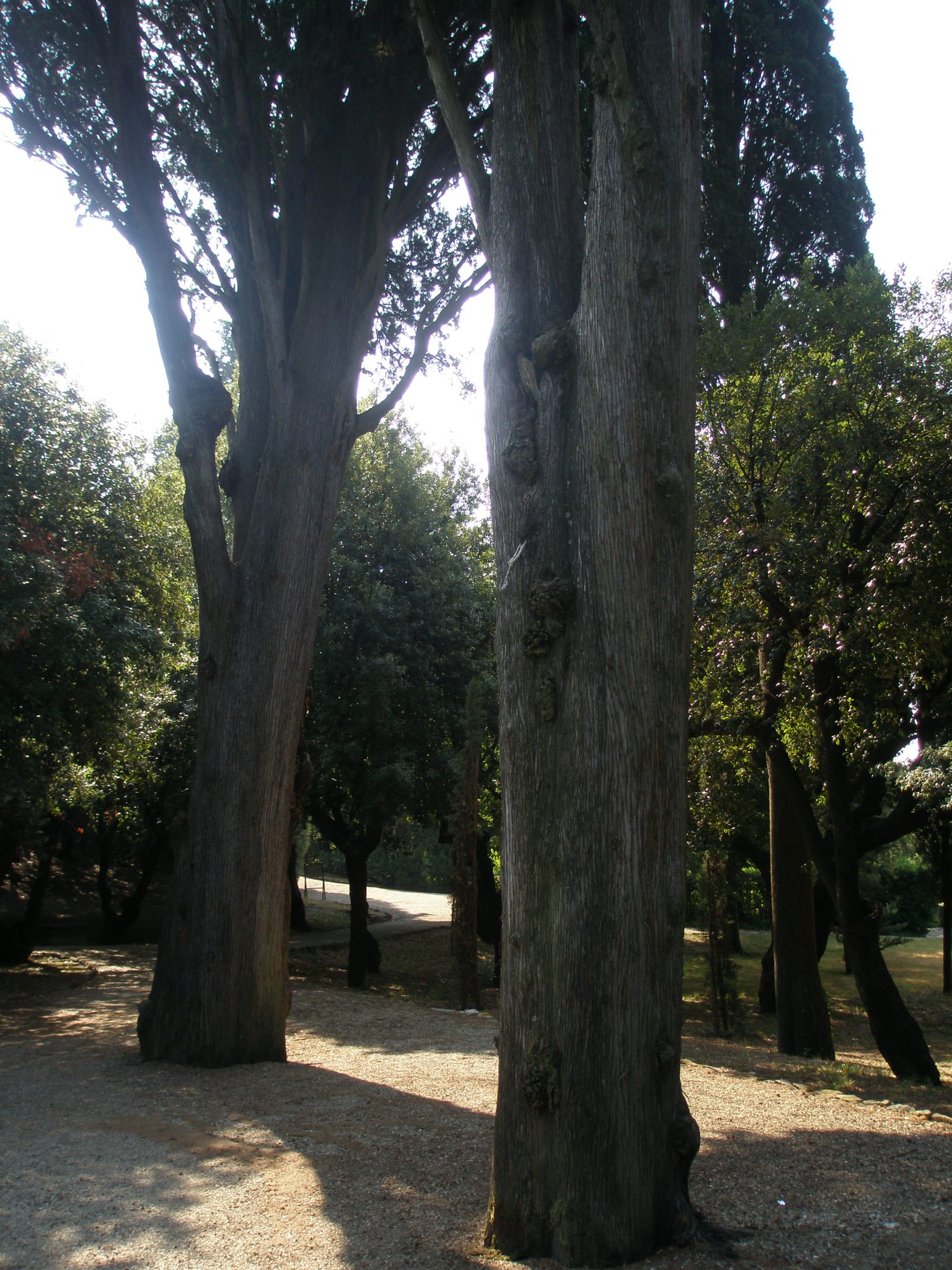
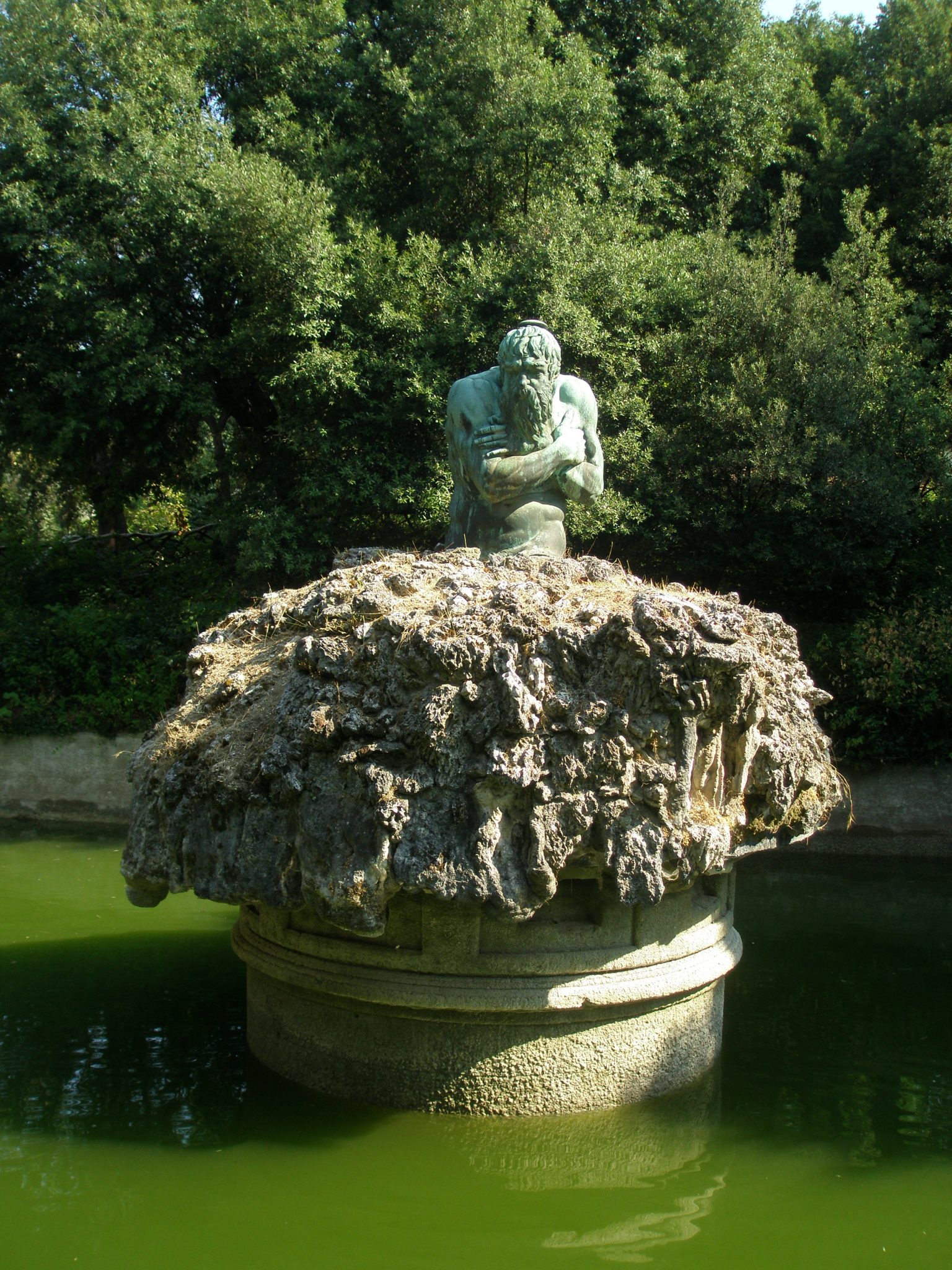
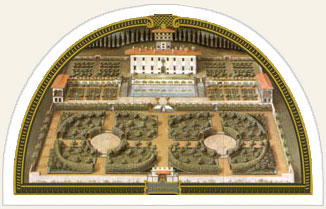
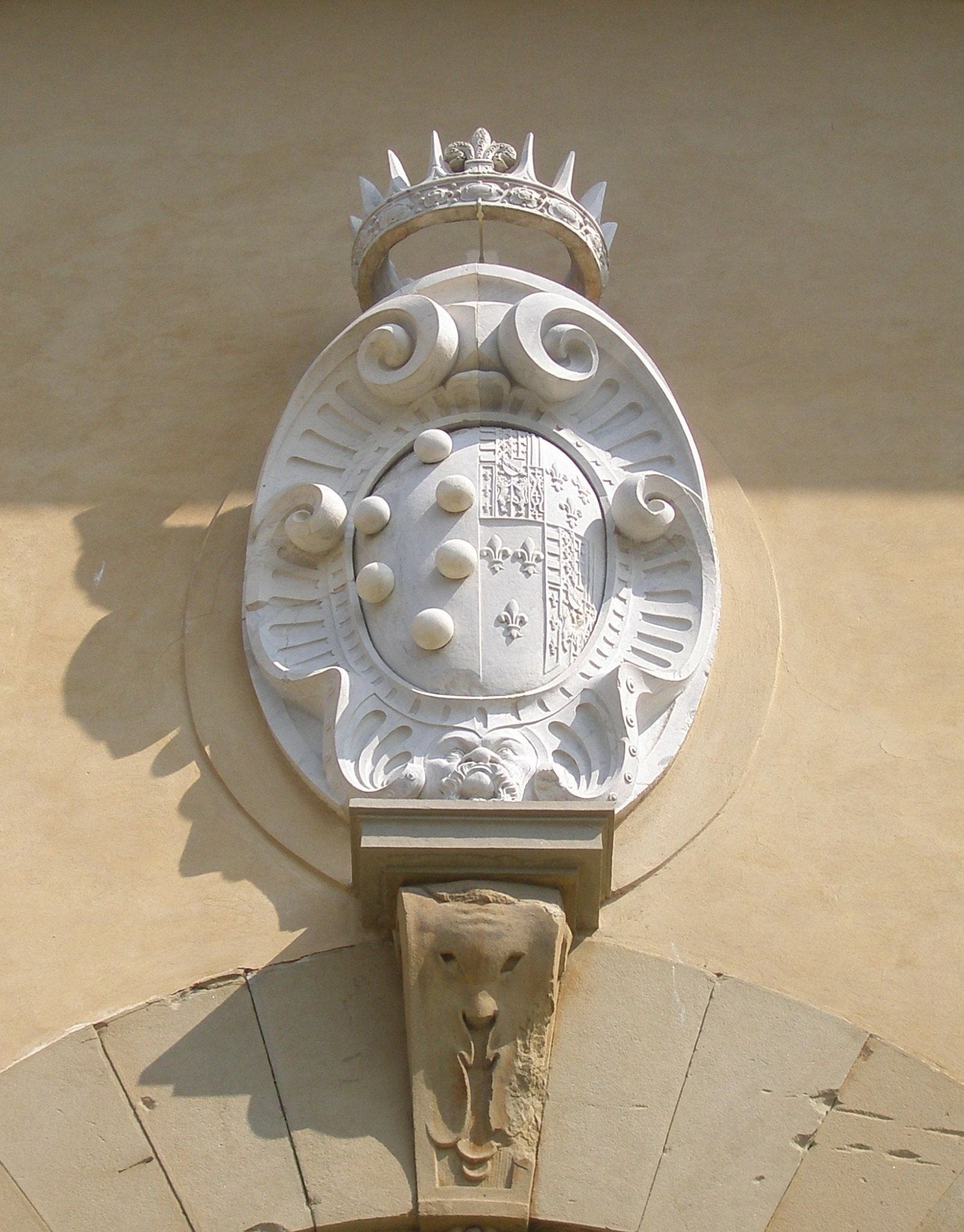
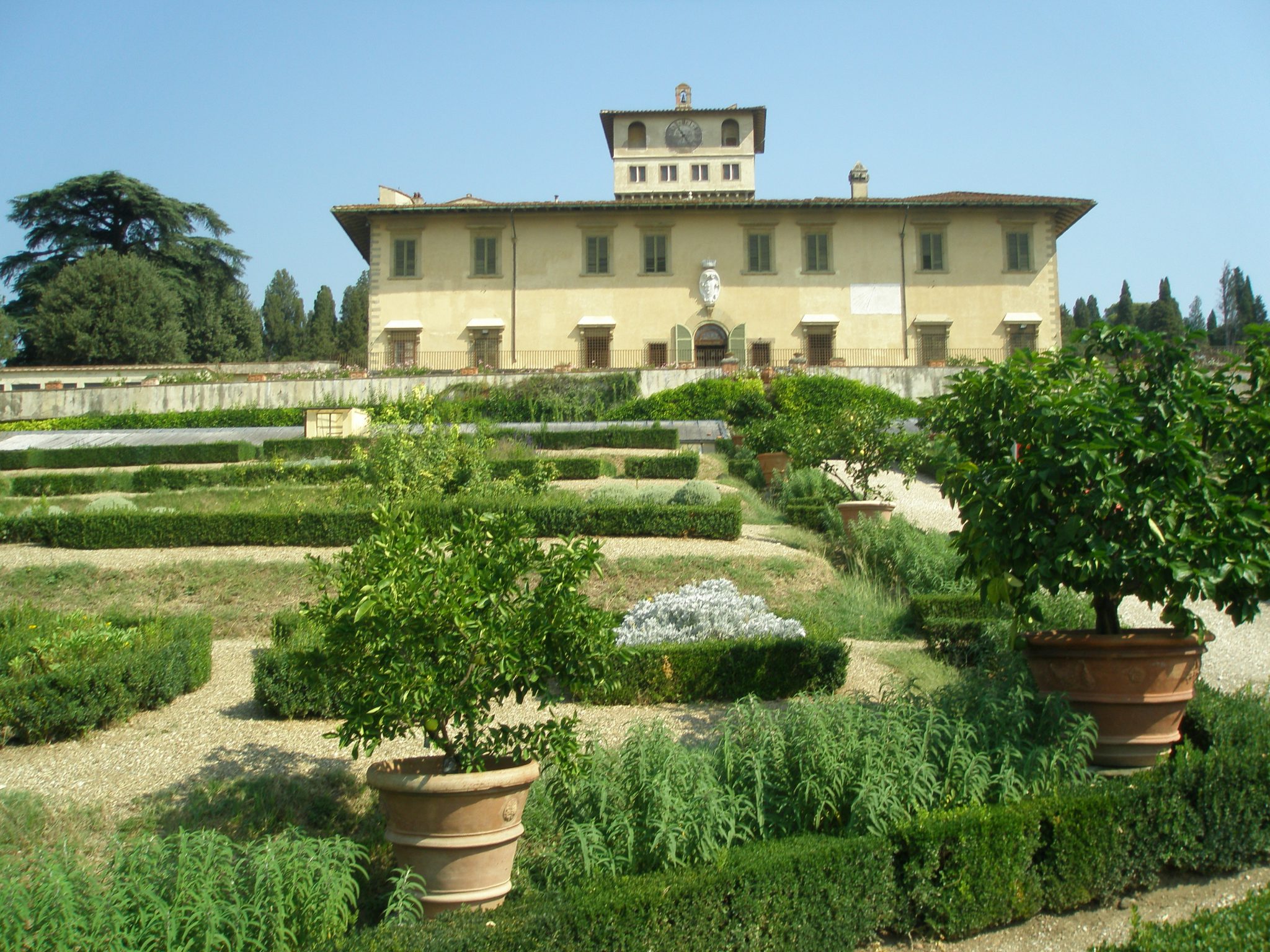
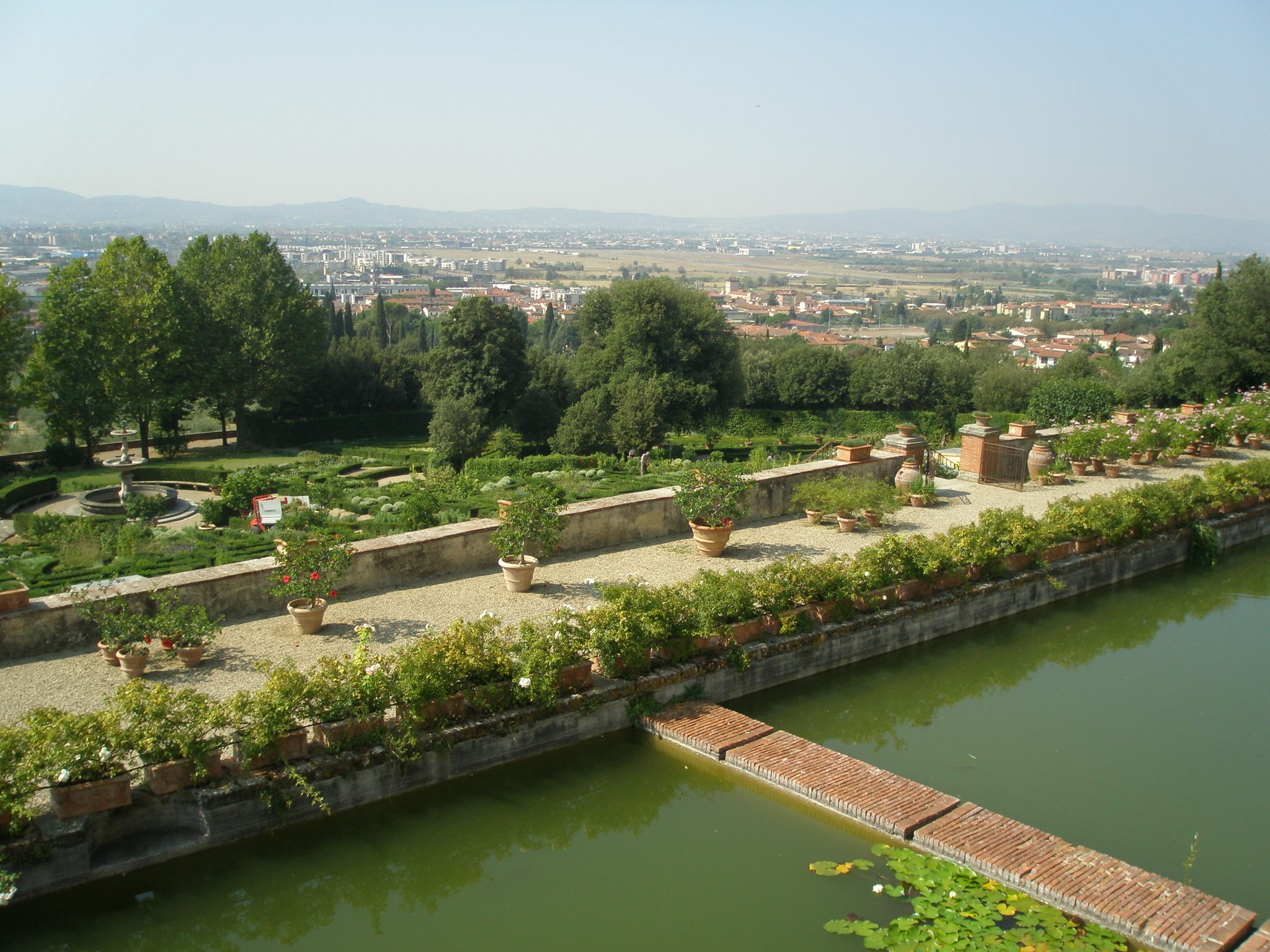
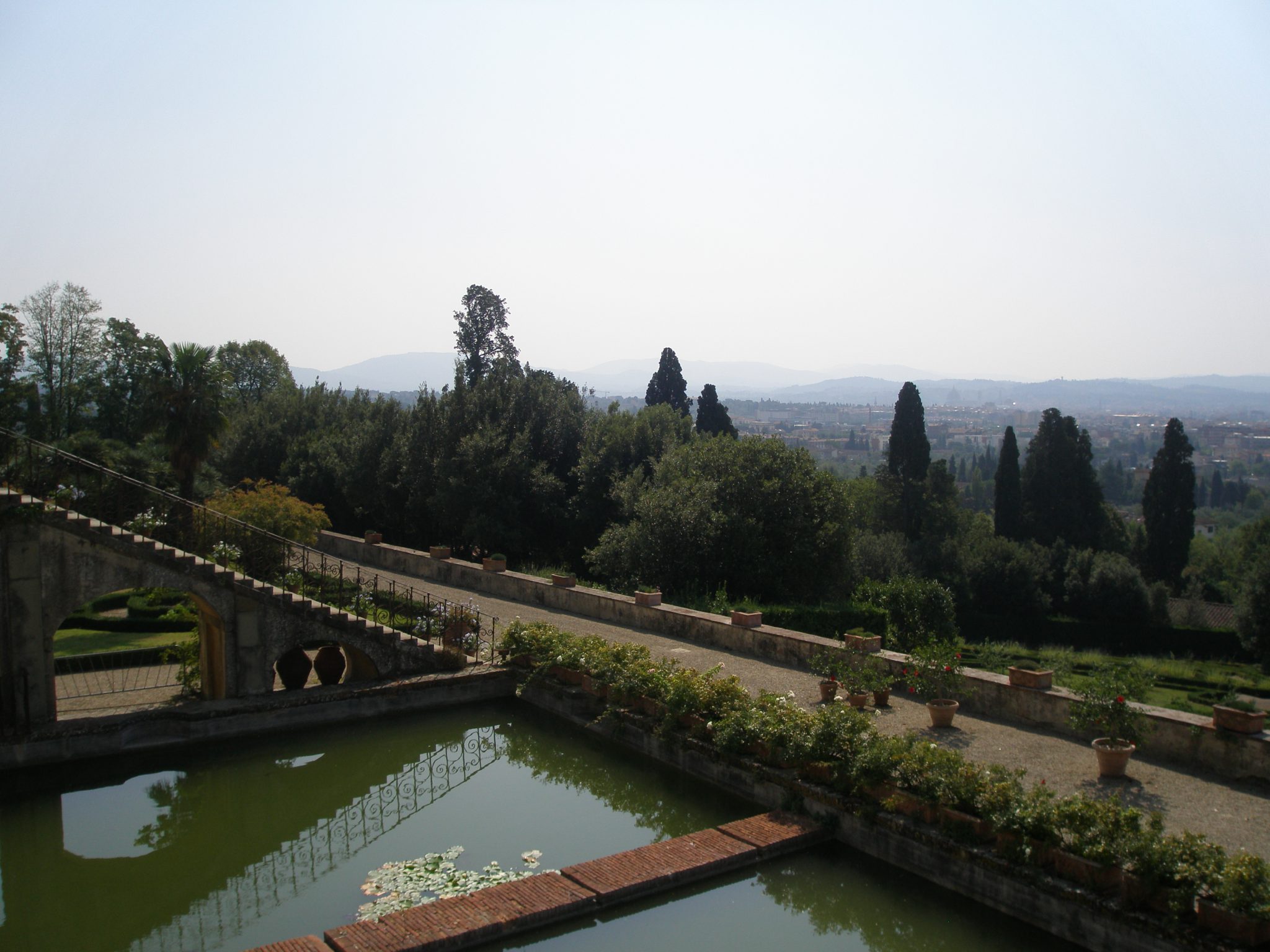
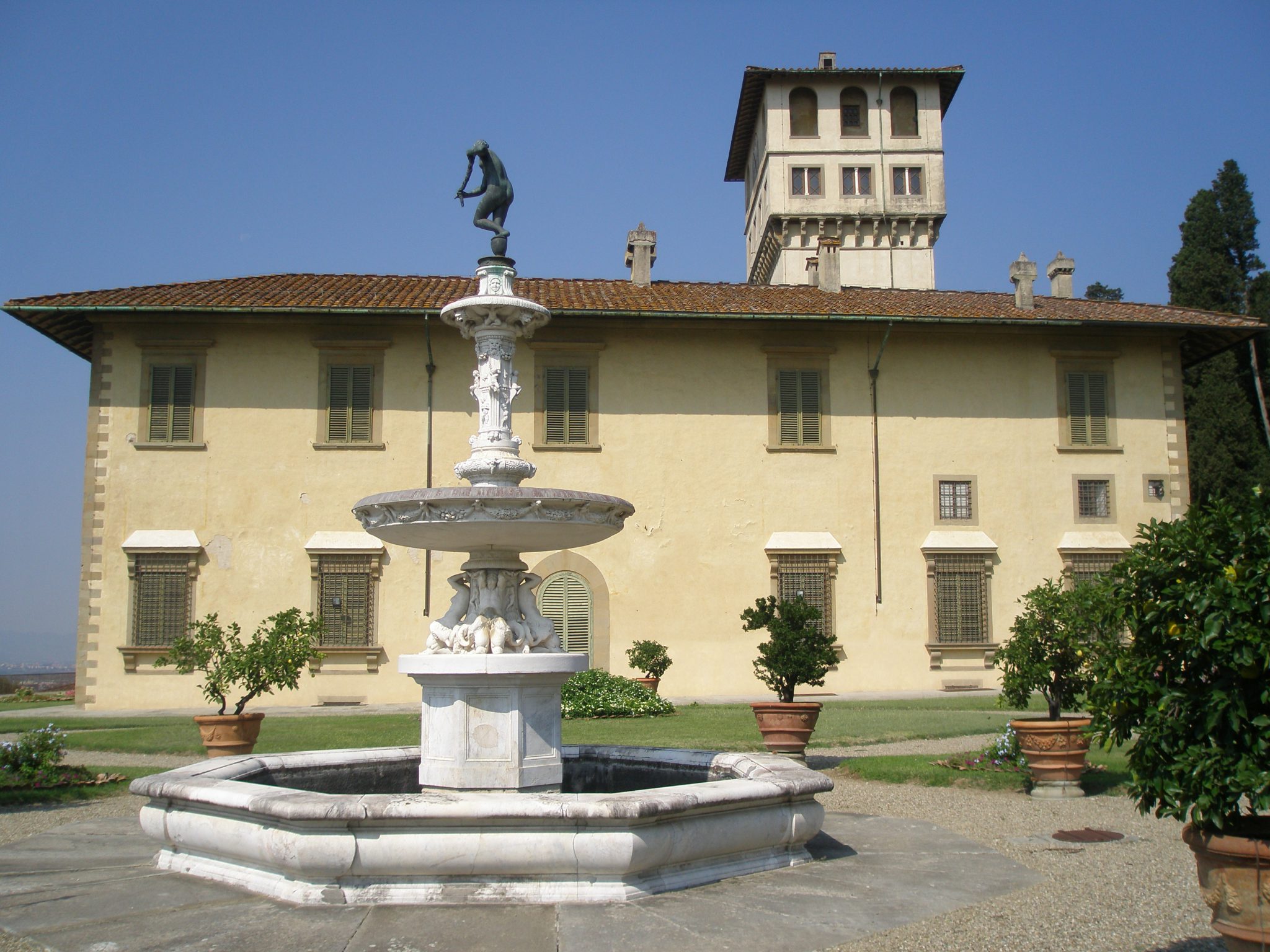
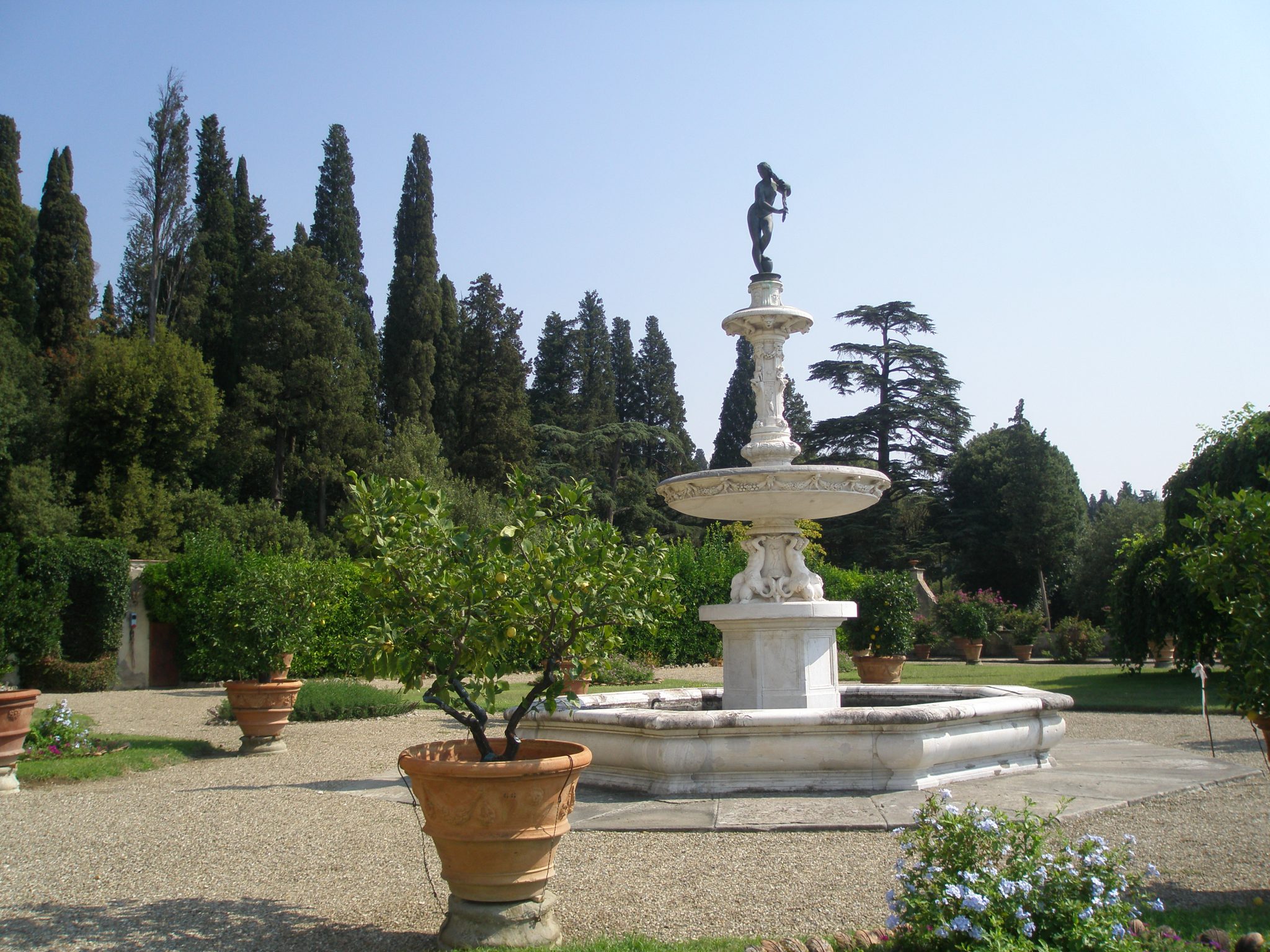
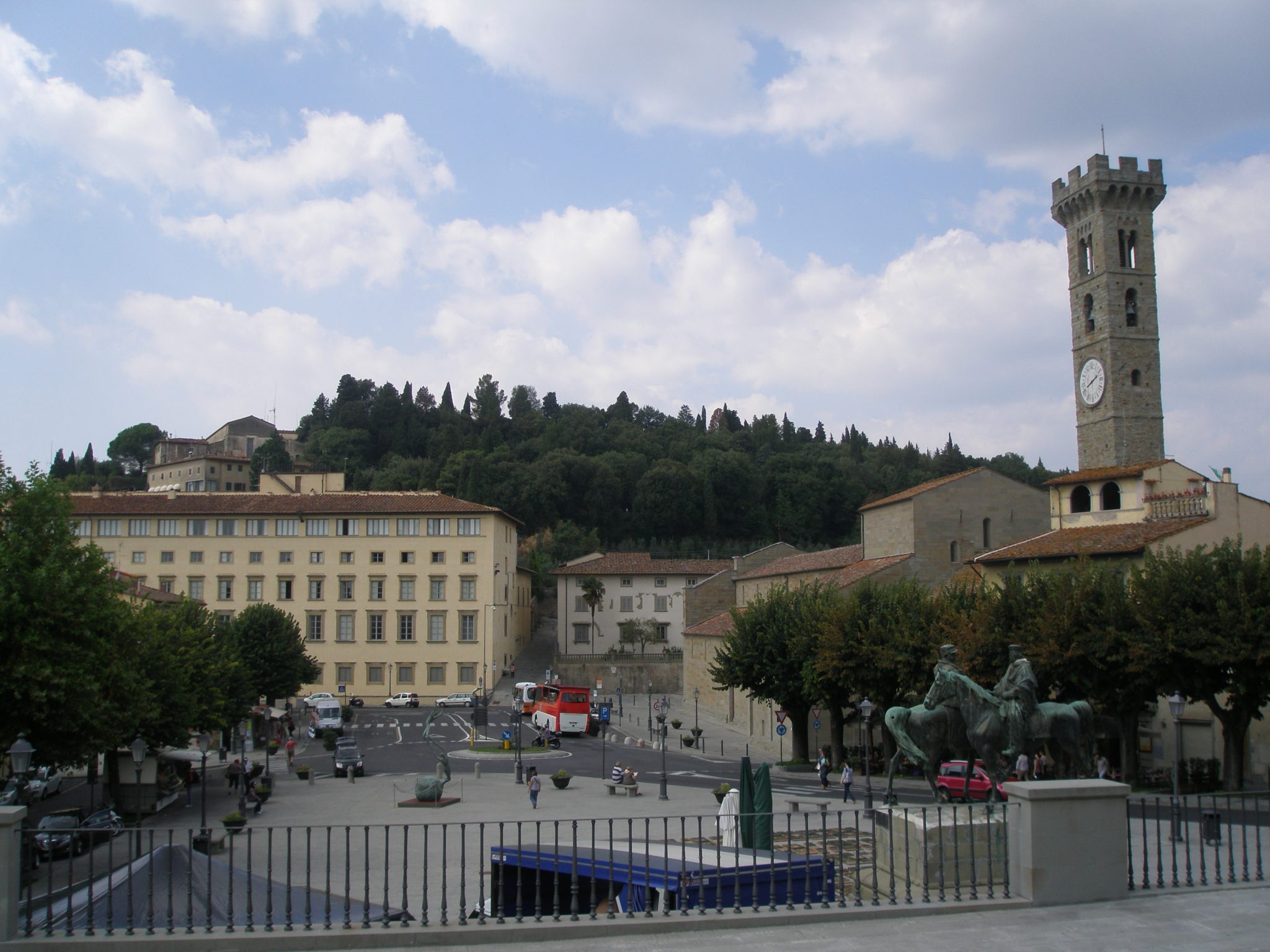
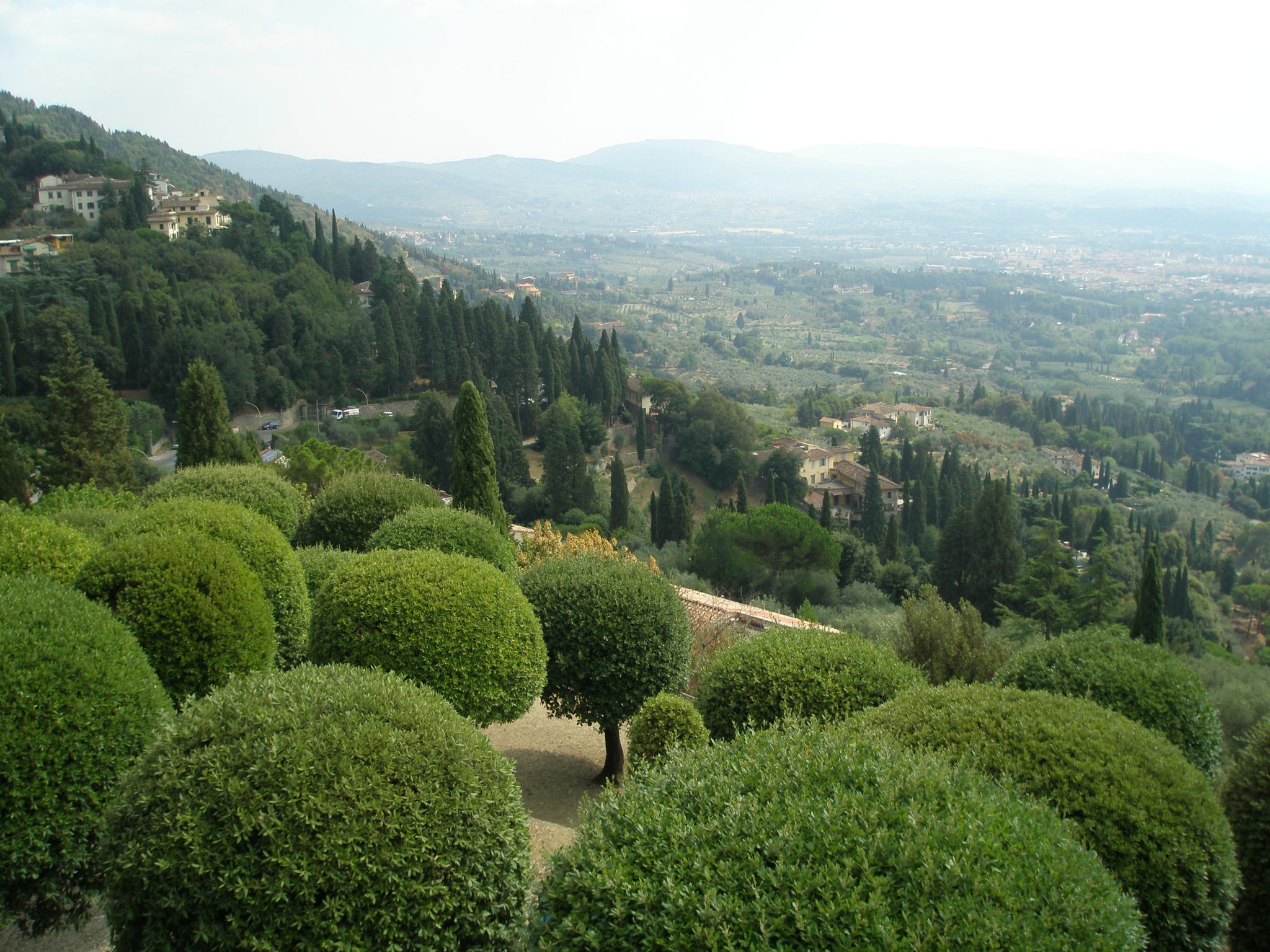
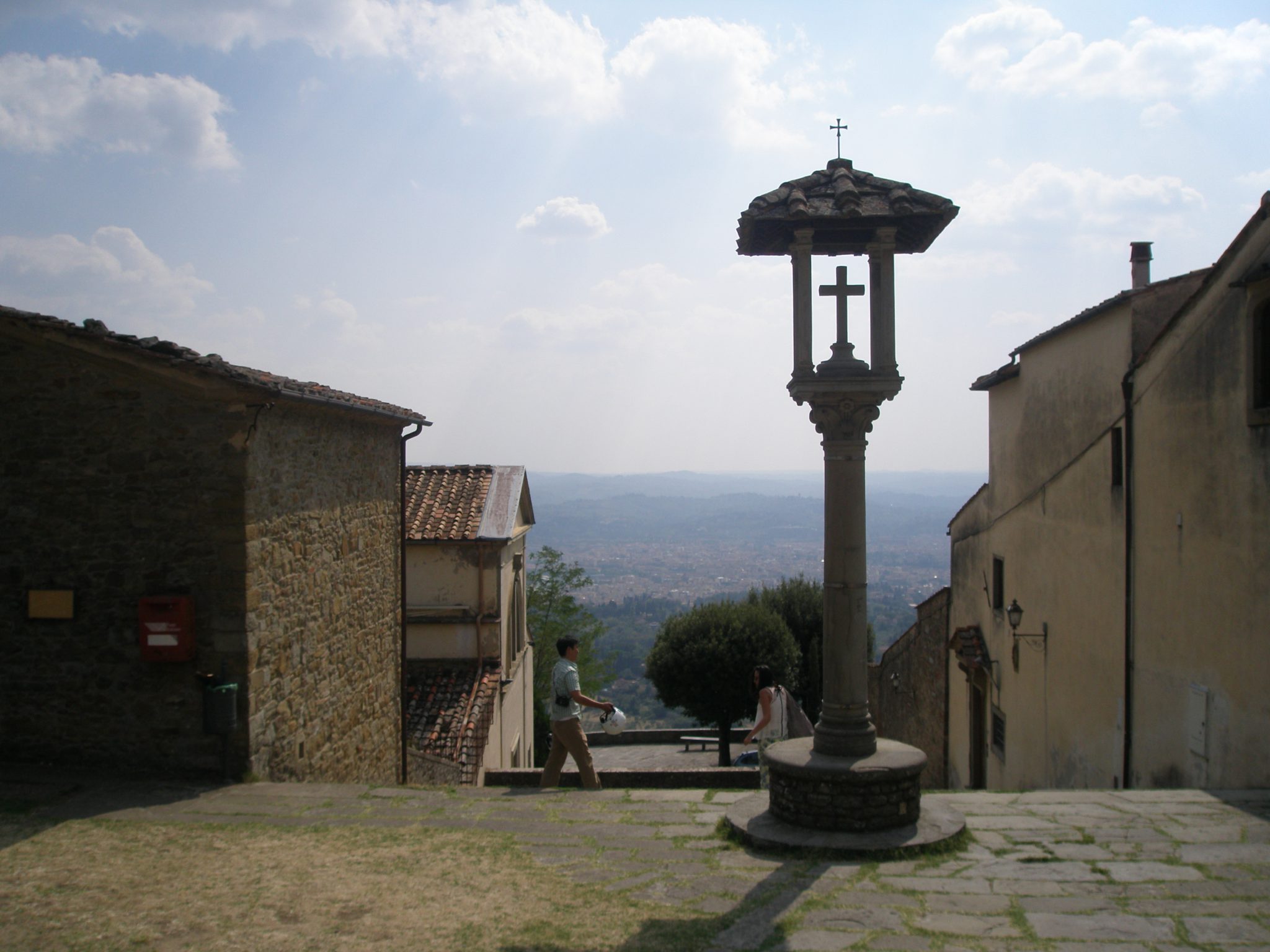
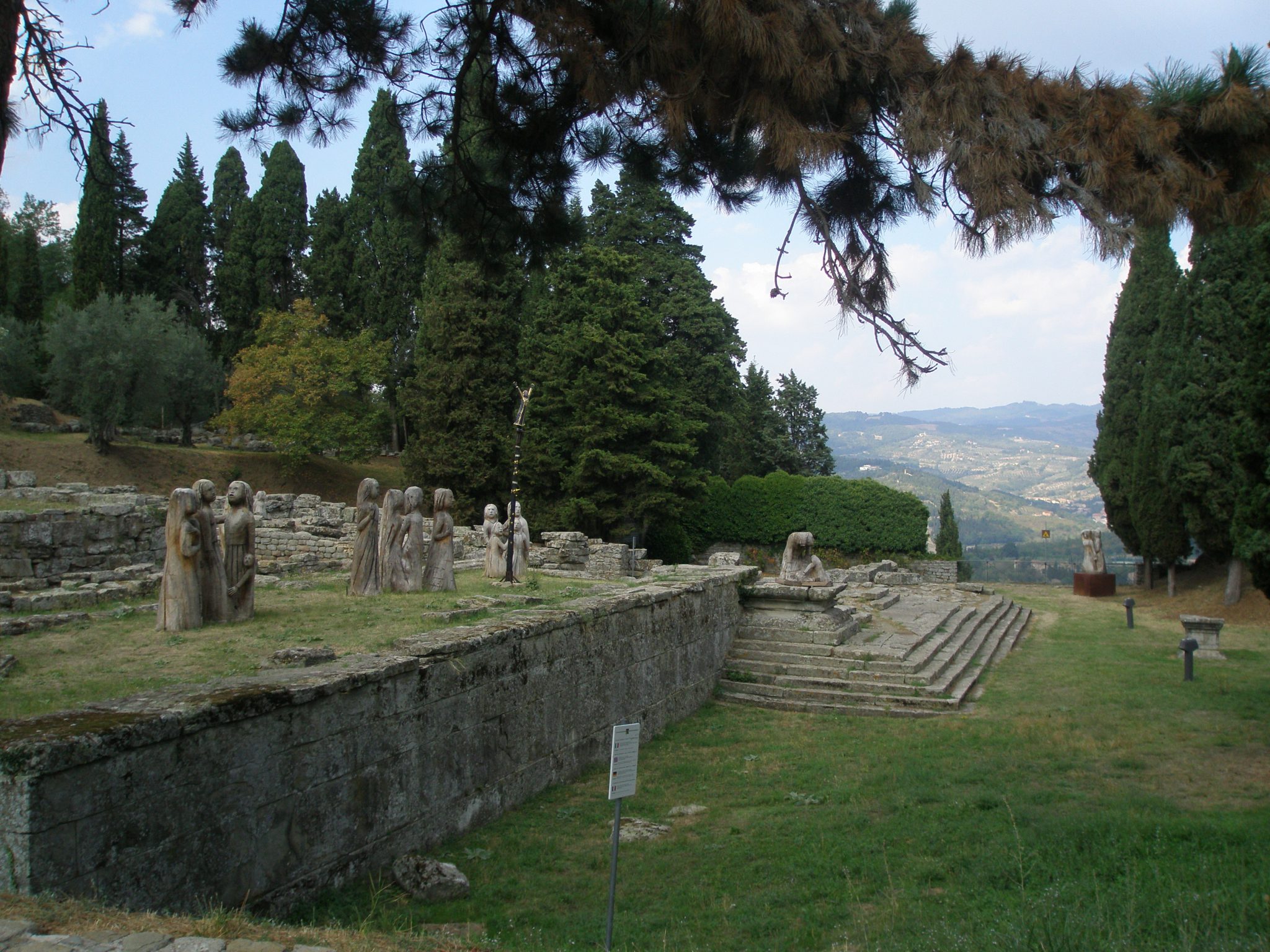
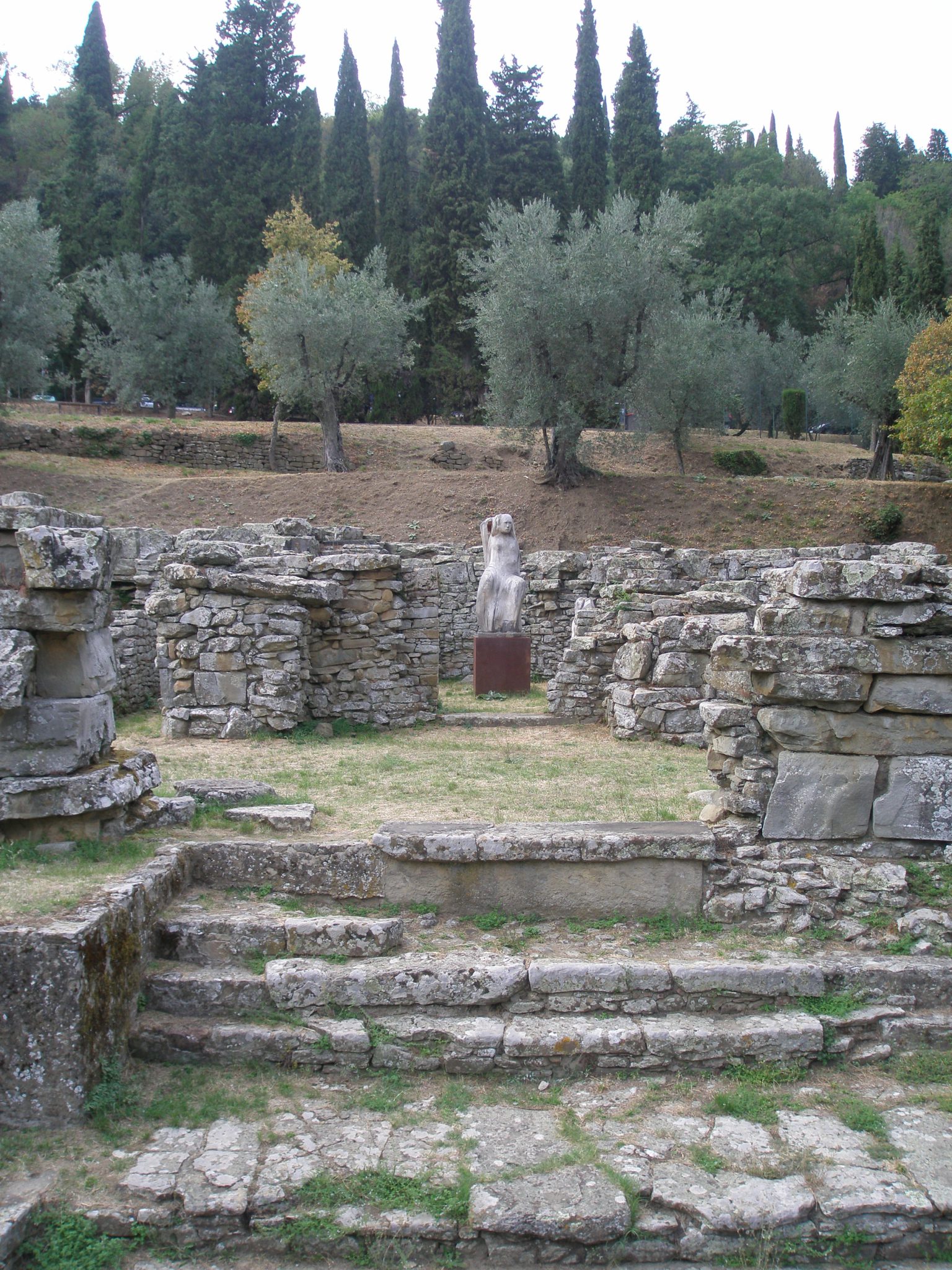
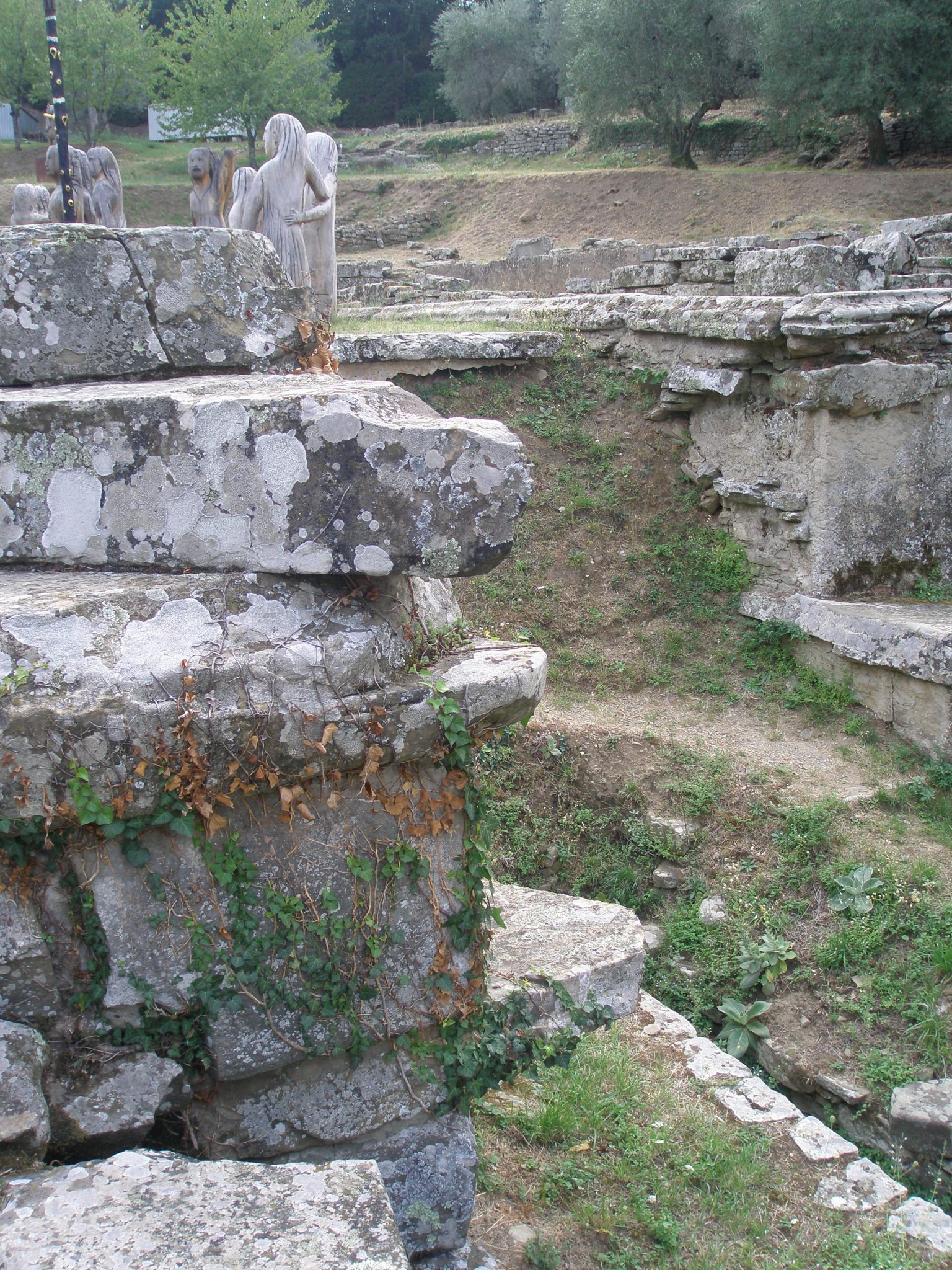
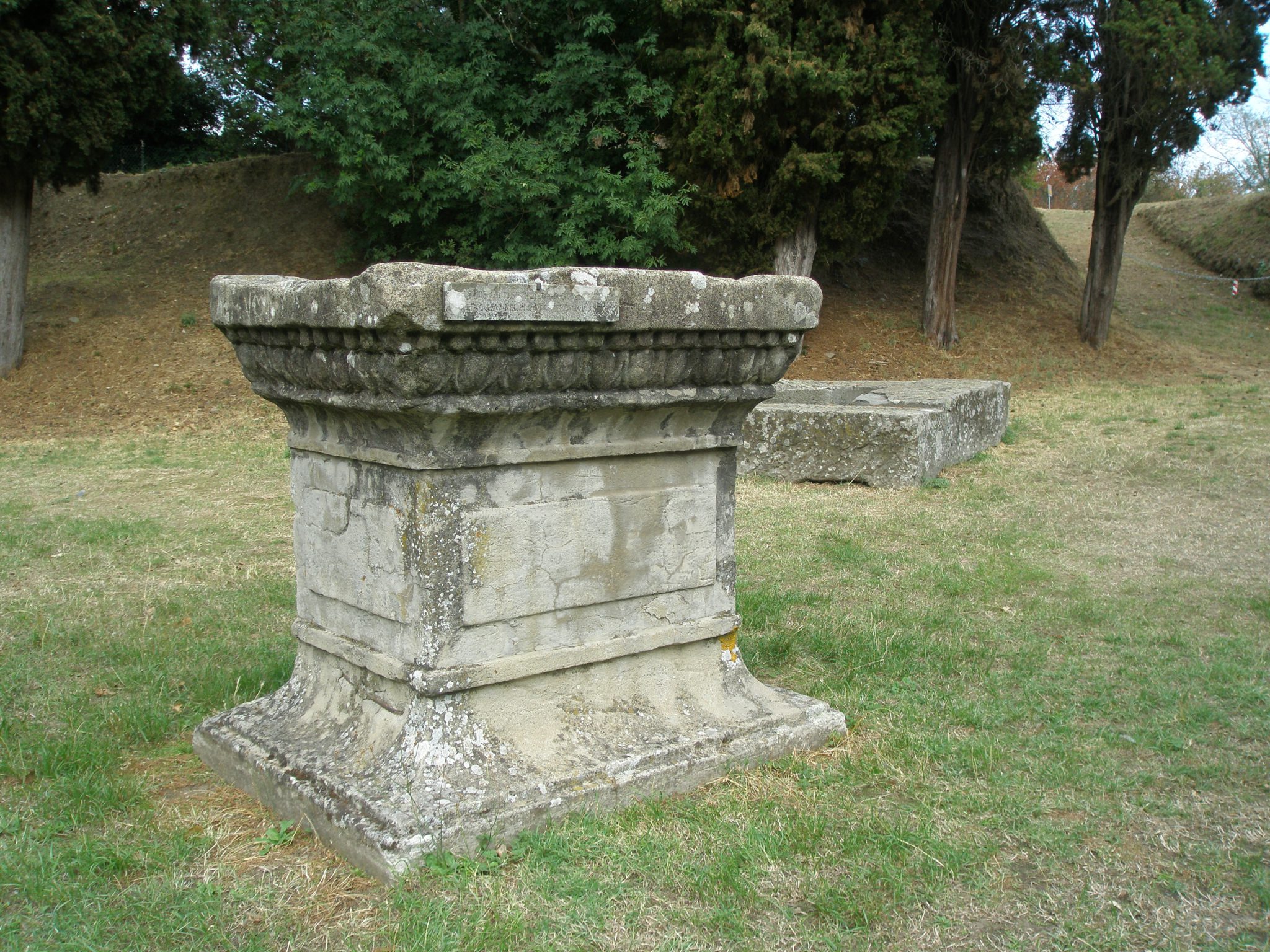
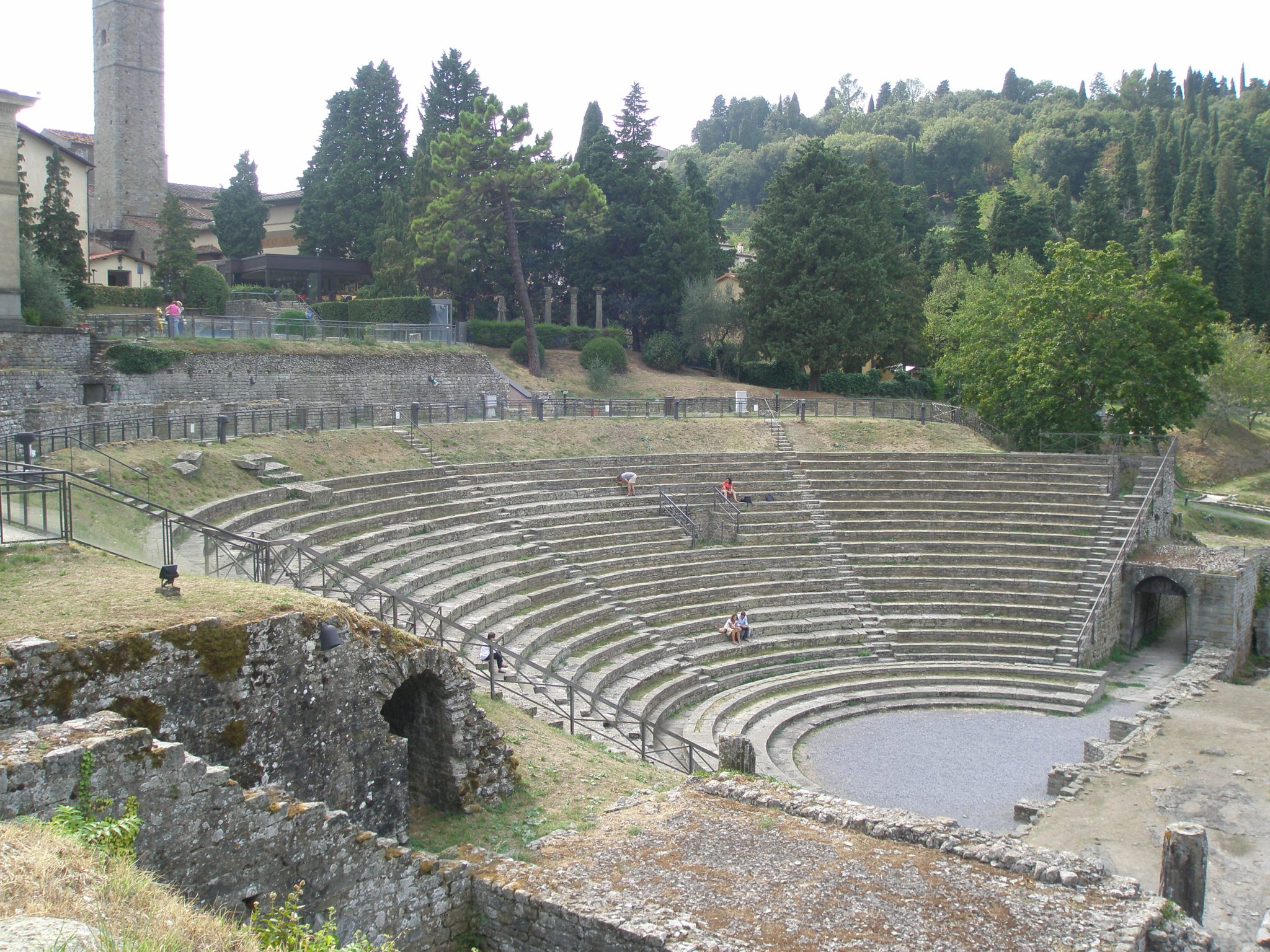
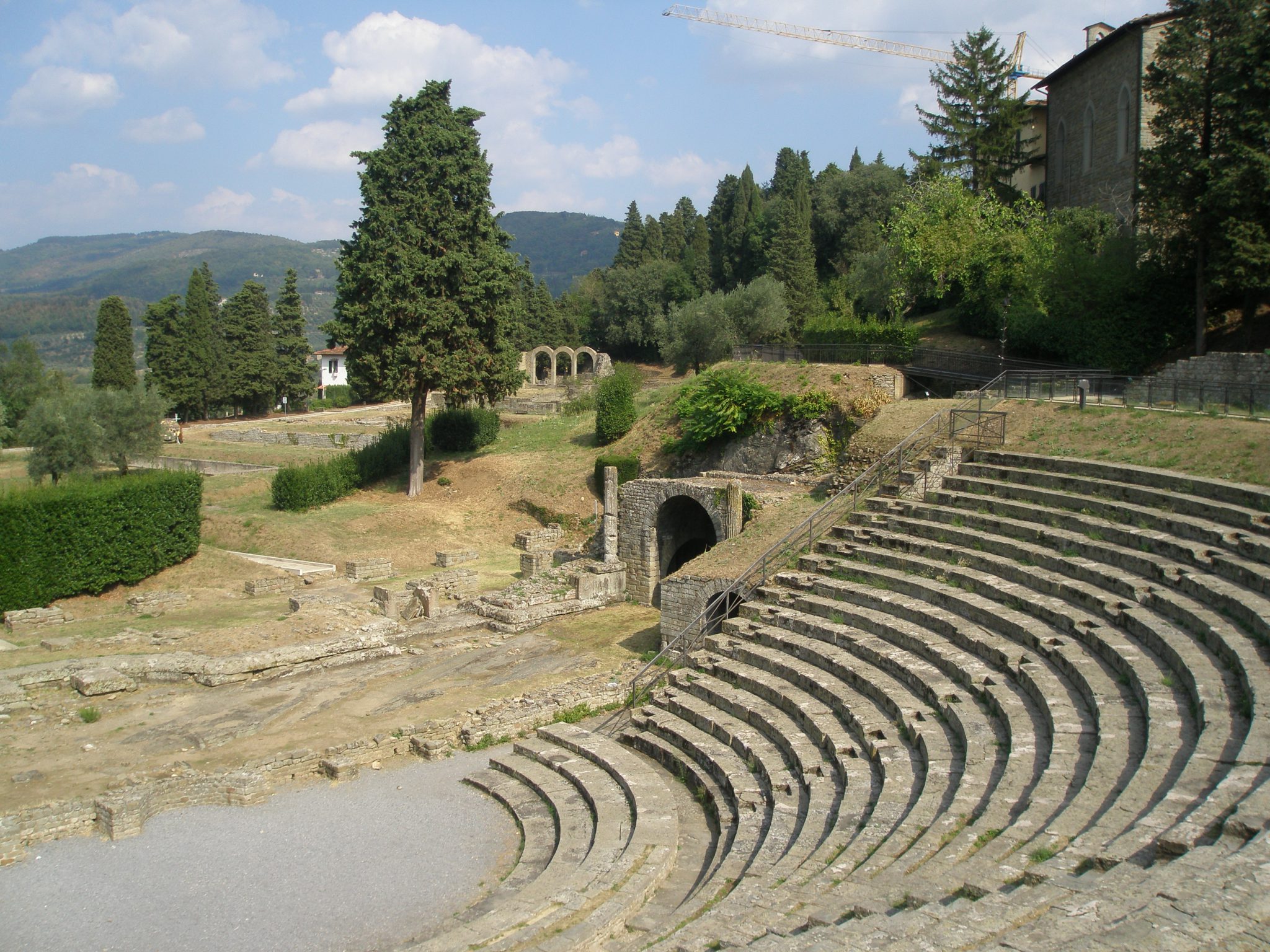
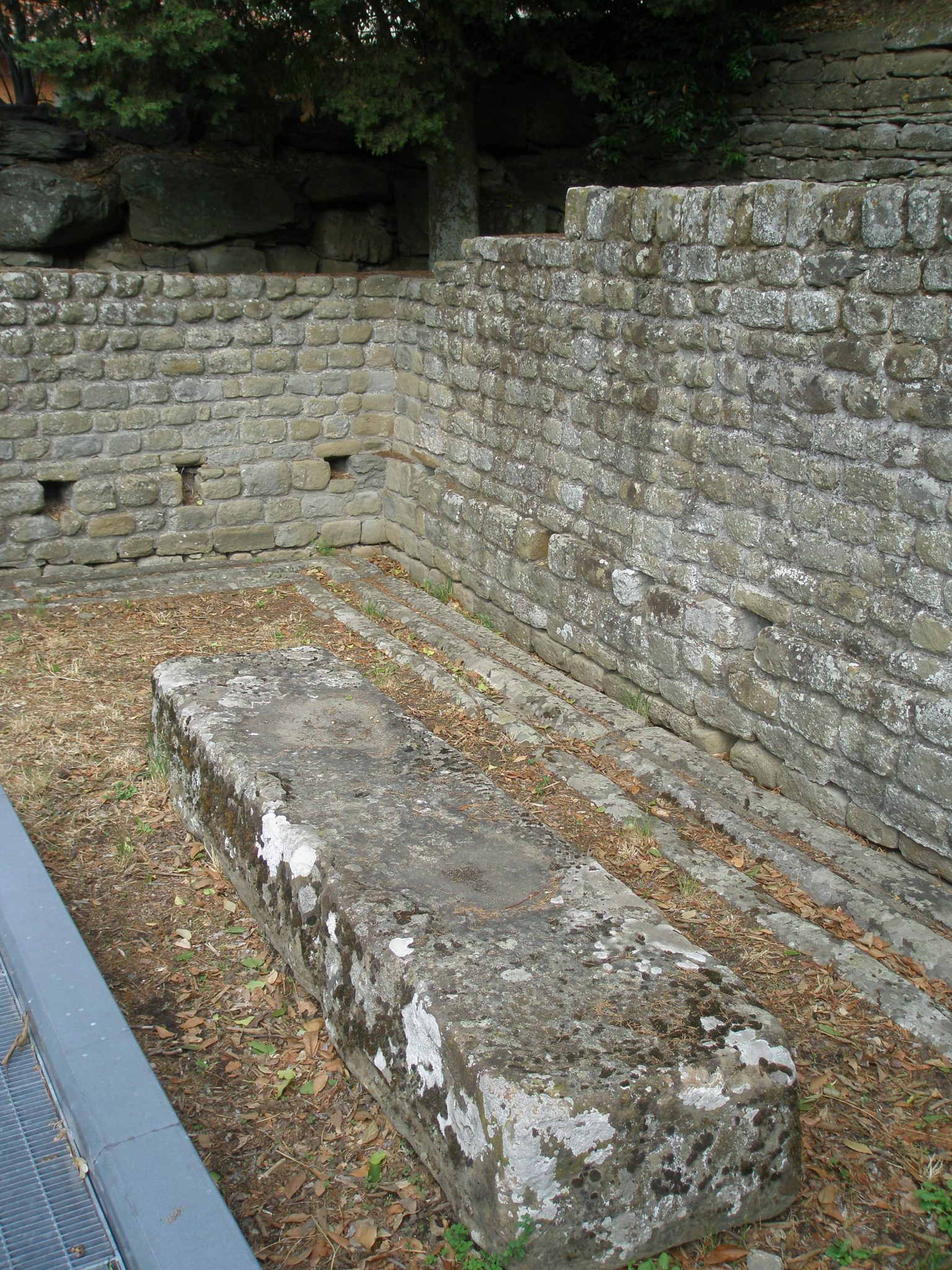
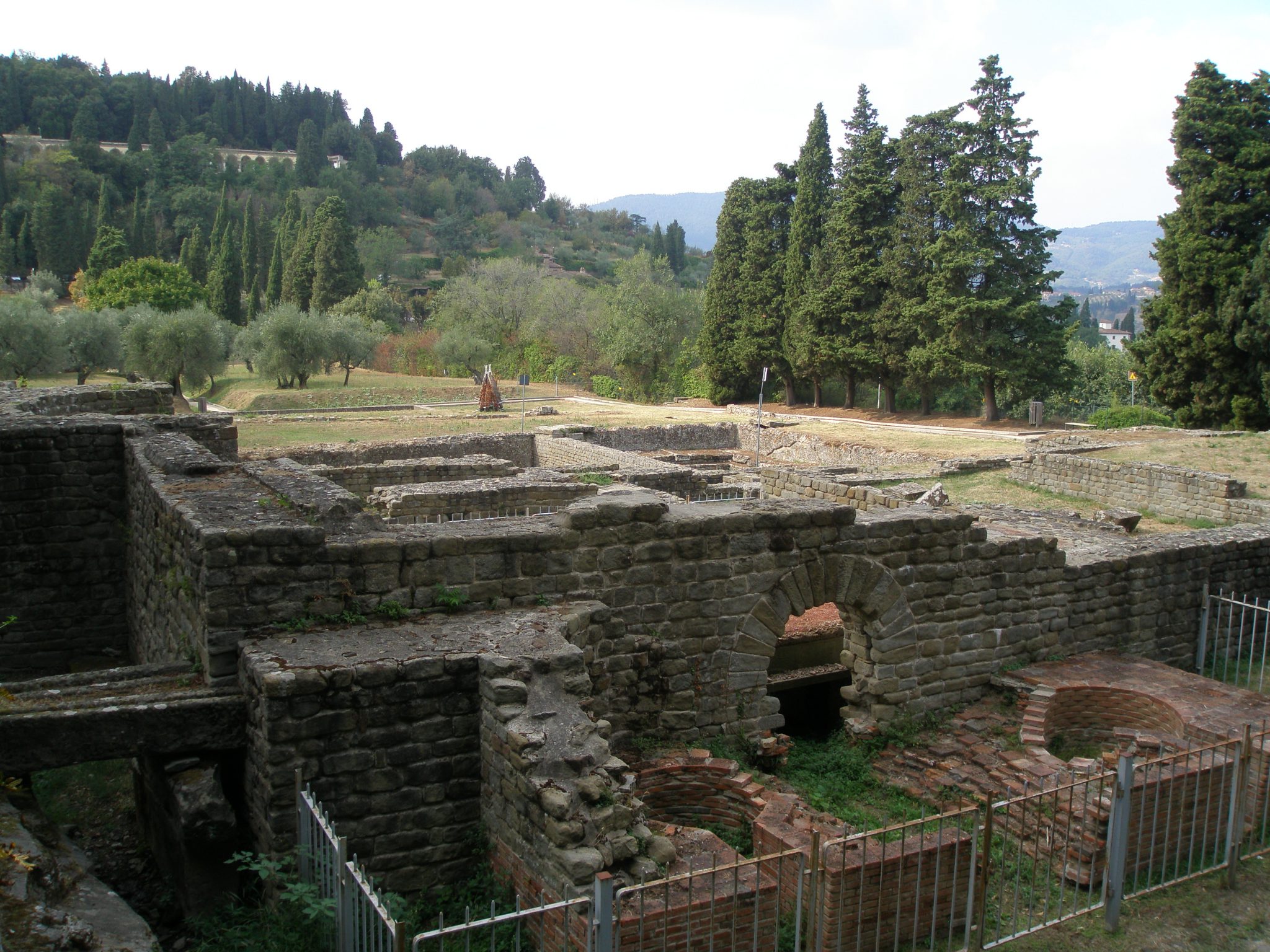
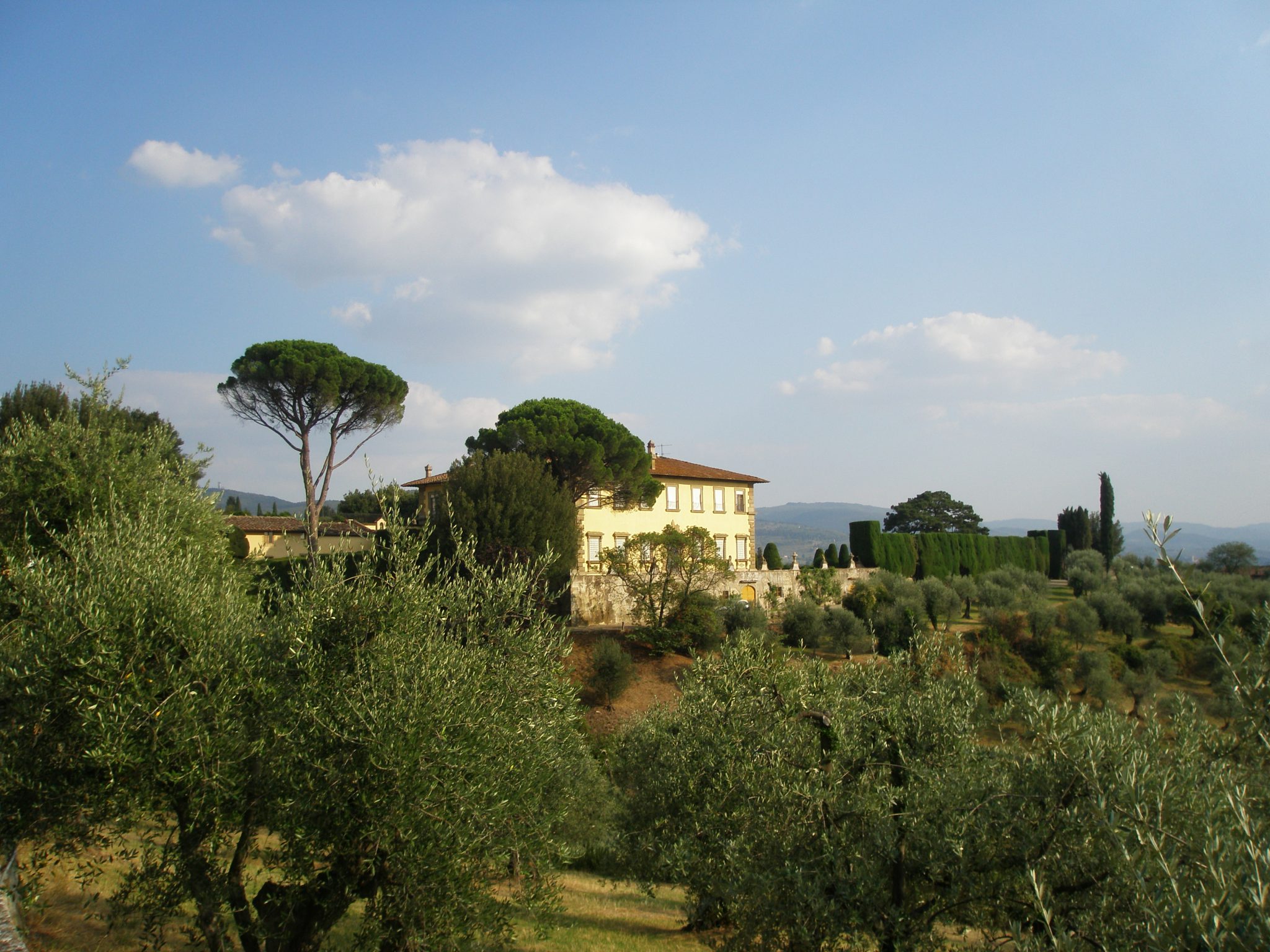
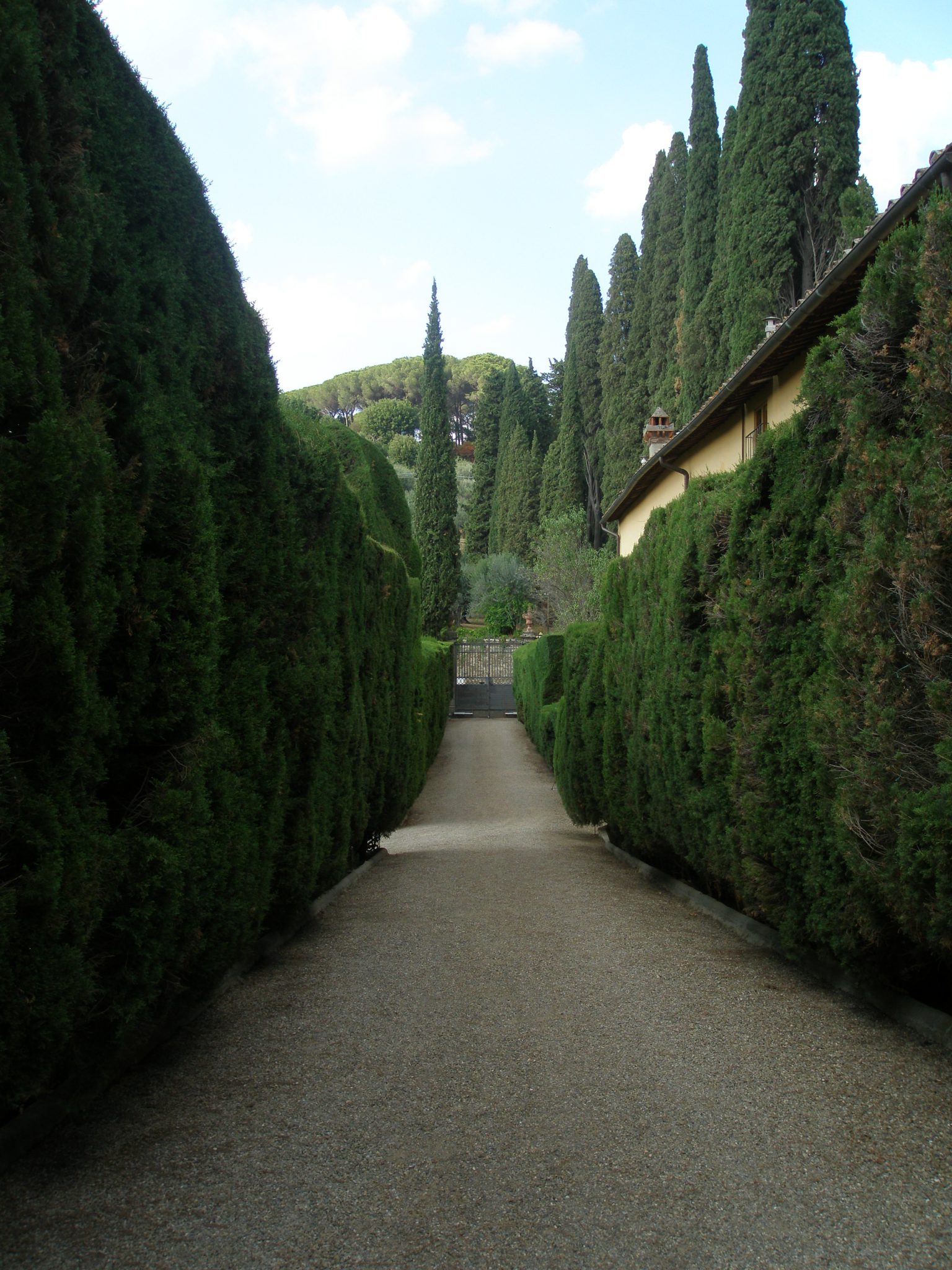
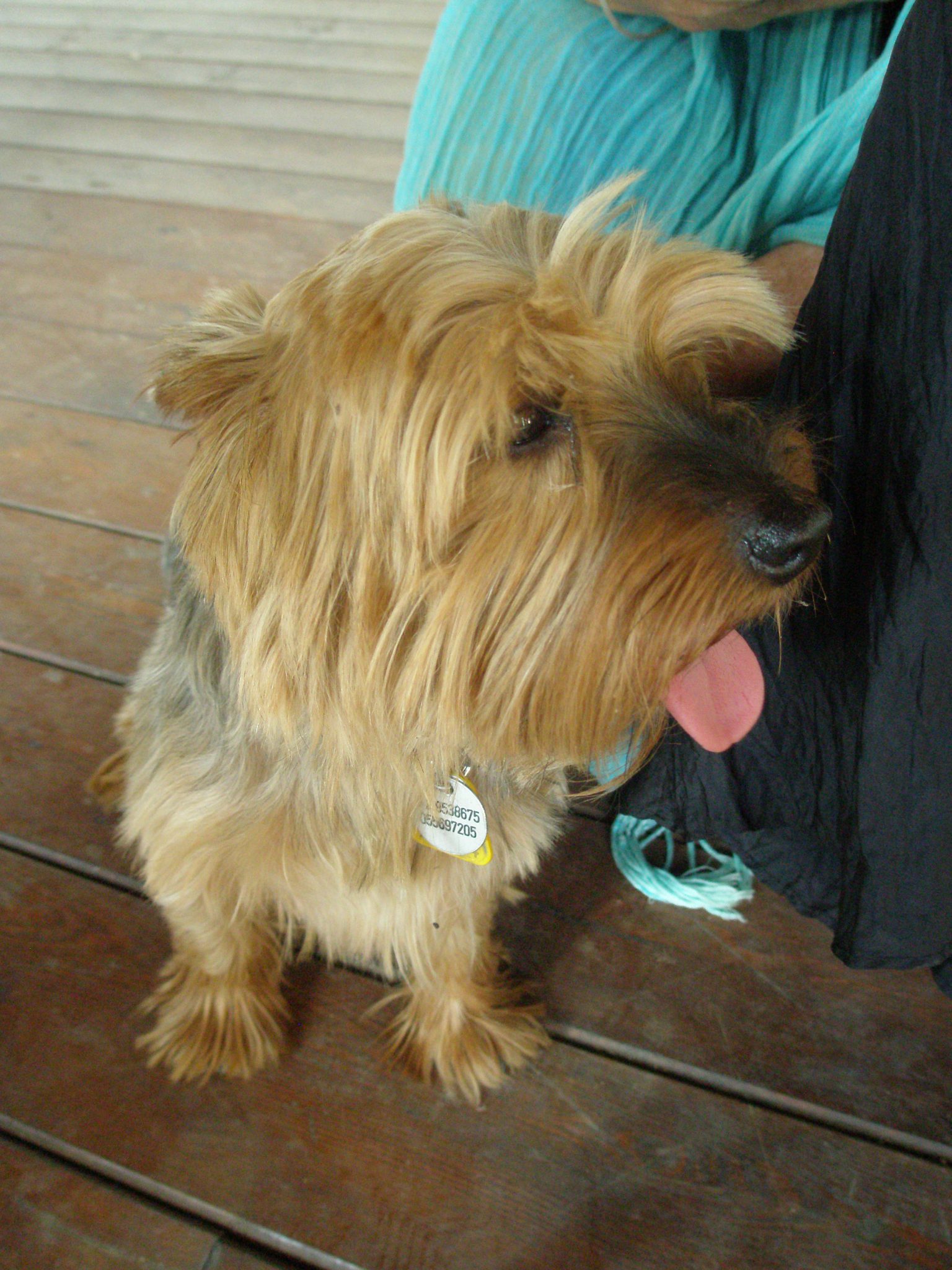
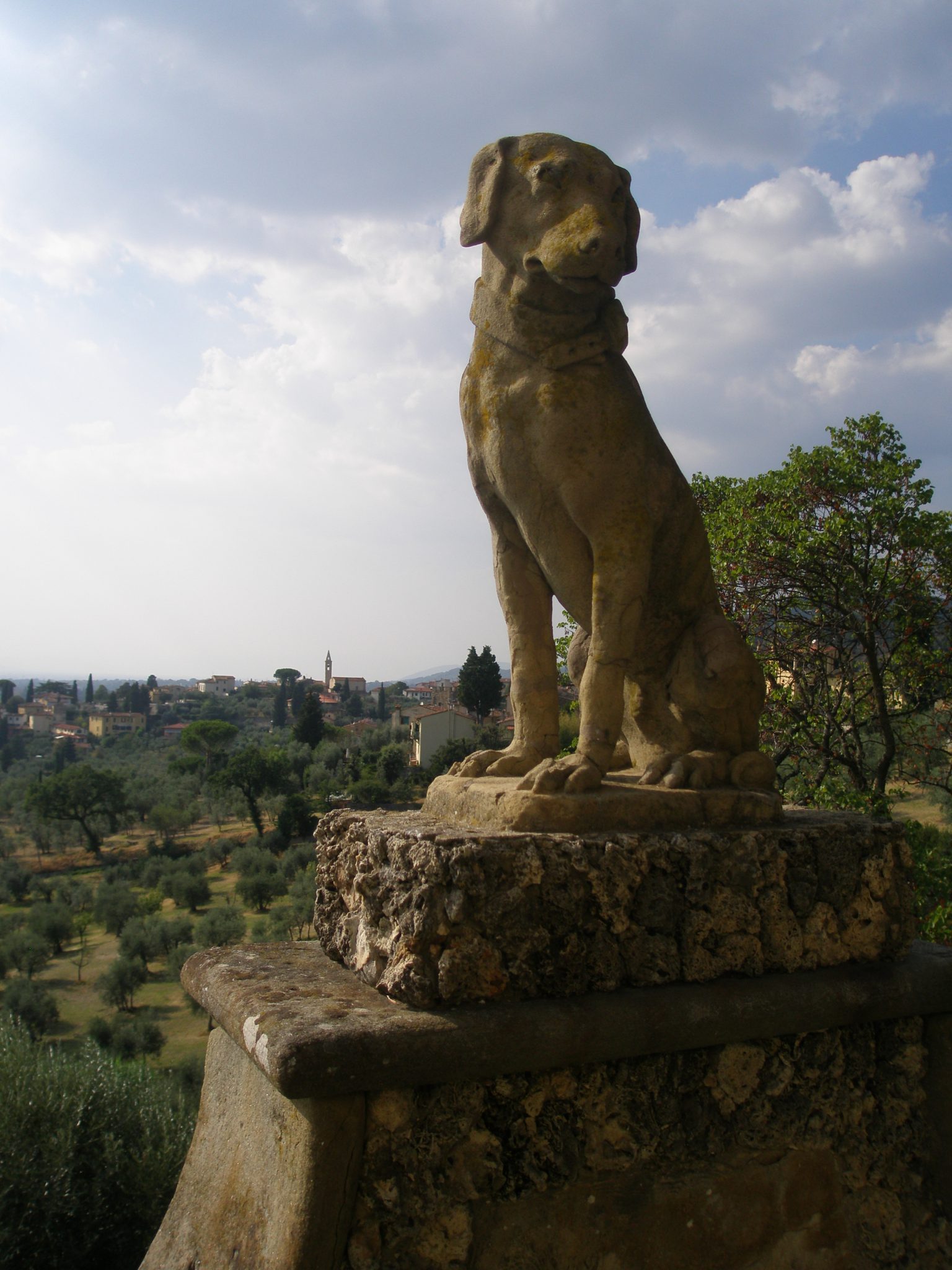
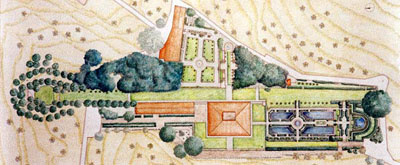
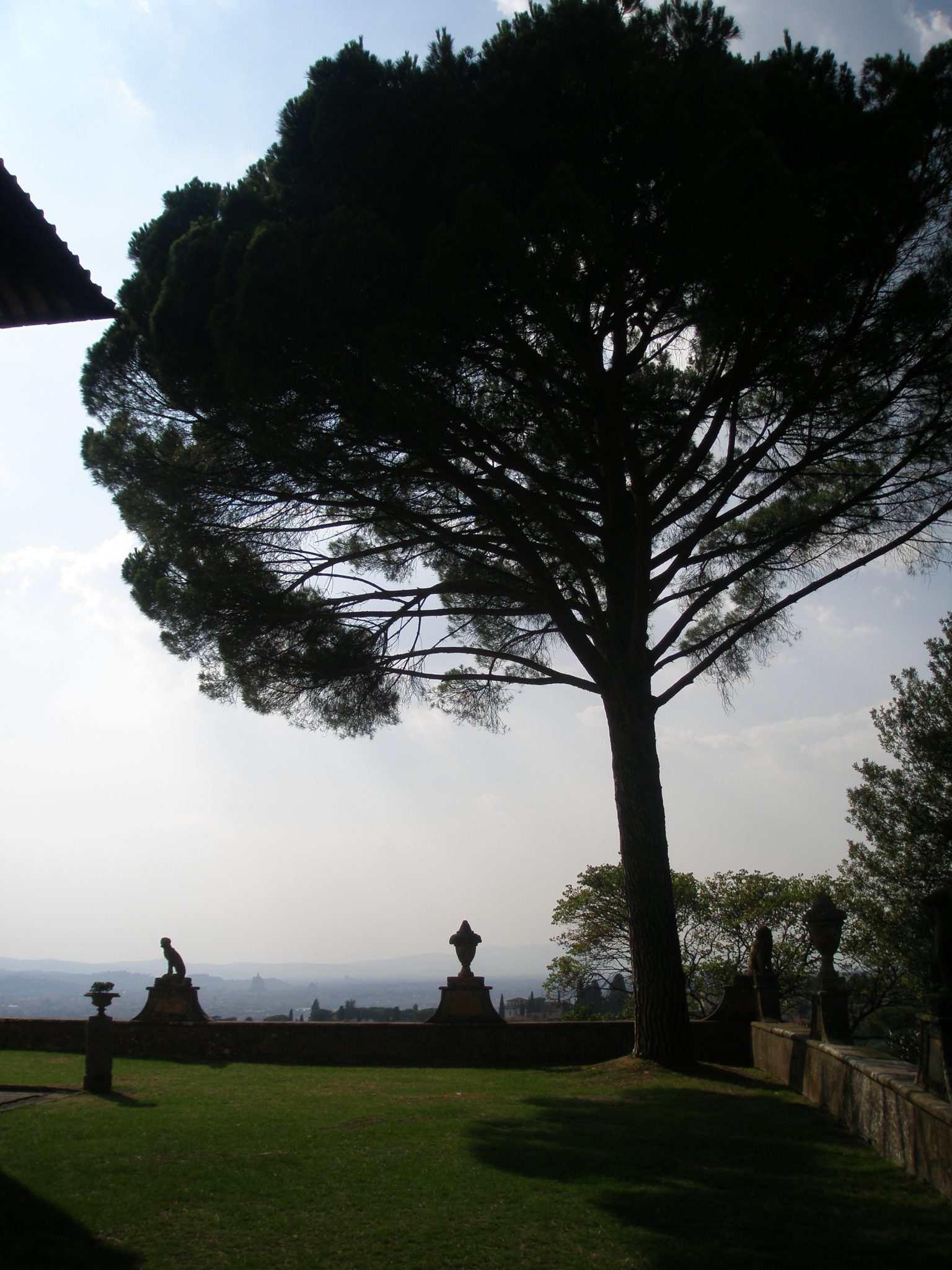
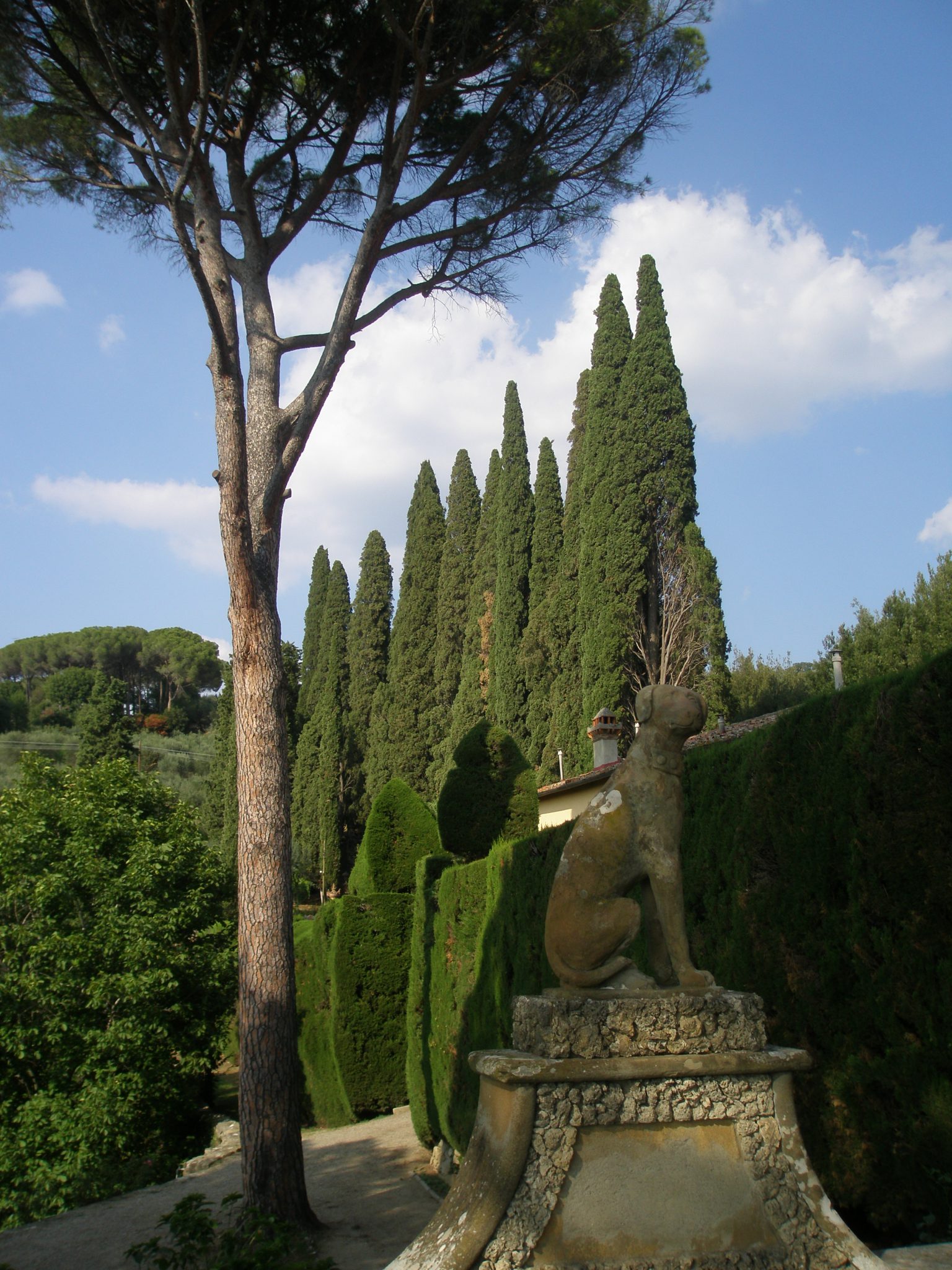
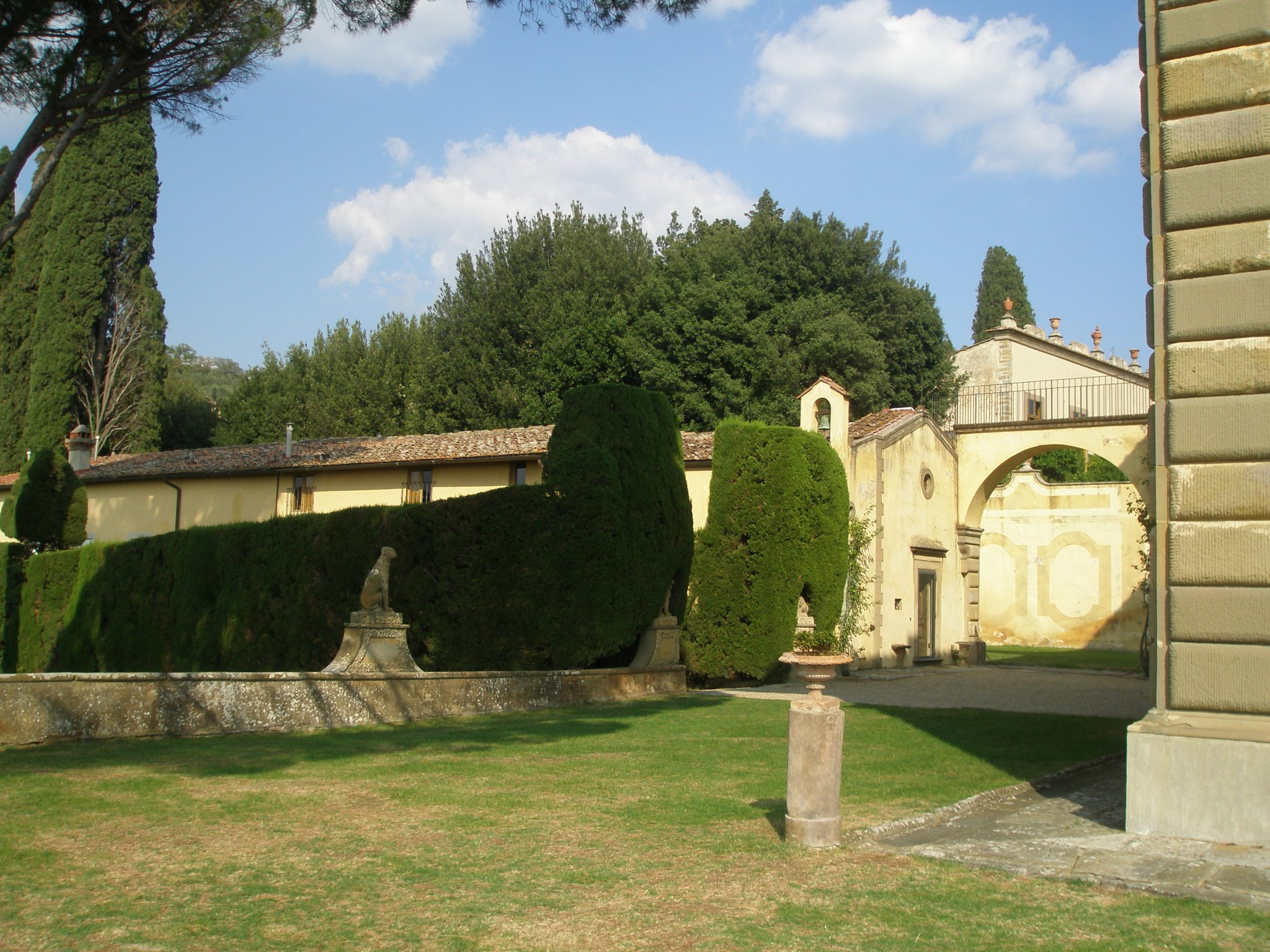
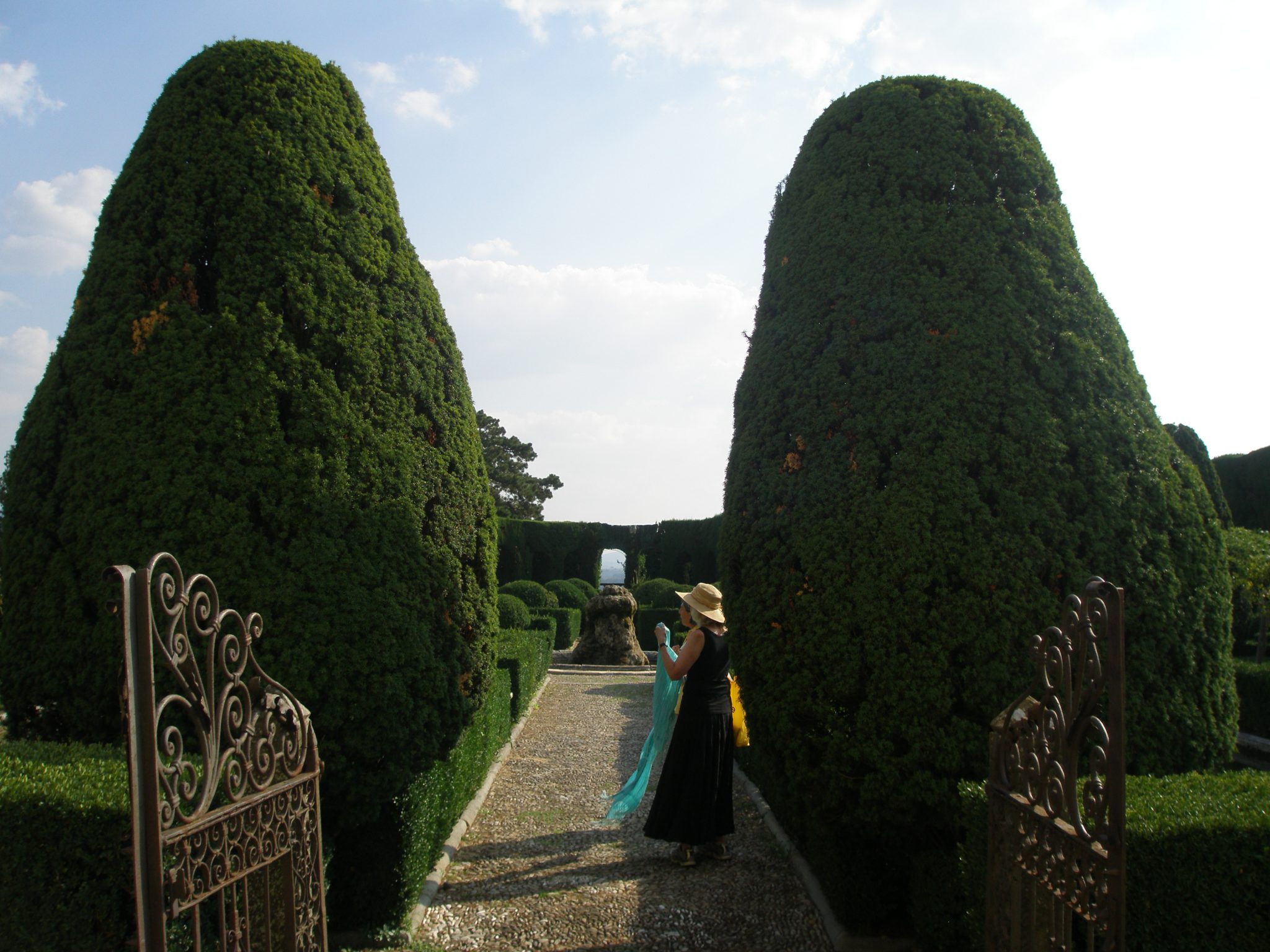
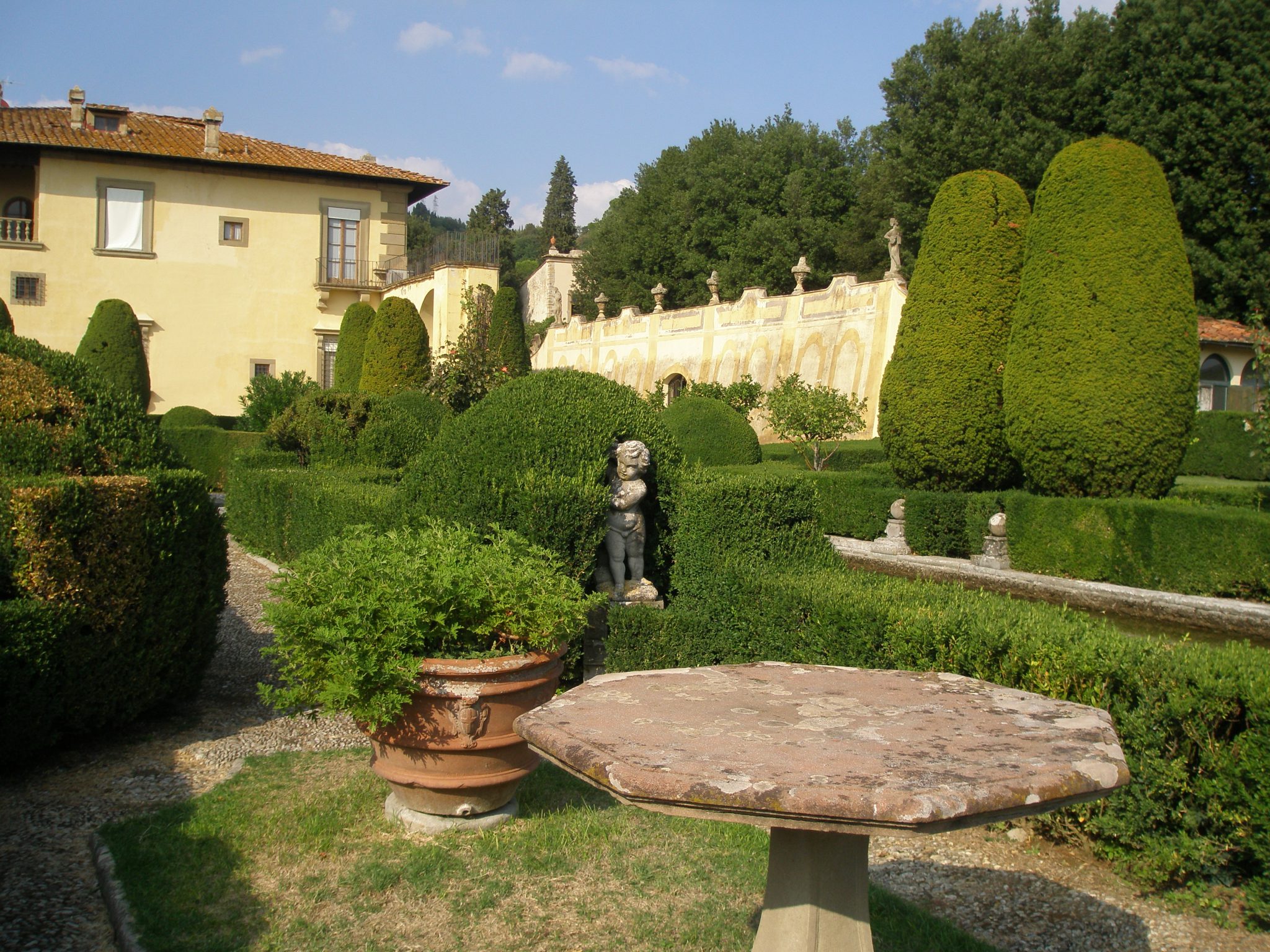
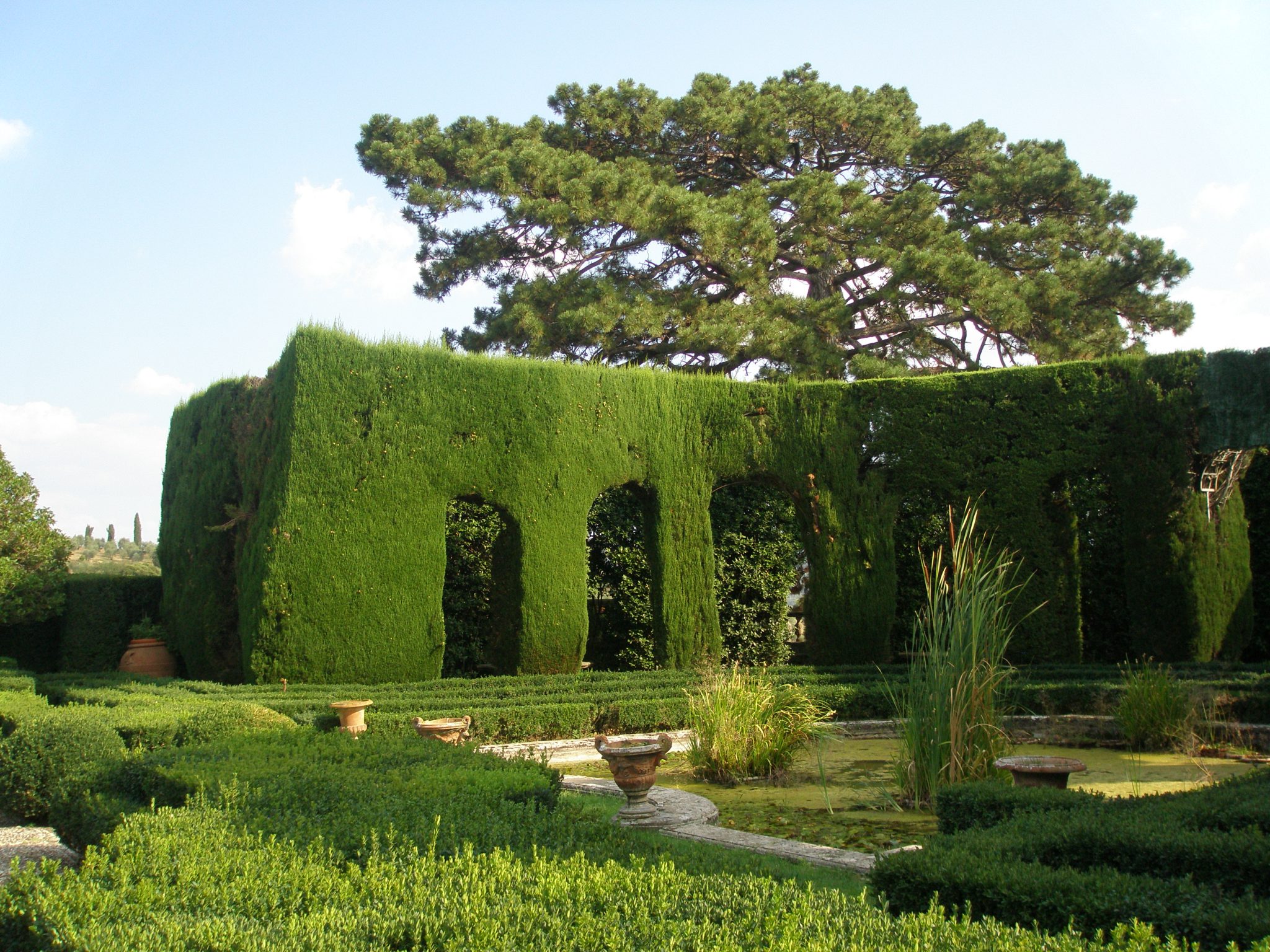
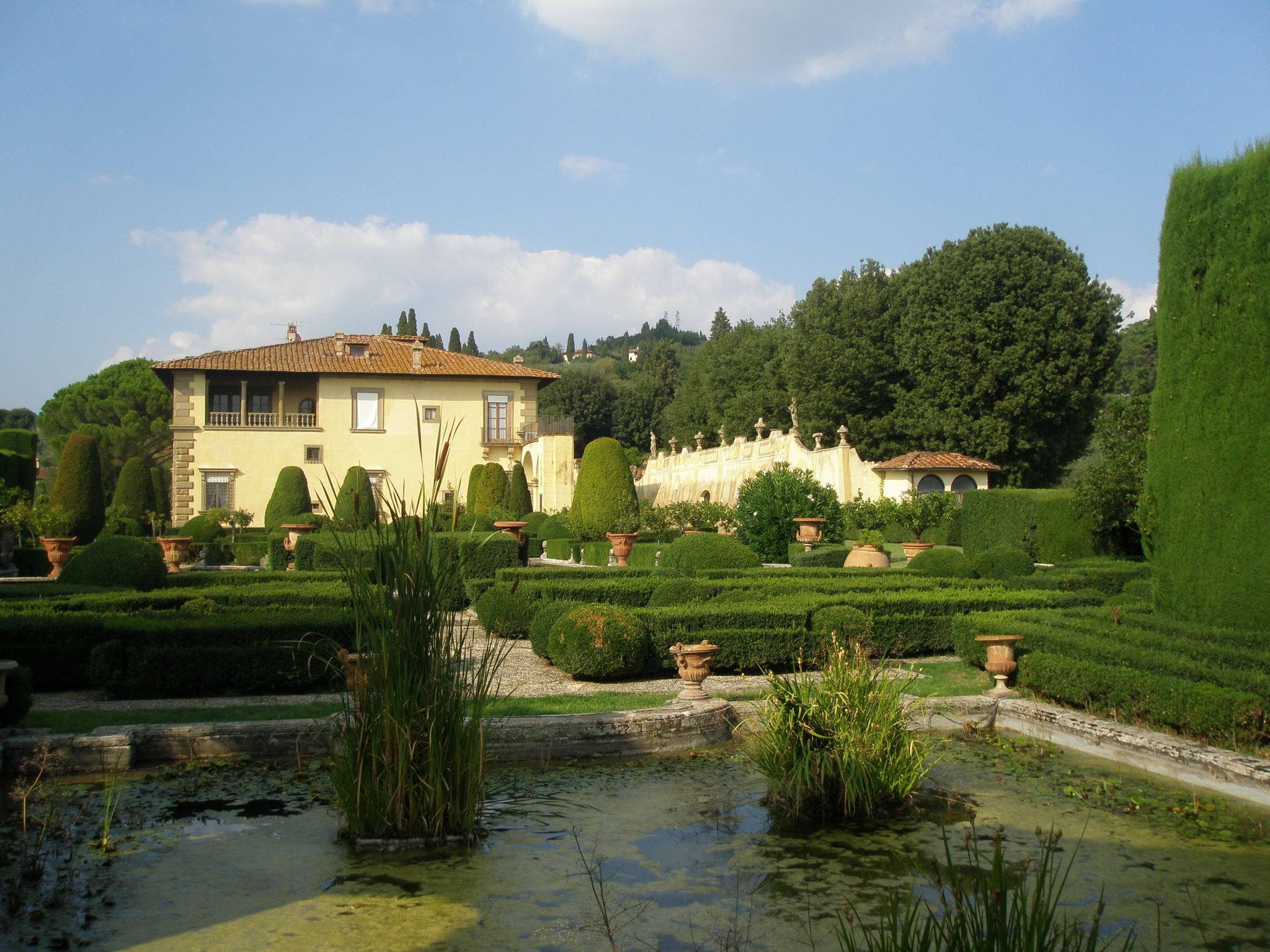
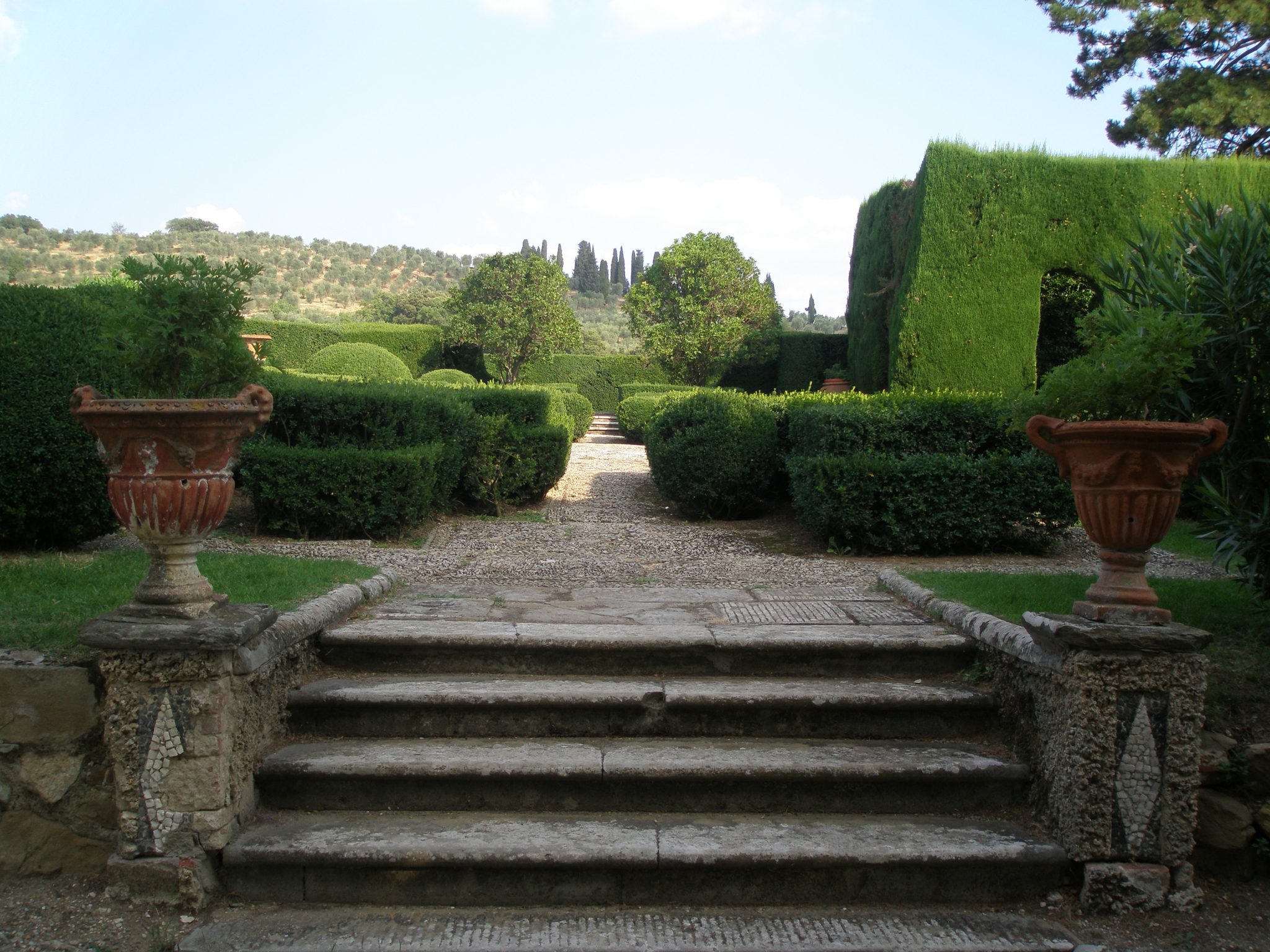
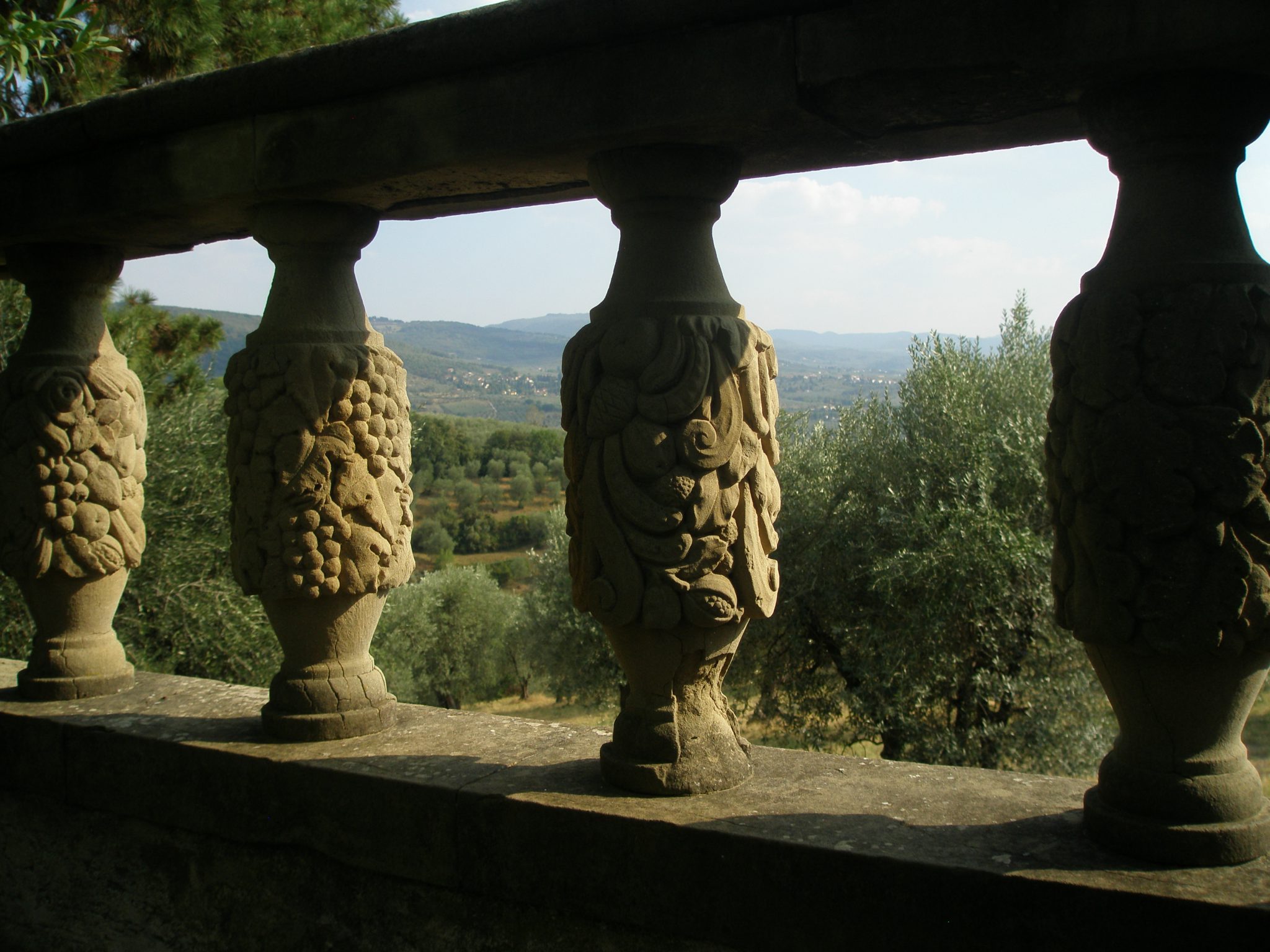
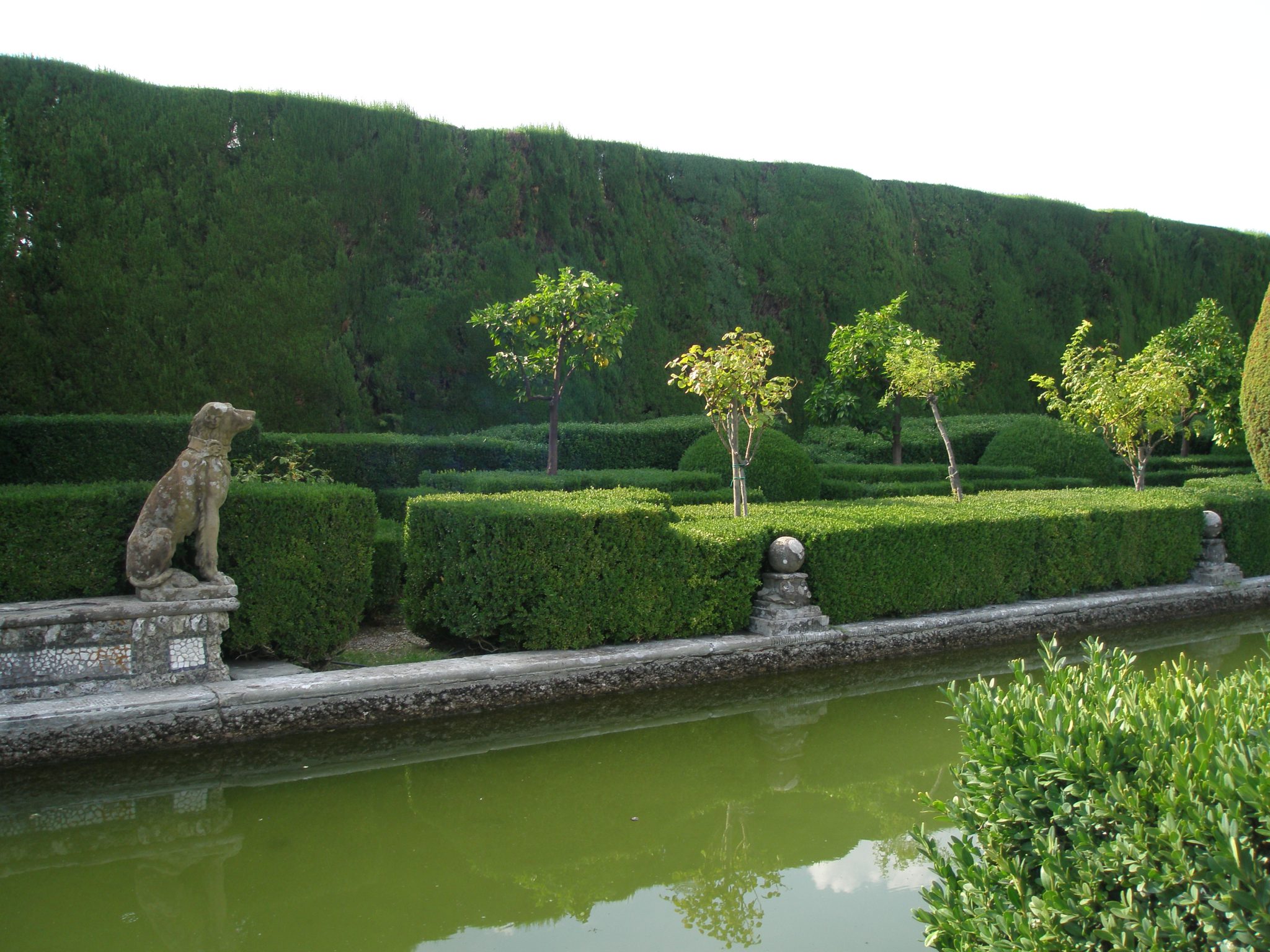
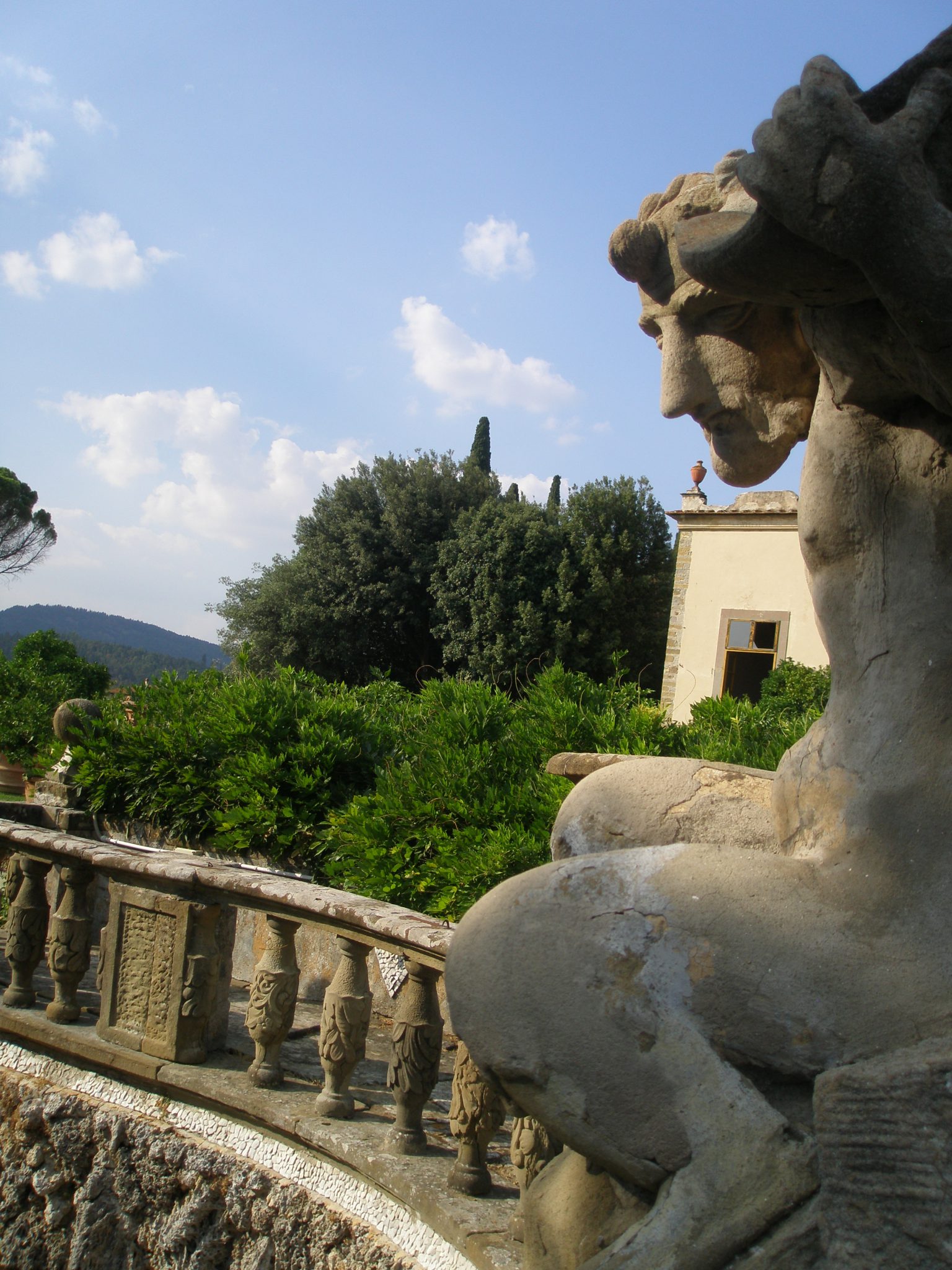
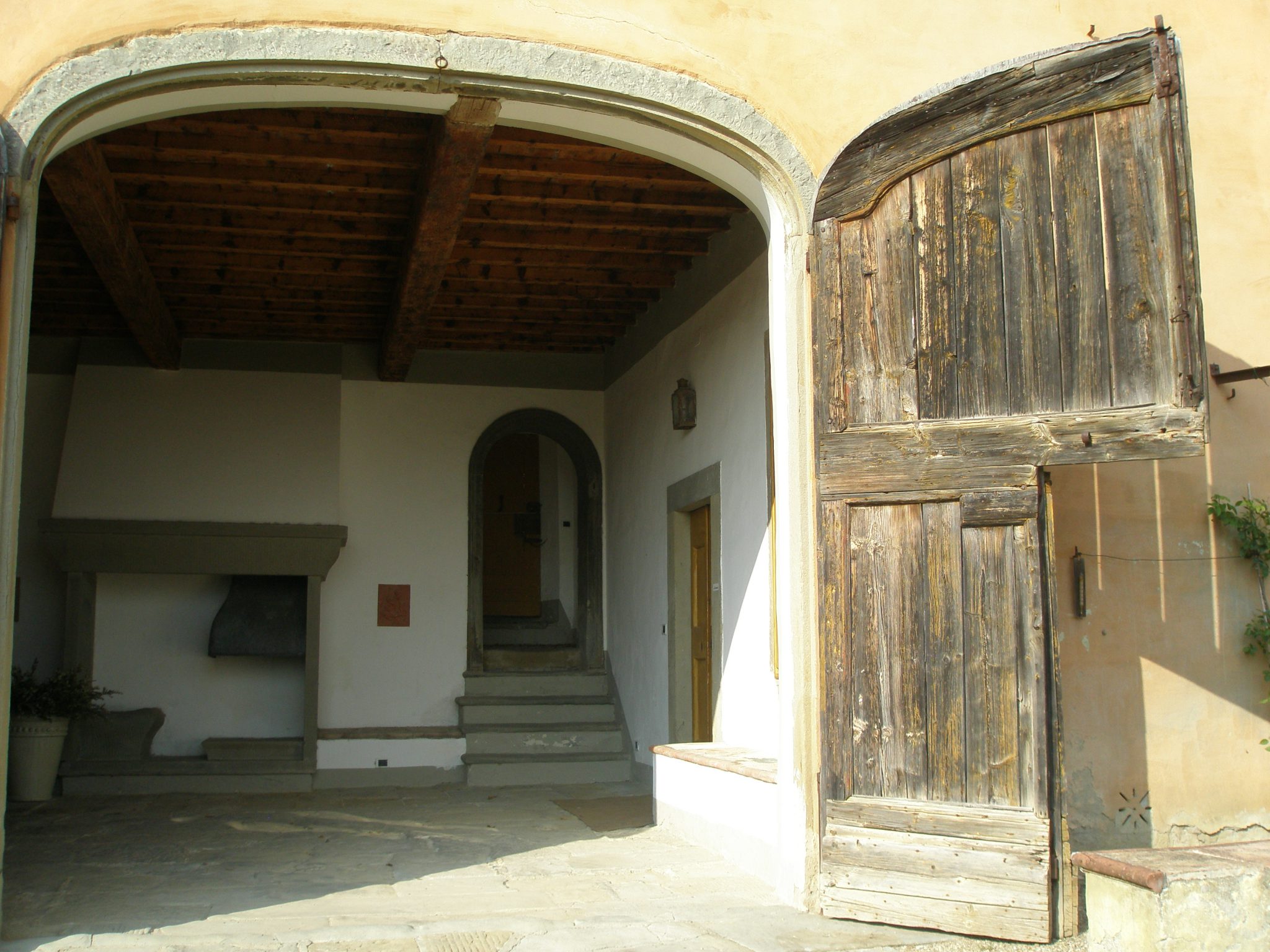
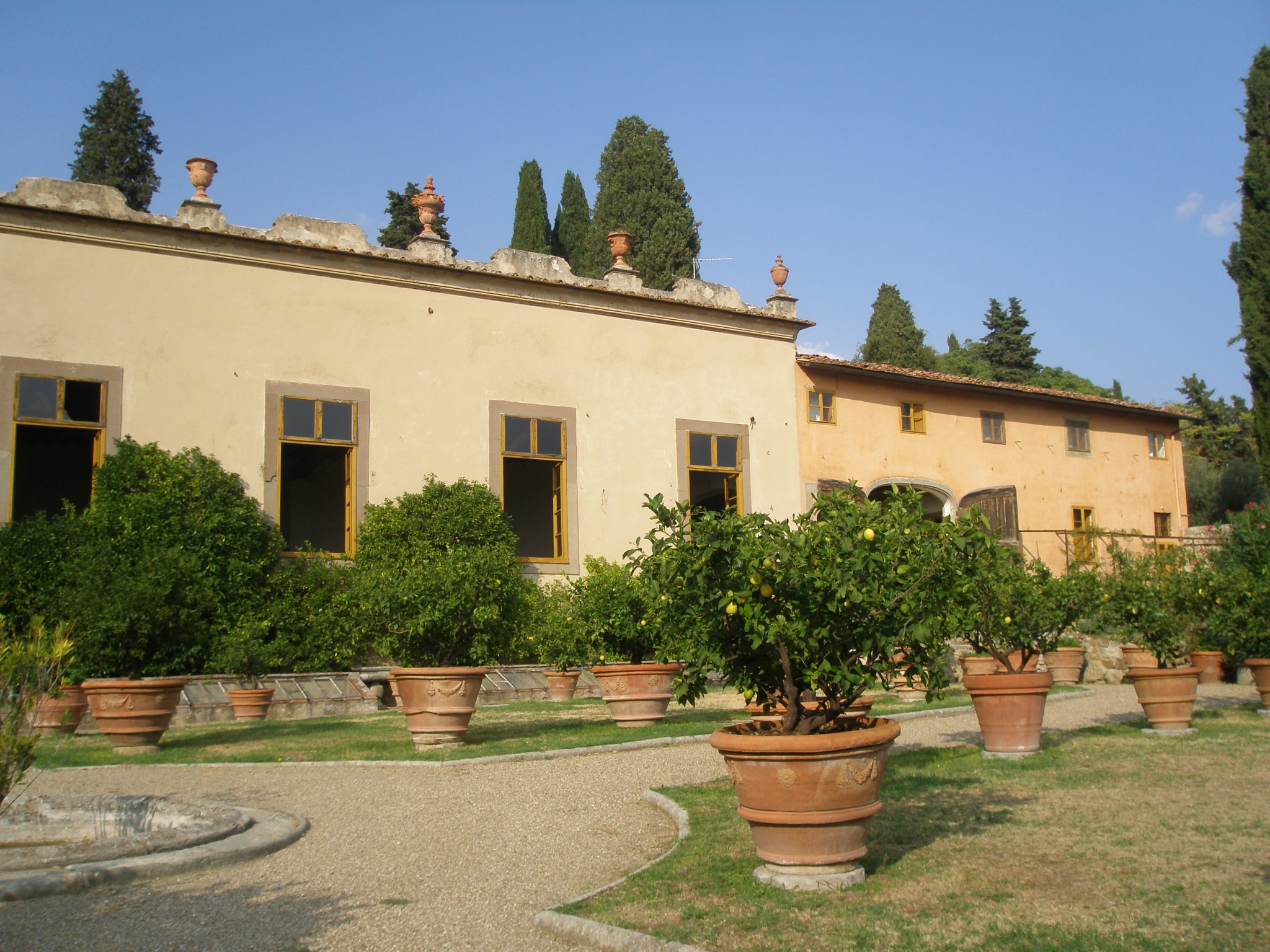
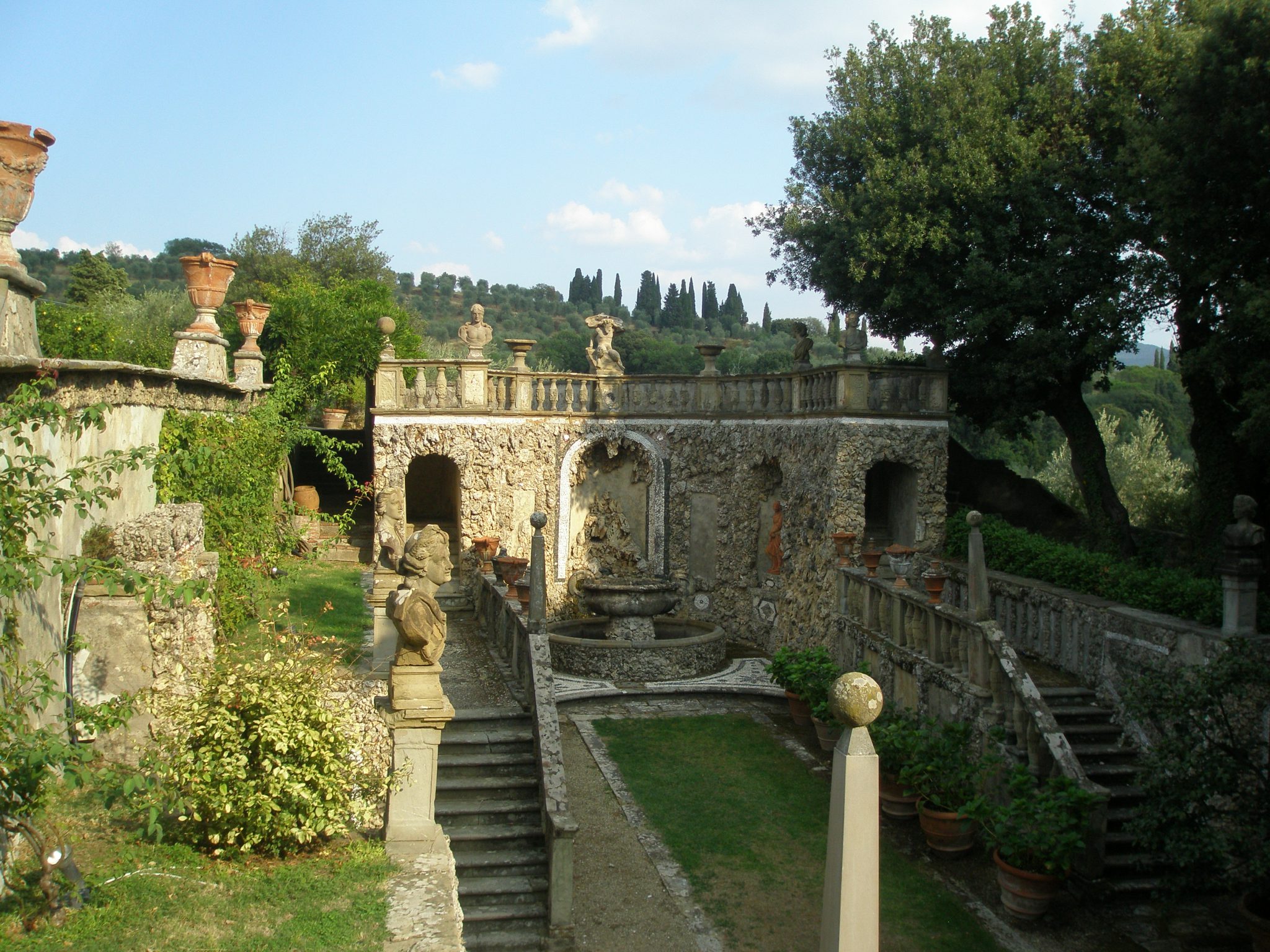
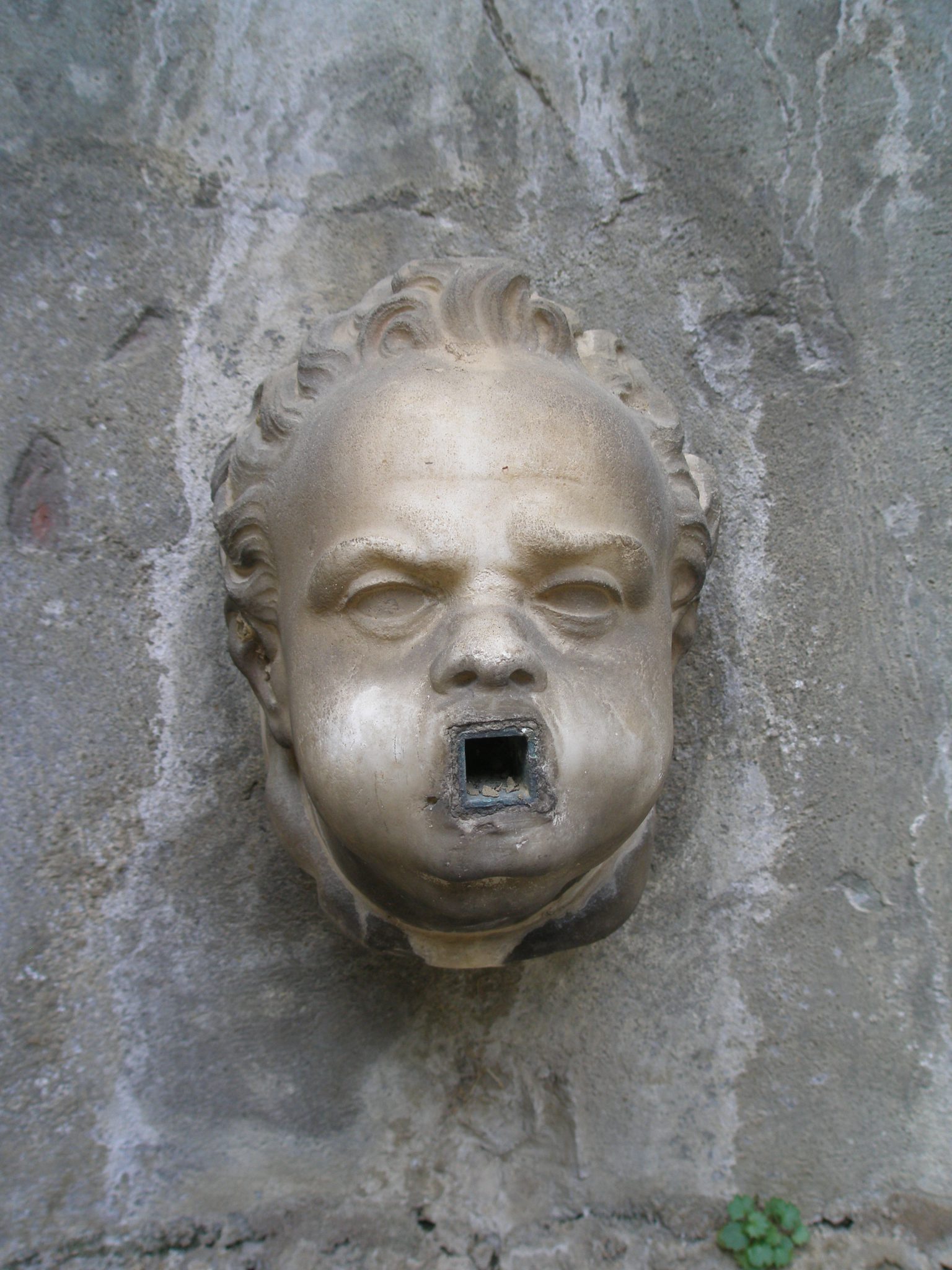
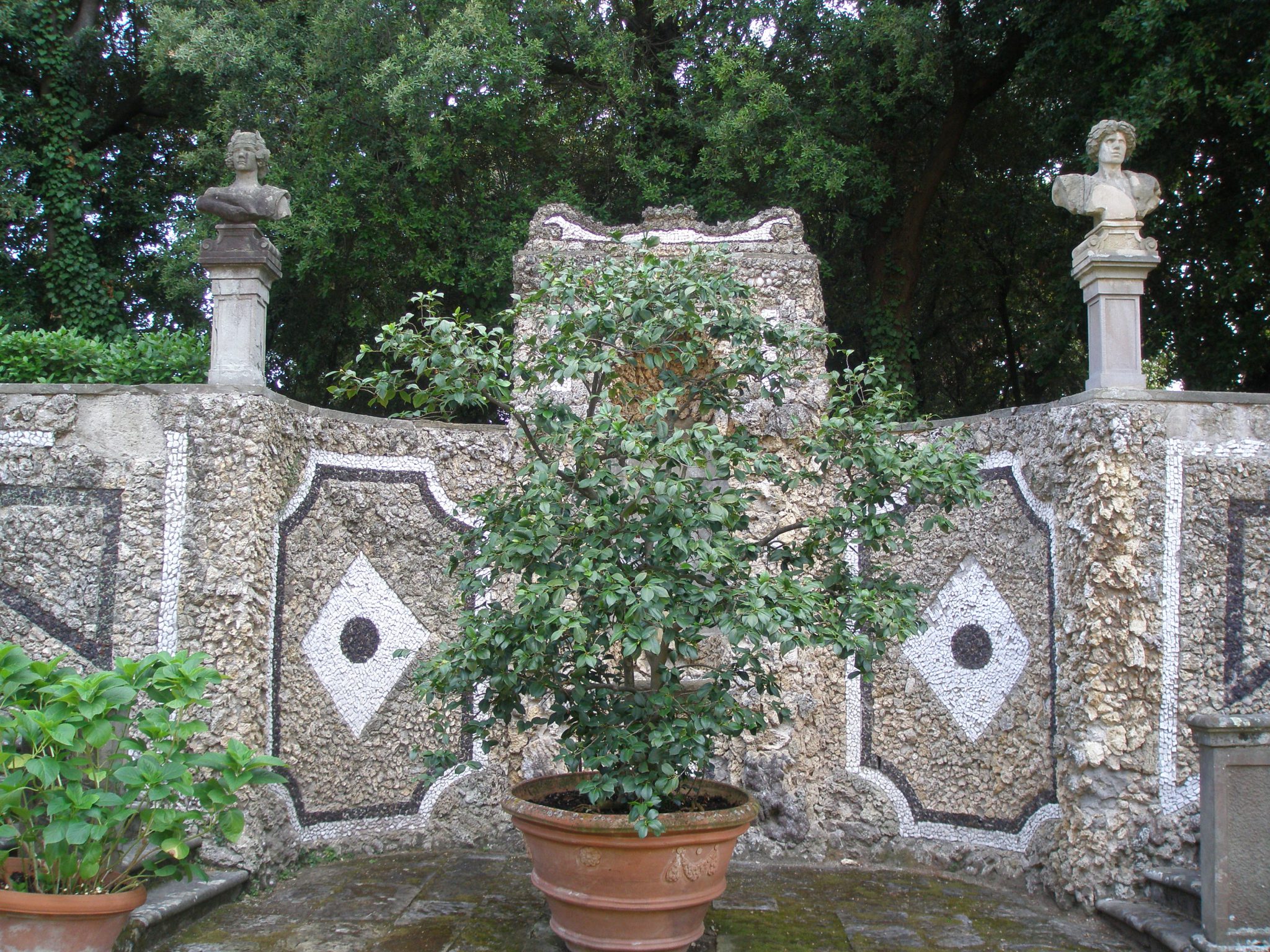
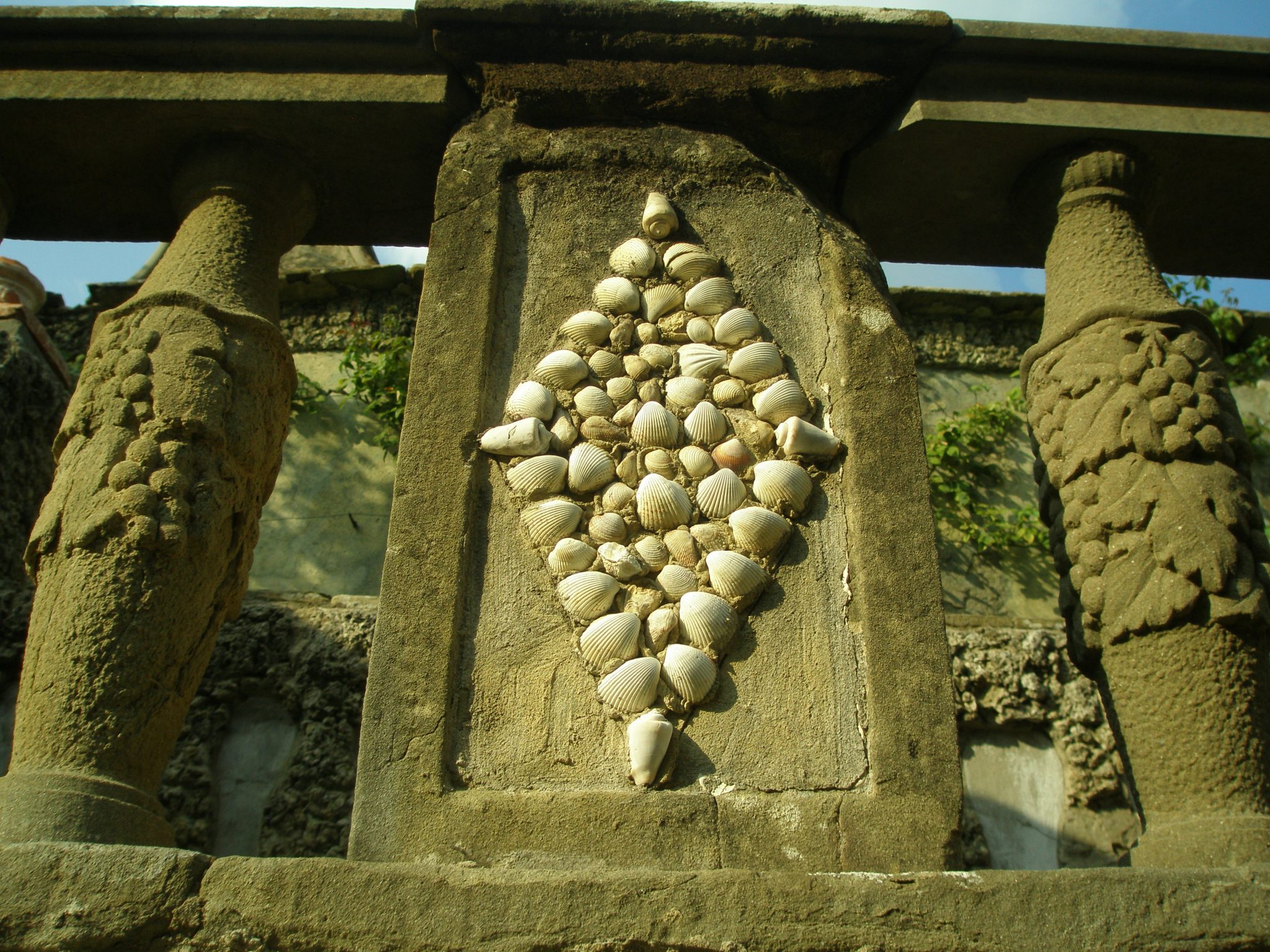

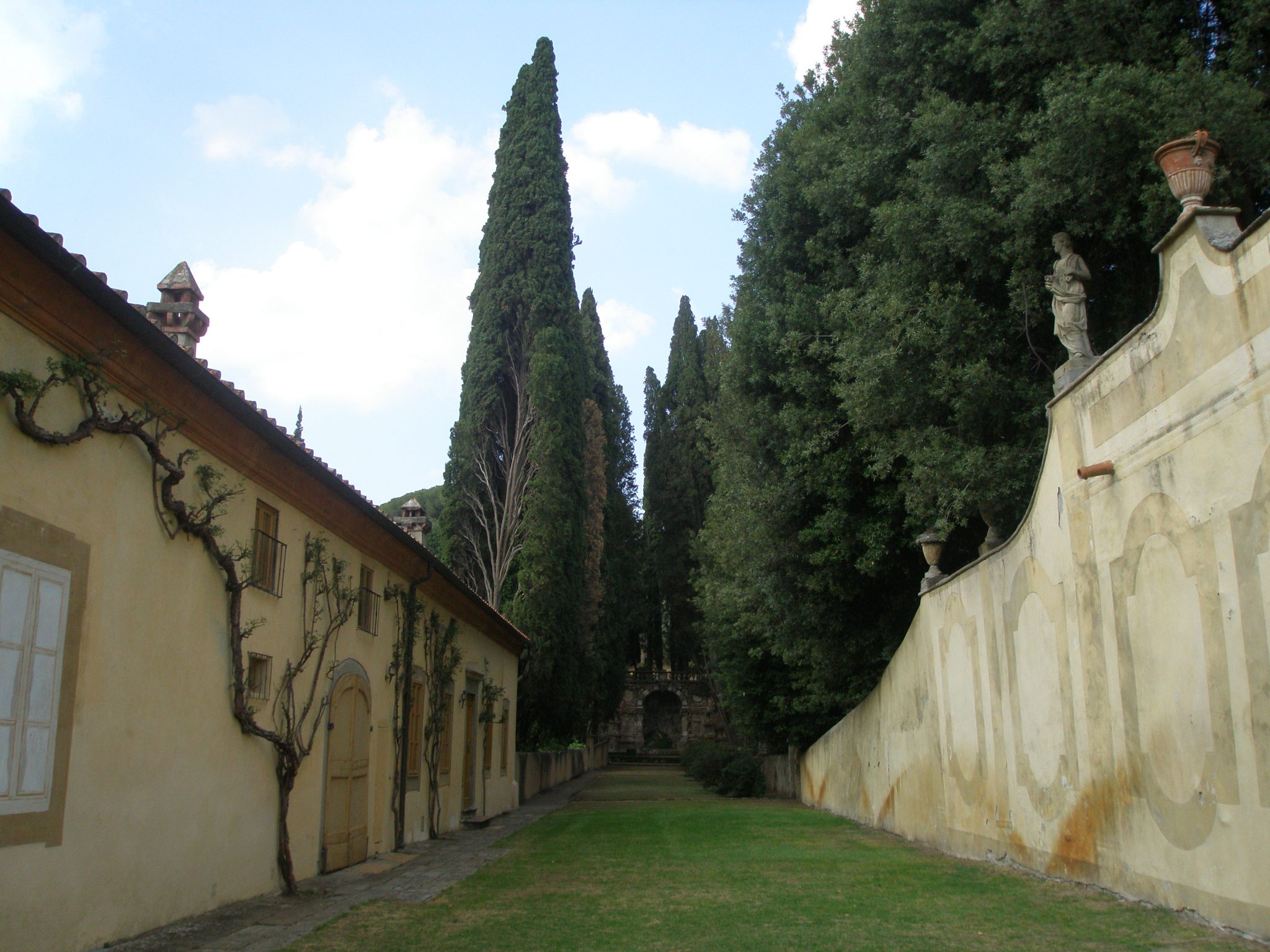
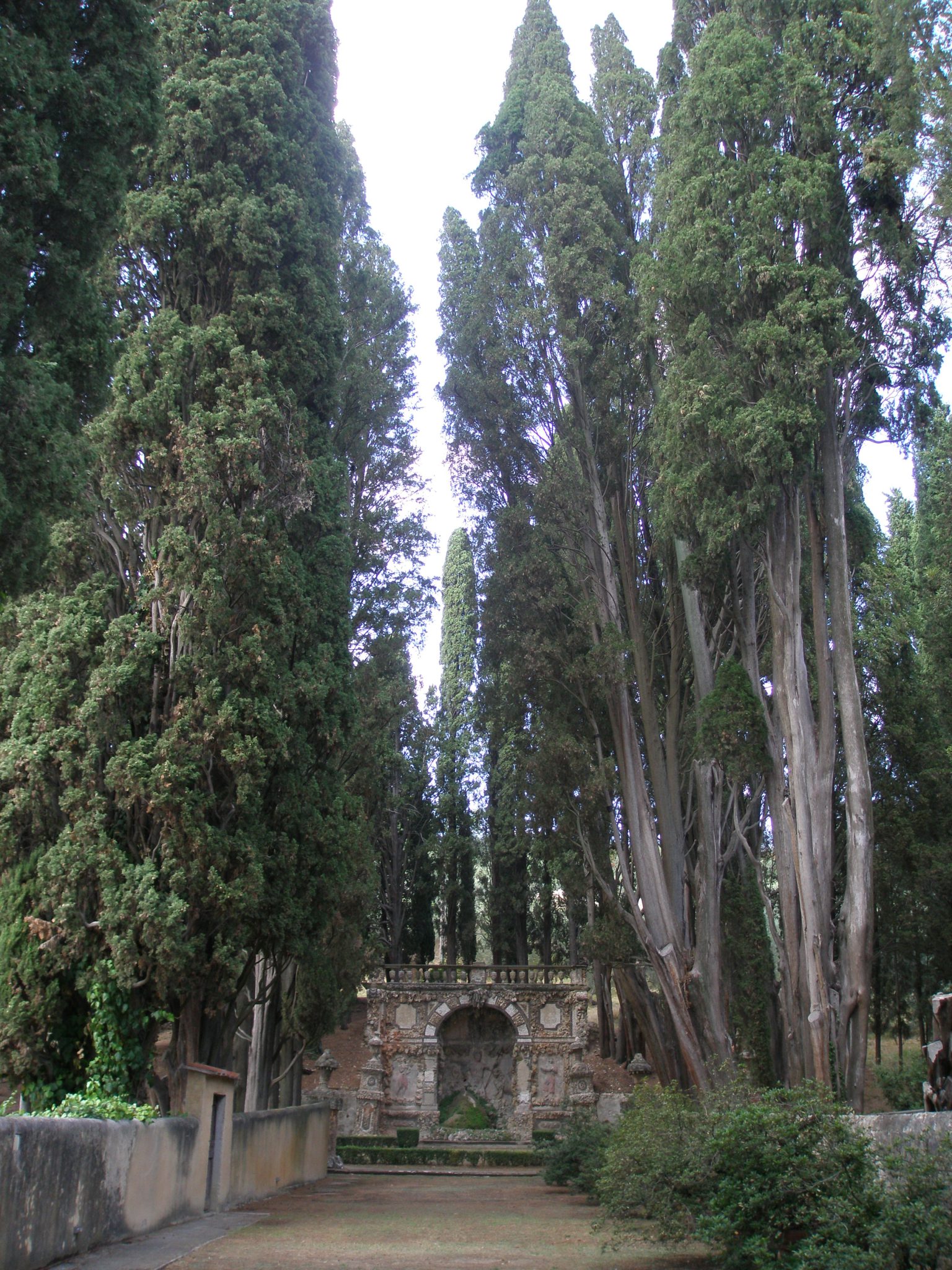
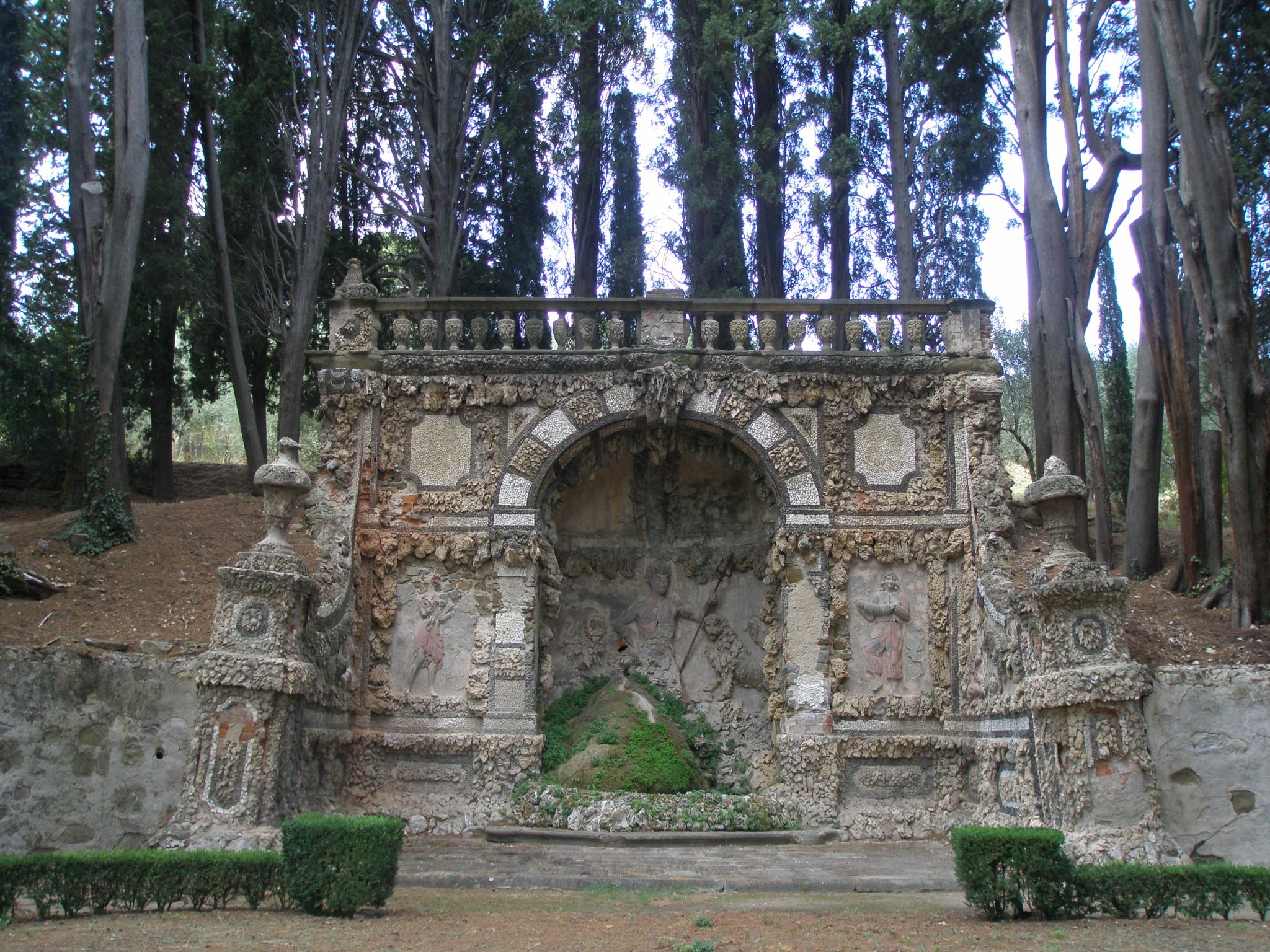
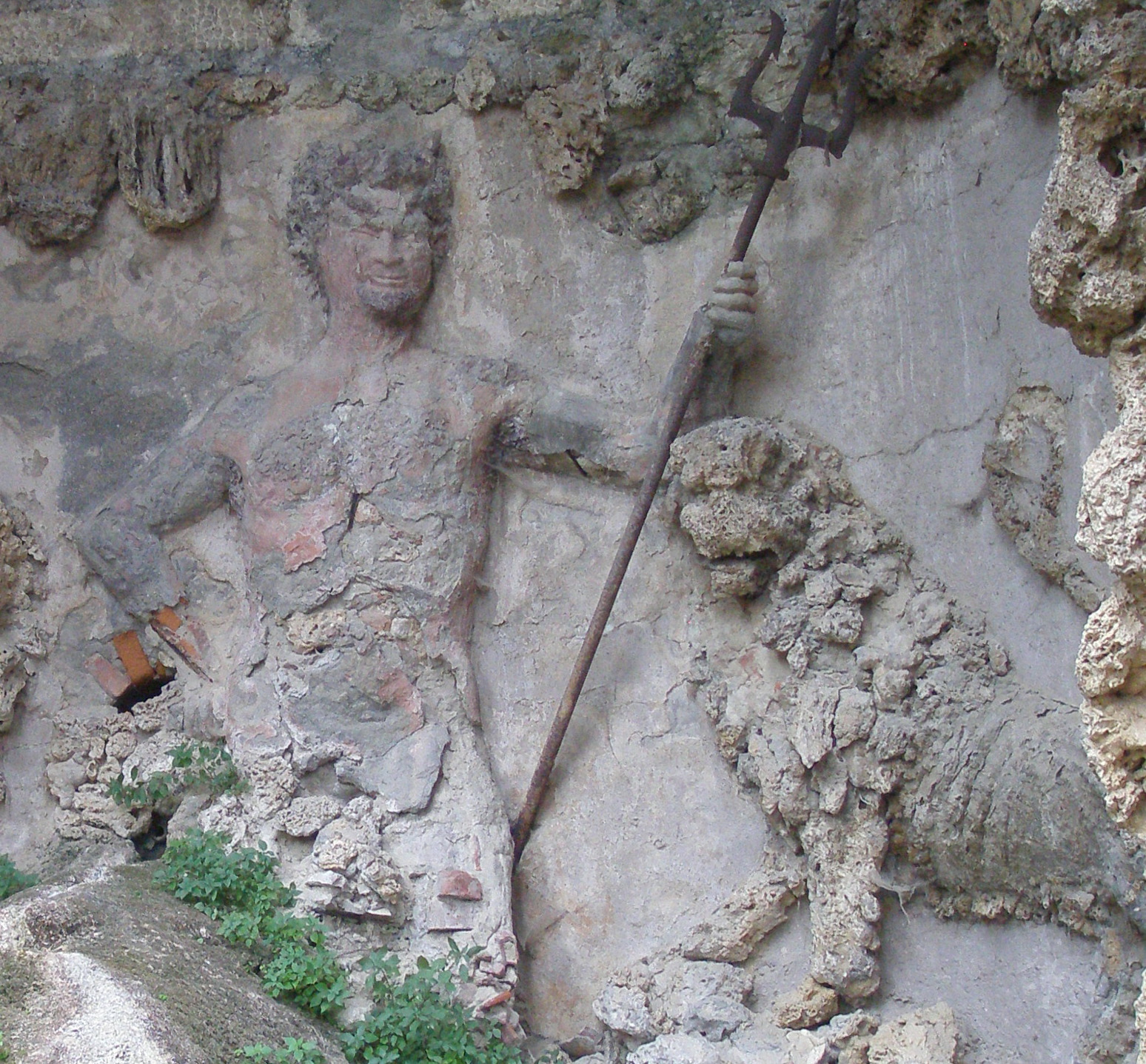
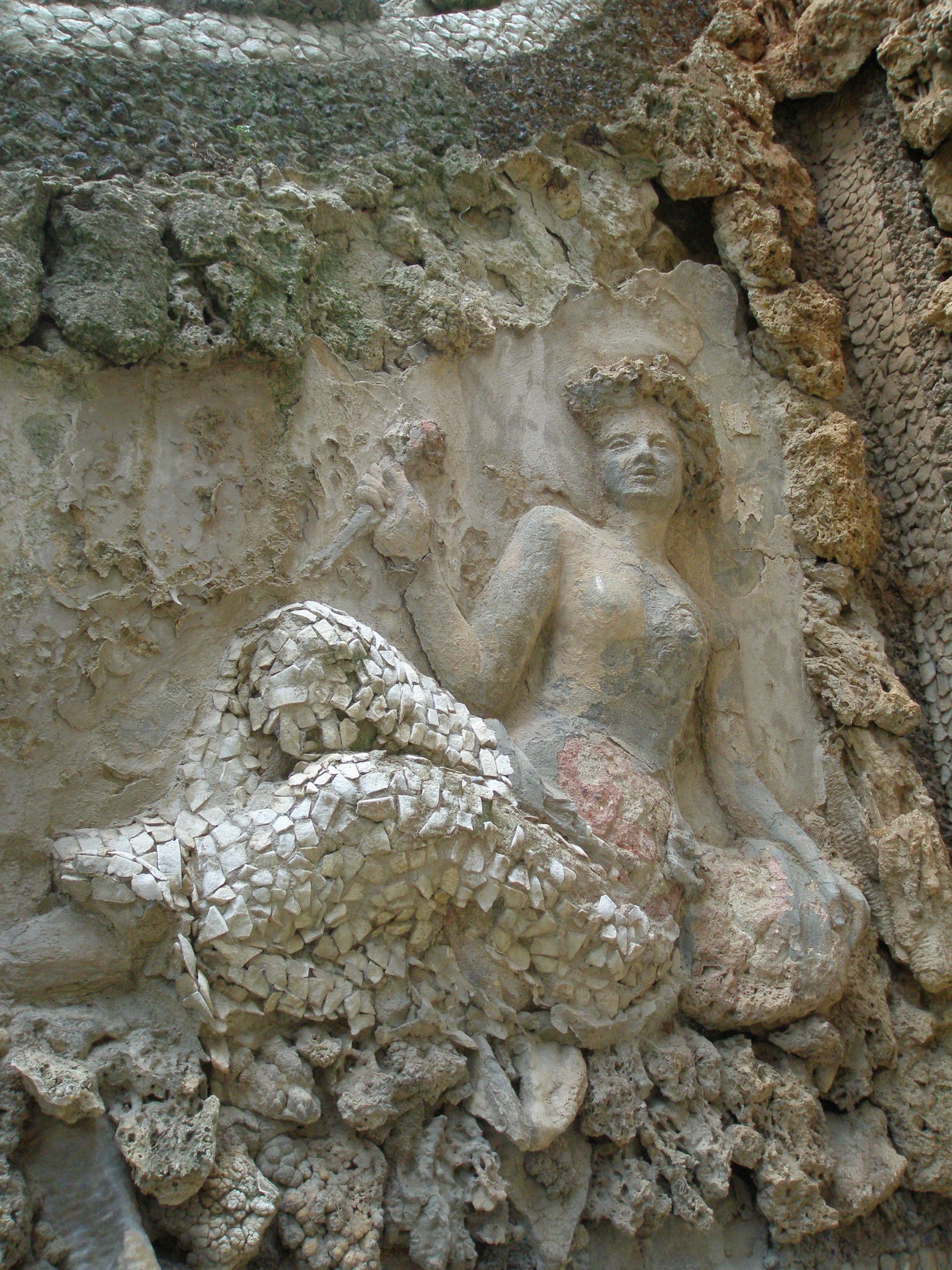
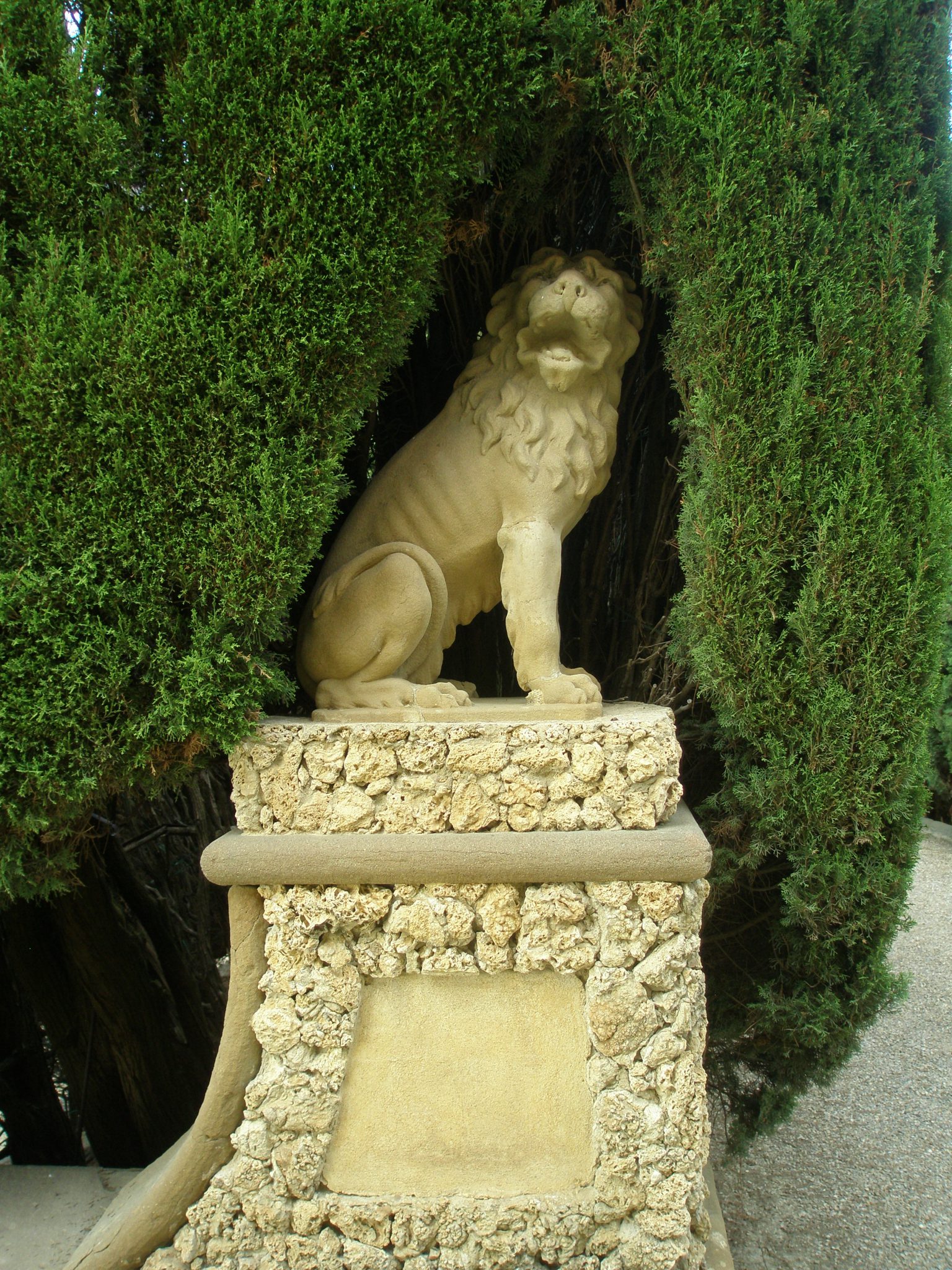
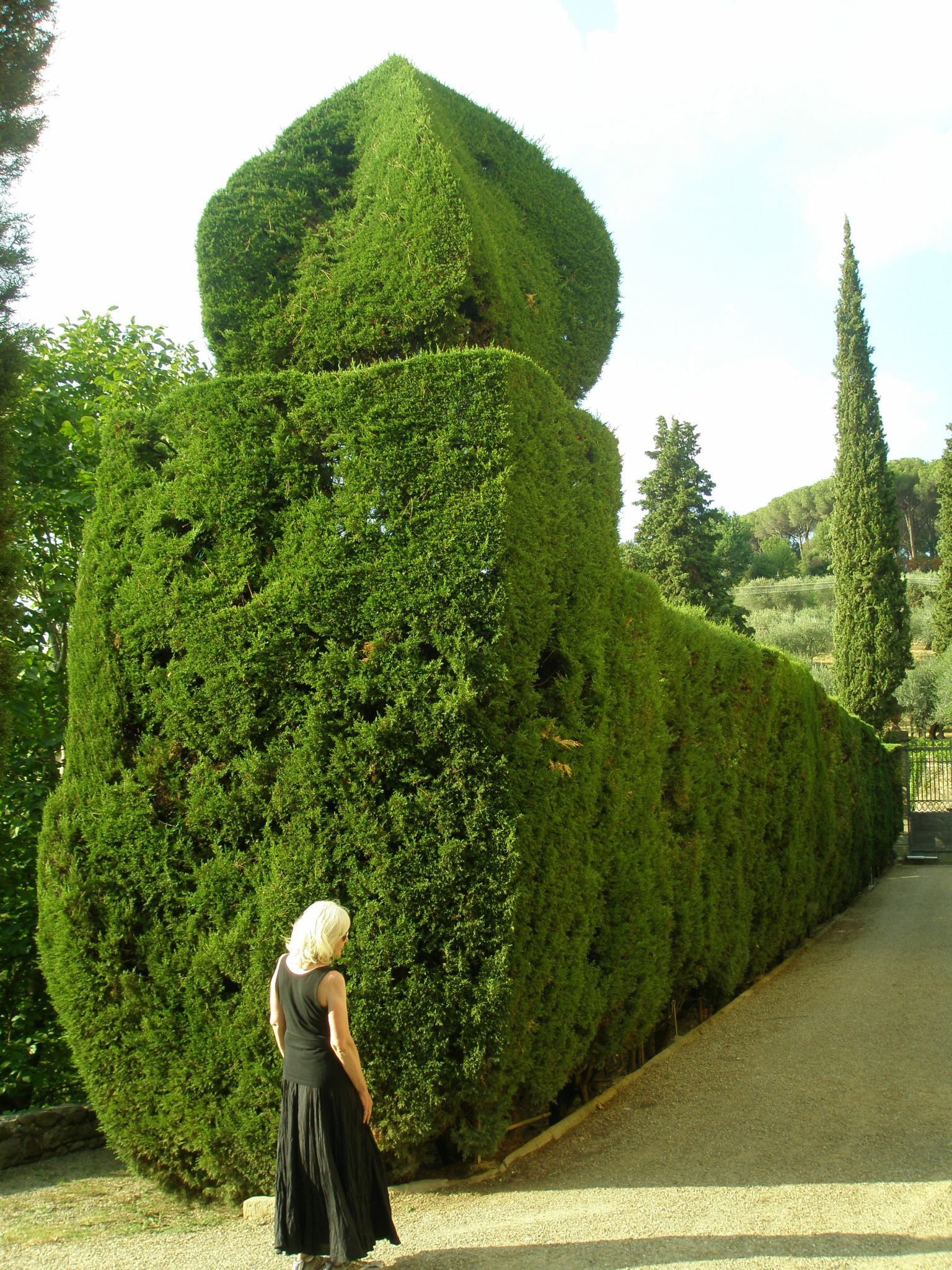
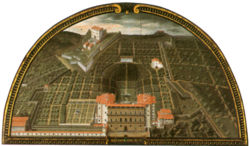

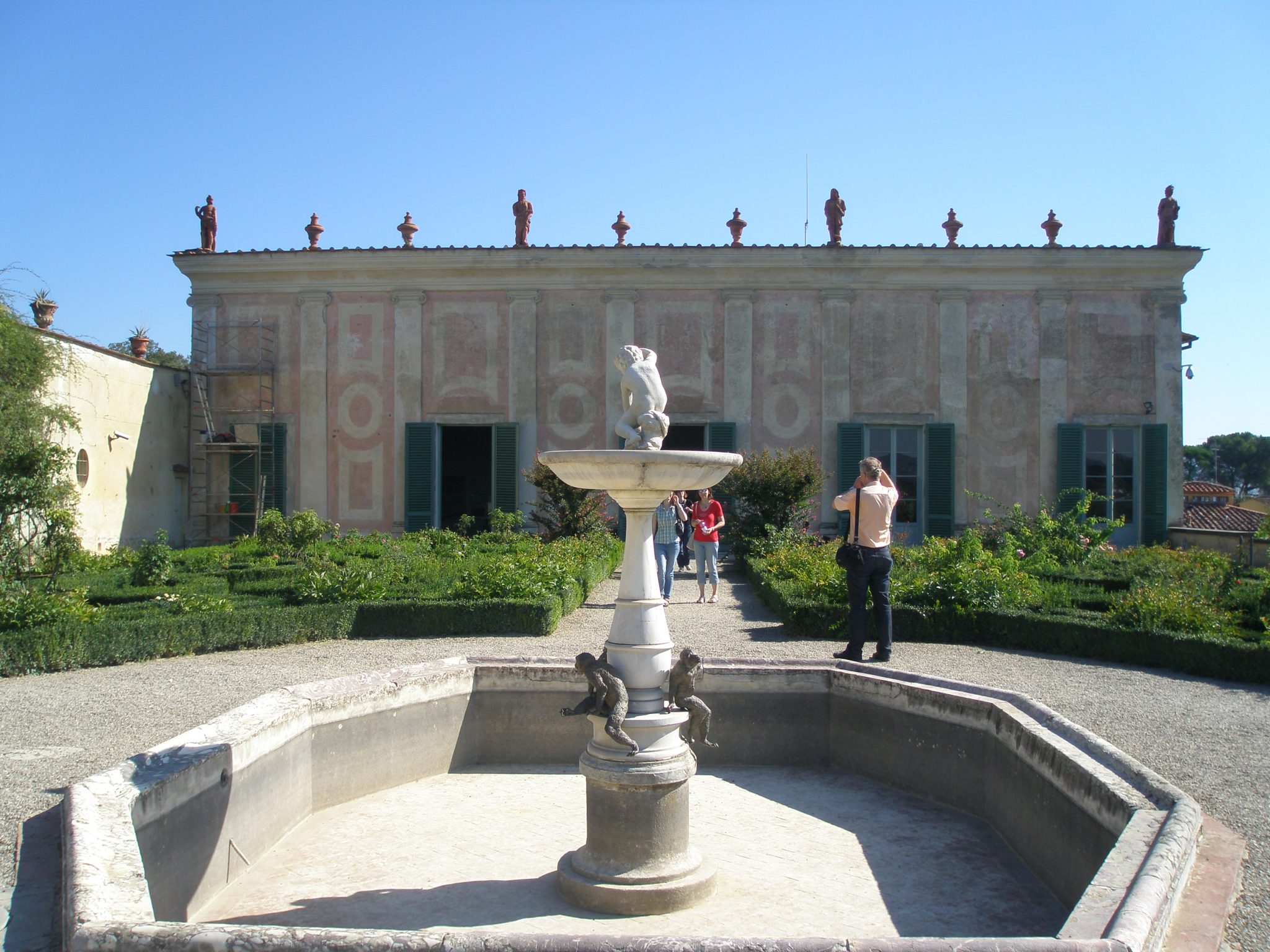
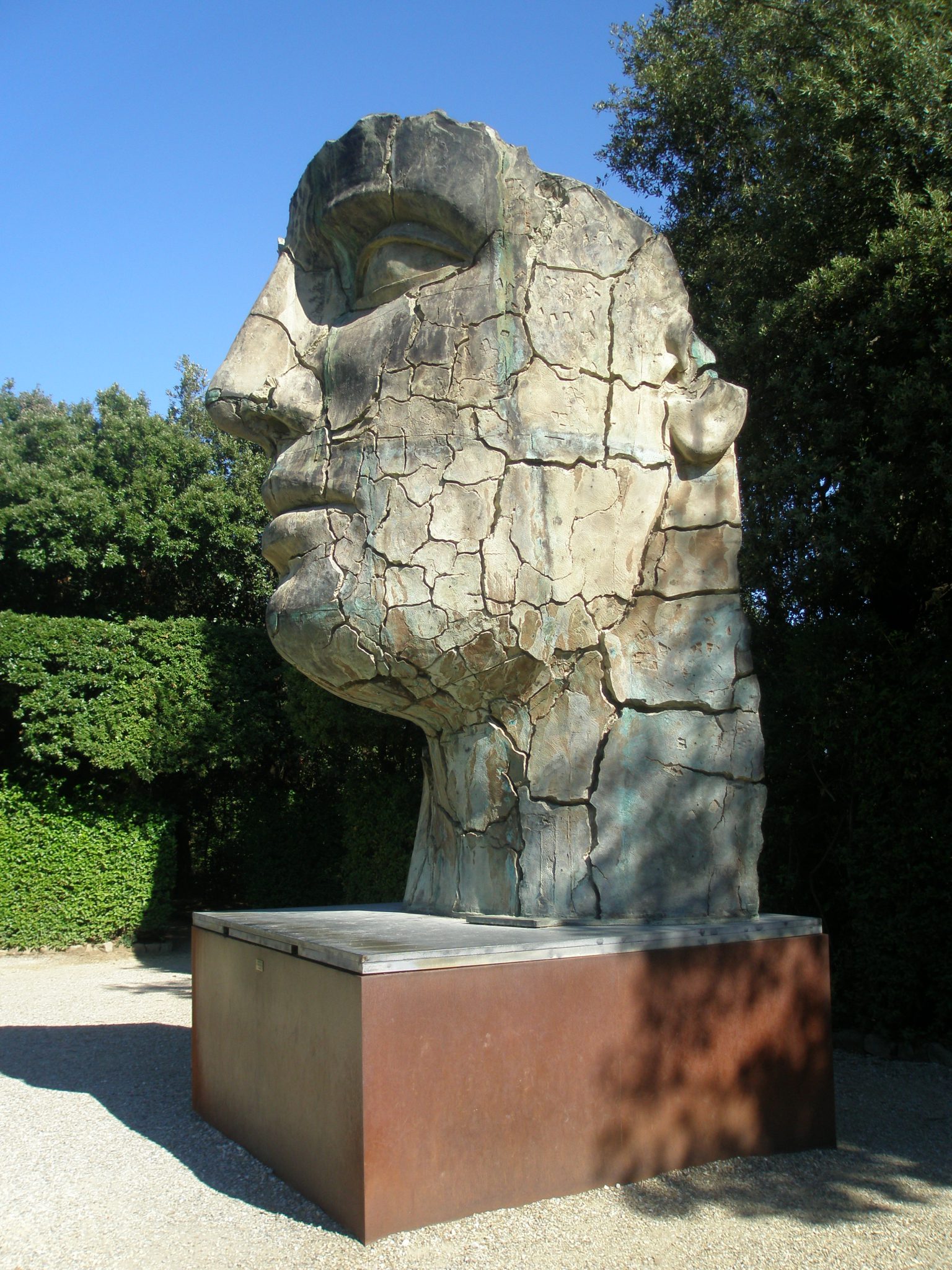
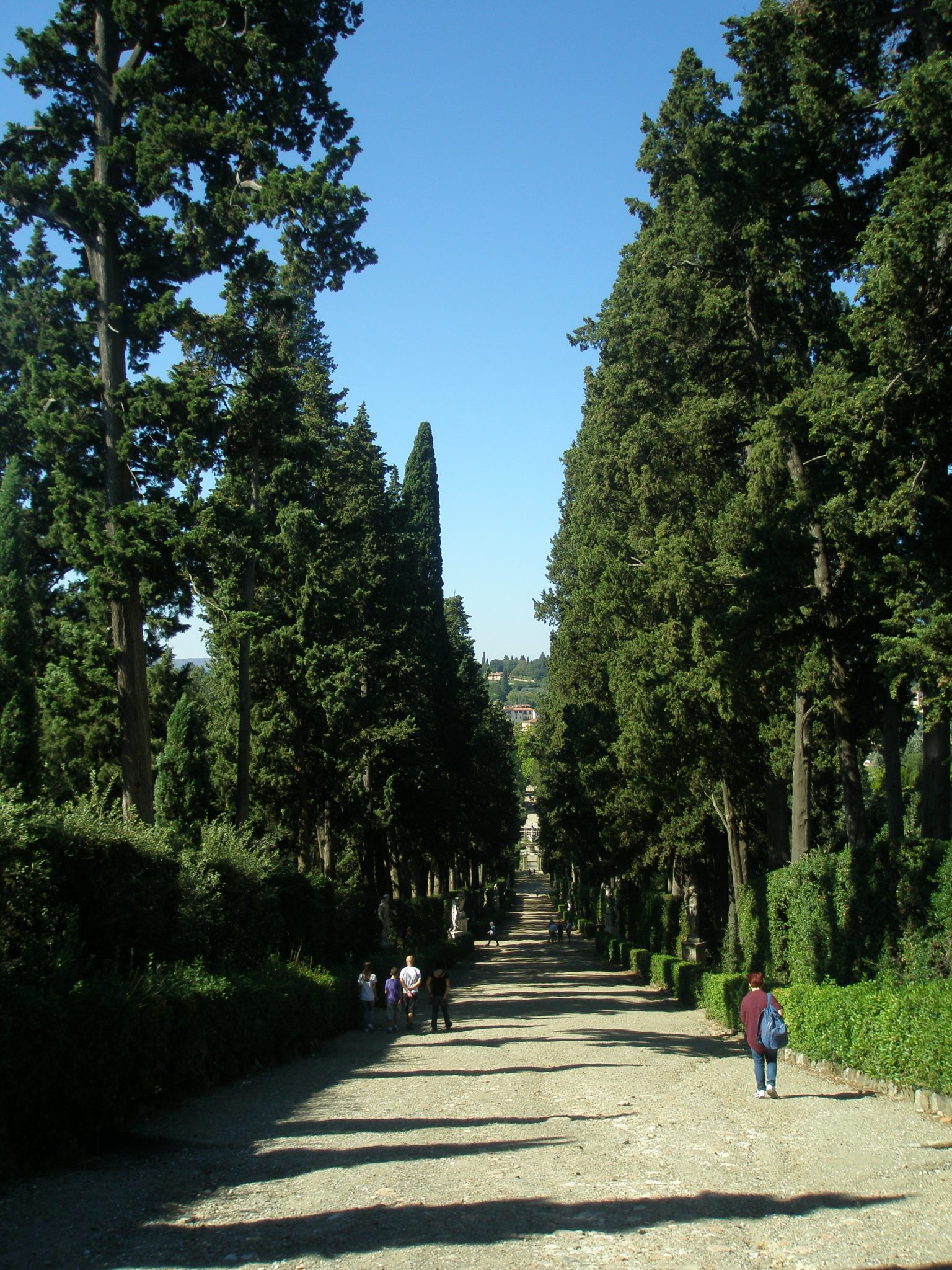
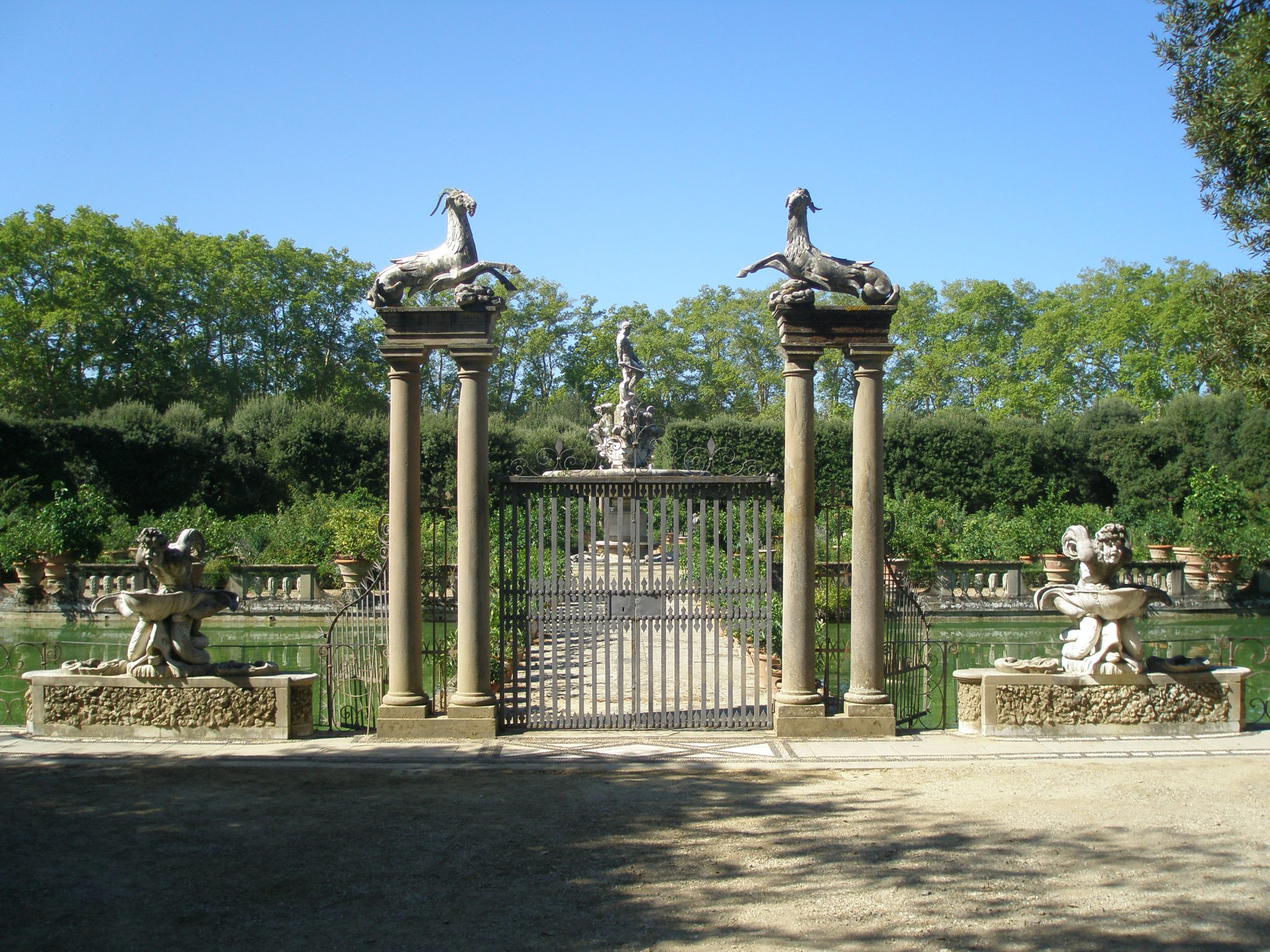
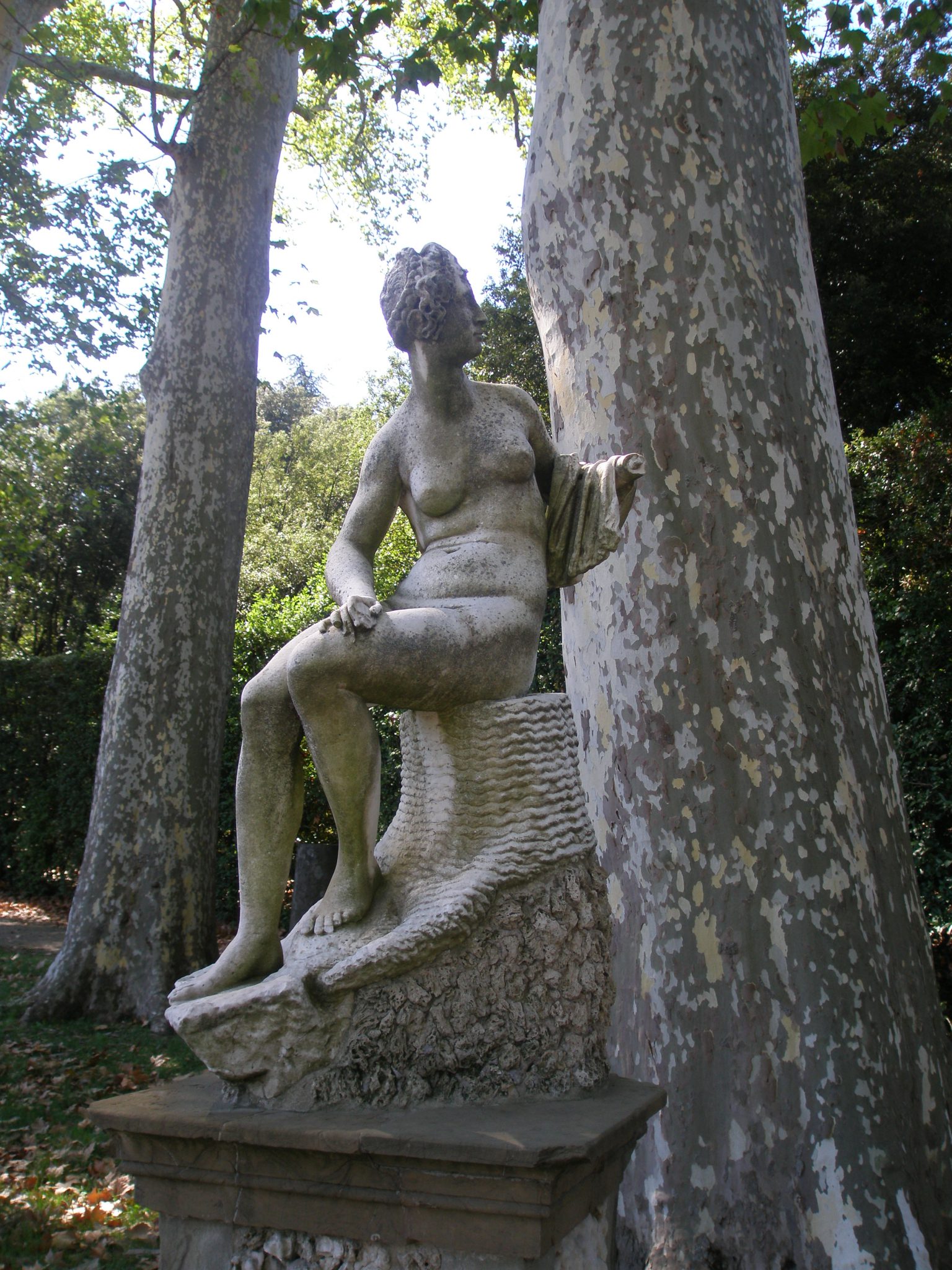
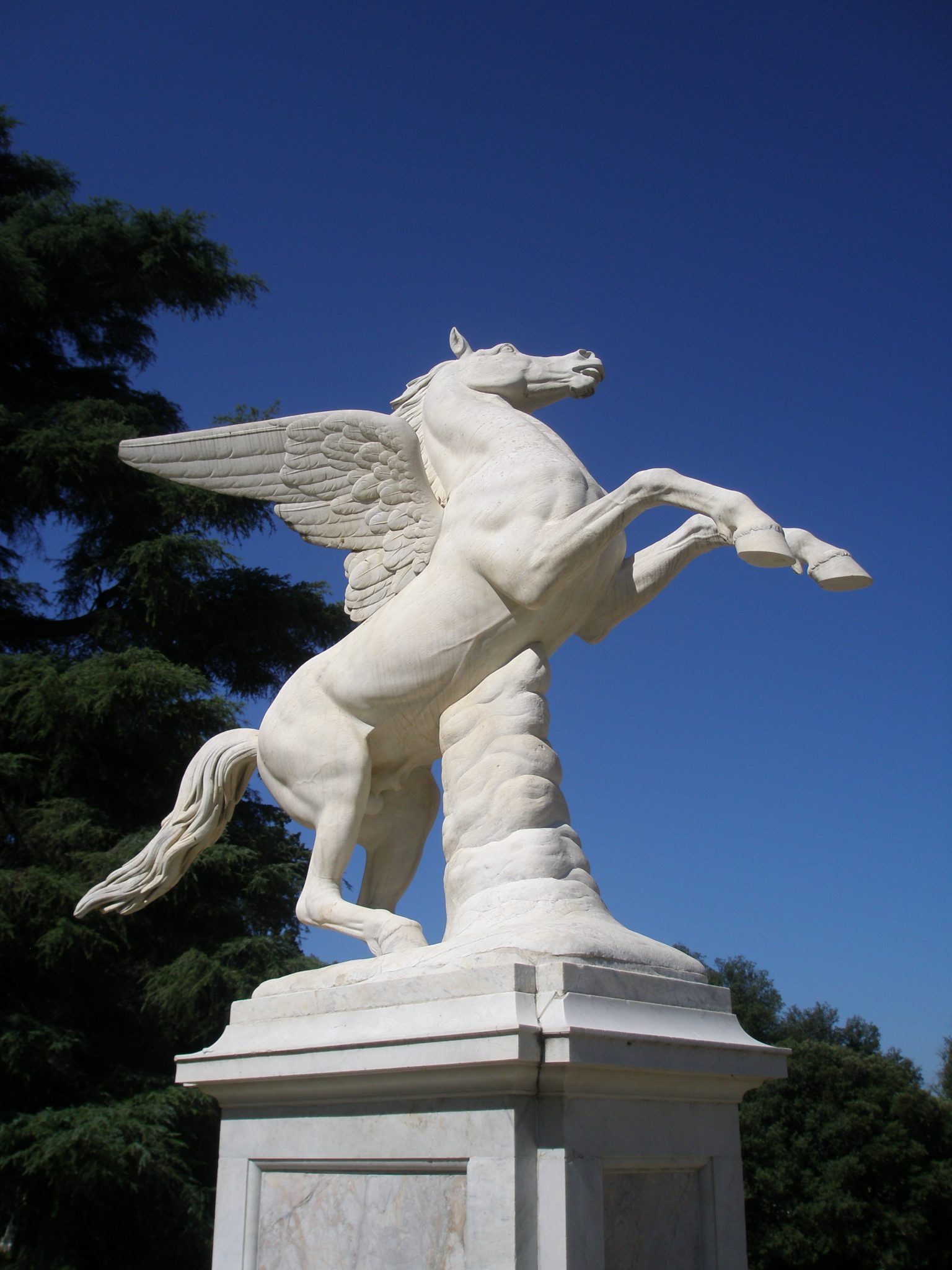
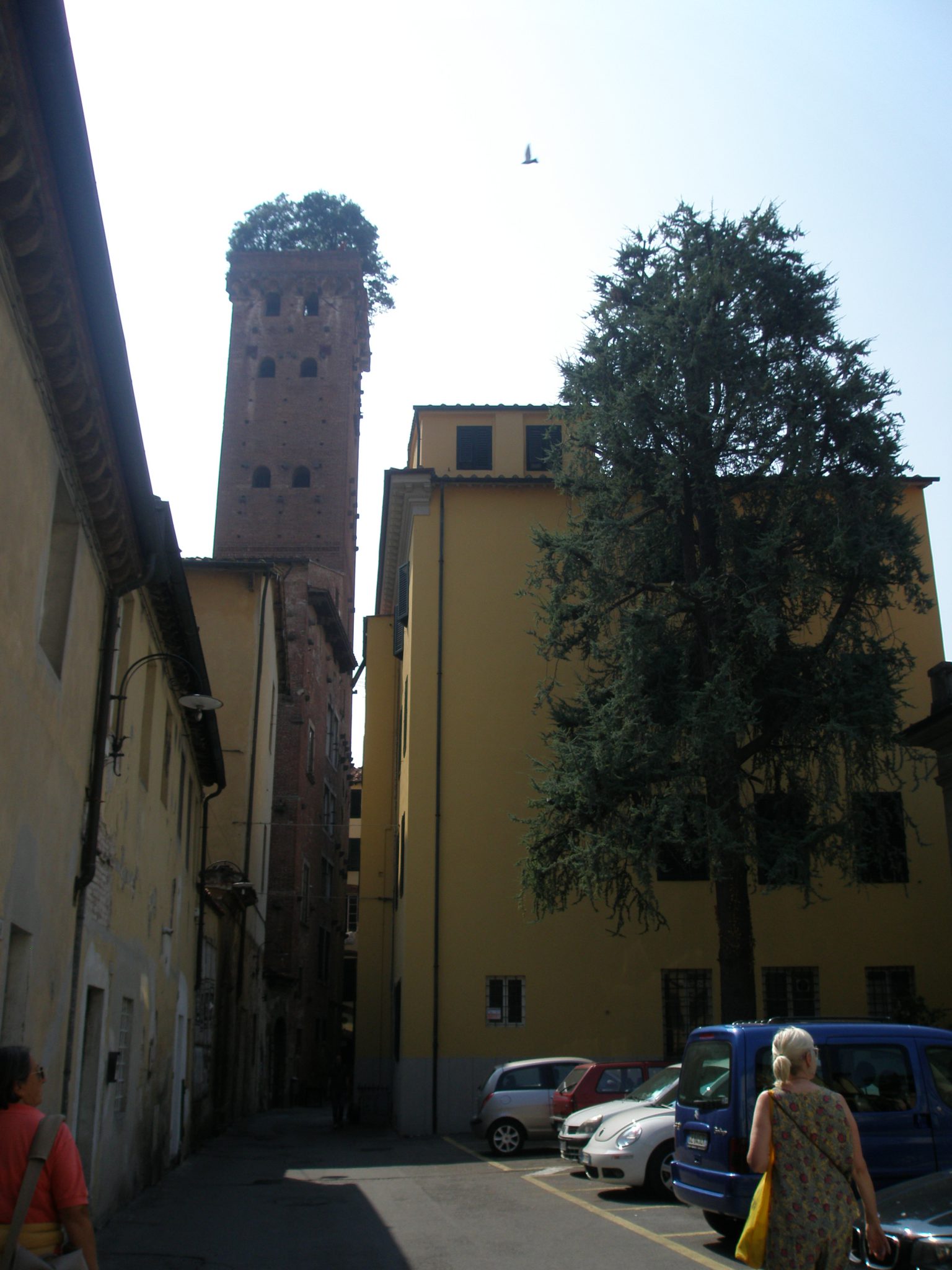
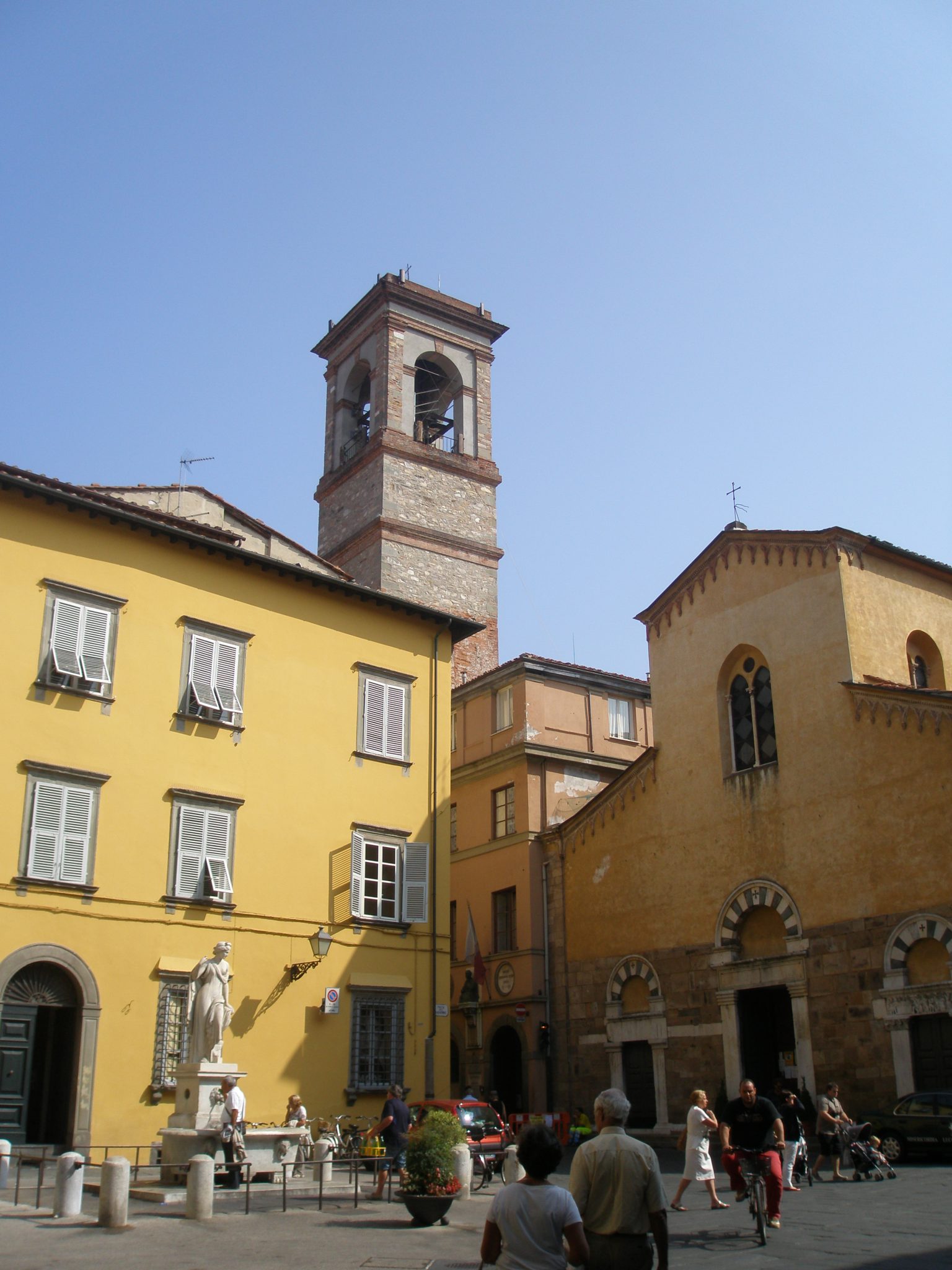
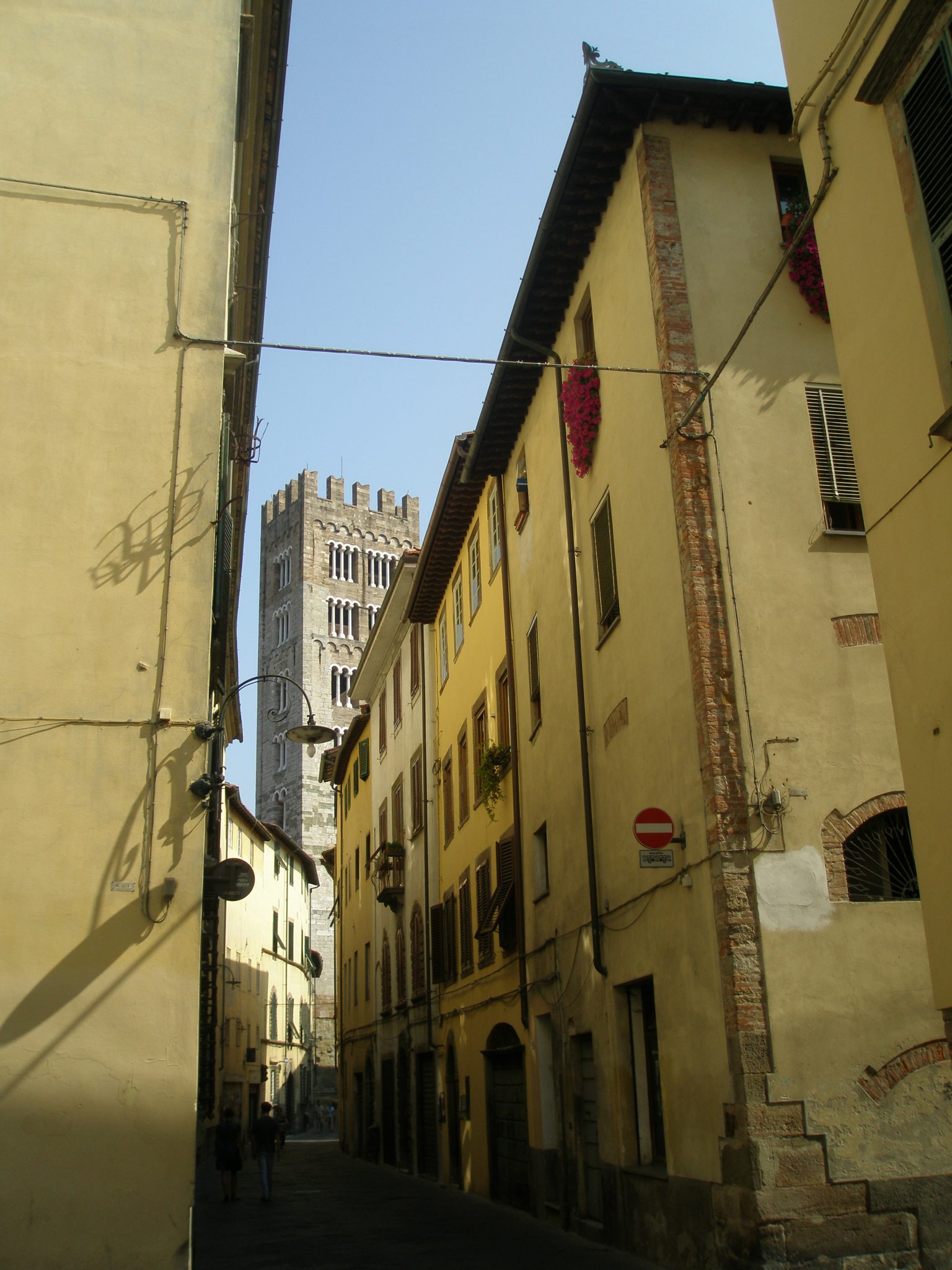
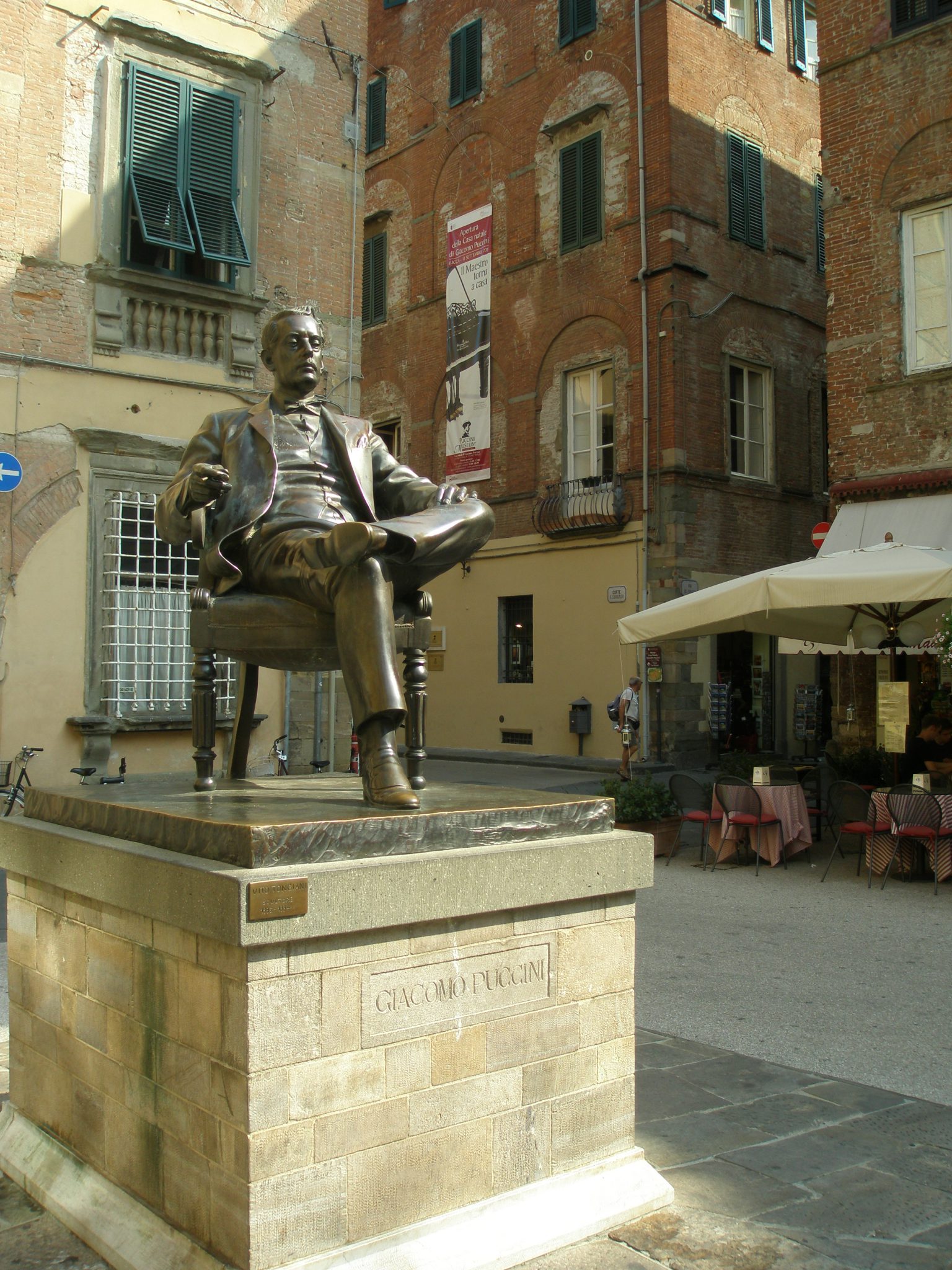
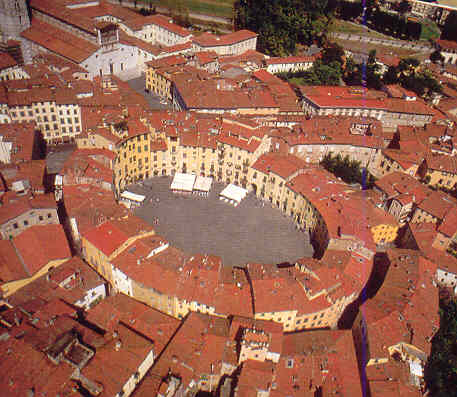
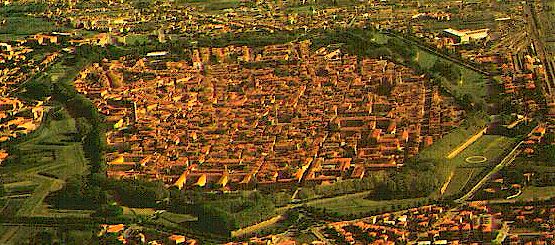
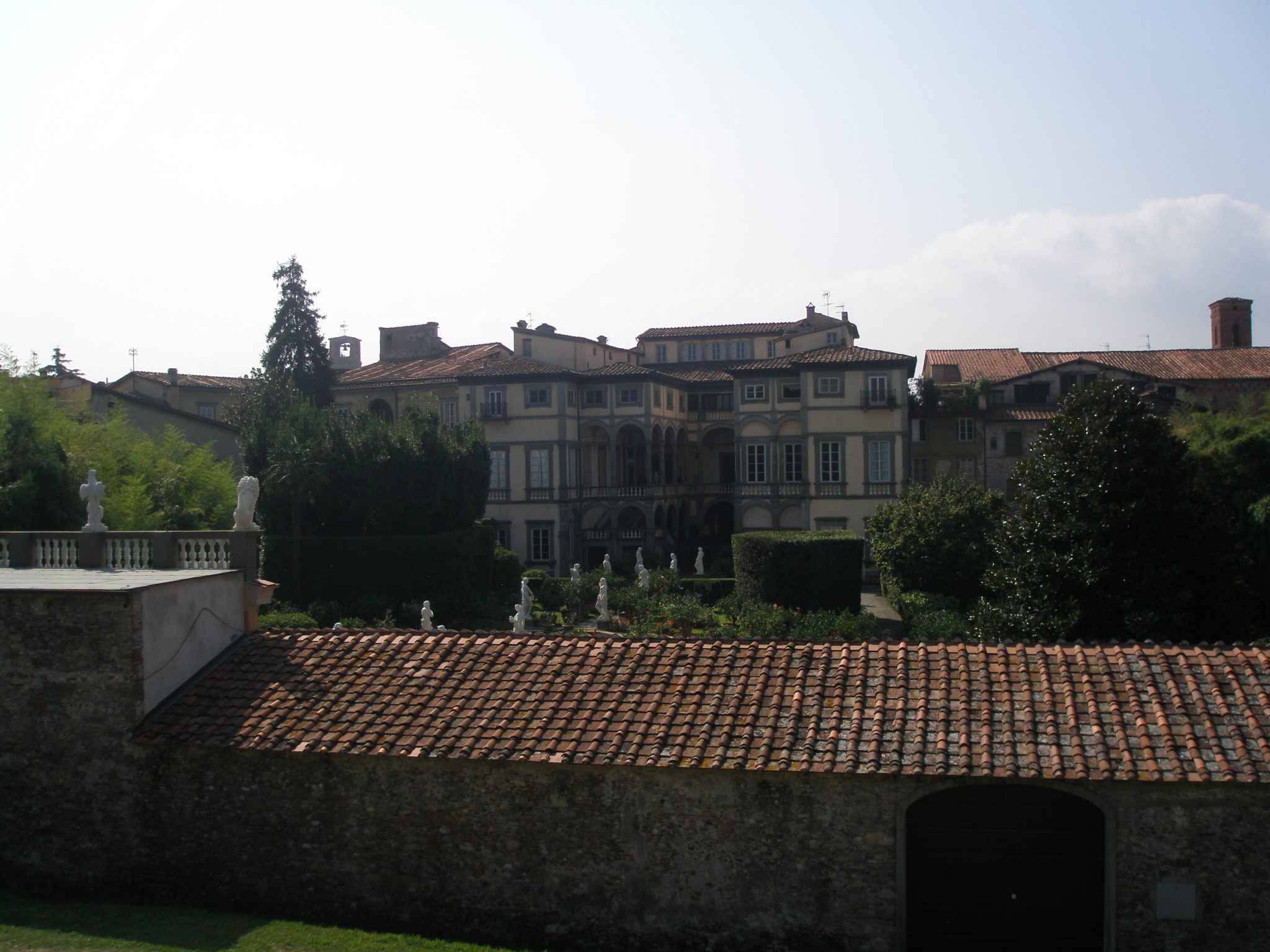

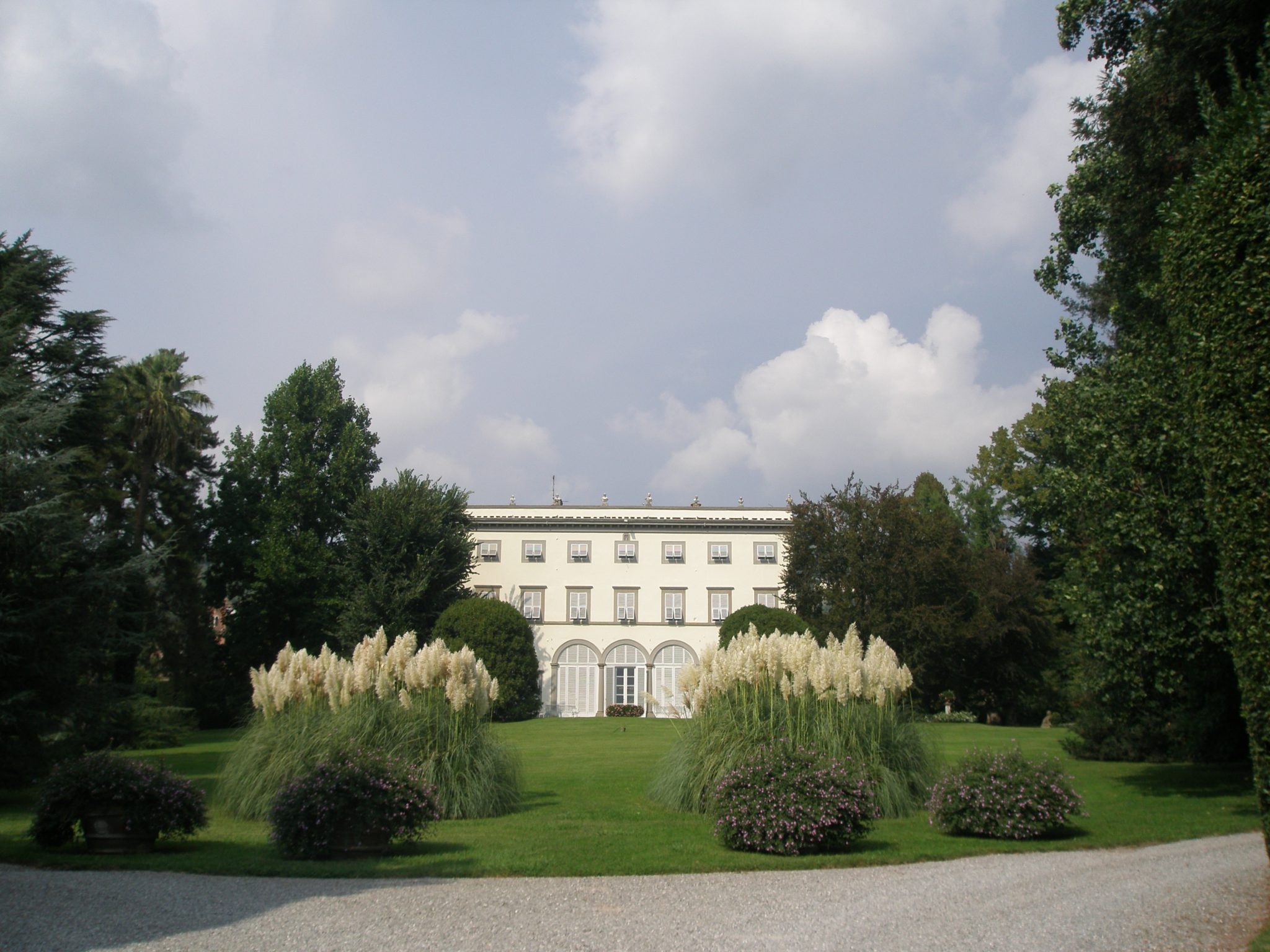
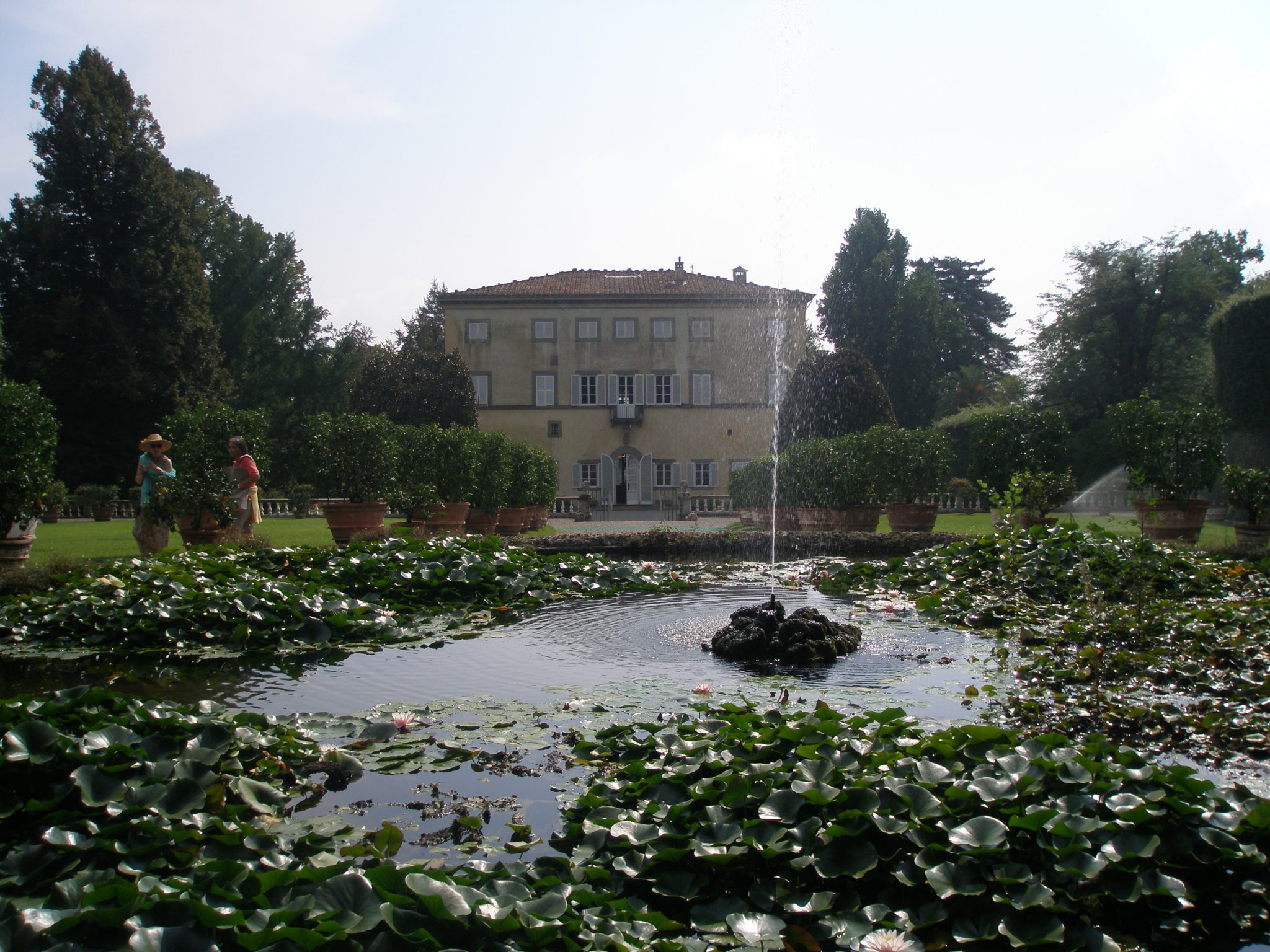
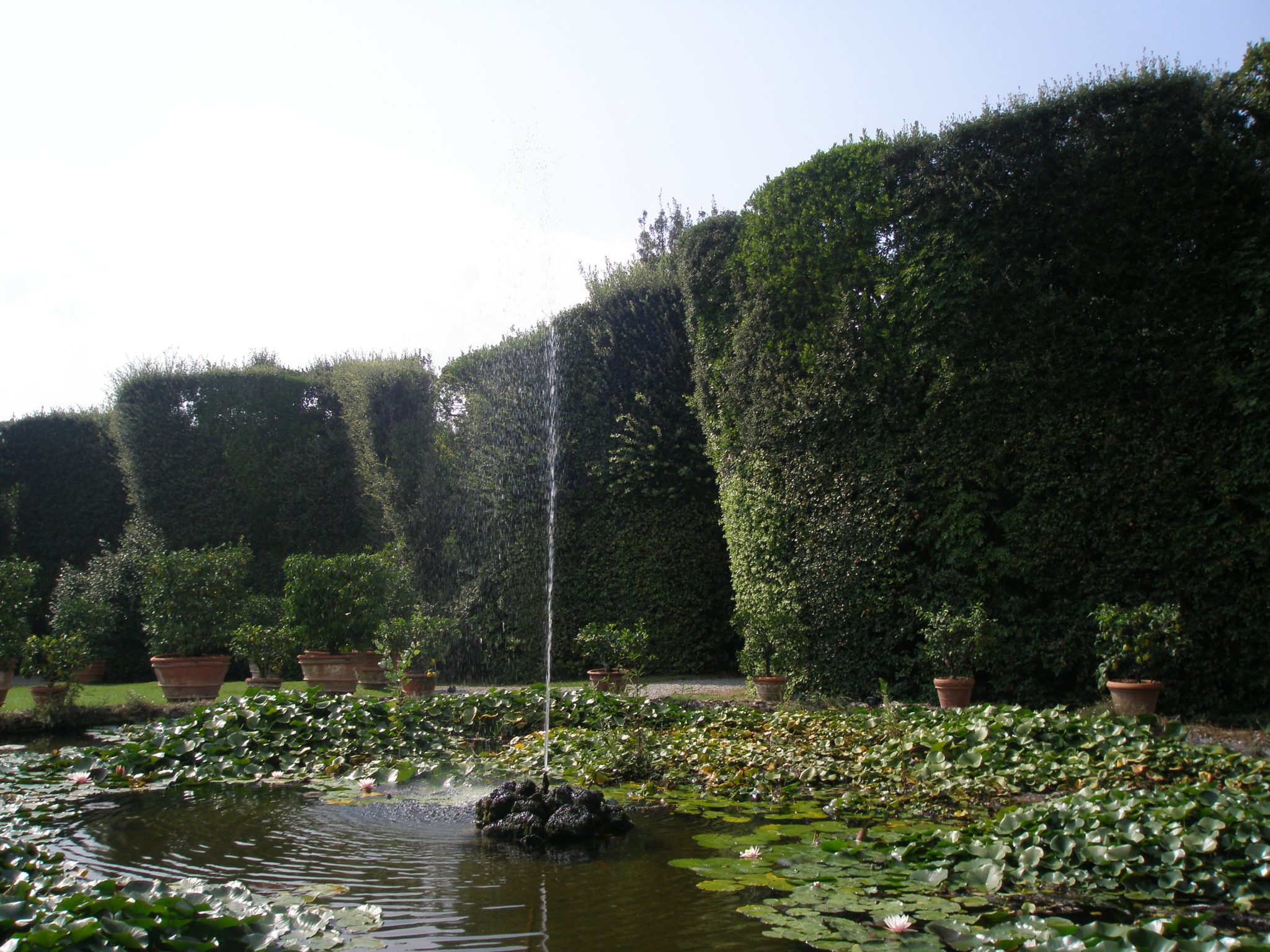
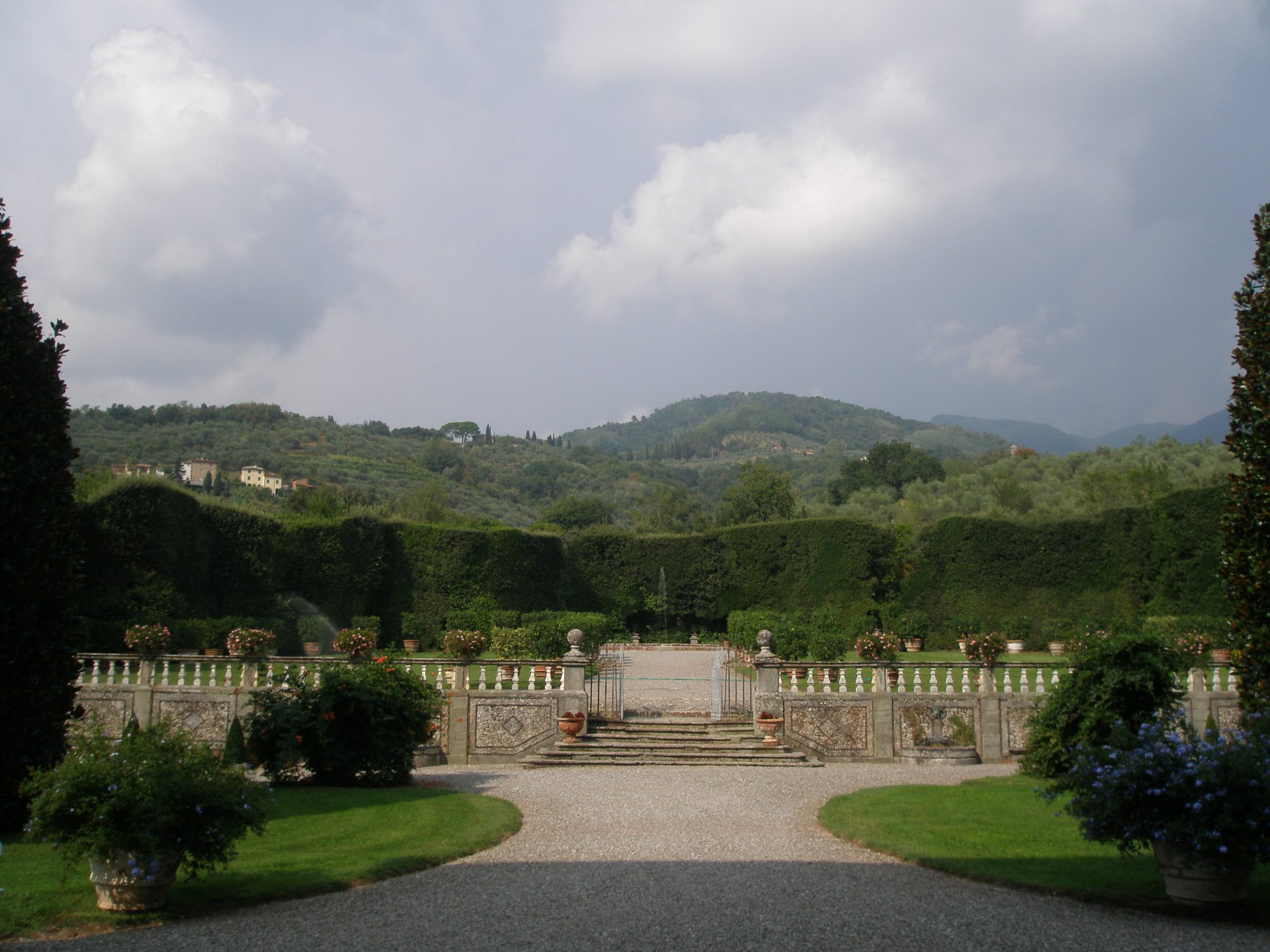
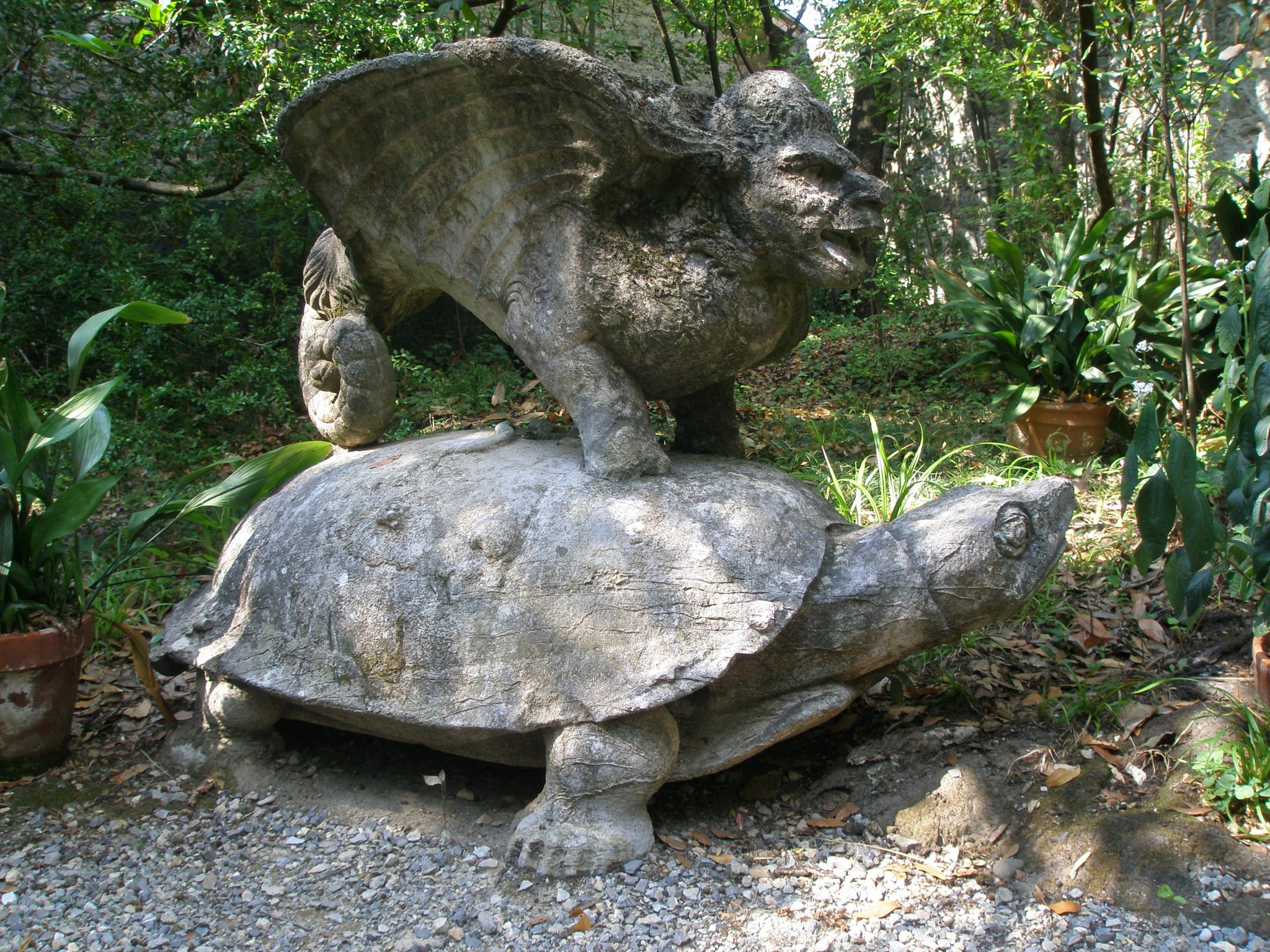
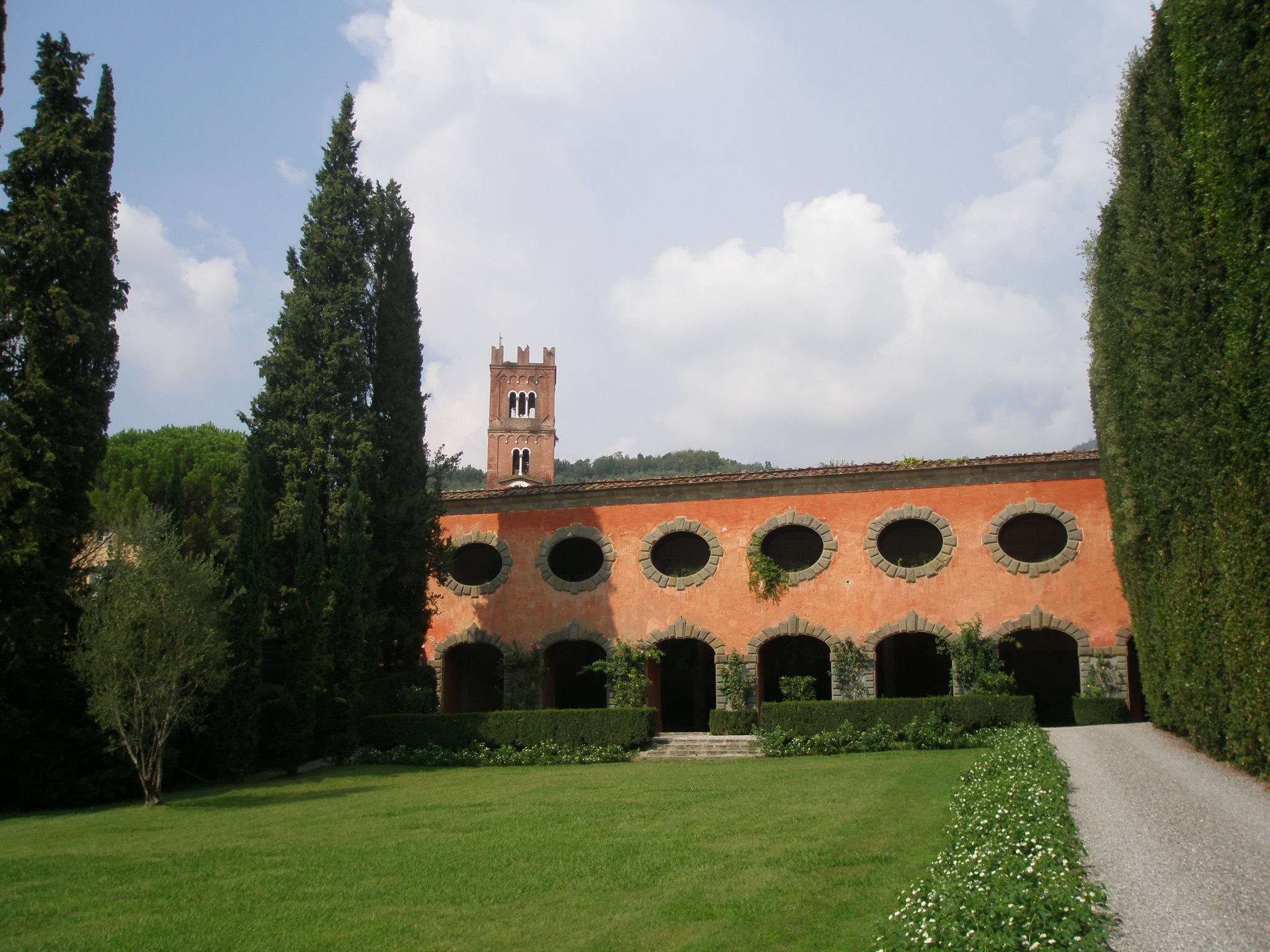
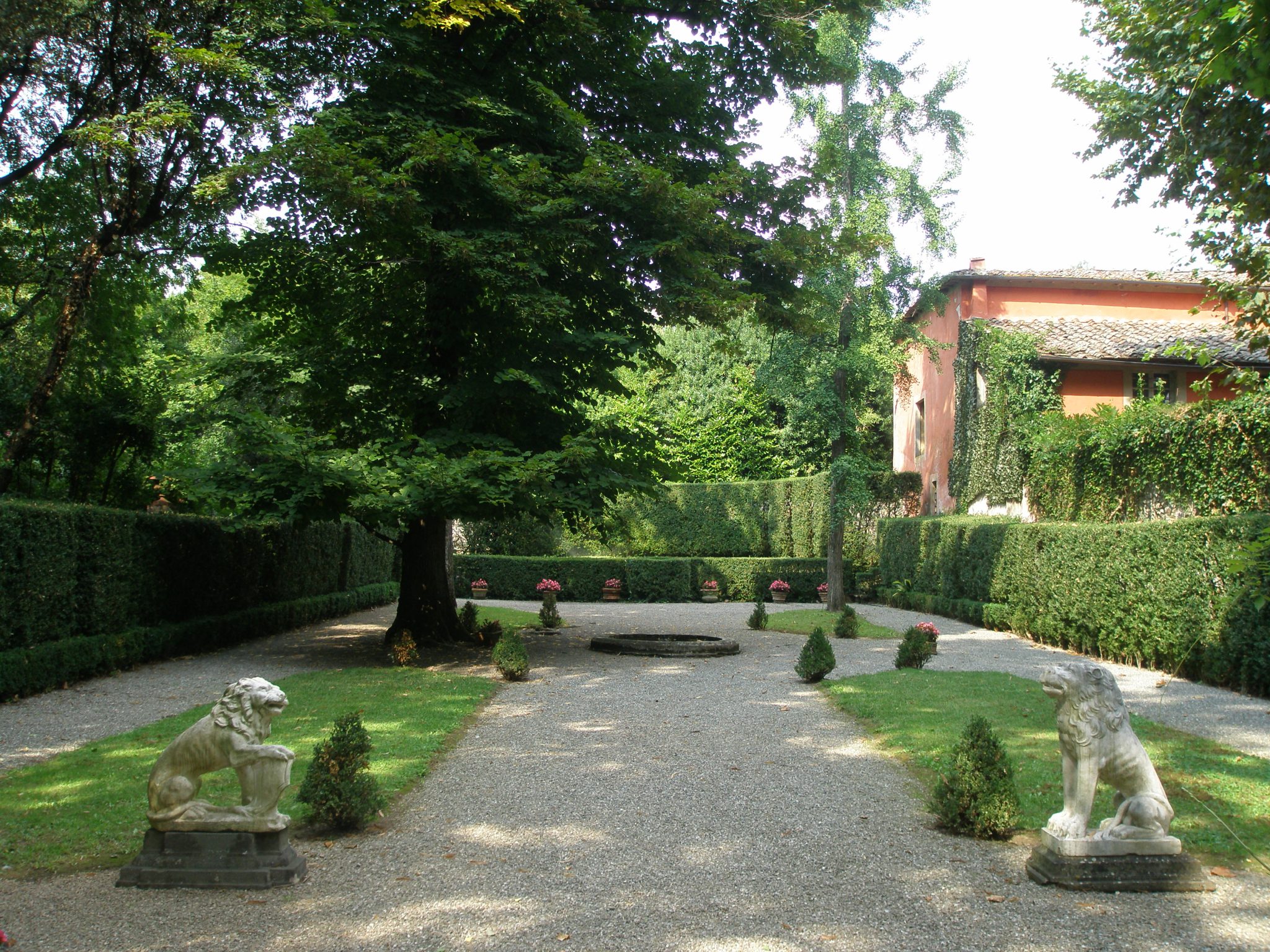
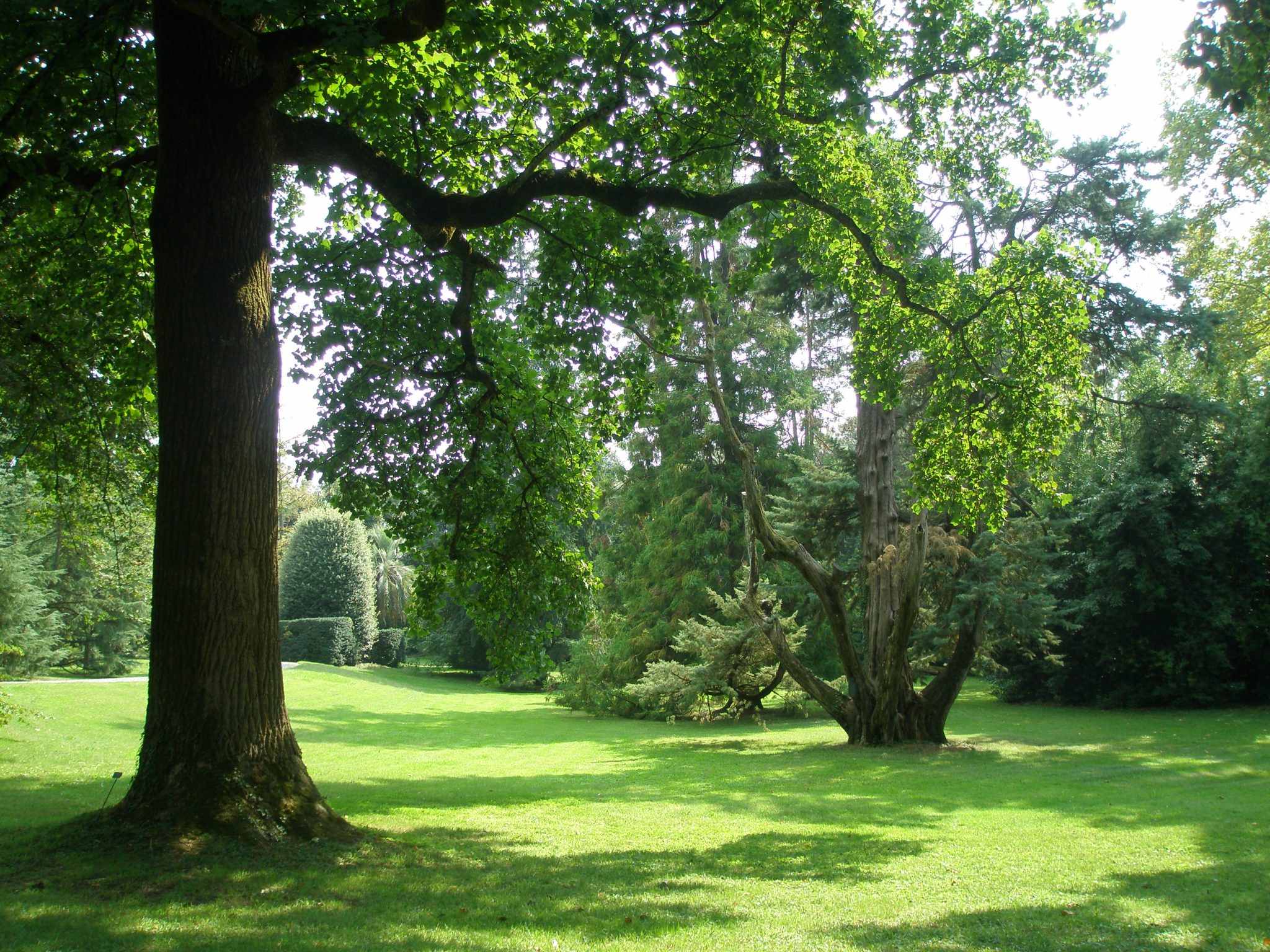
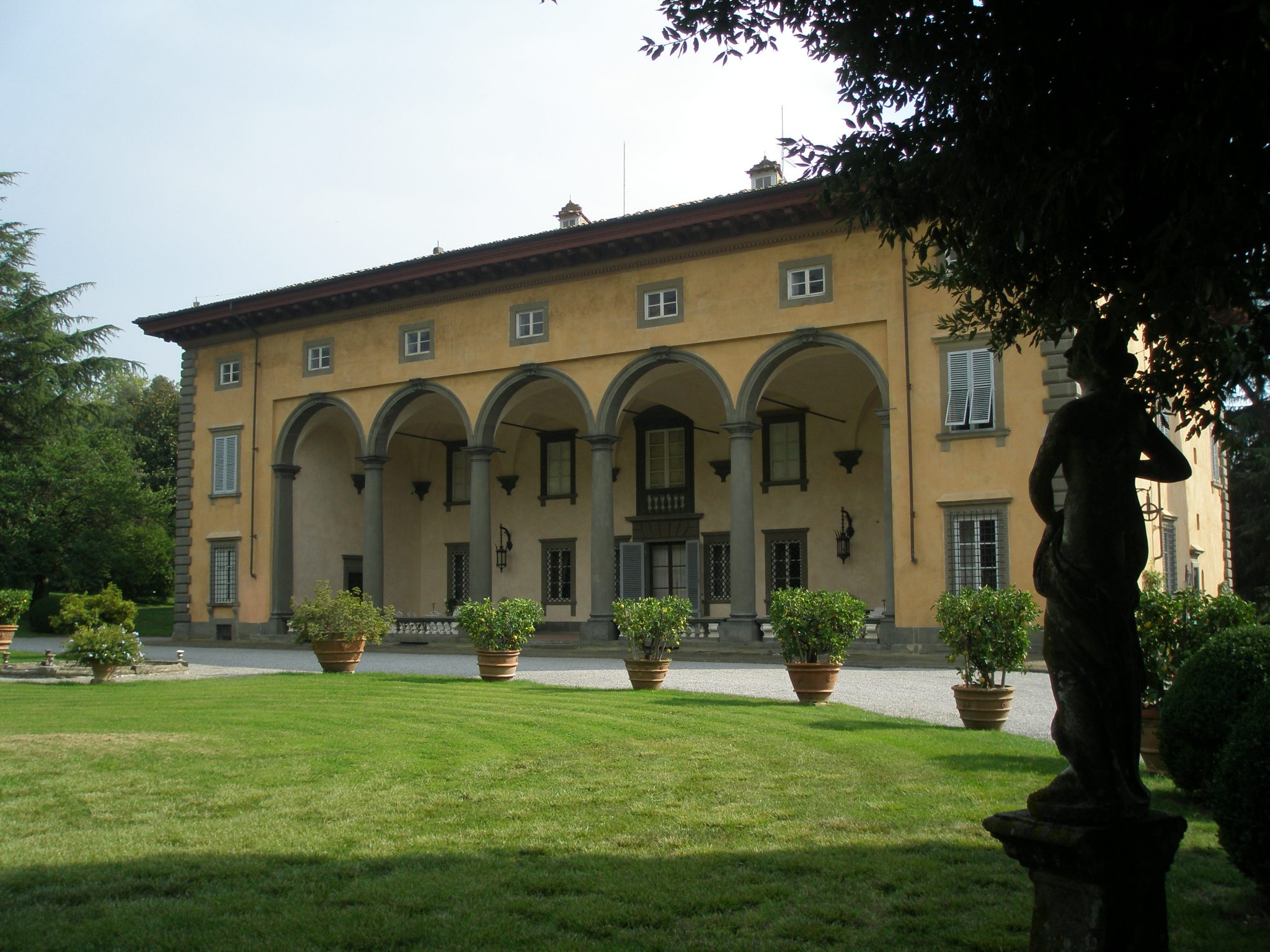
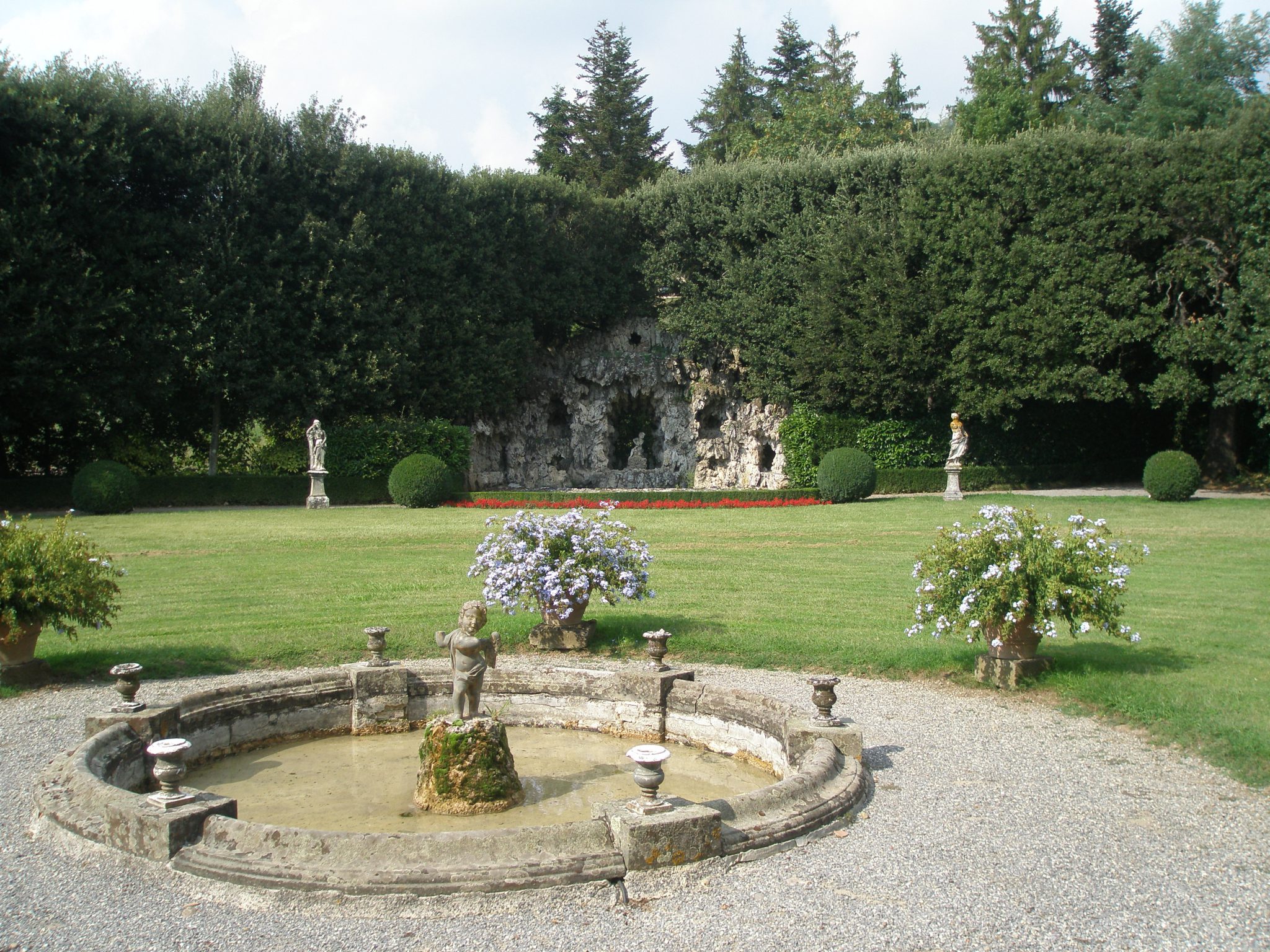
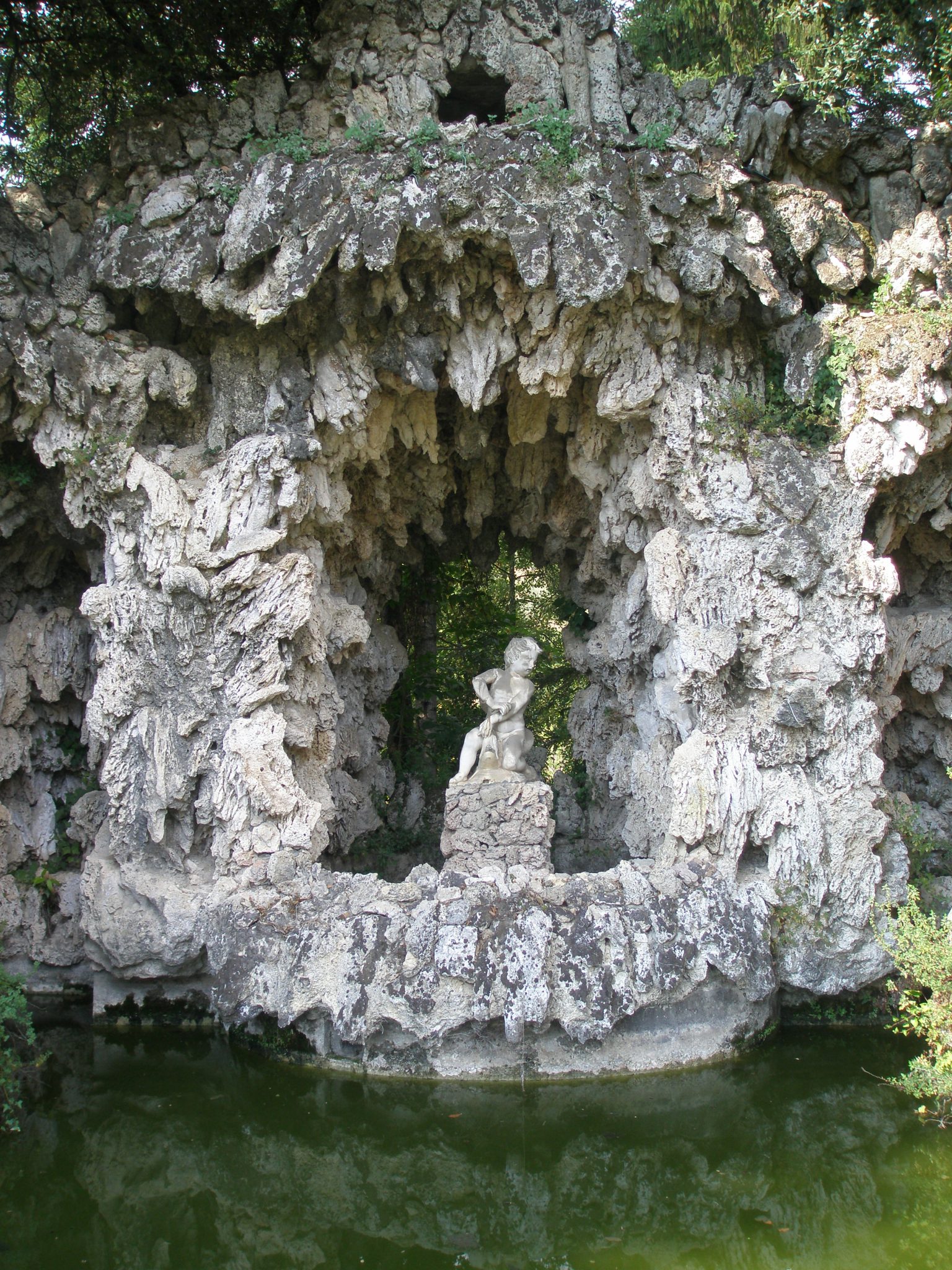
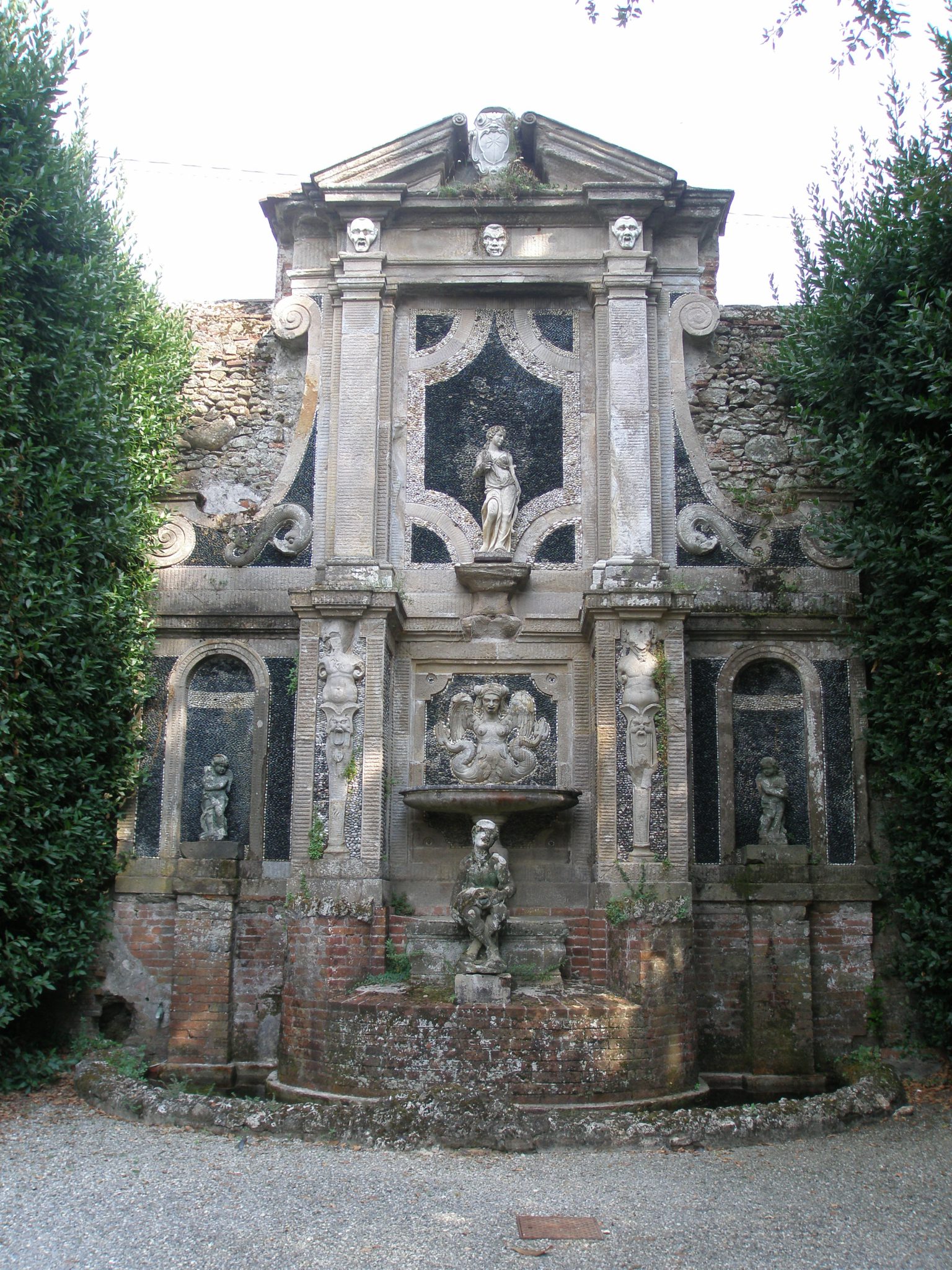
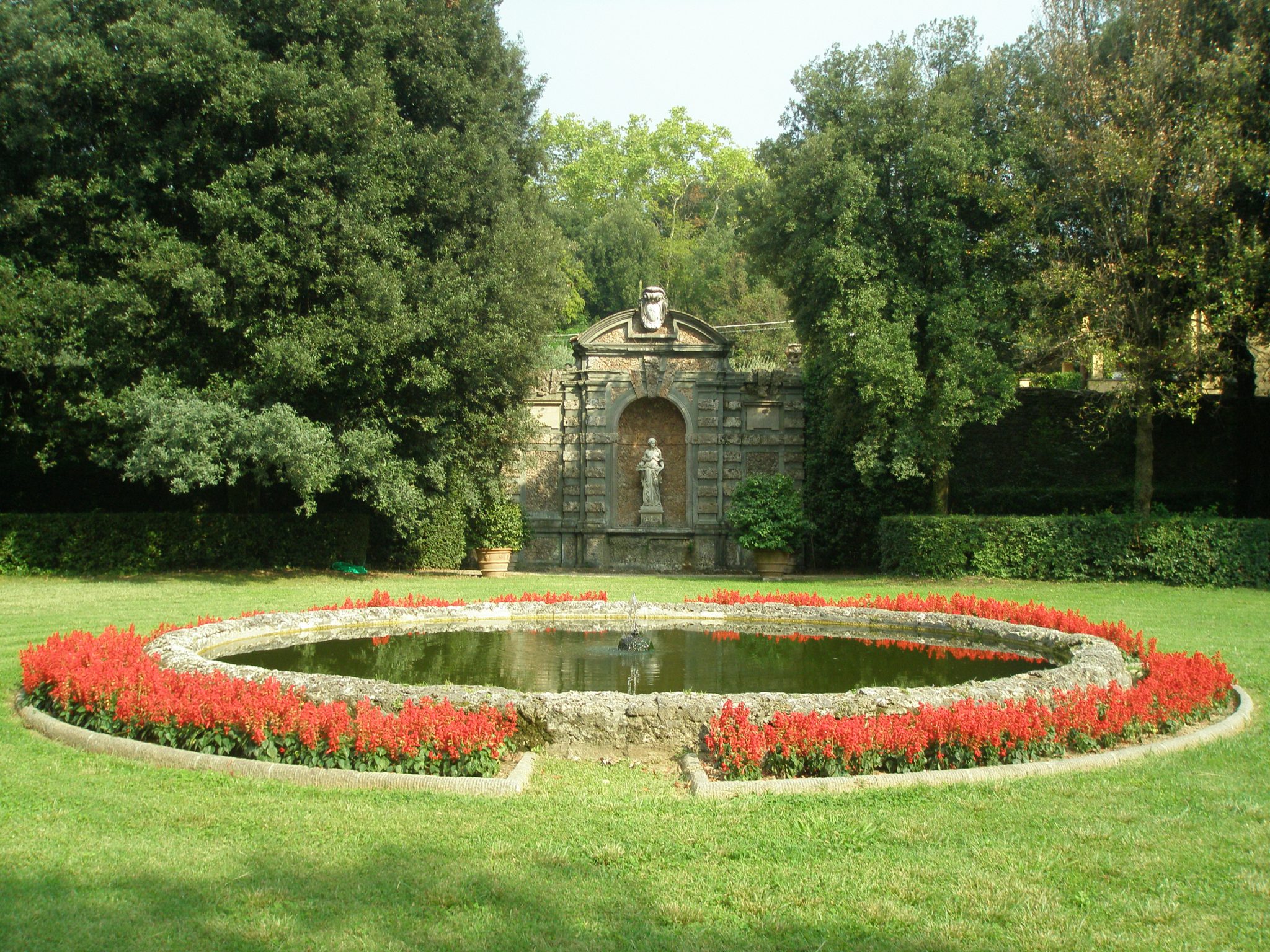
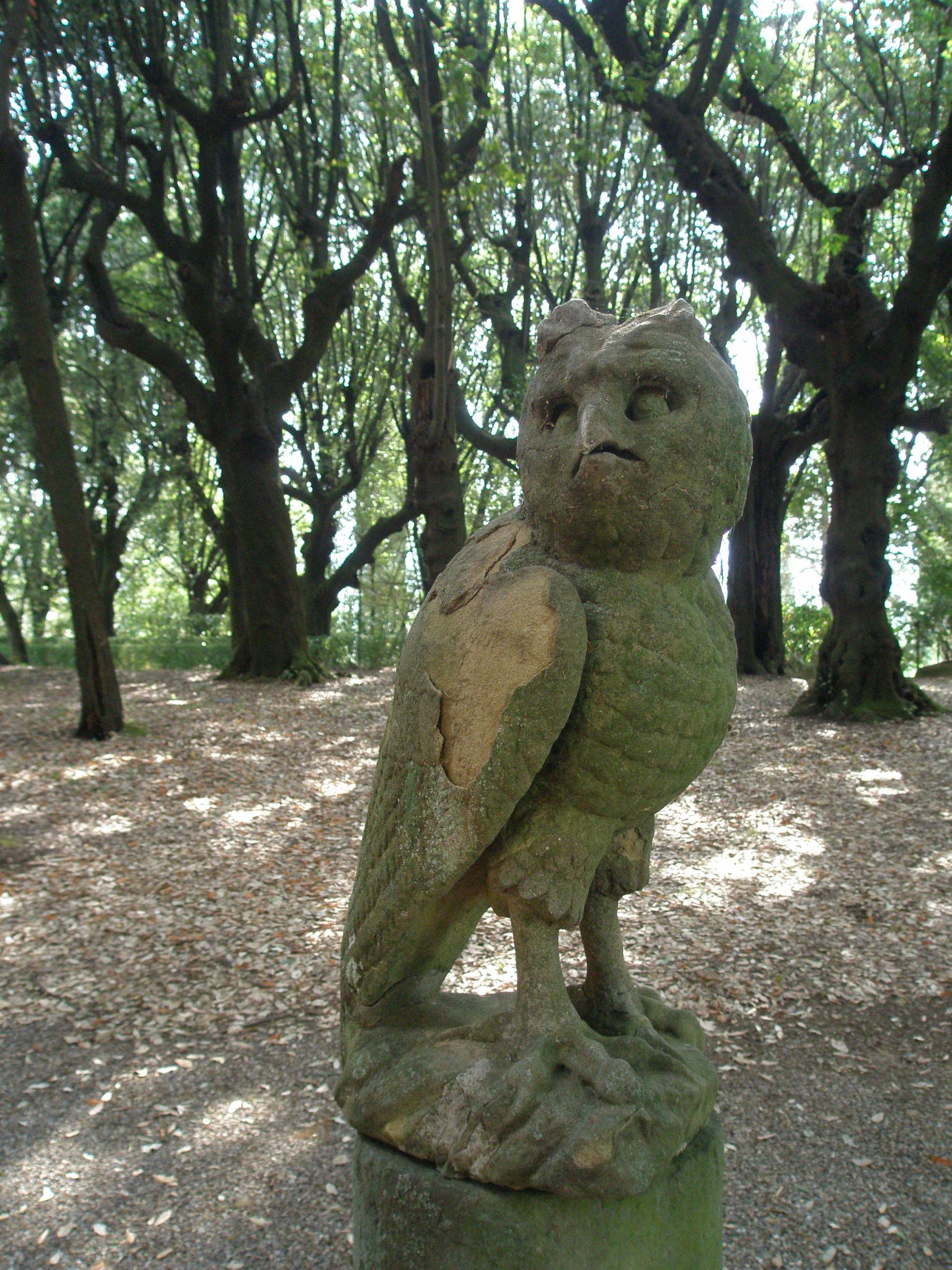
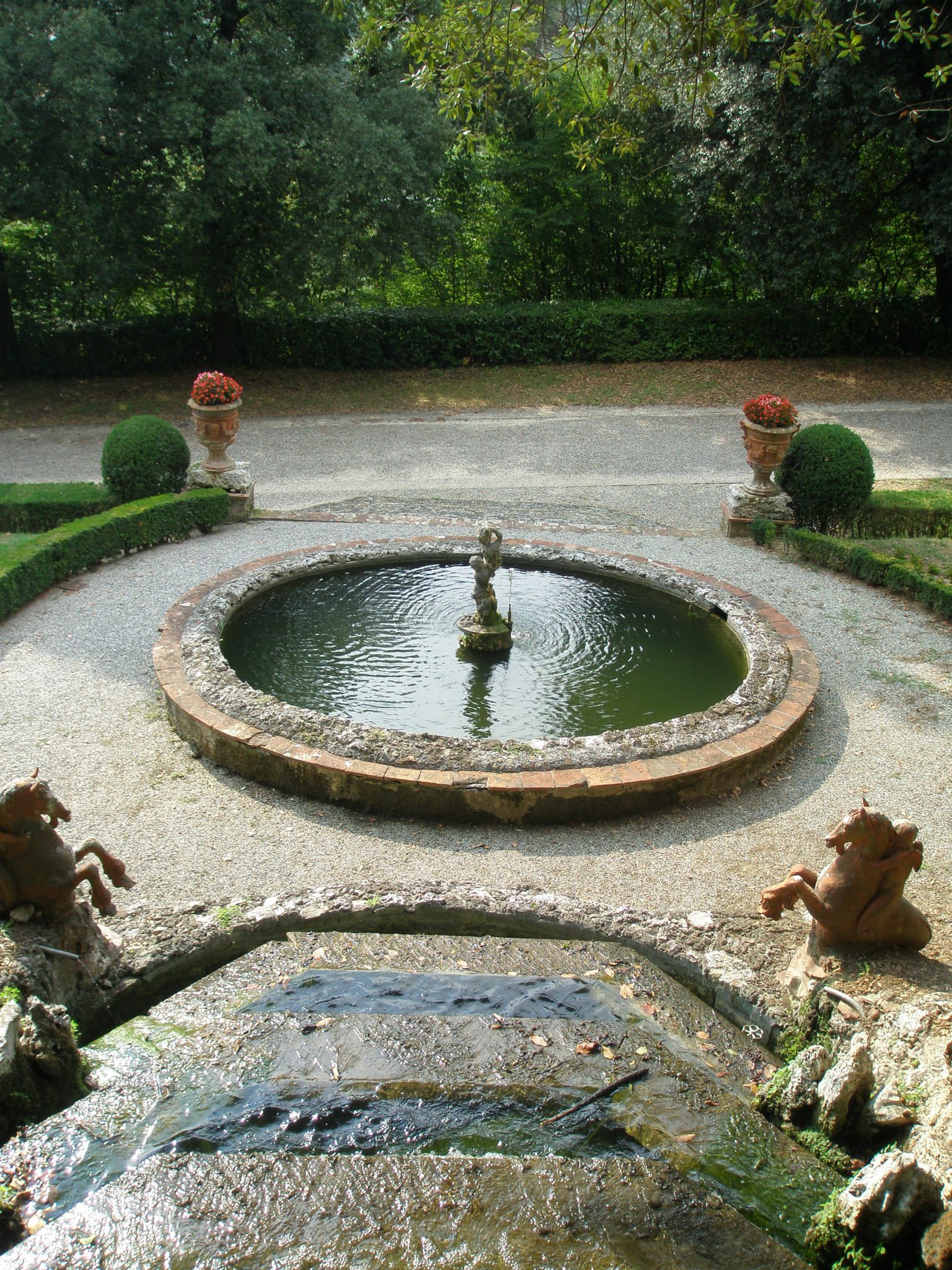

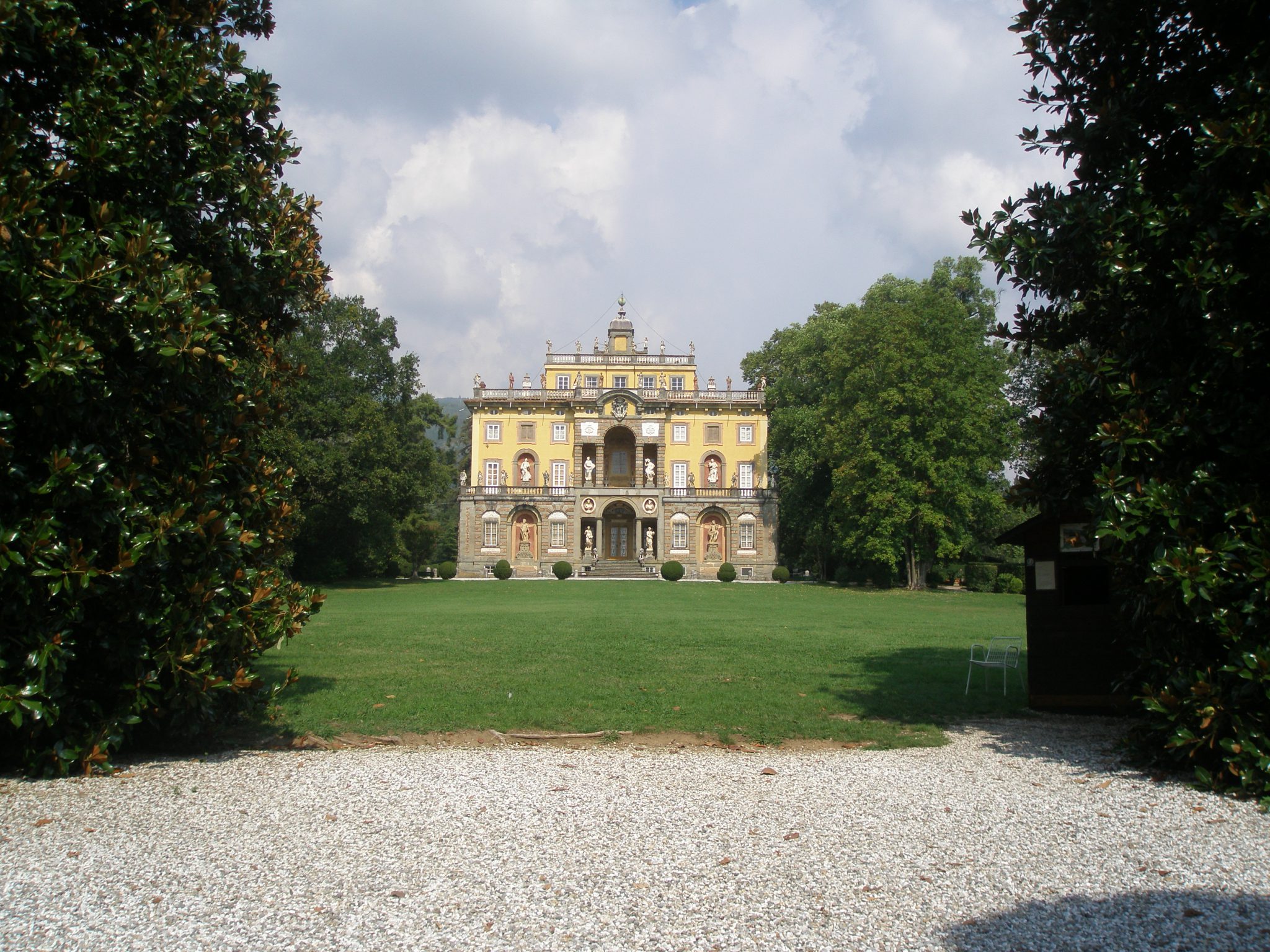
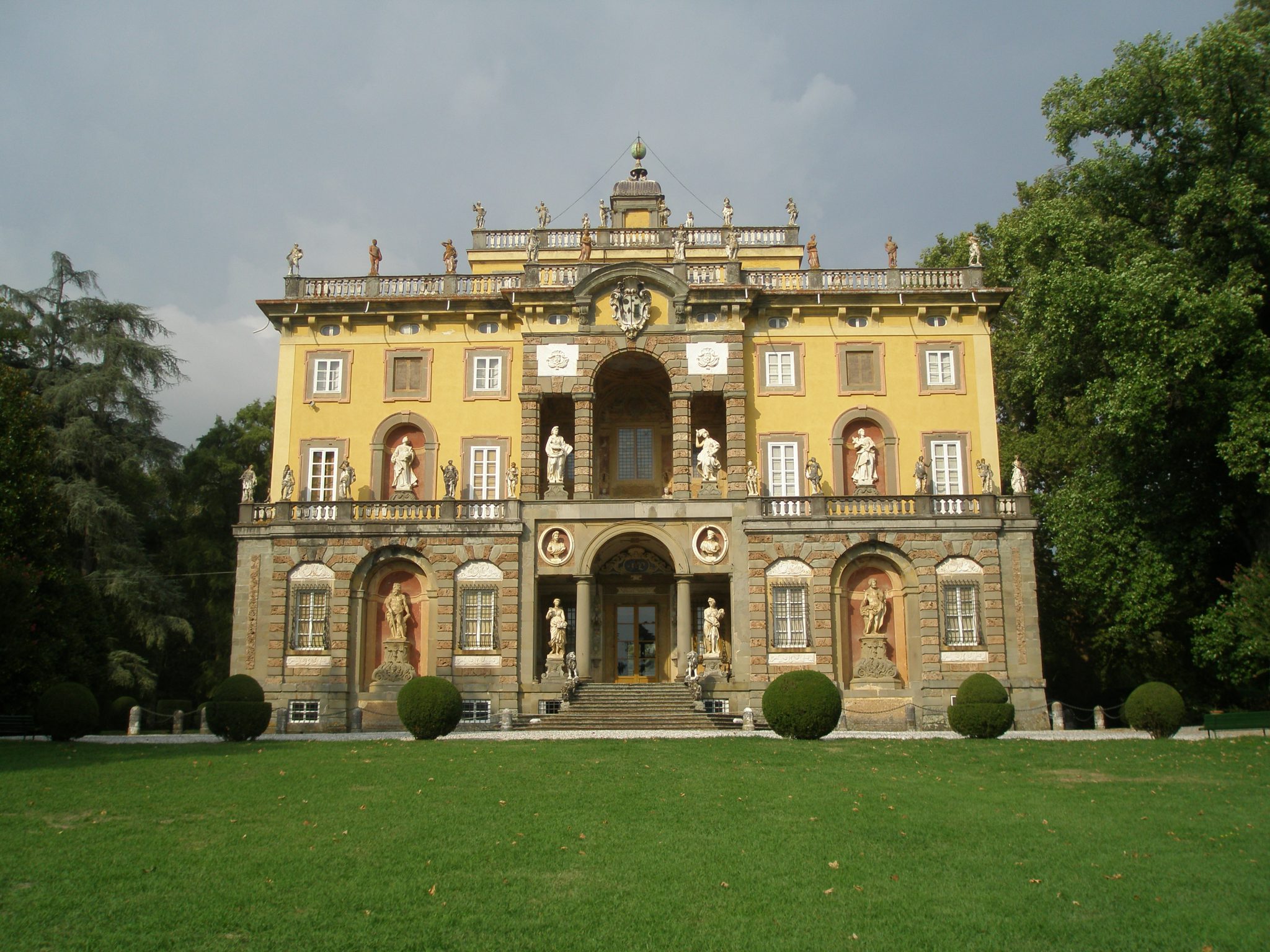
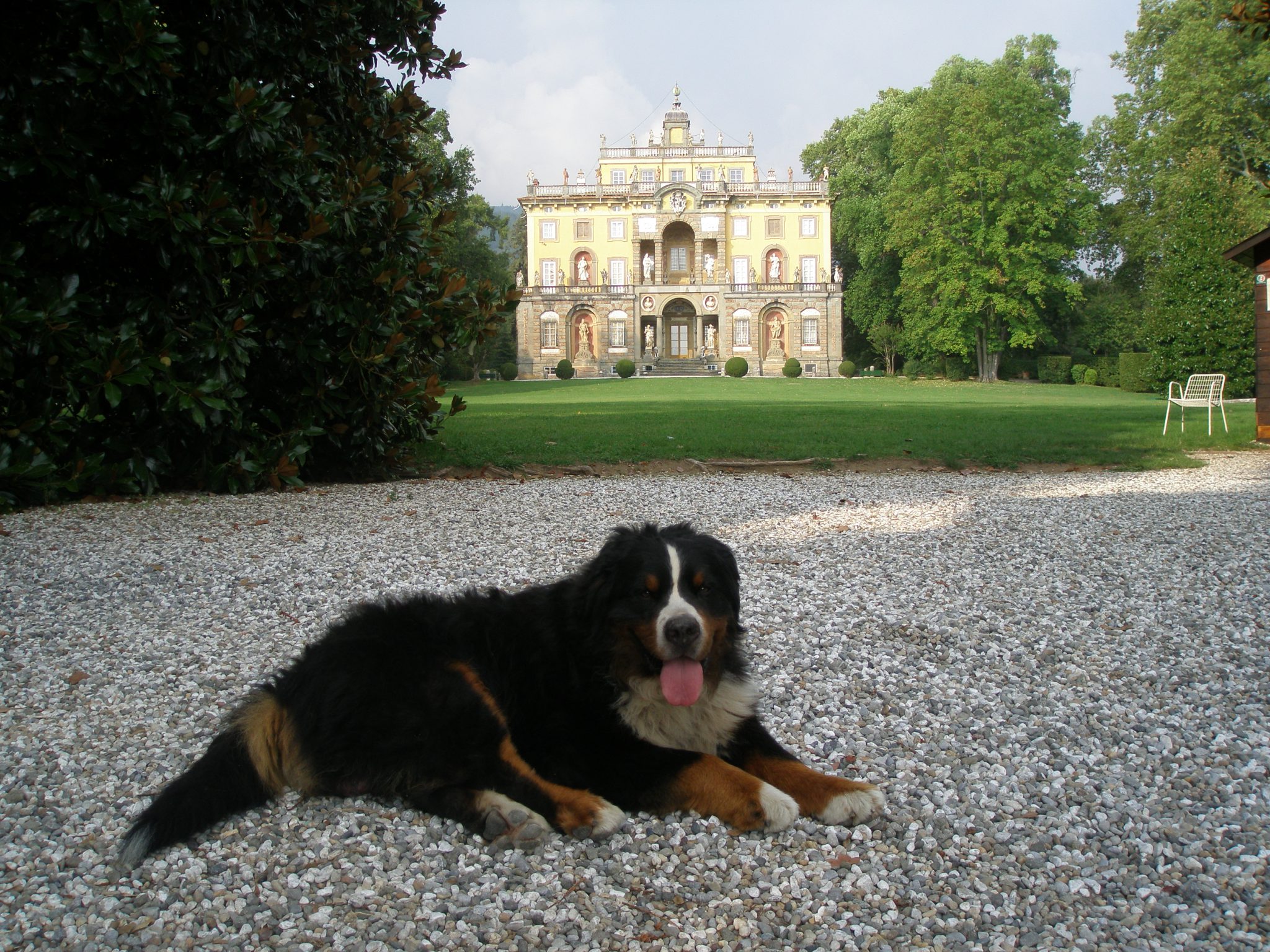
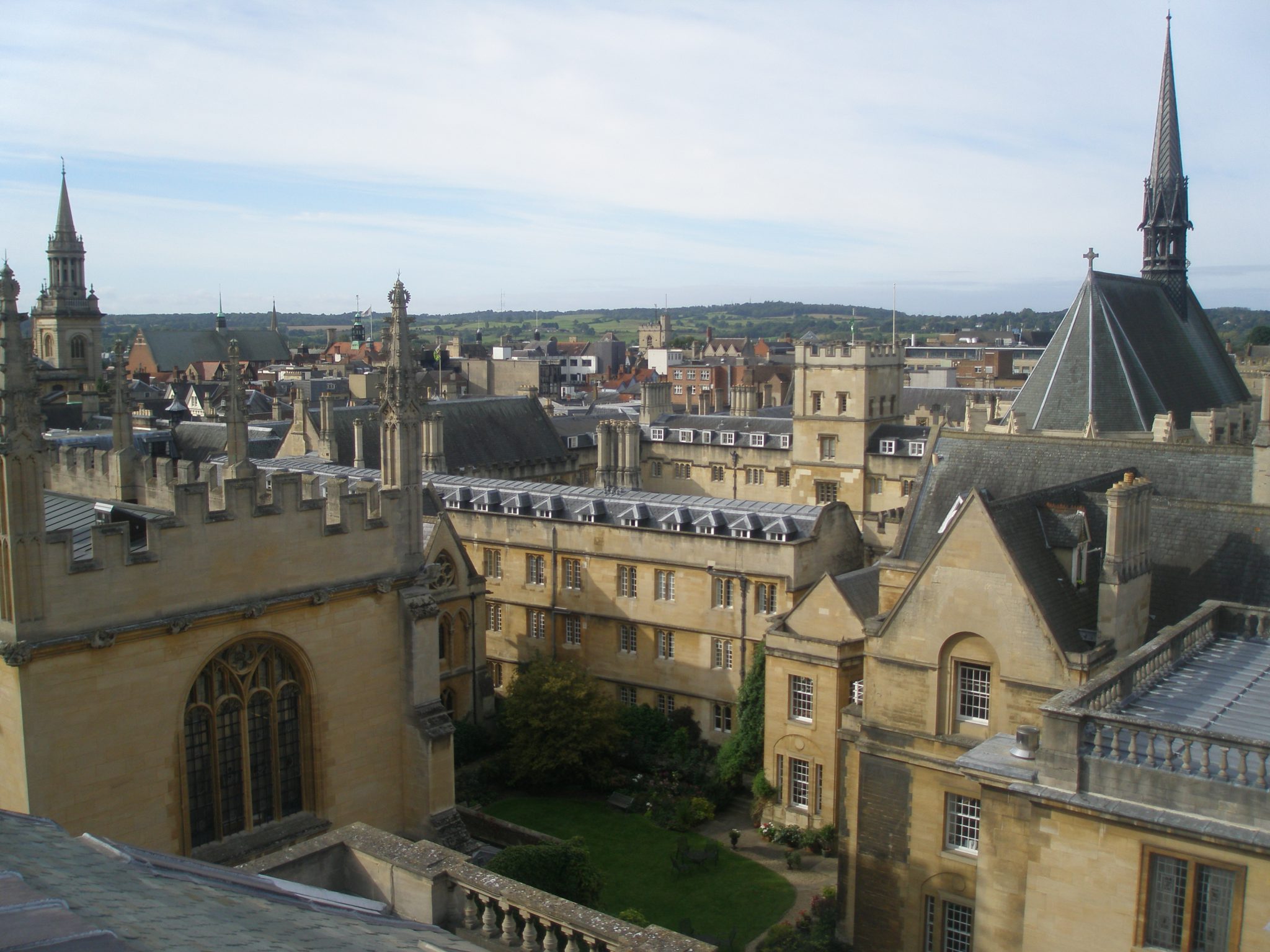
2 Responses to Florence & Lucca: The Villas, Gardens & Treasures of Tuscany